This document outlines the requirements for writing a synthesis paper based on an annotated bibliography and outline from earlier course modules. It emphasizes the analysis of themes related to the unconscious mind, dreams, and ego defense mechanisms, all from a psychoanalytic perspective, while drawing connections between seven assigned articles. The paper will require critical assessment of the literature and the formulation of a thesis statement that reflects the synthesized conclusions of the readings.
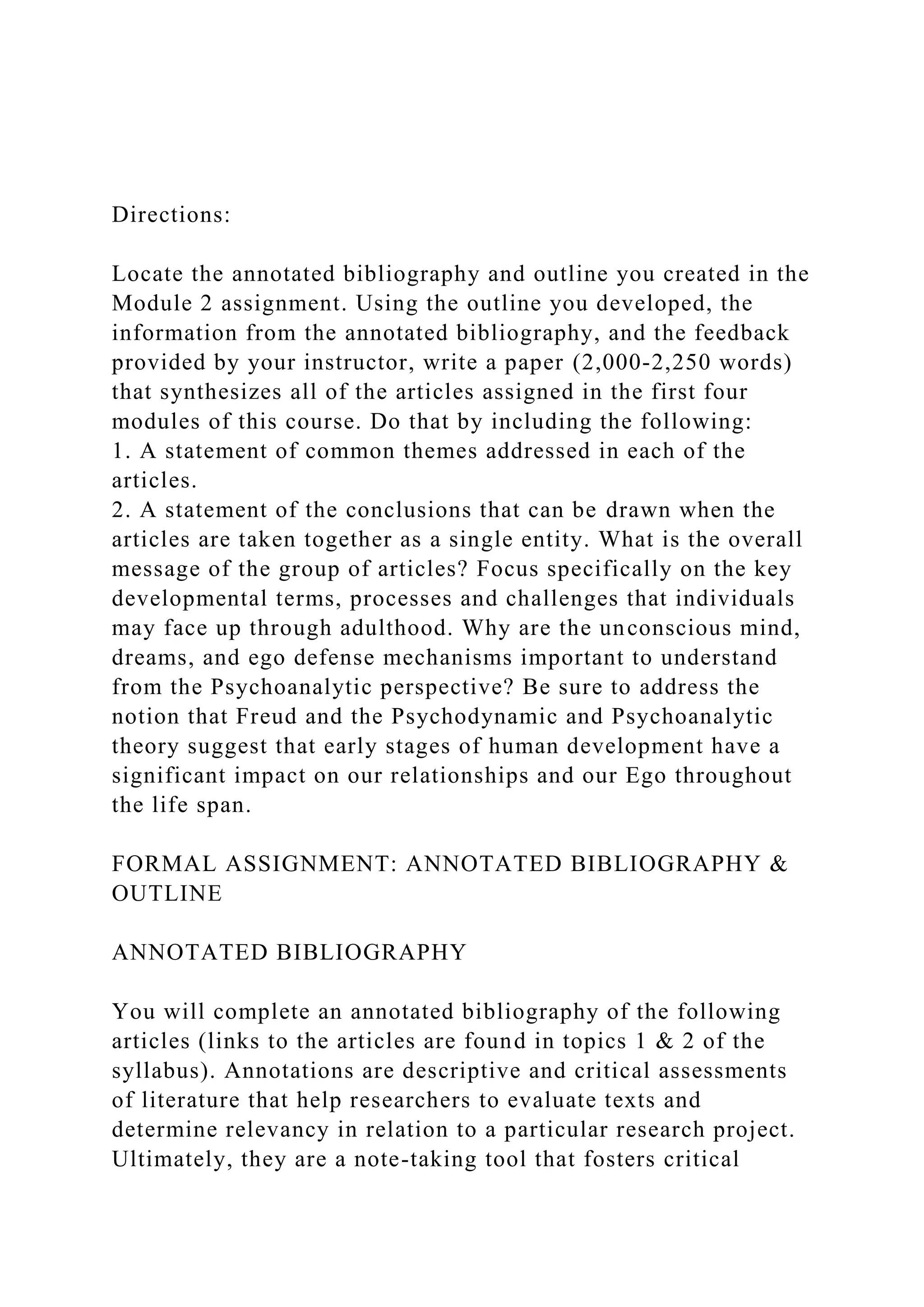
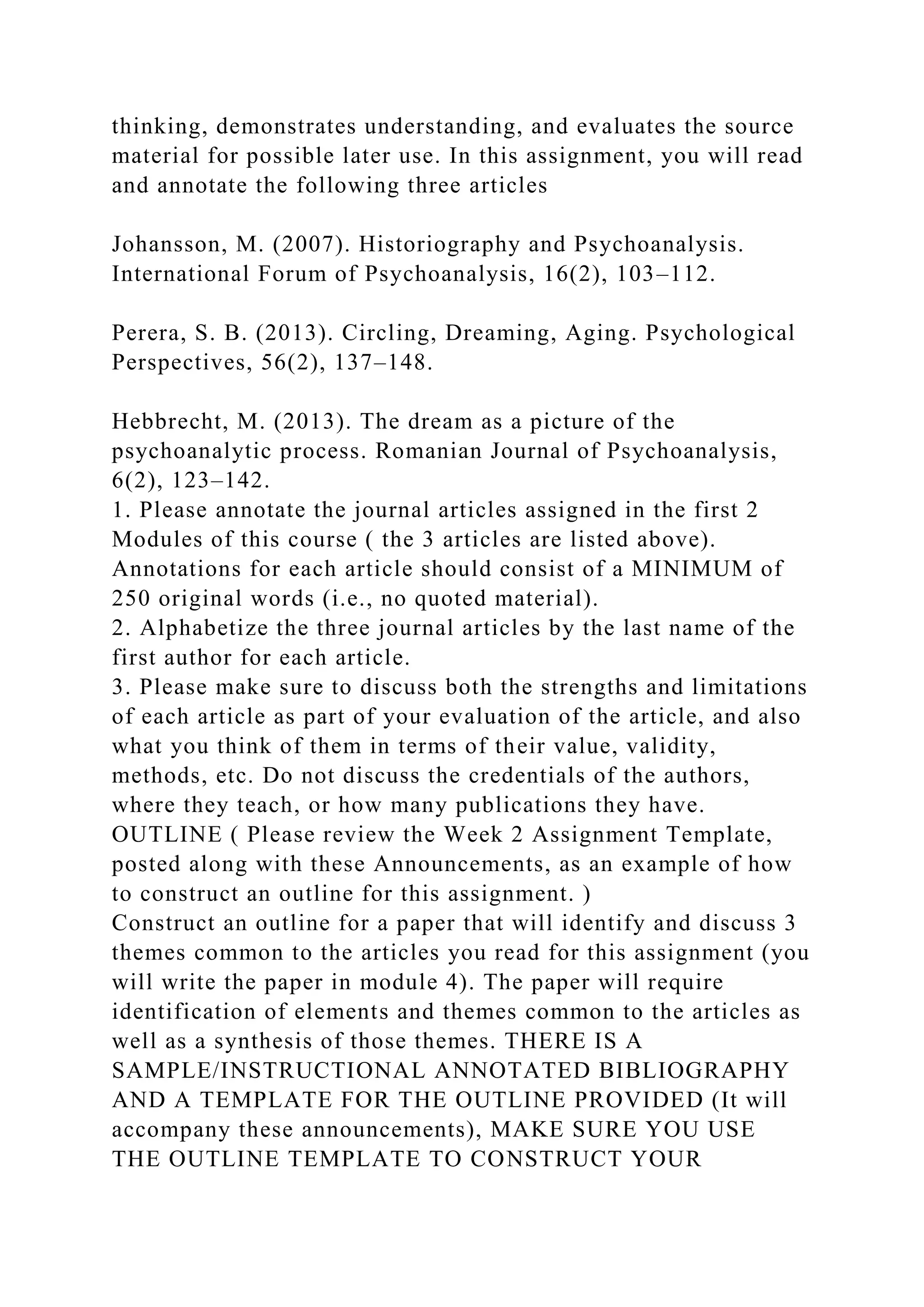
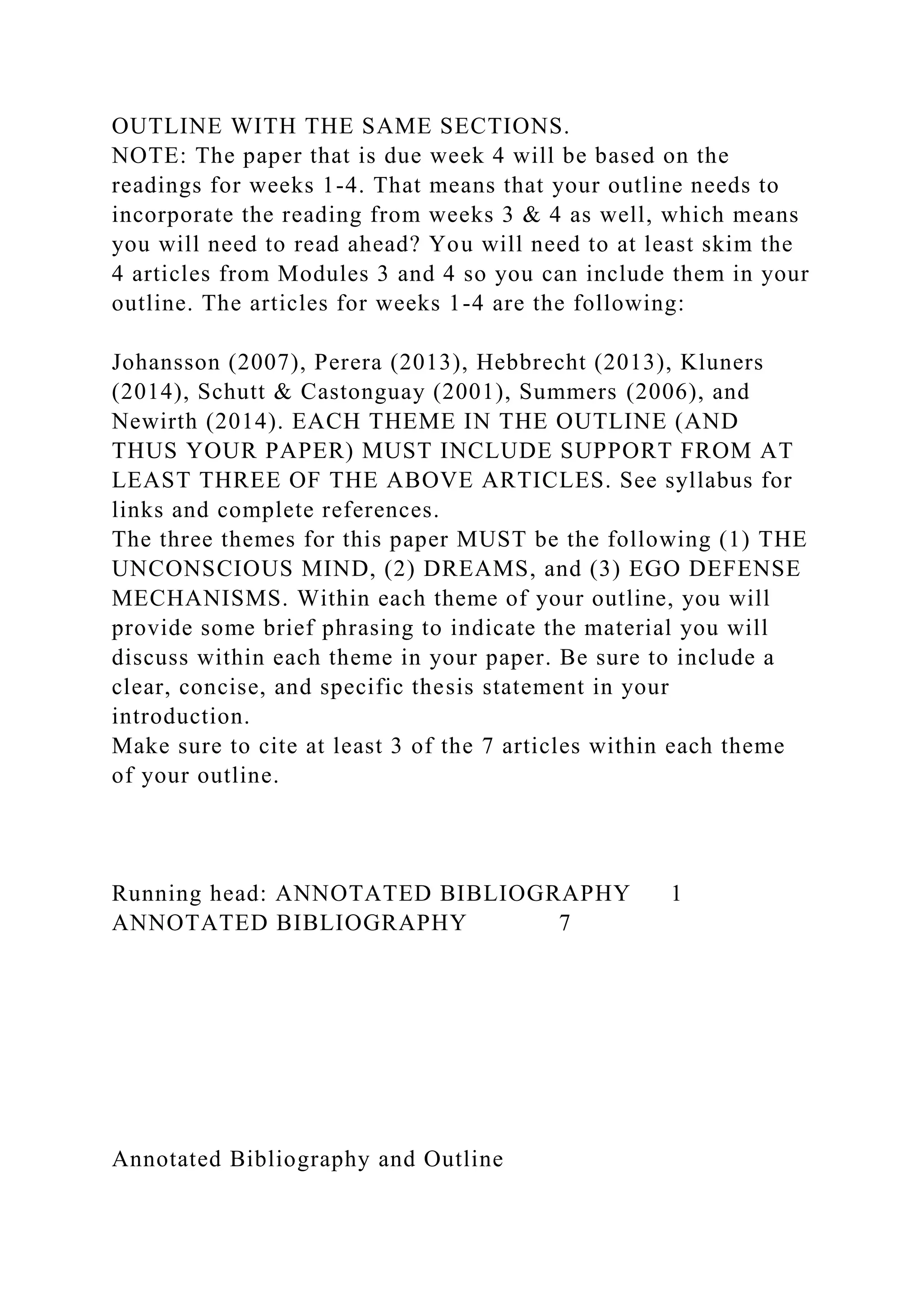
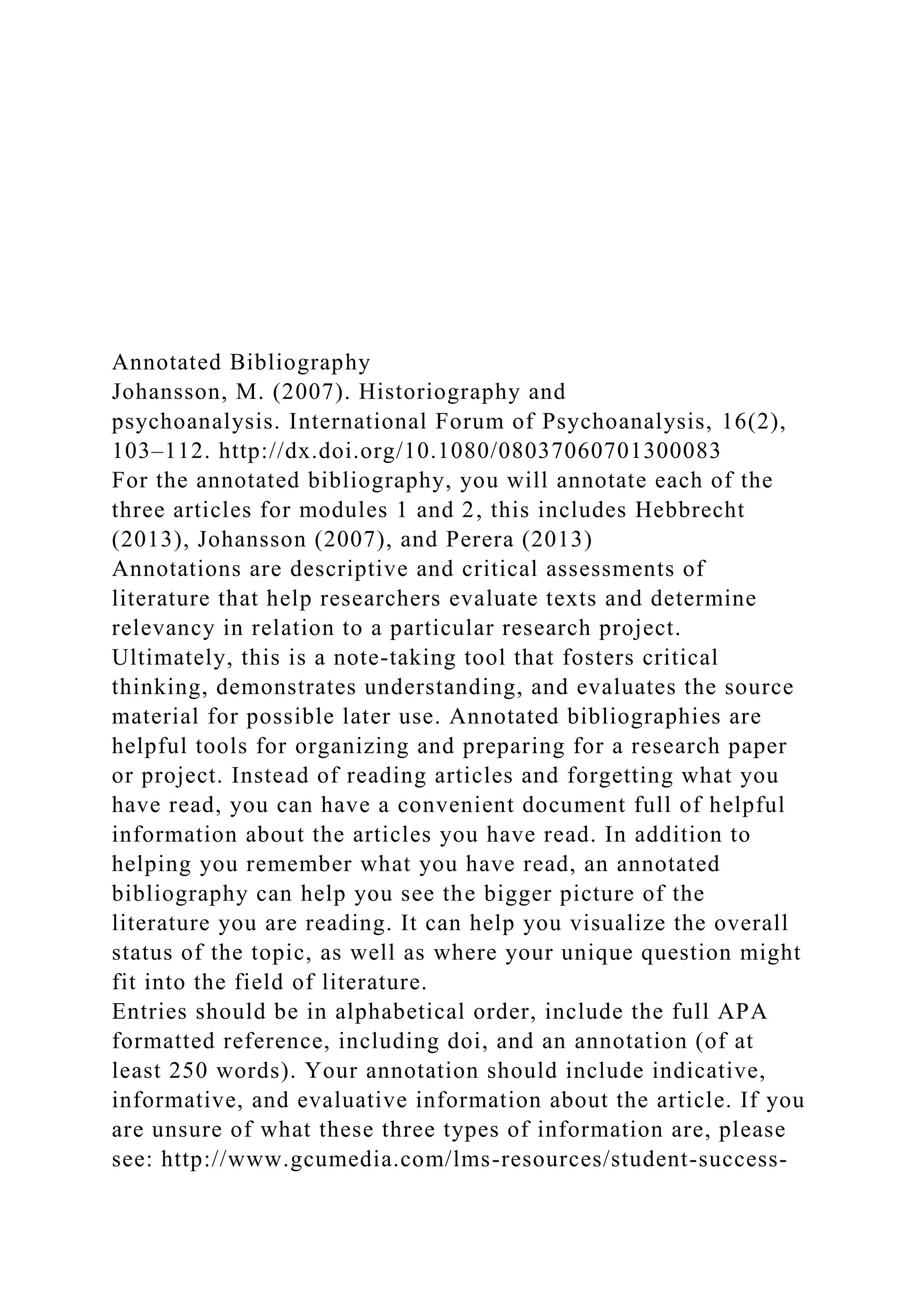
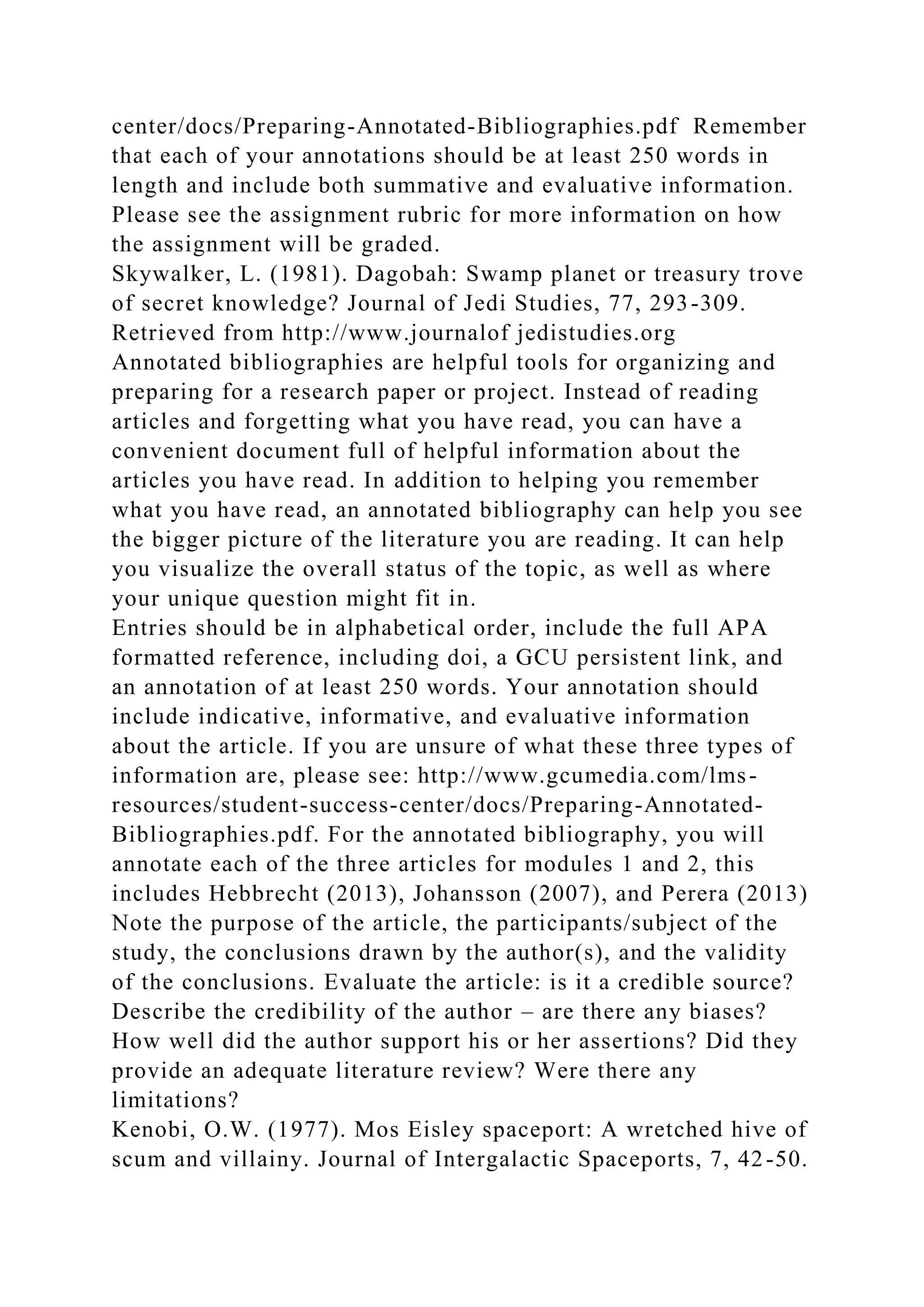
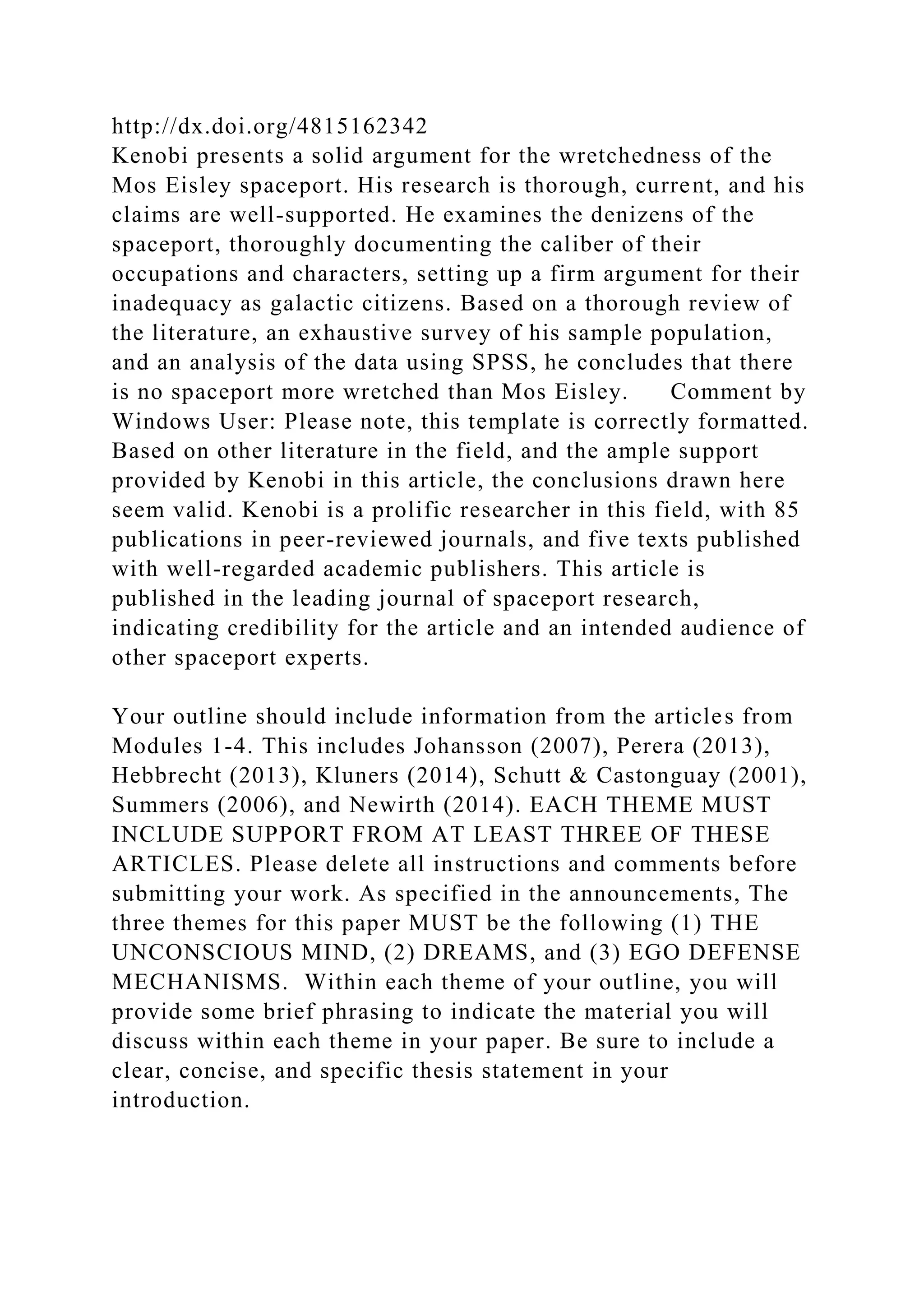
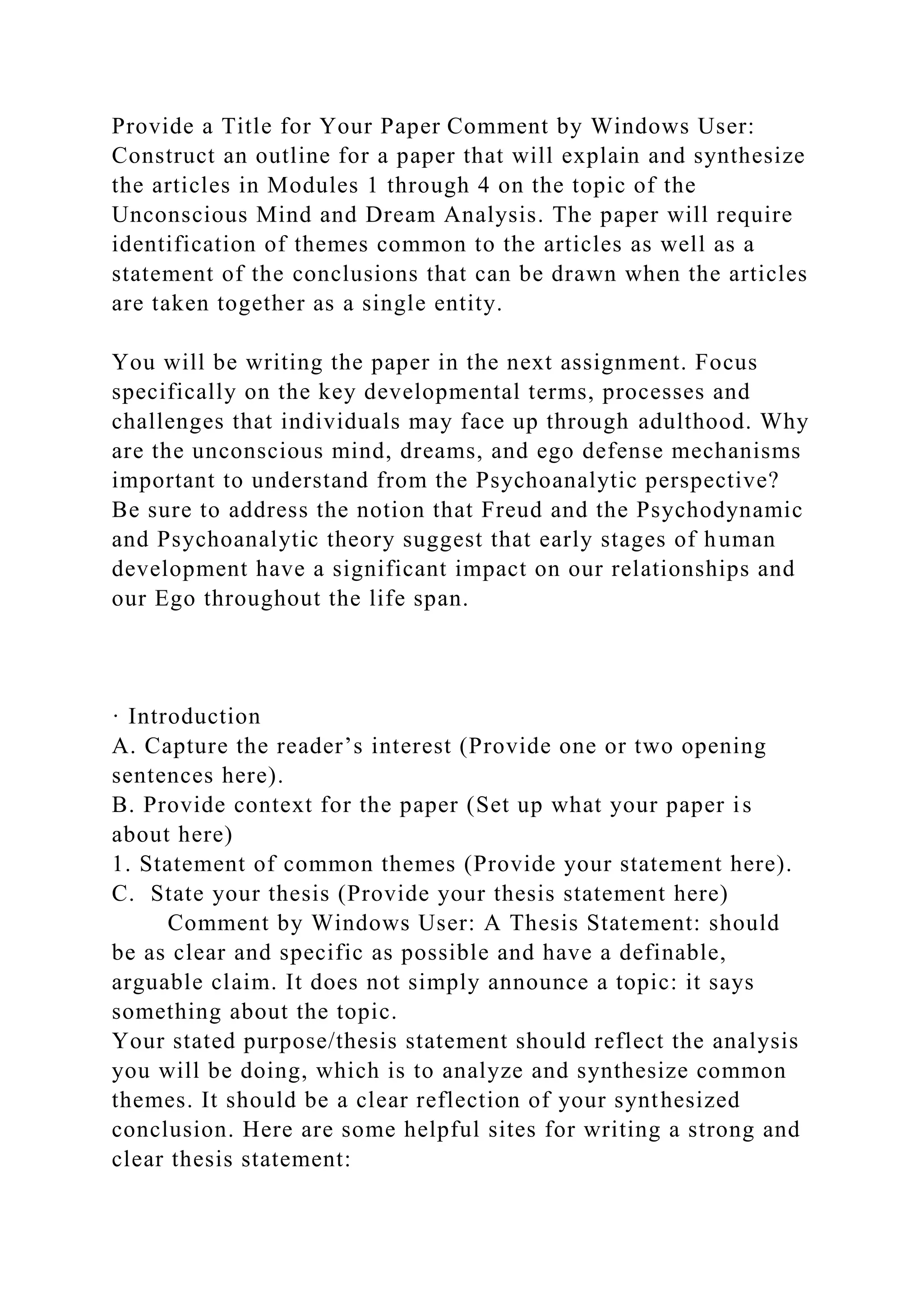
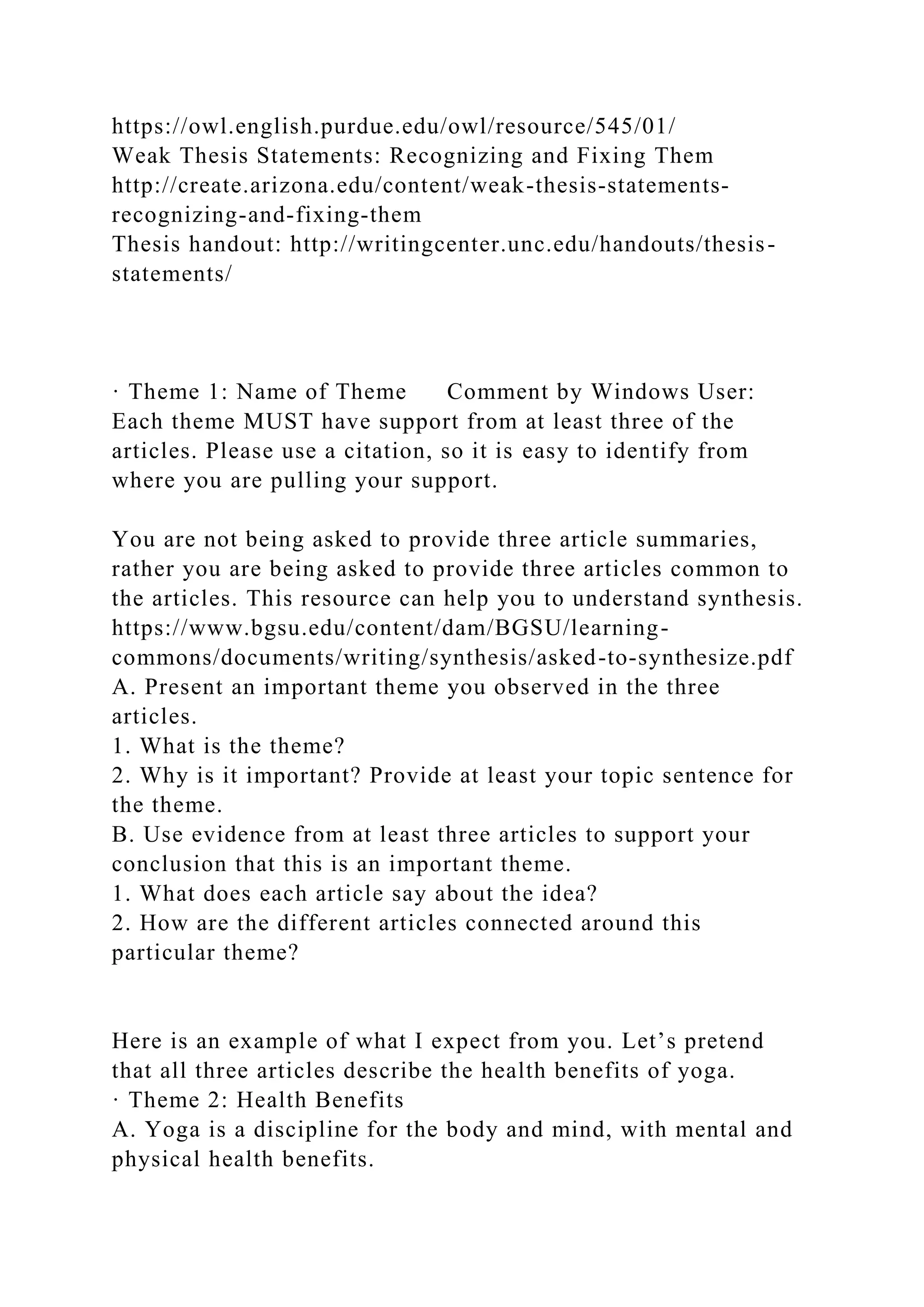

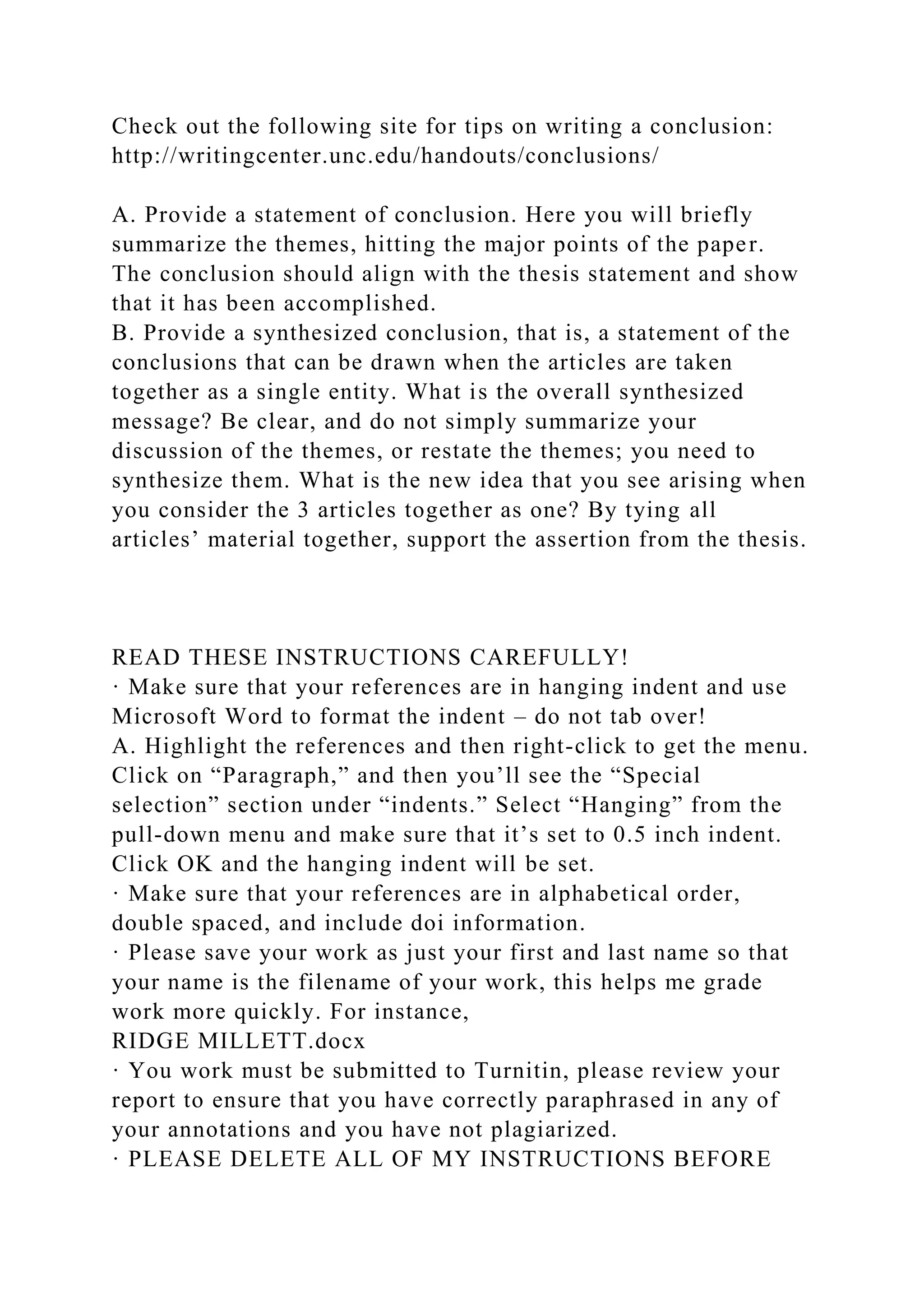



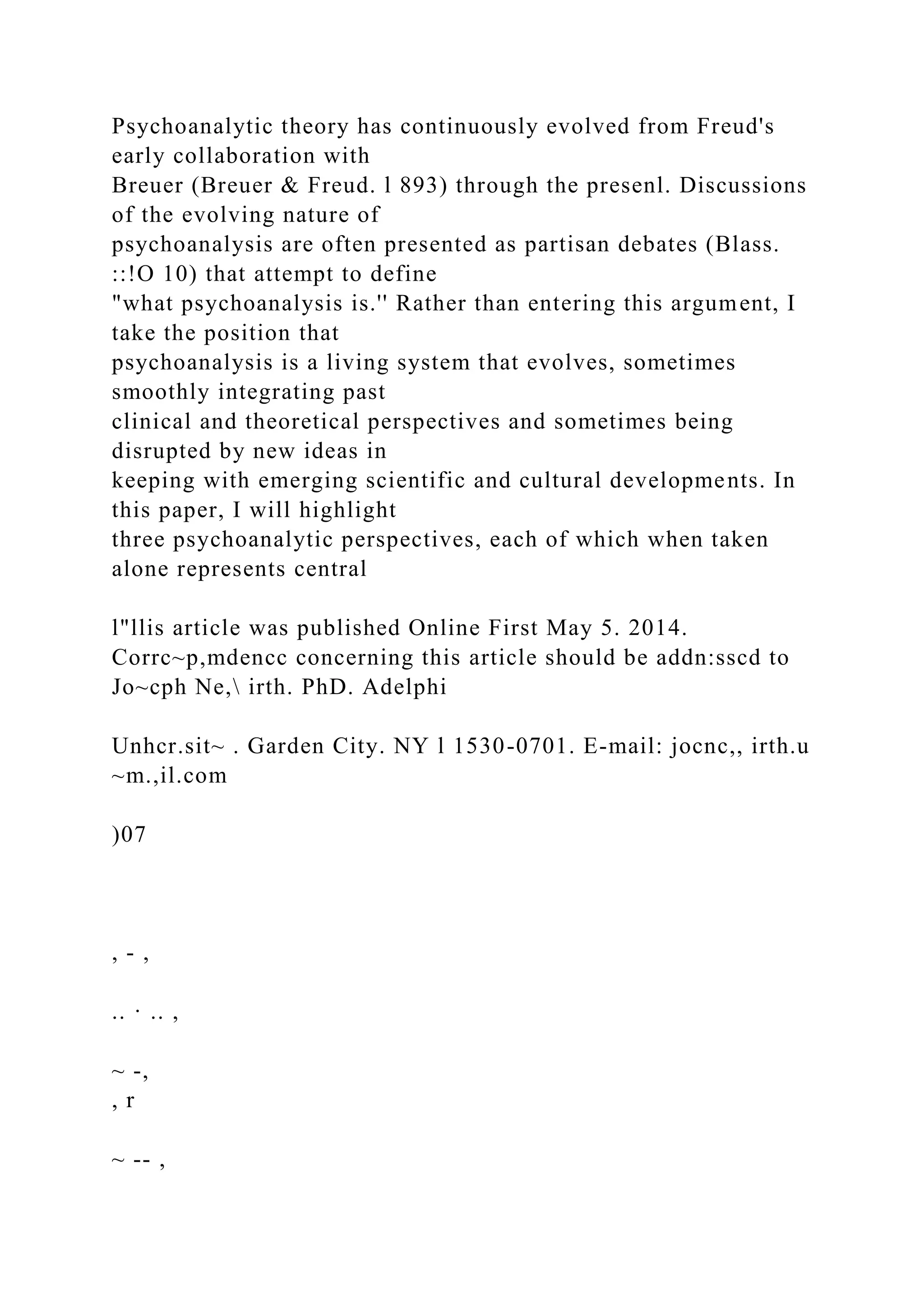
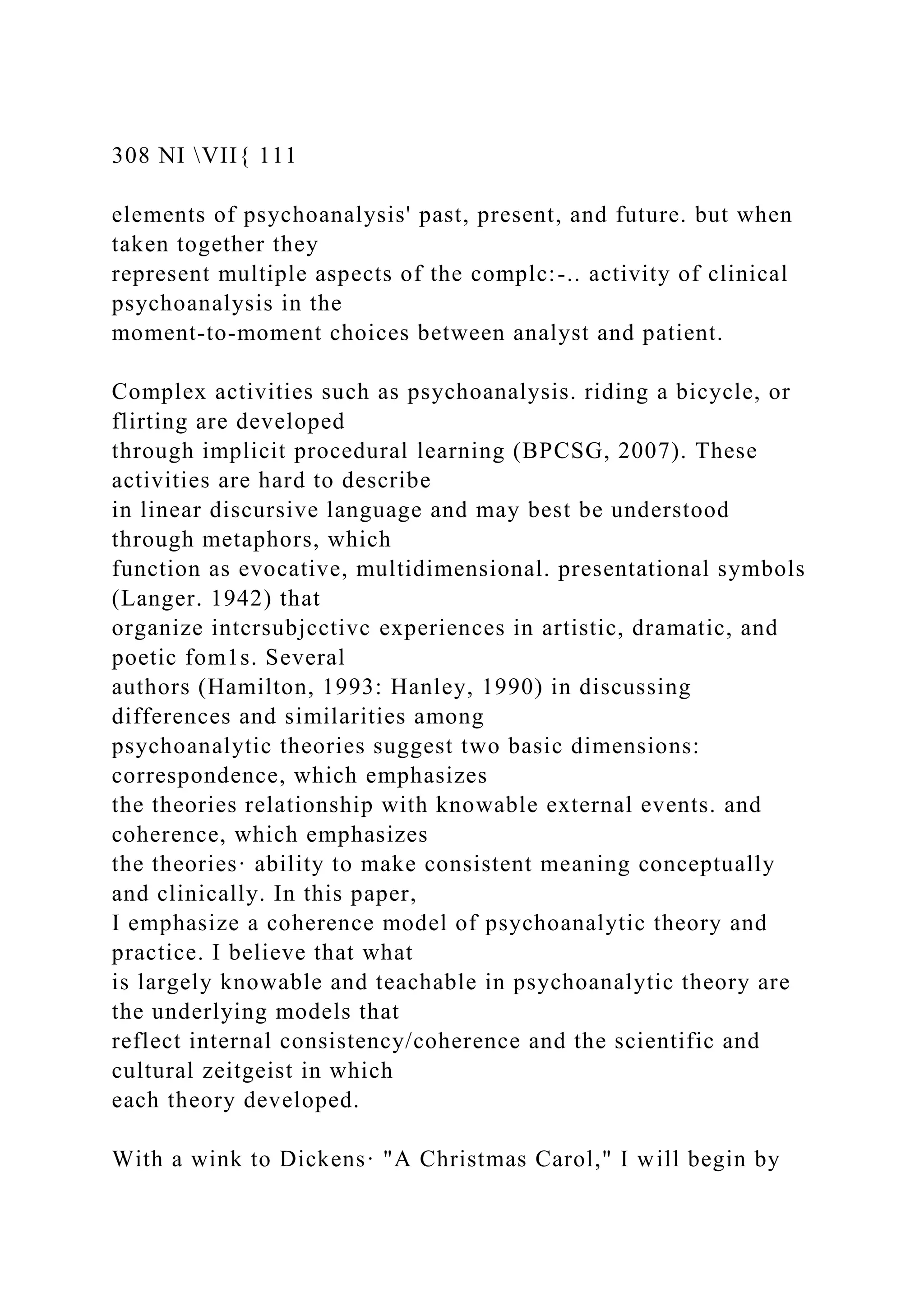
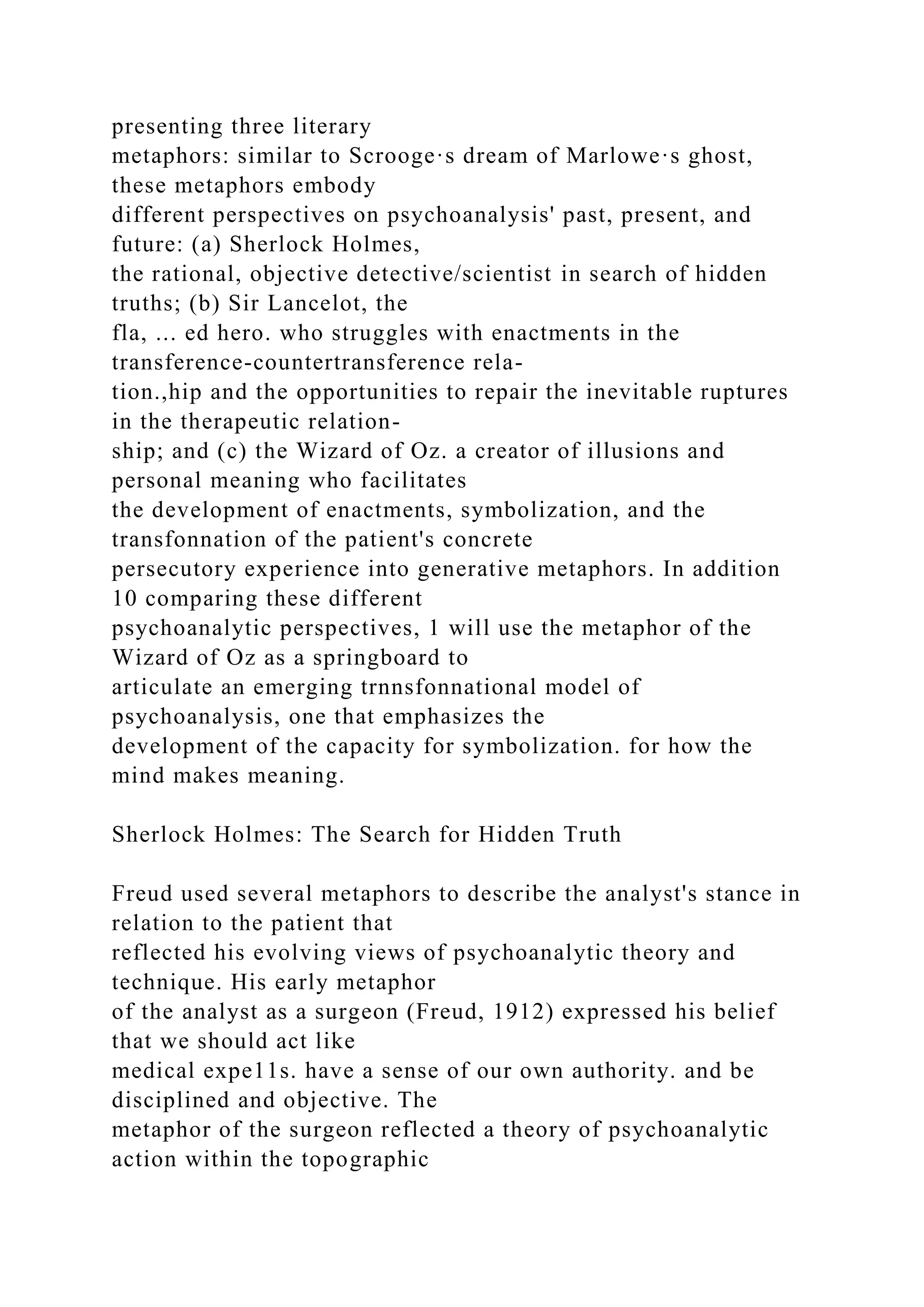


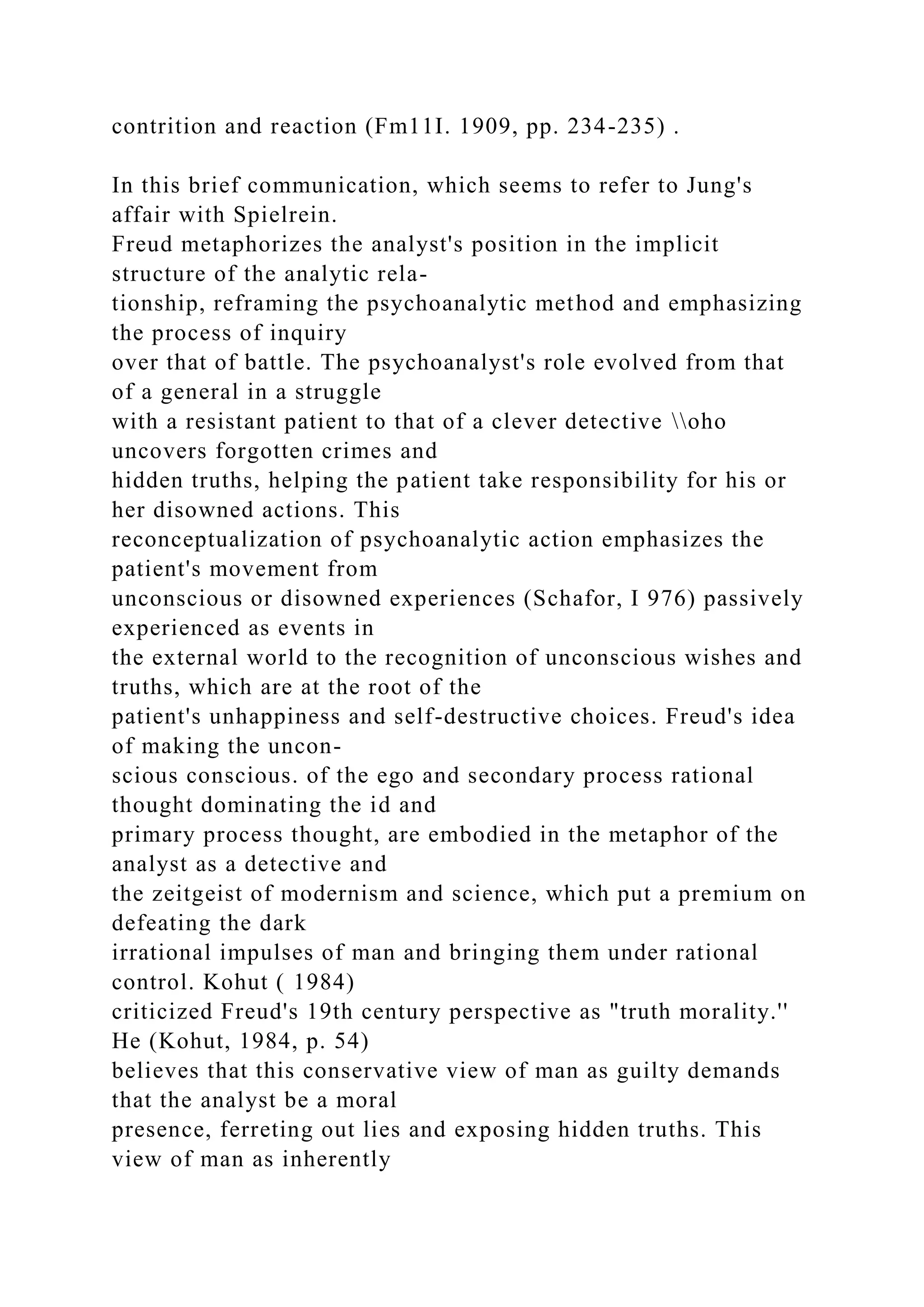
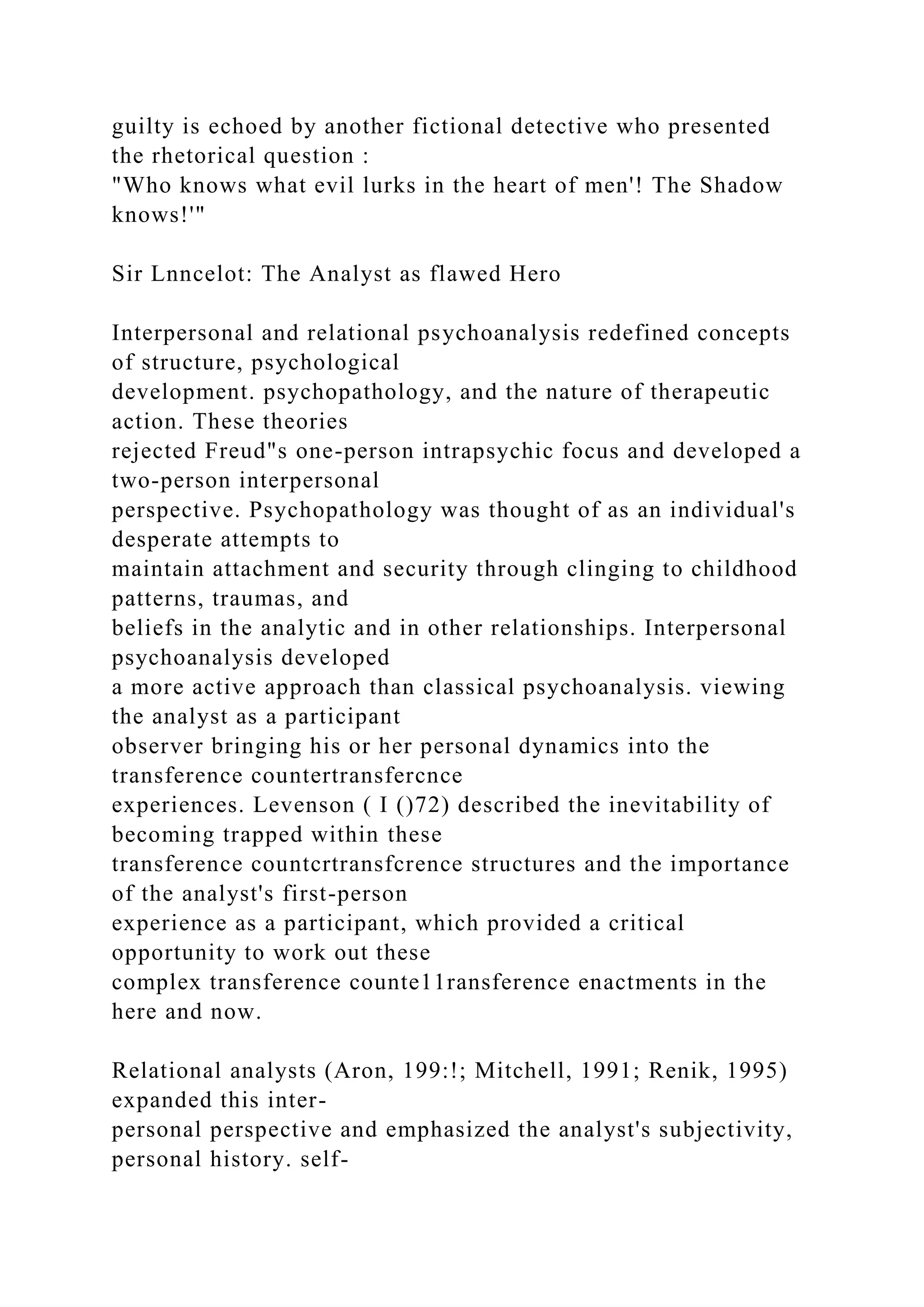
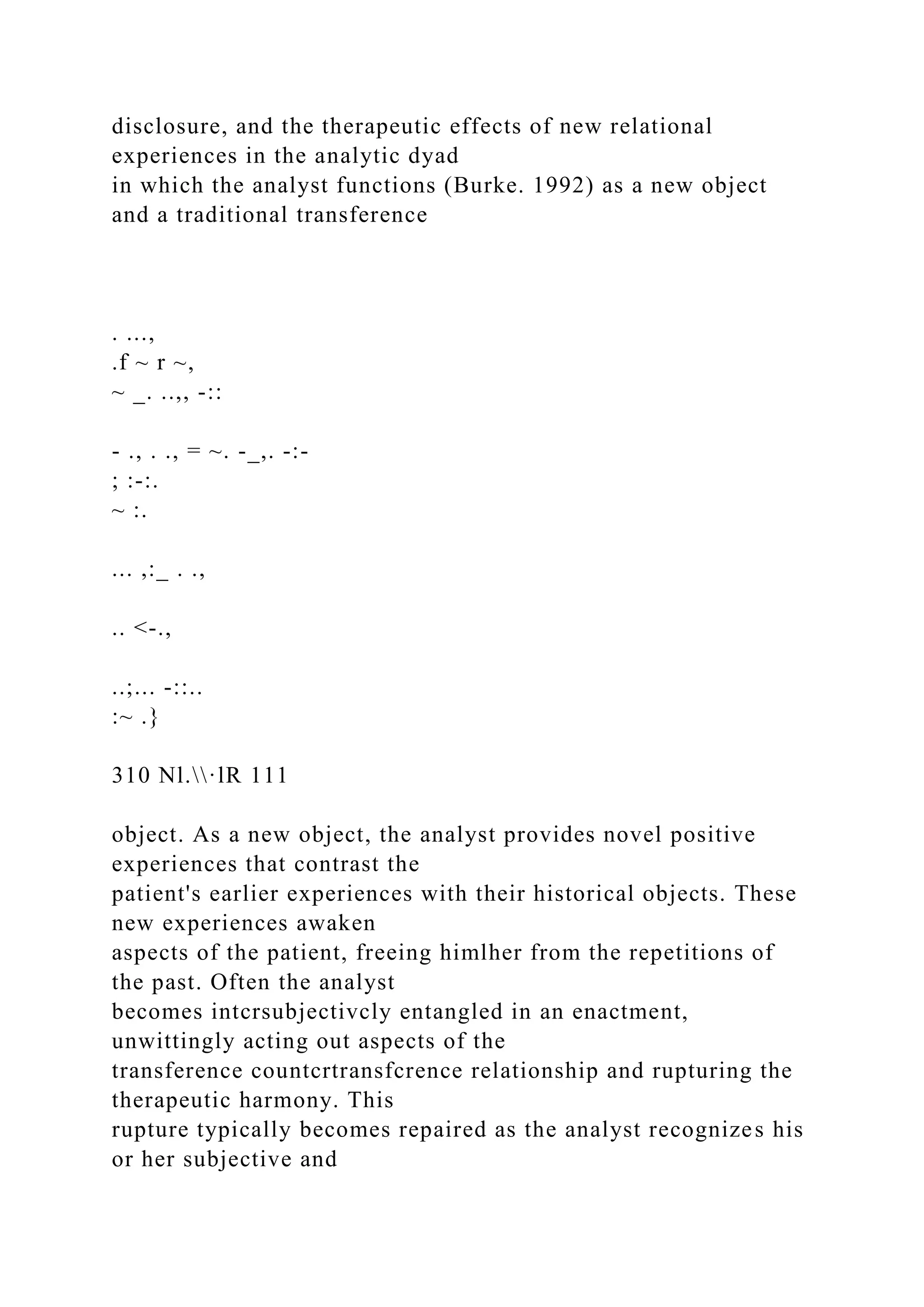
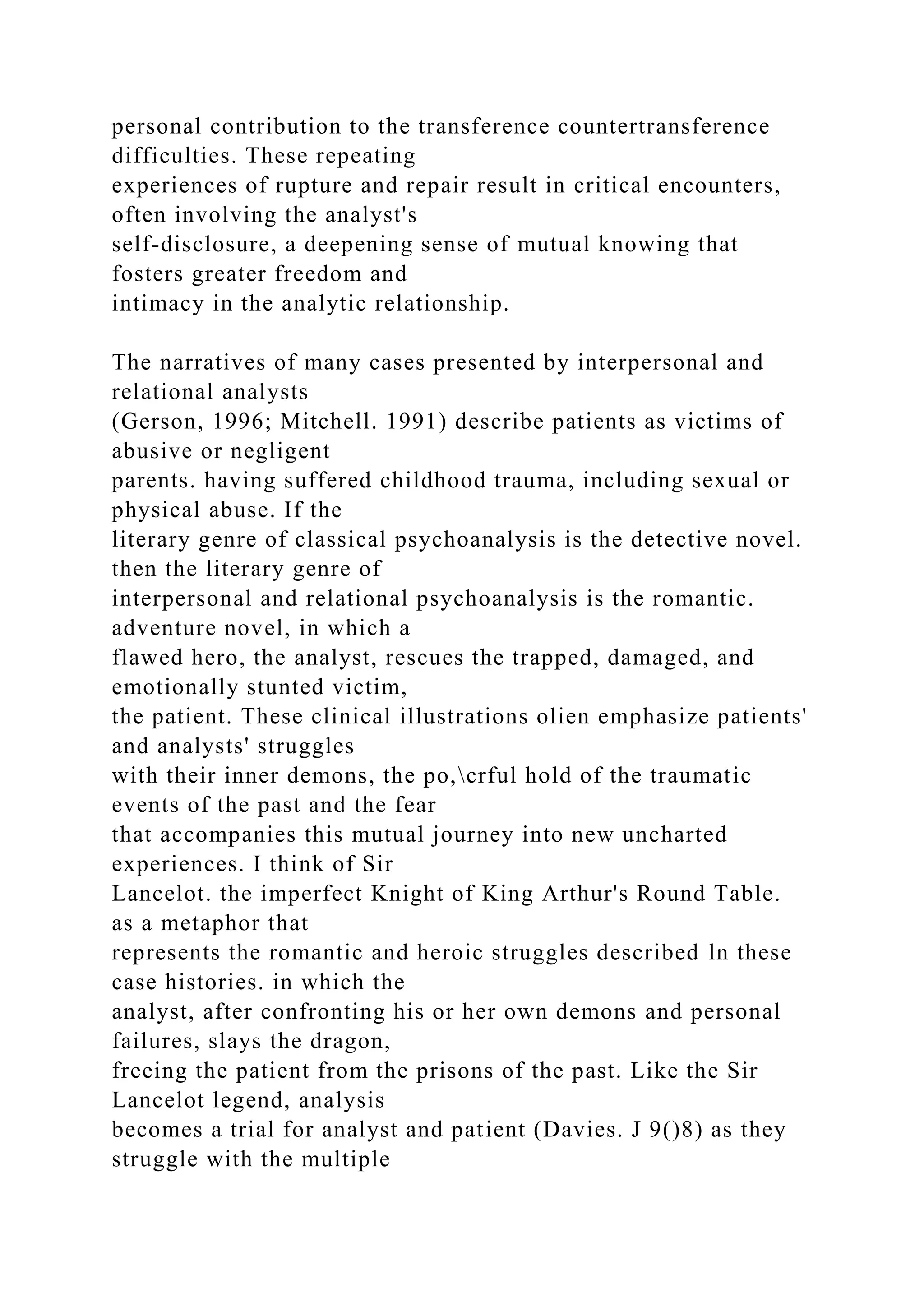
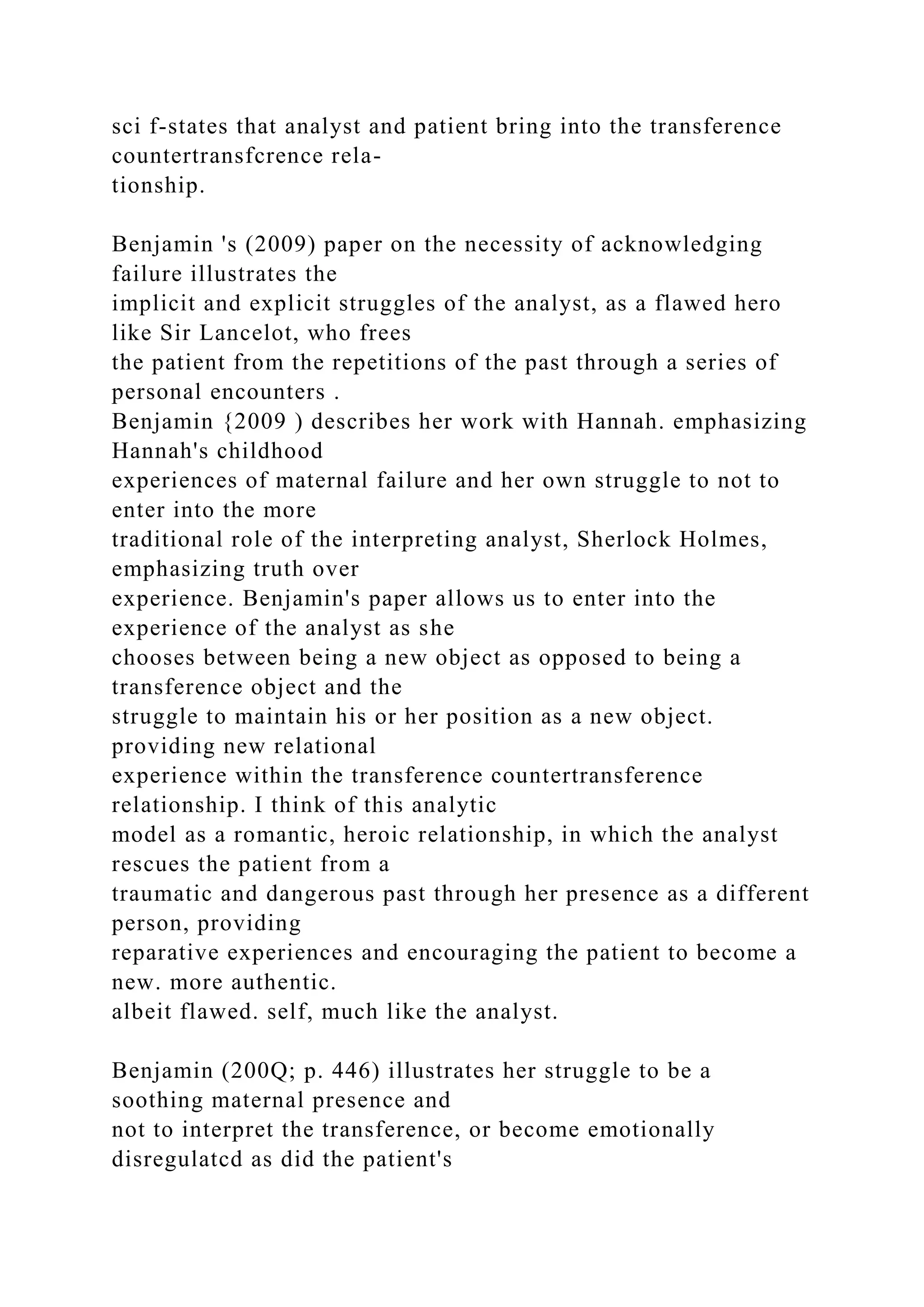
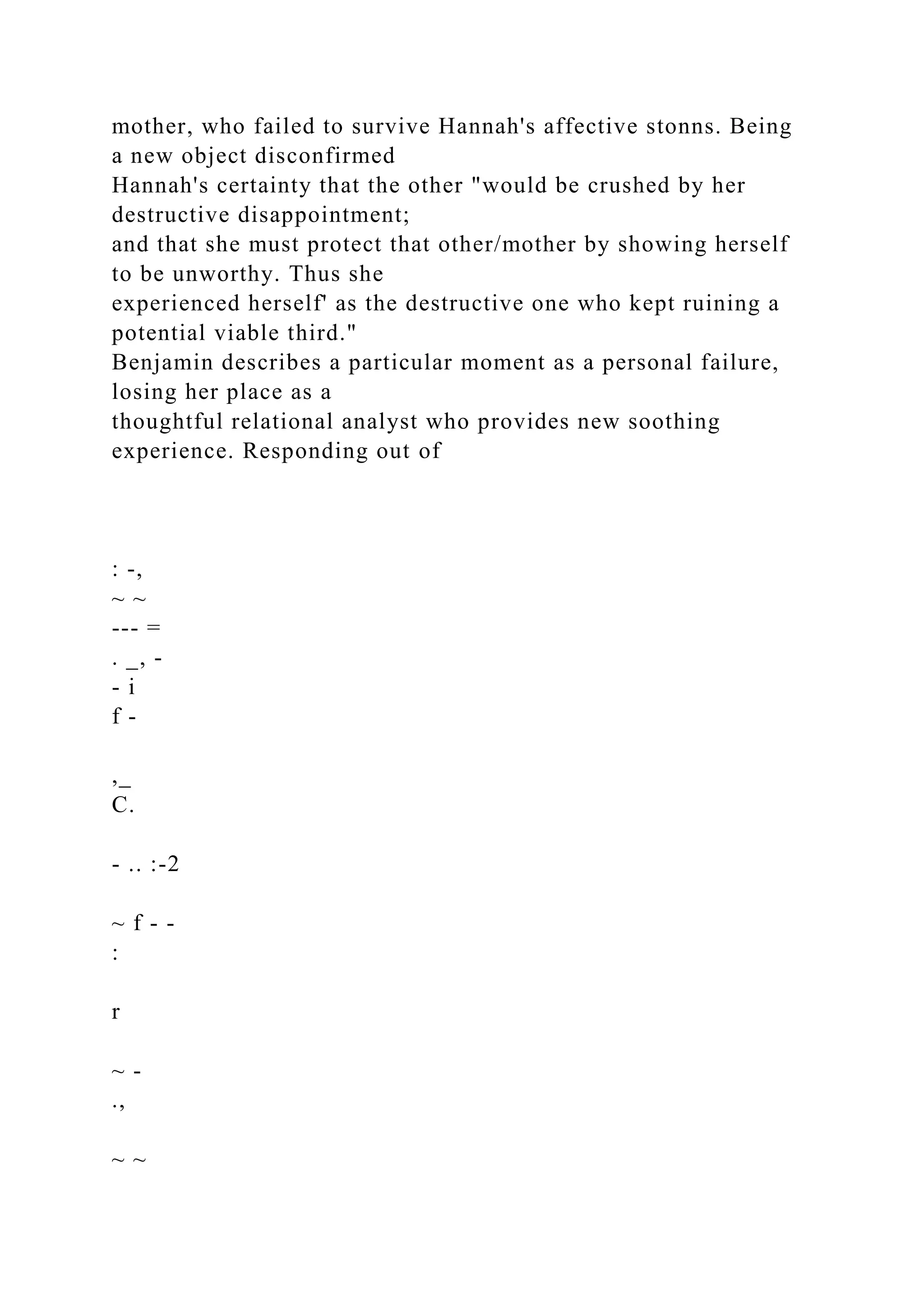
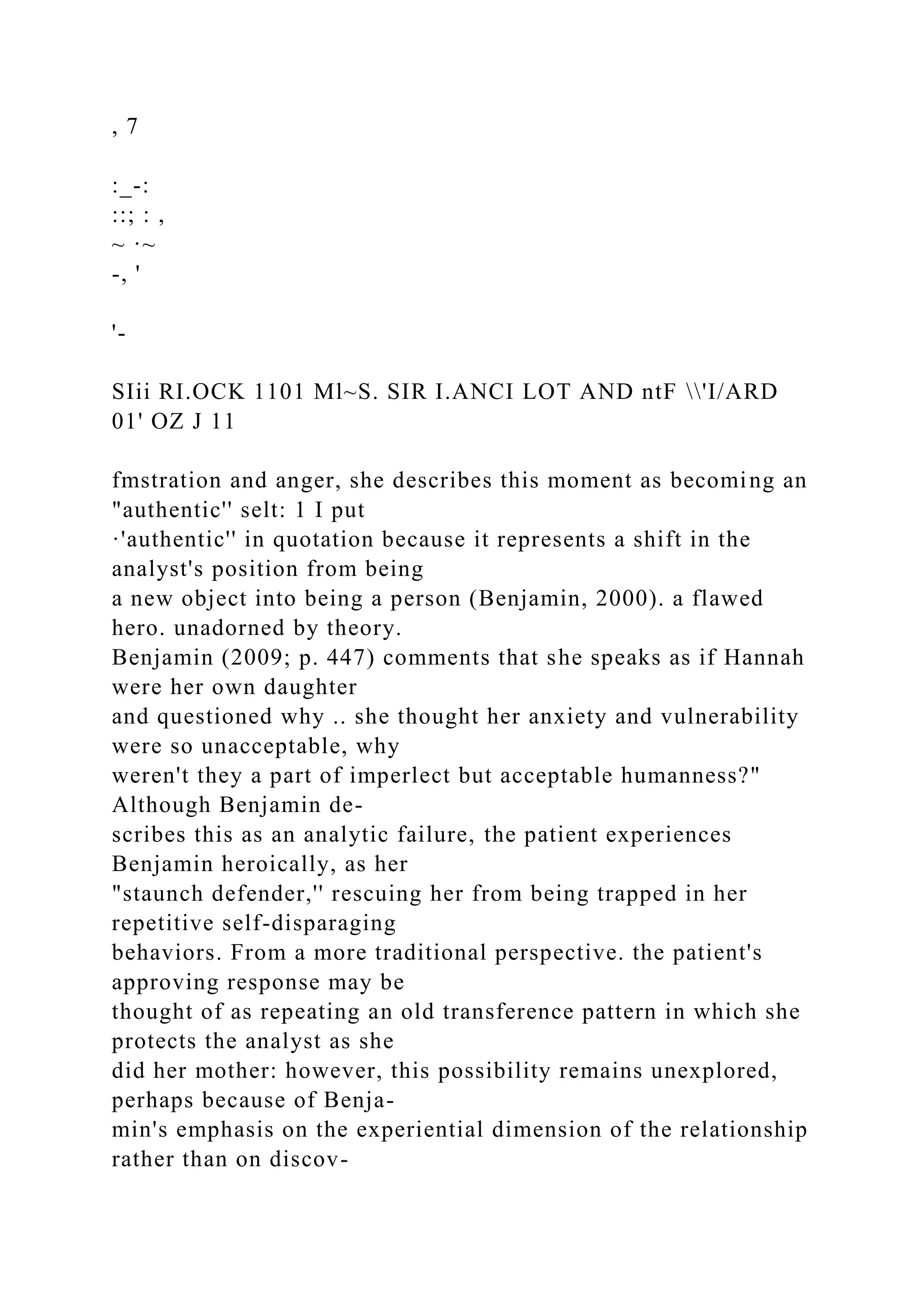
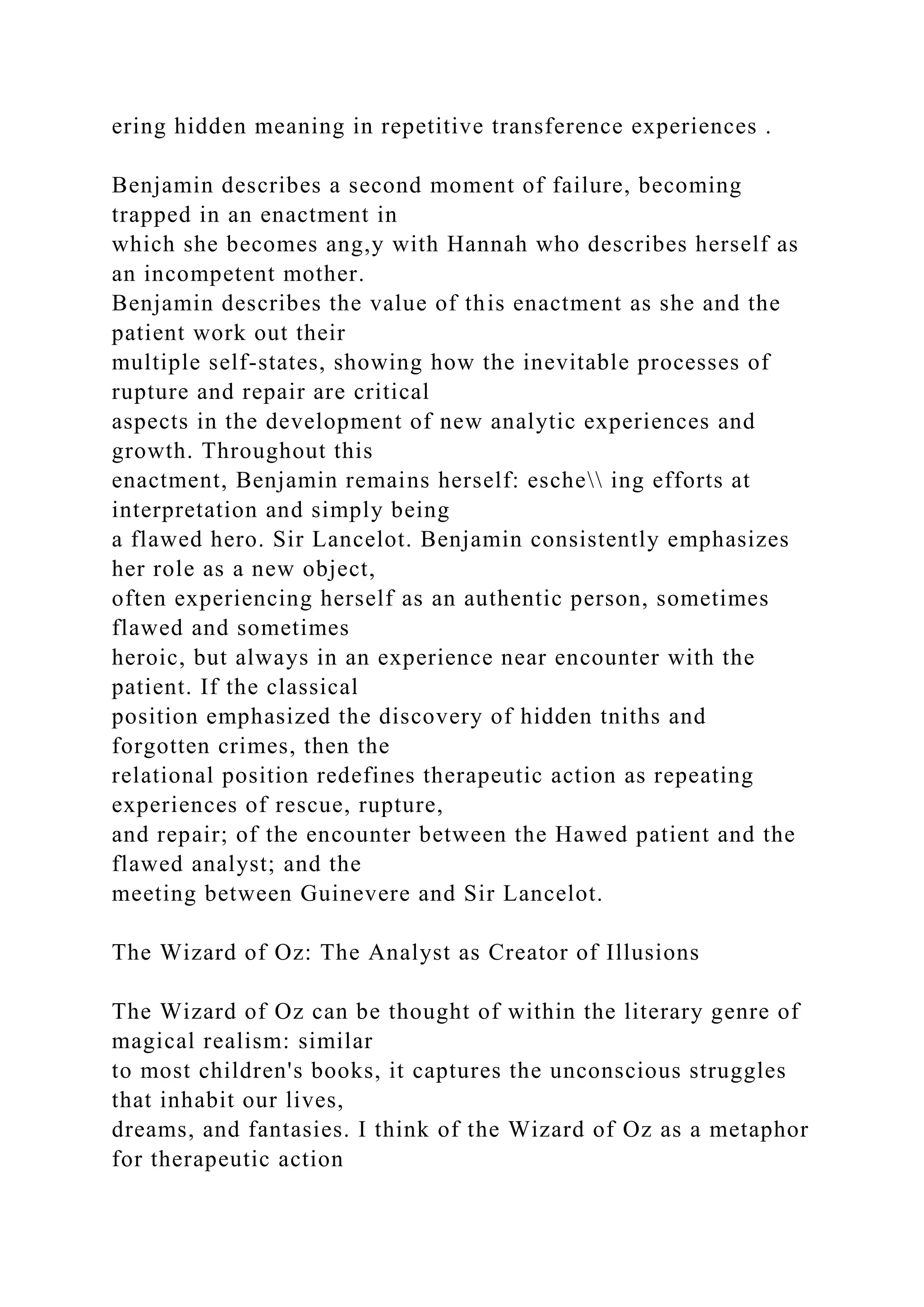
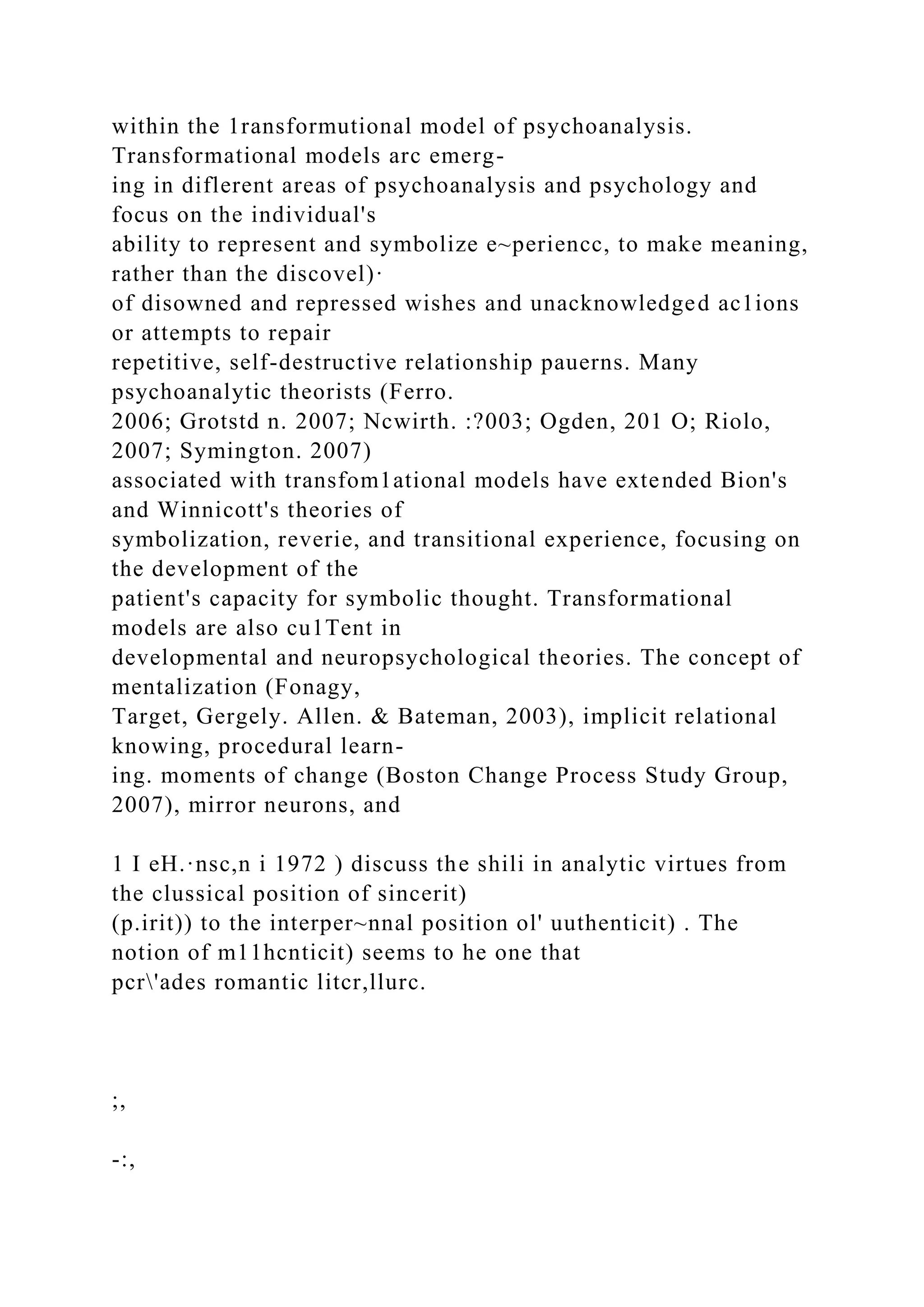
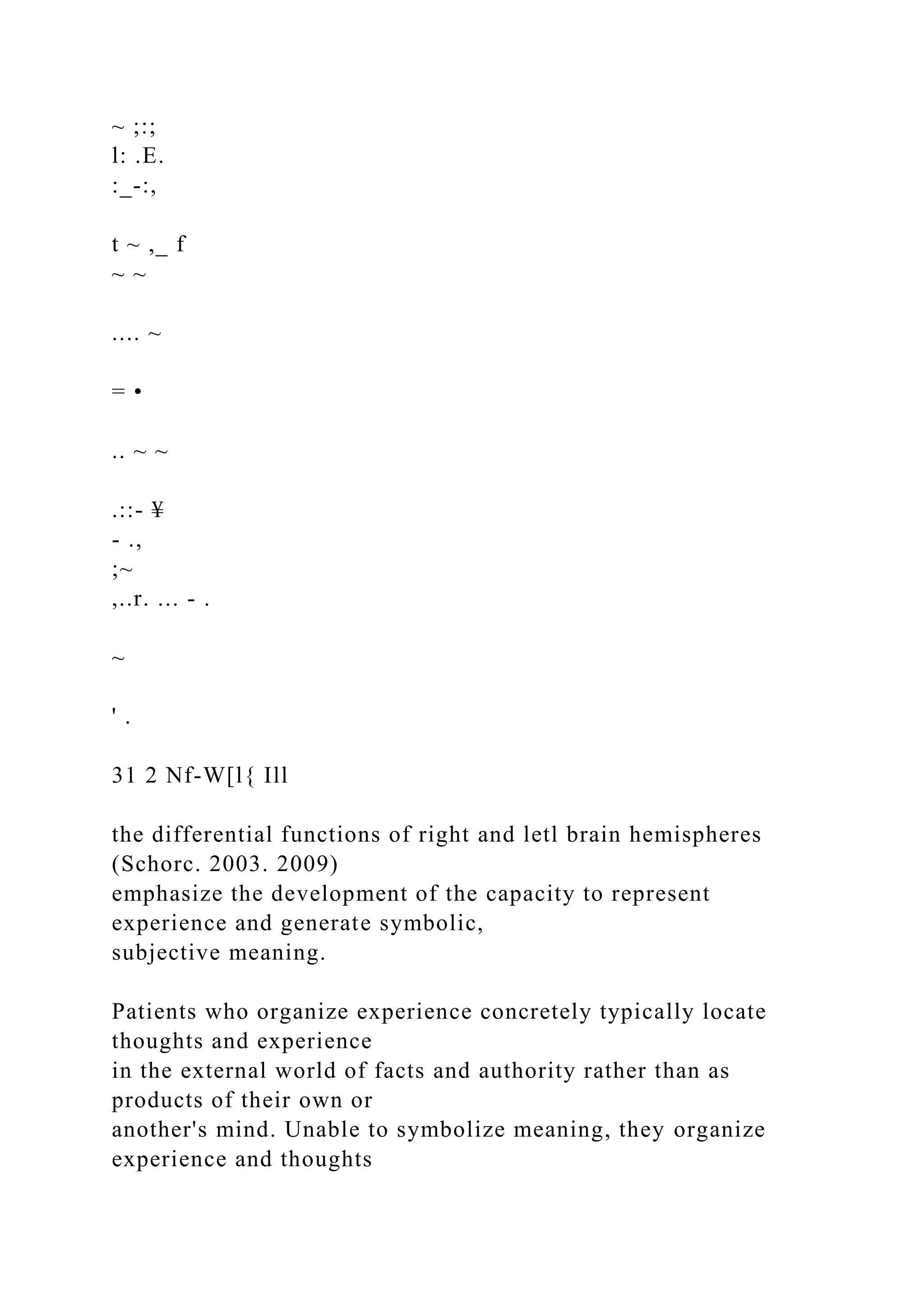
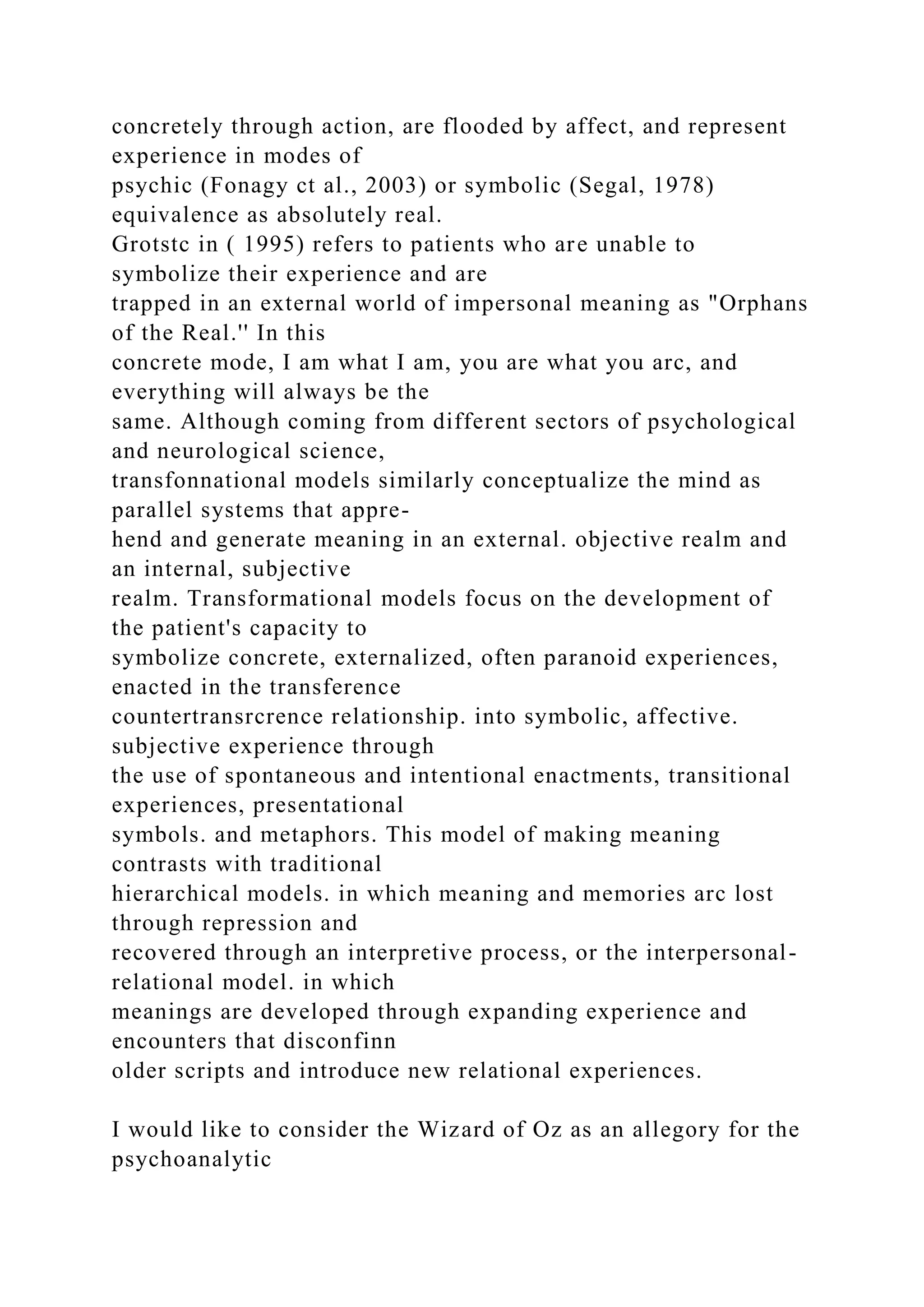
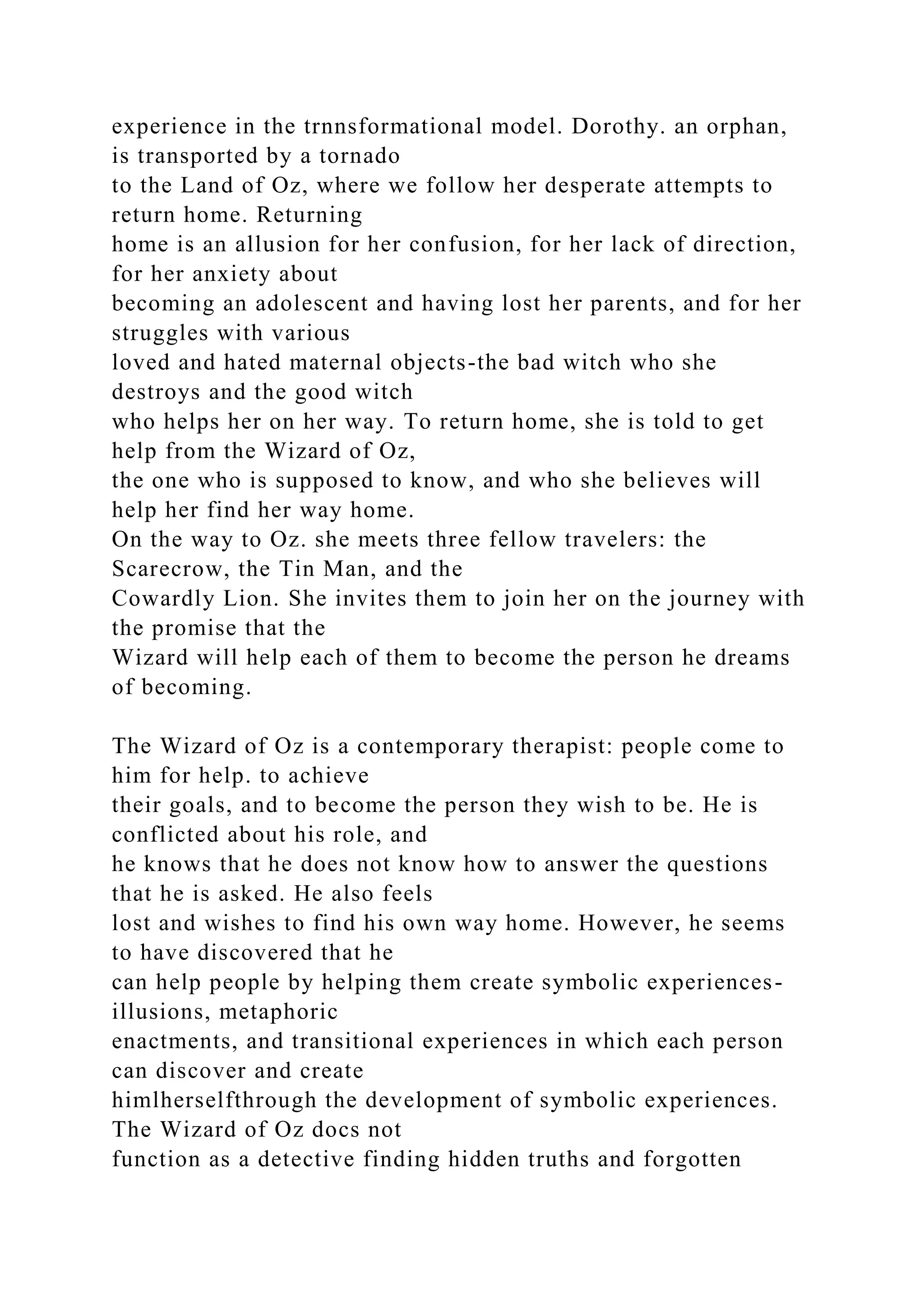
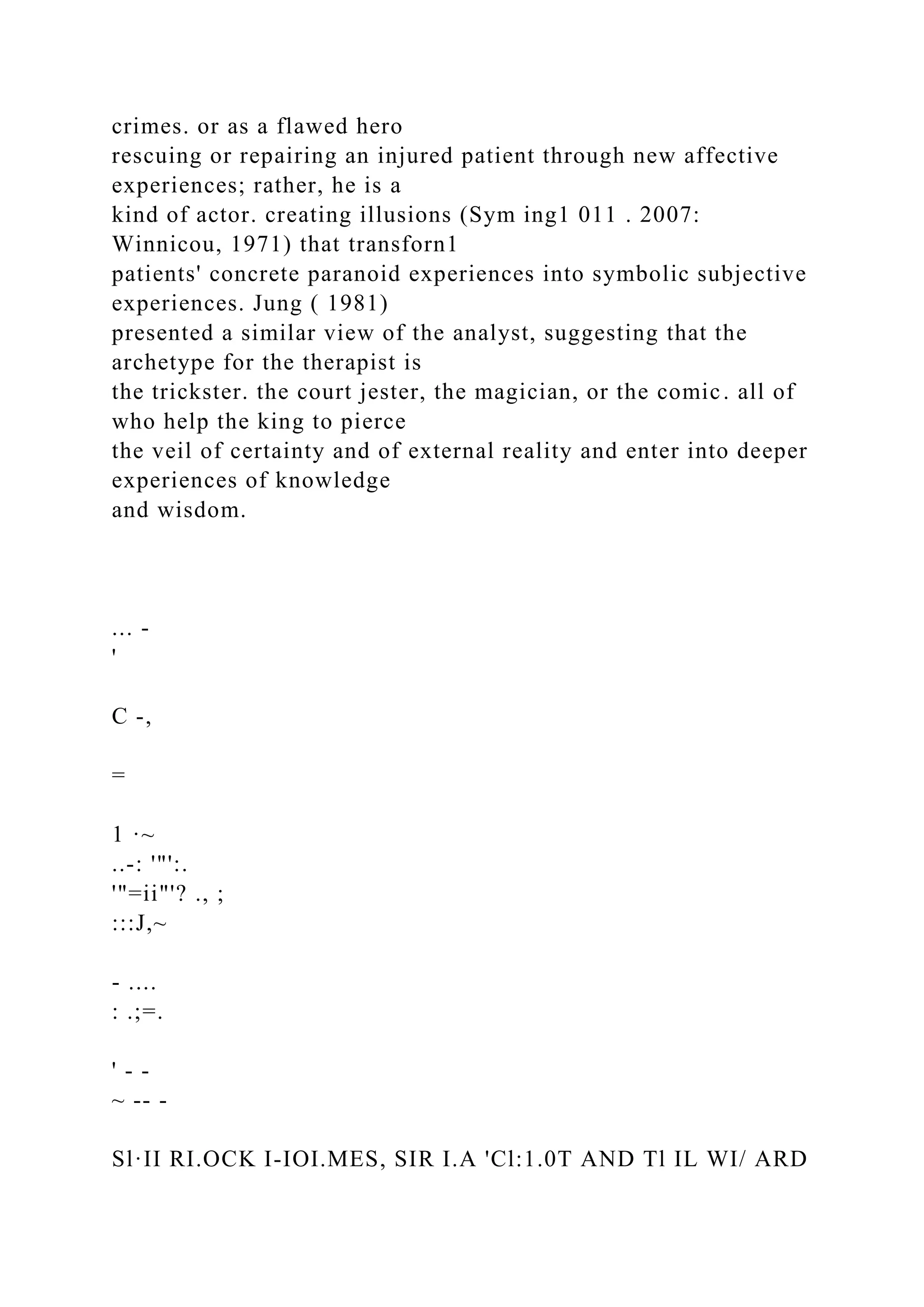
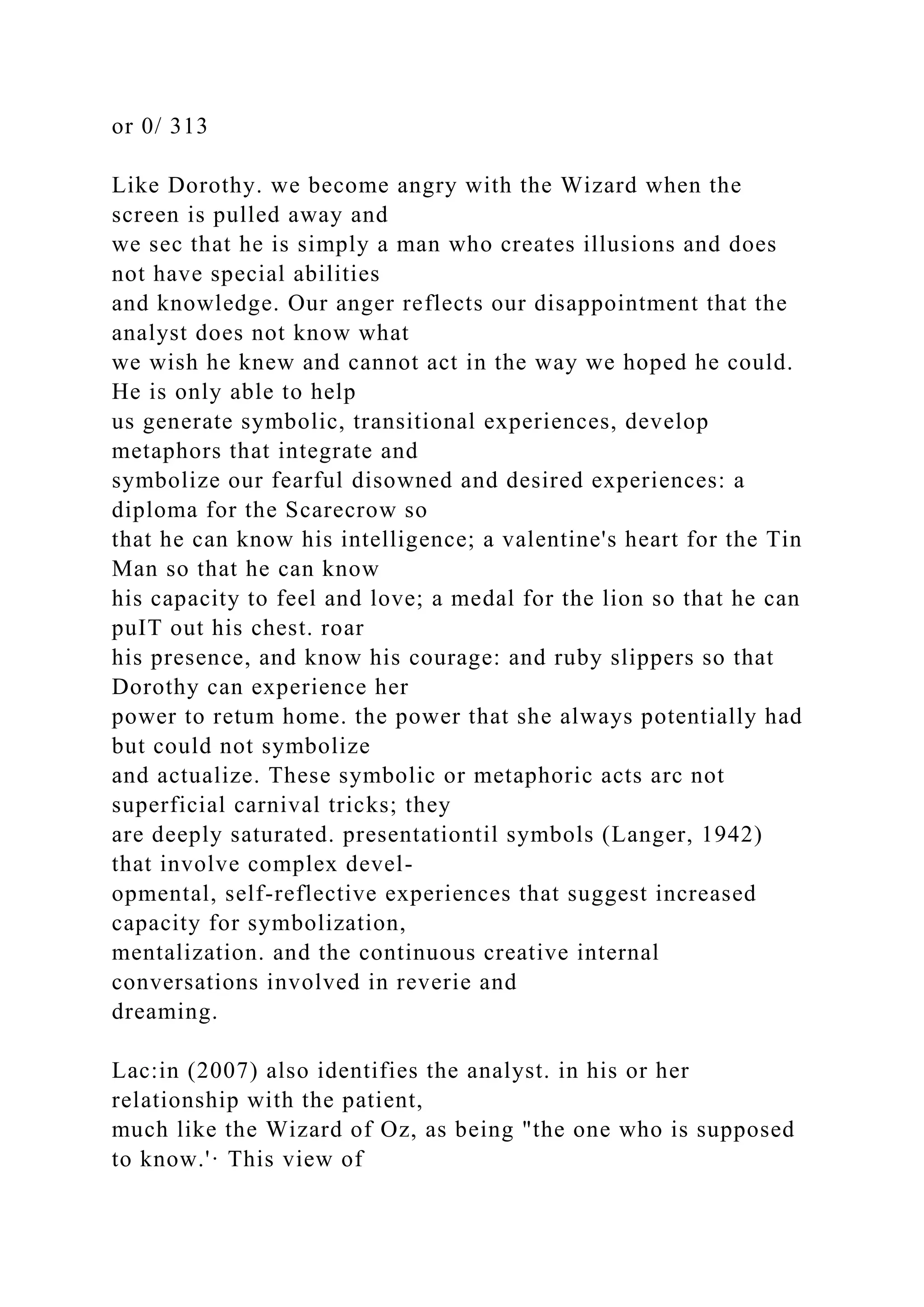
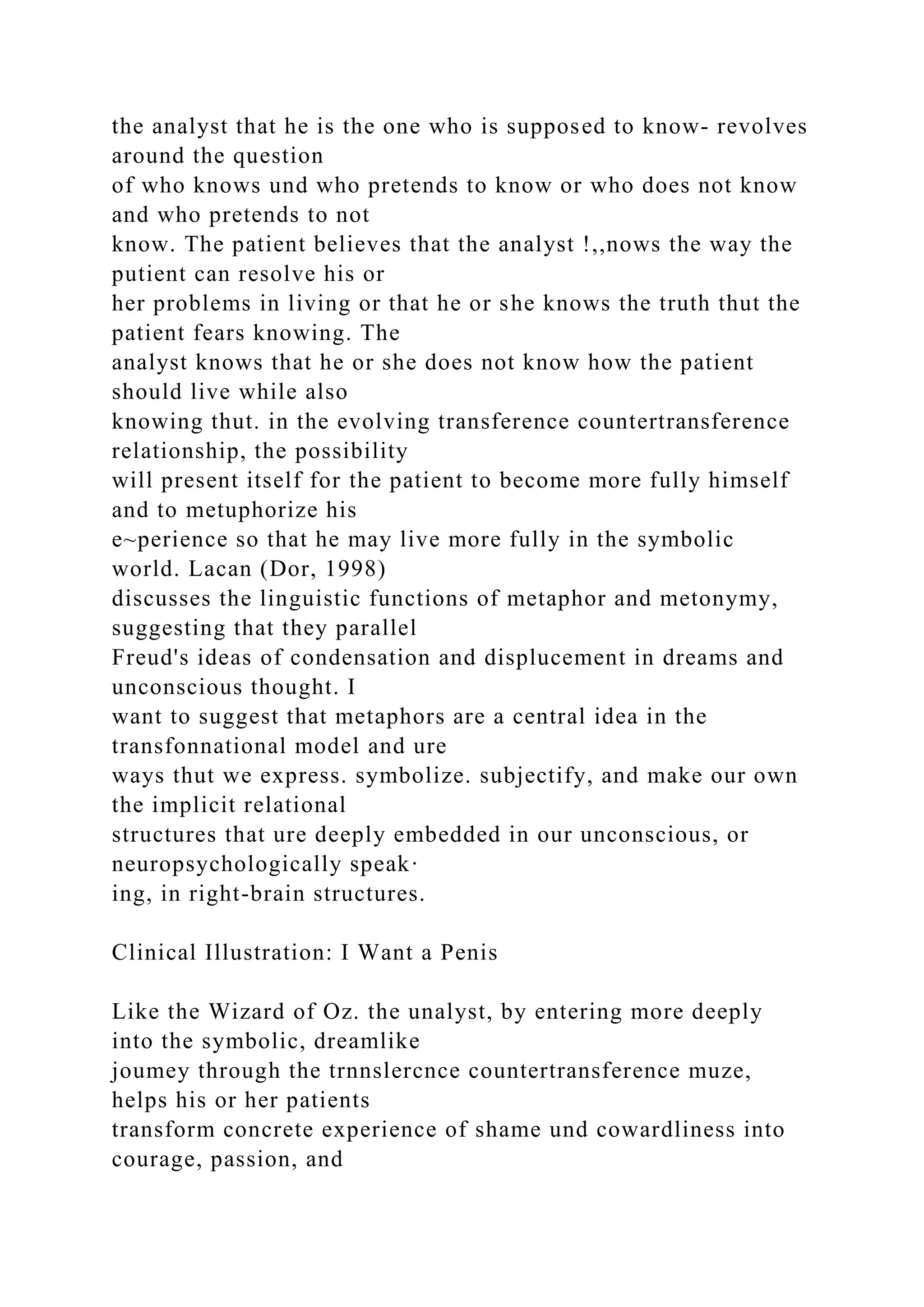
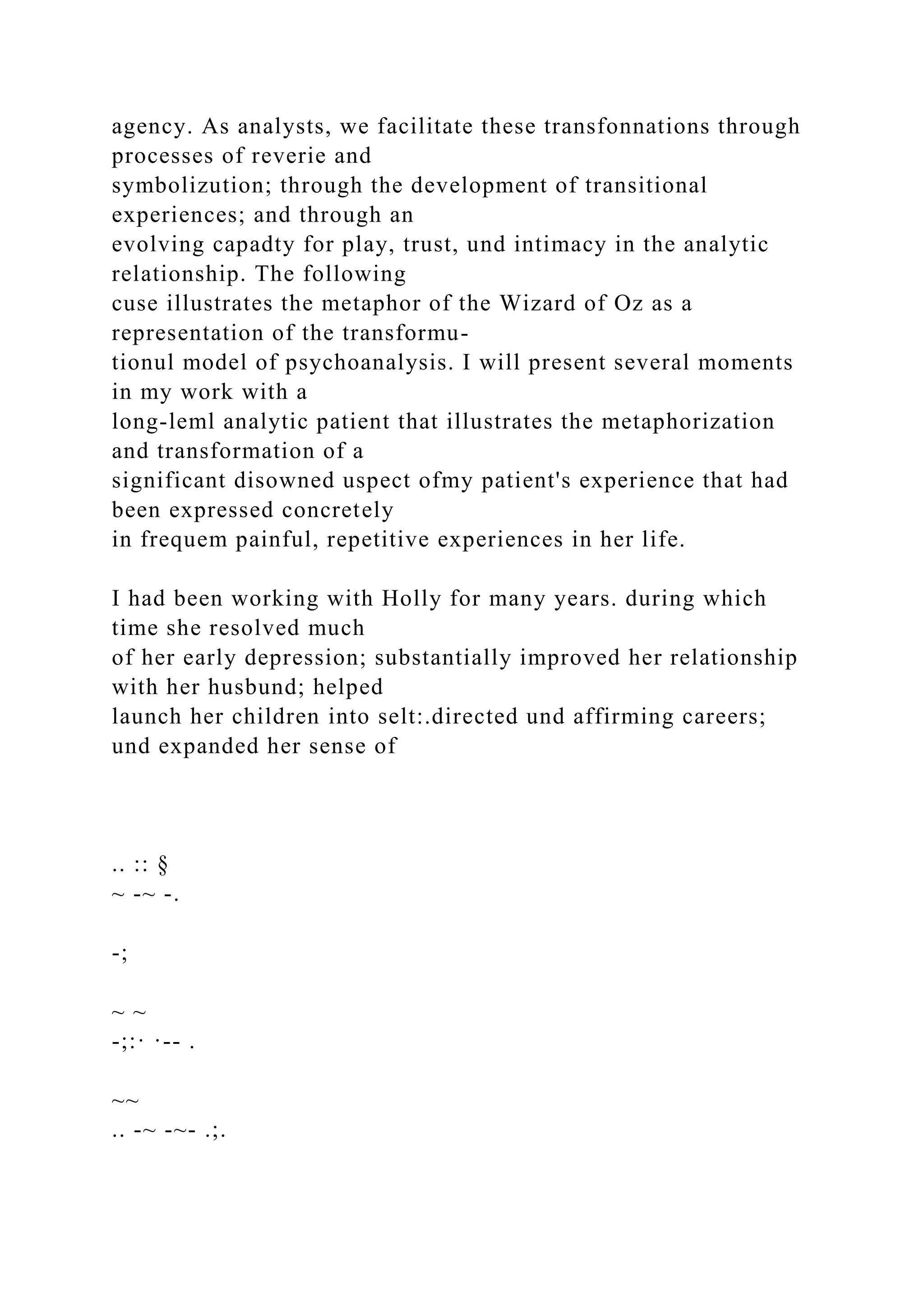
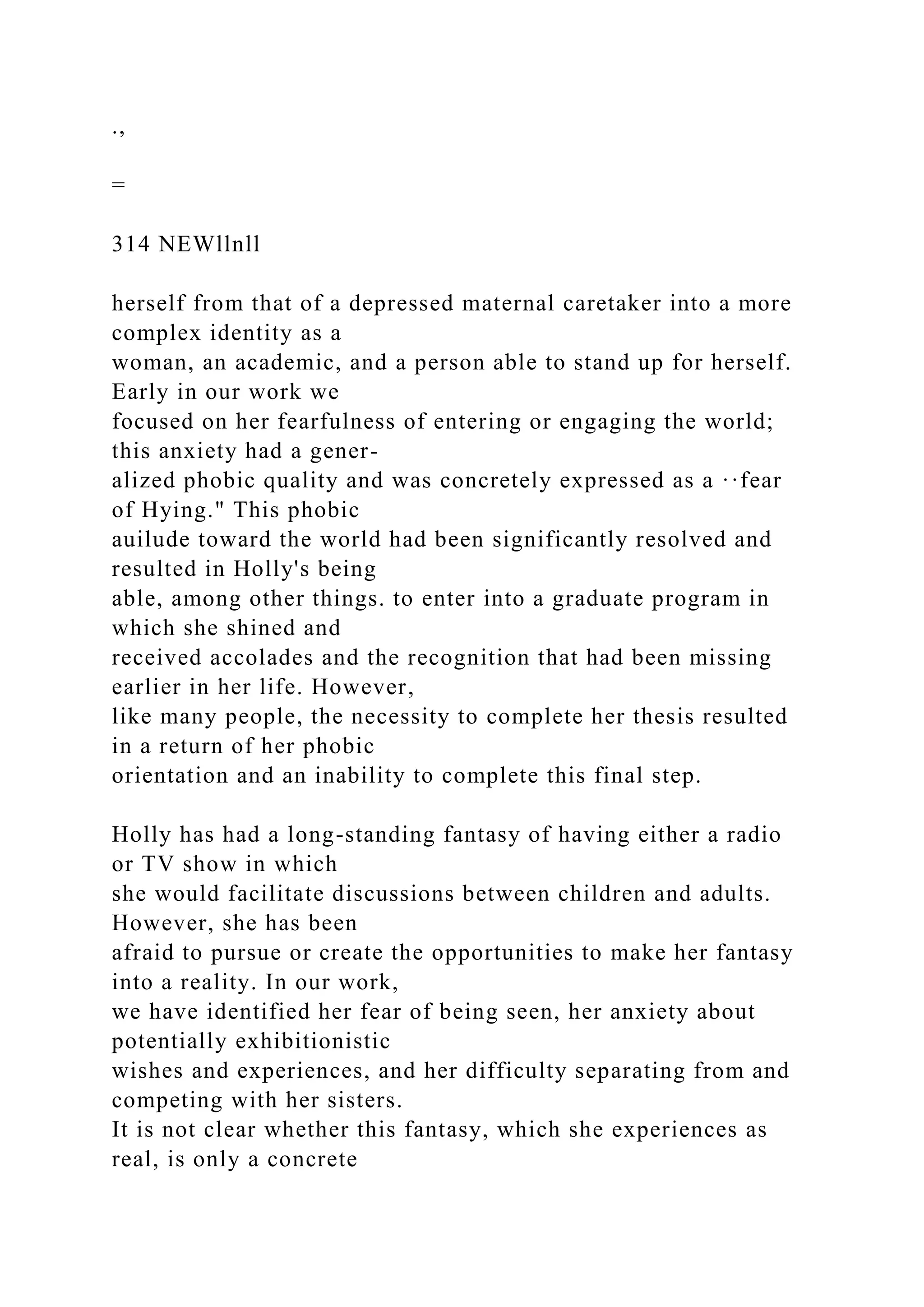
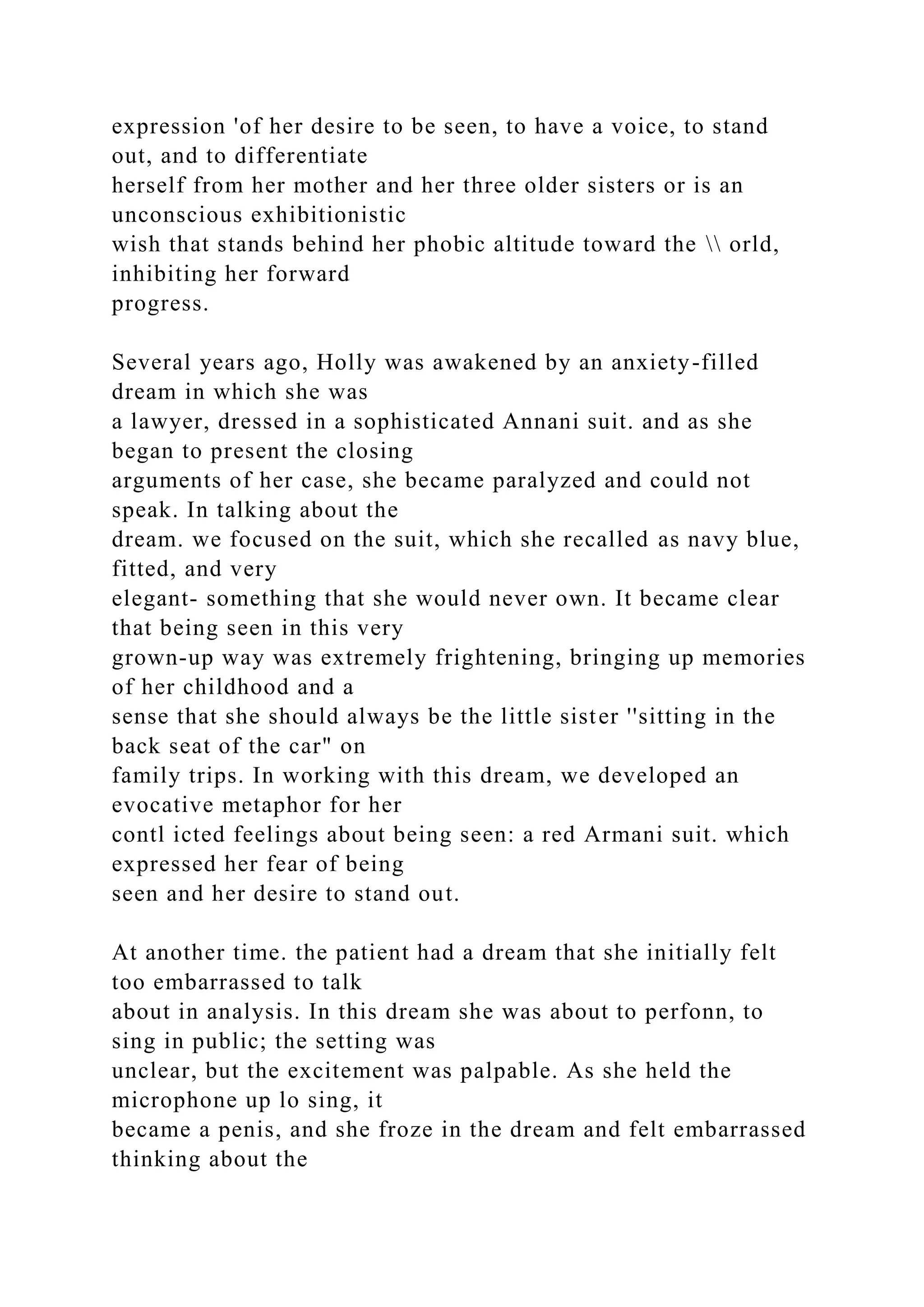
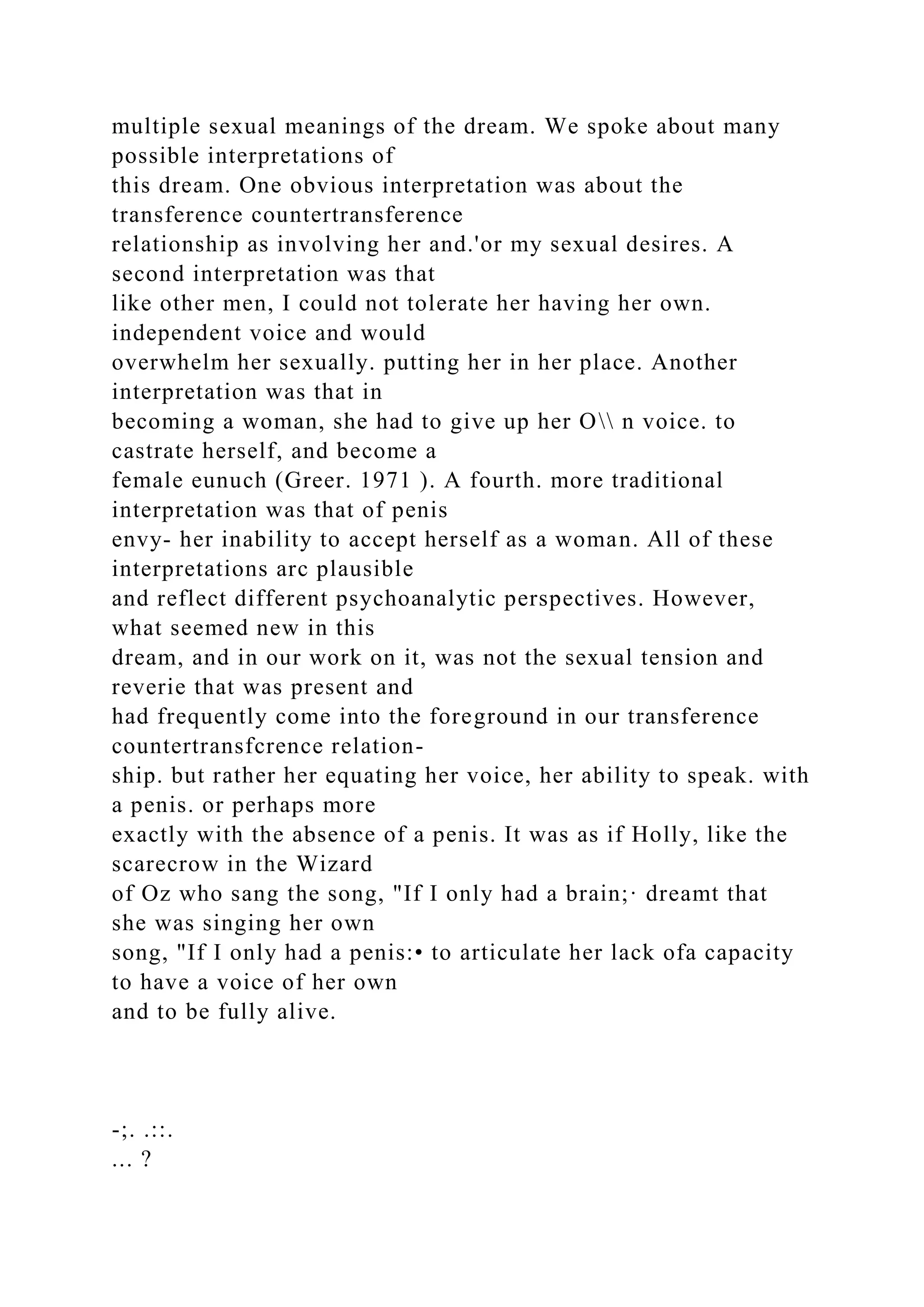
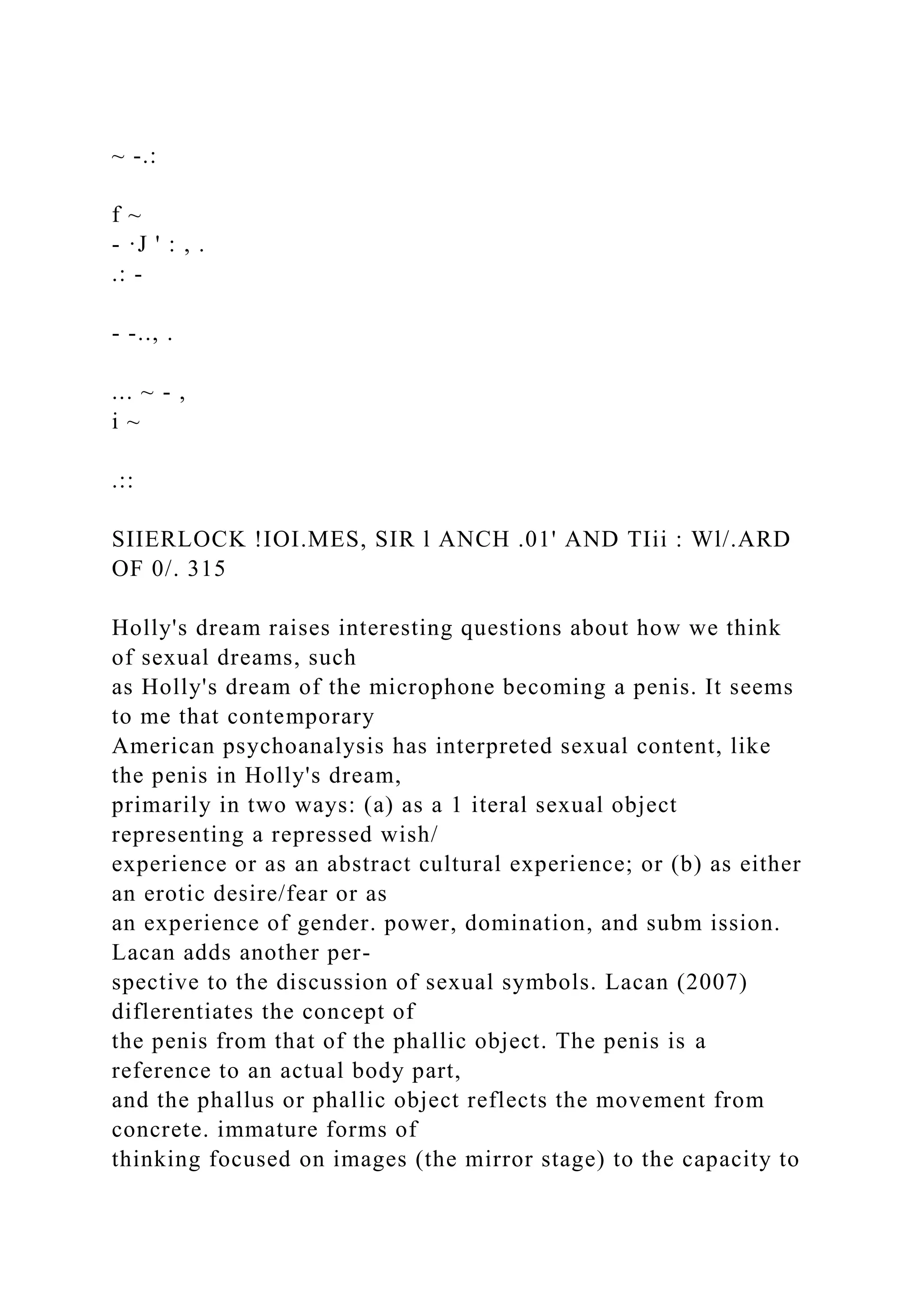

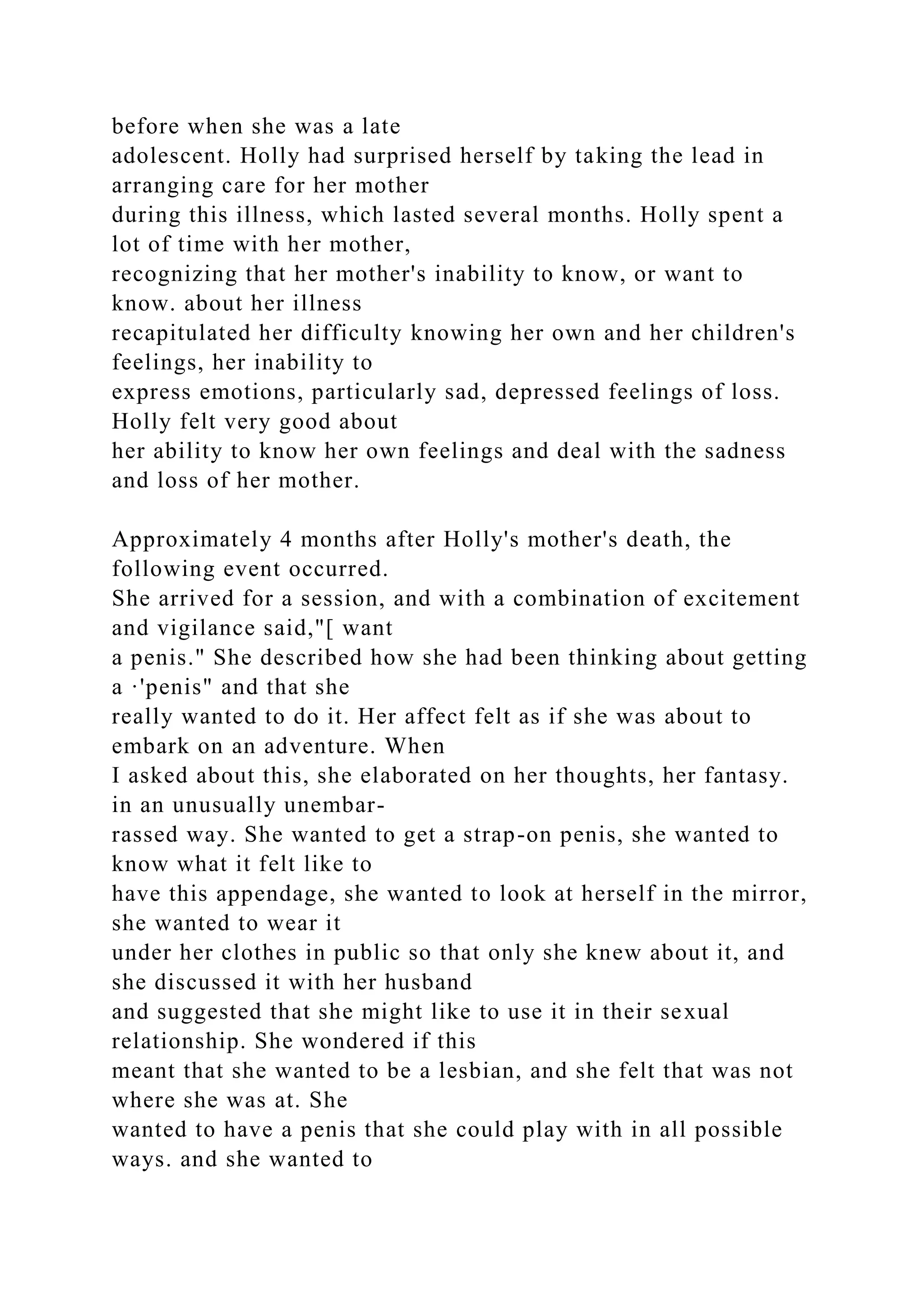
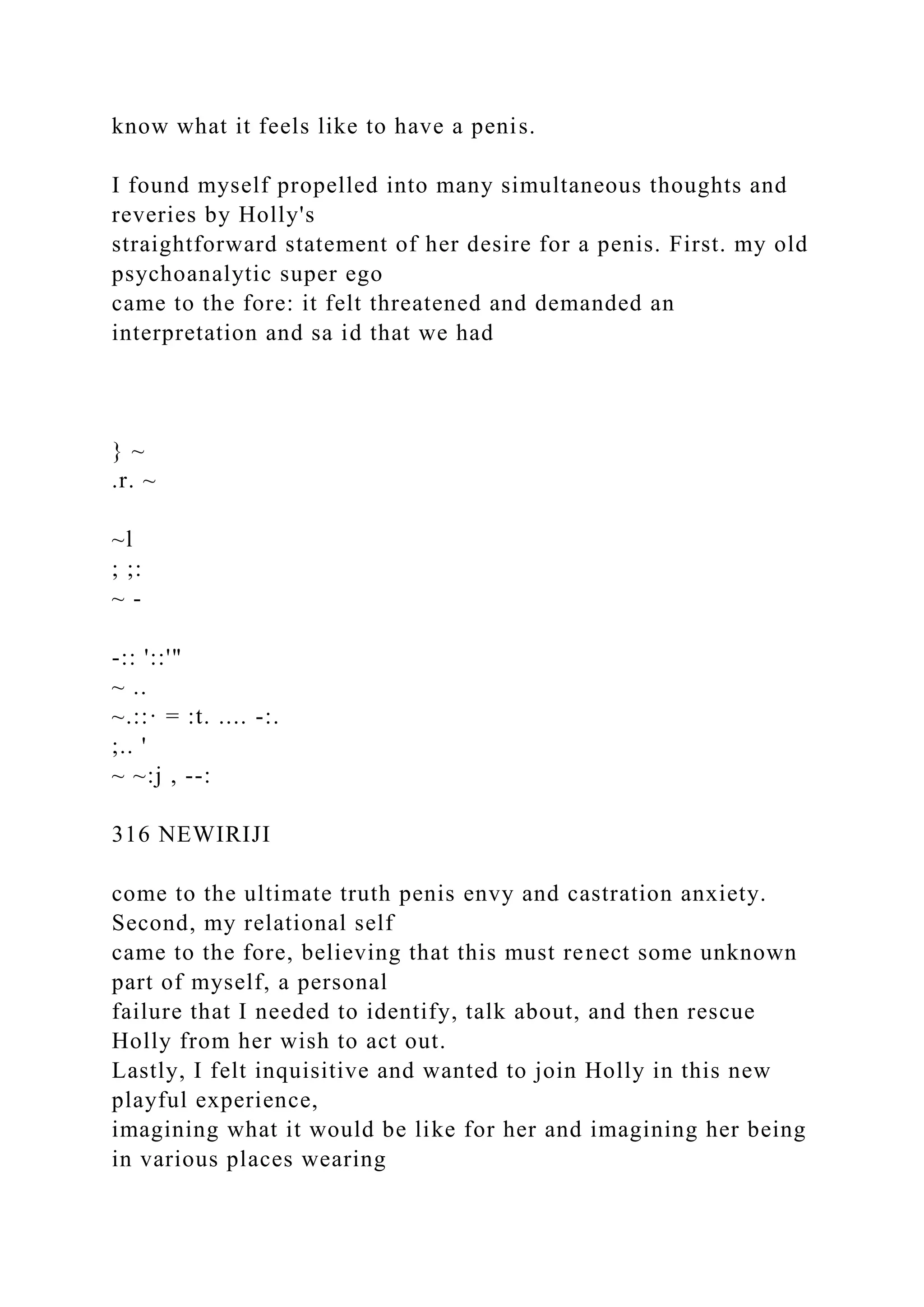
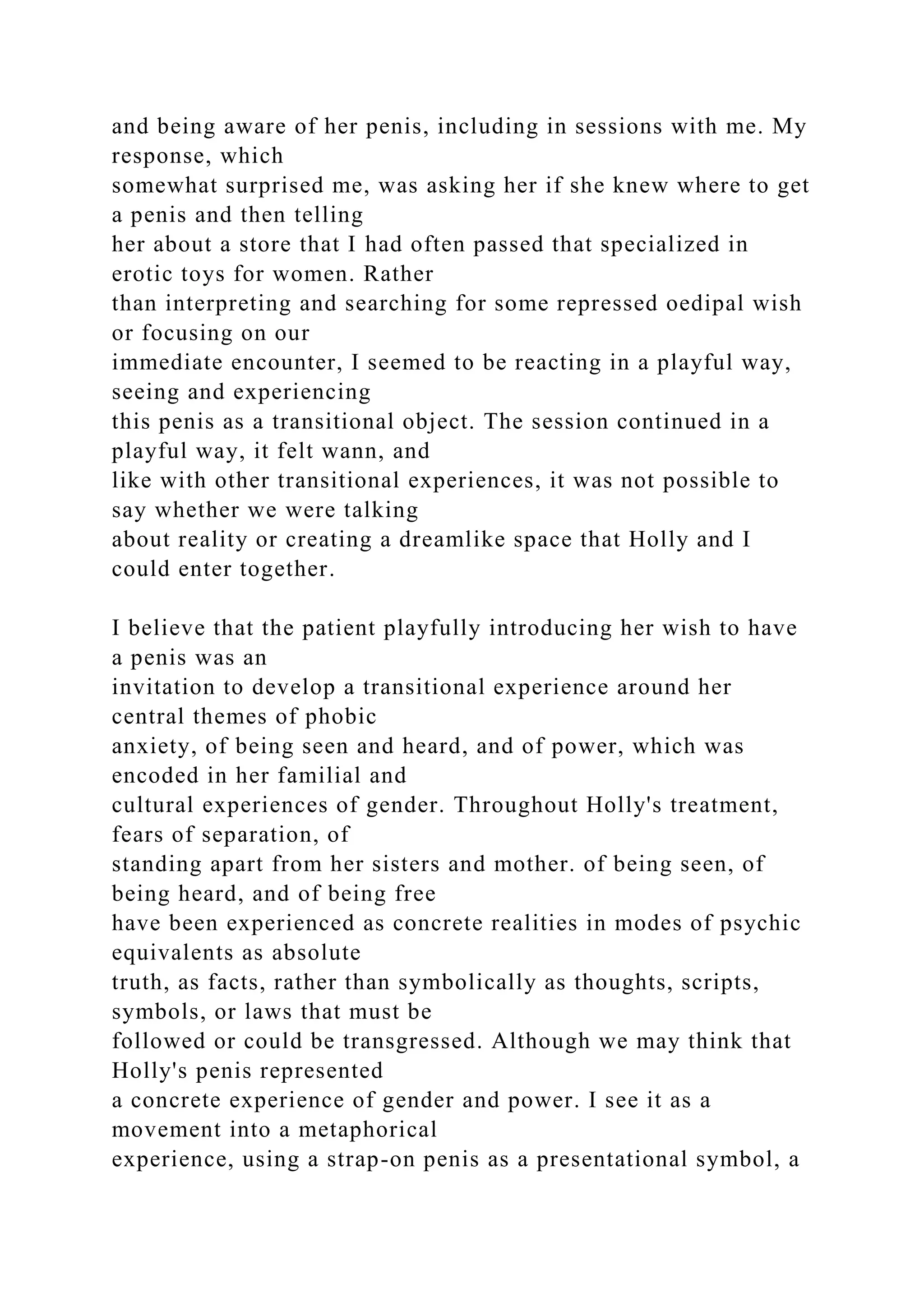
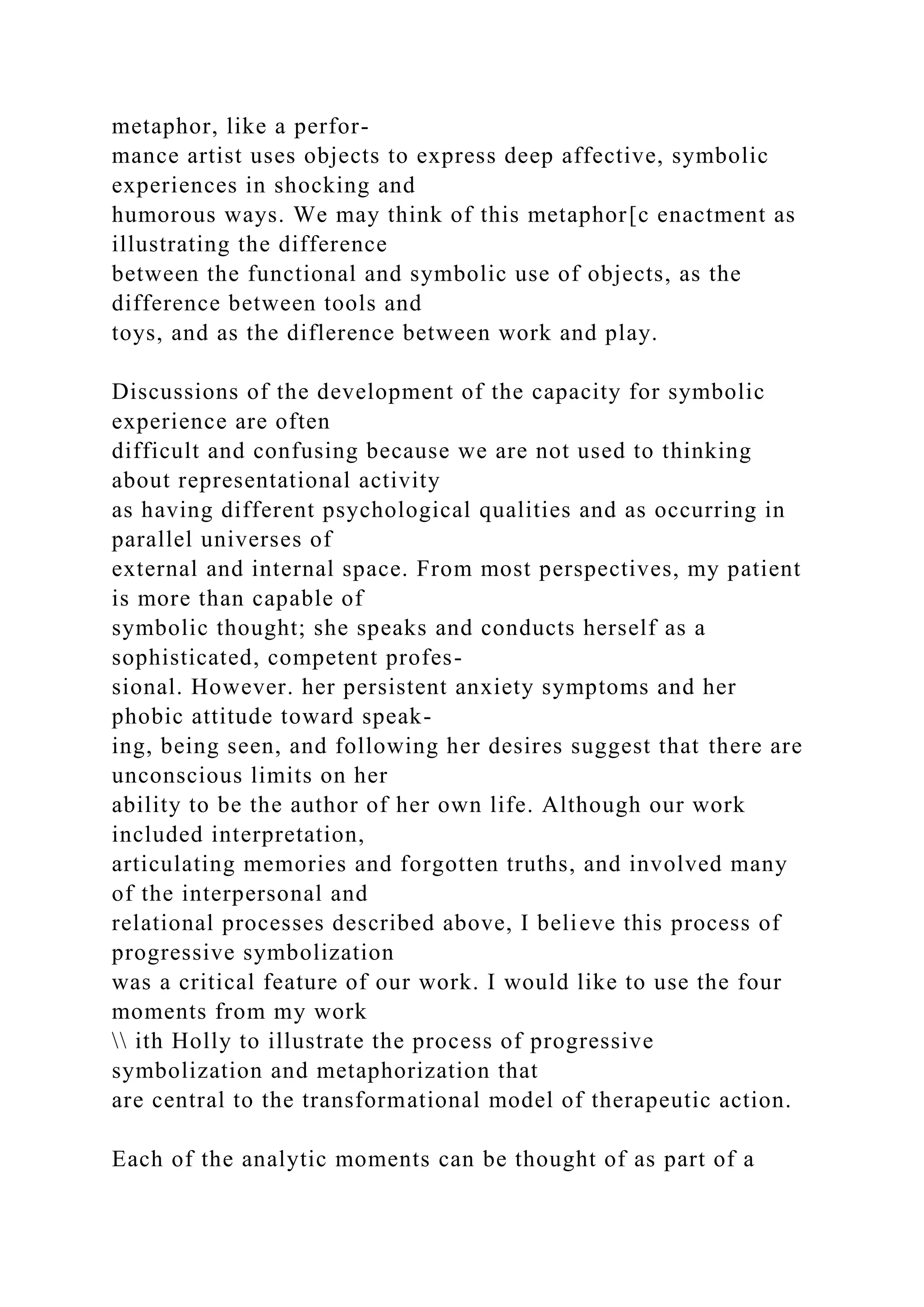

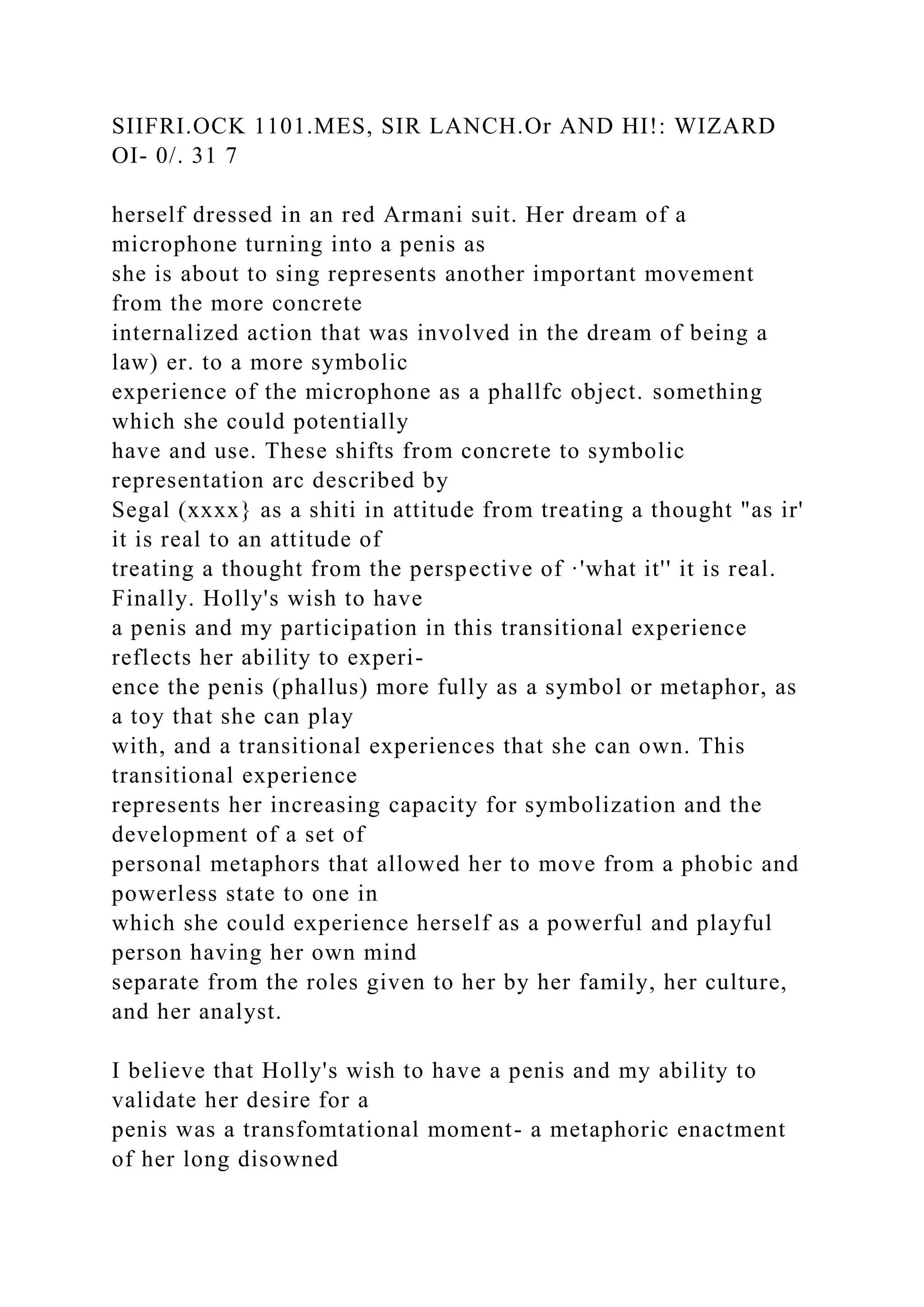
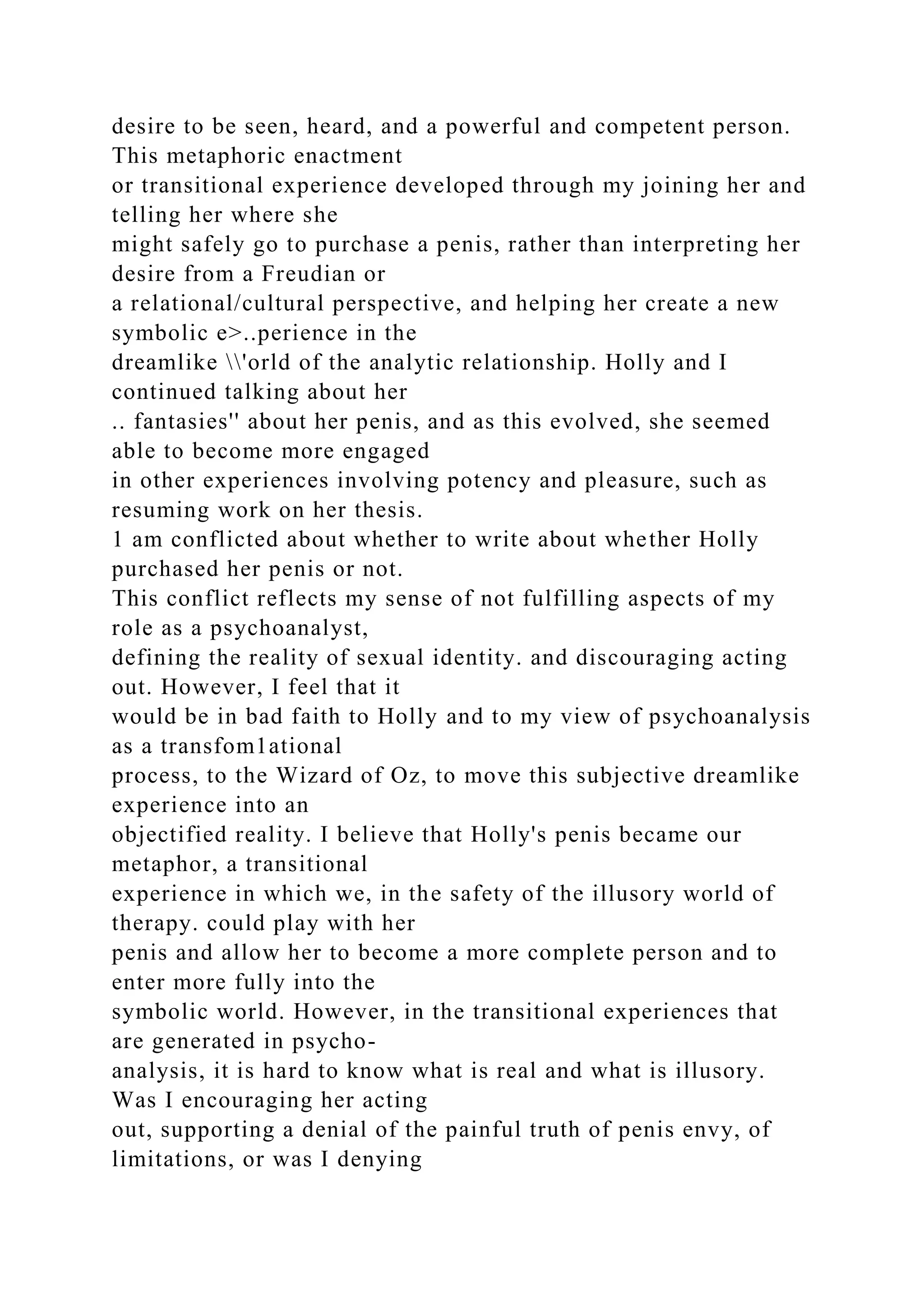
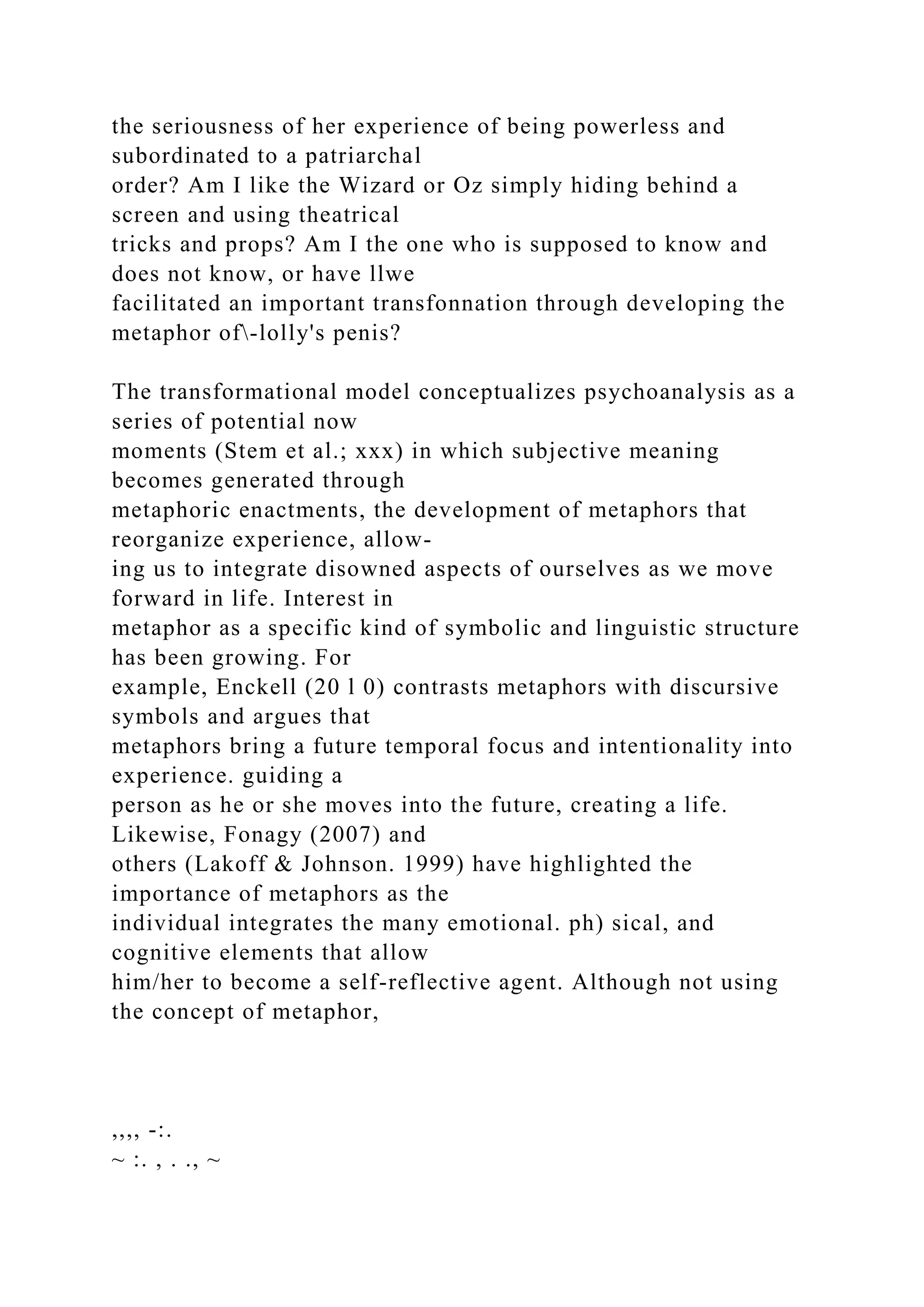

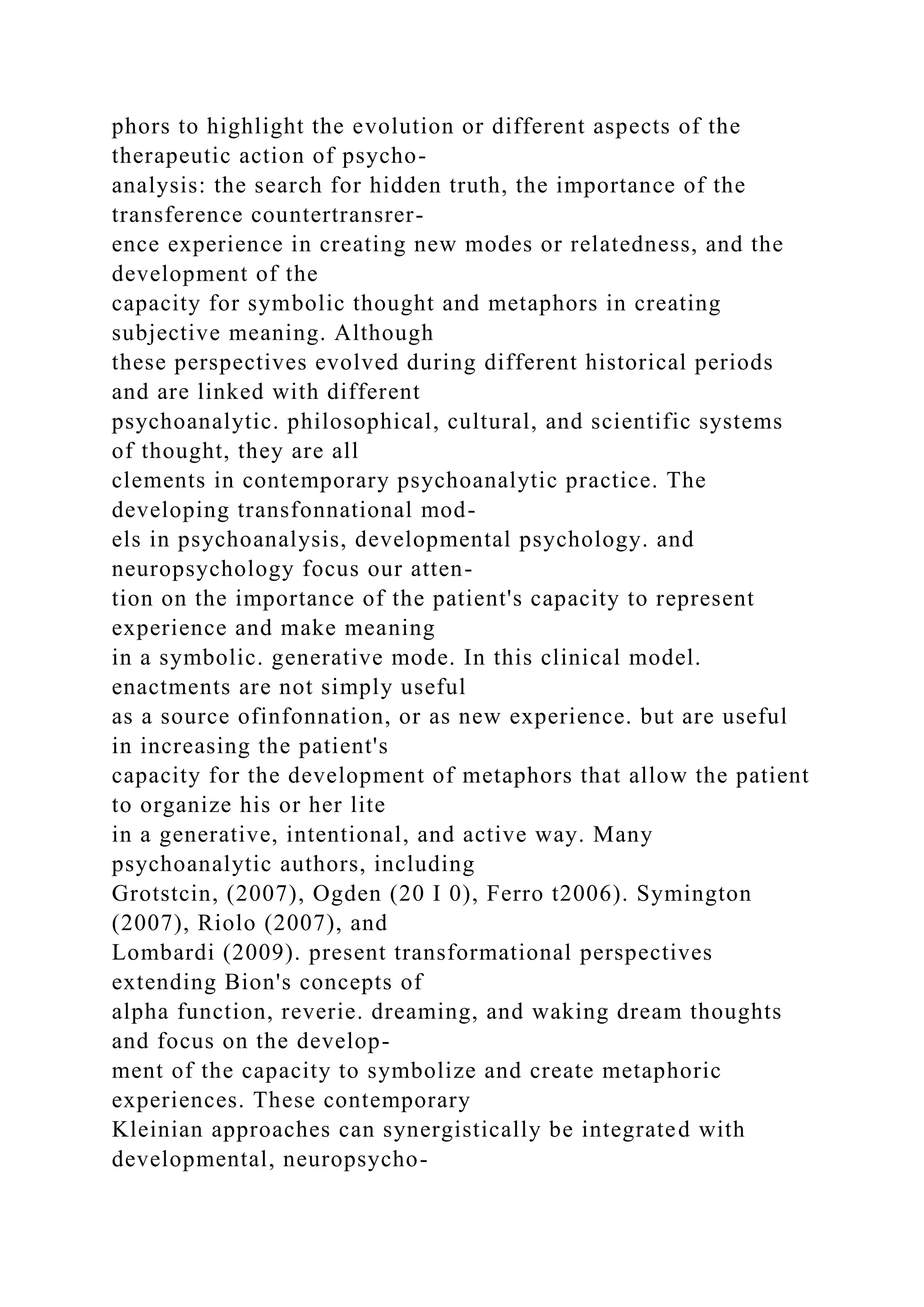
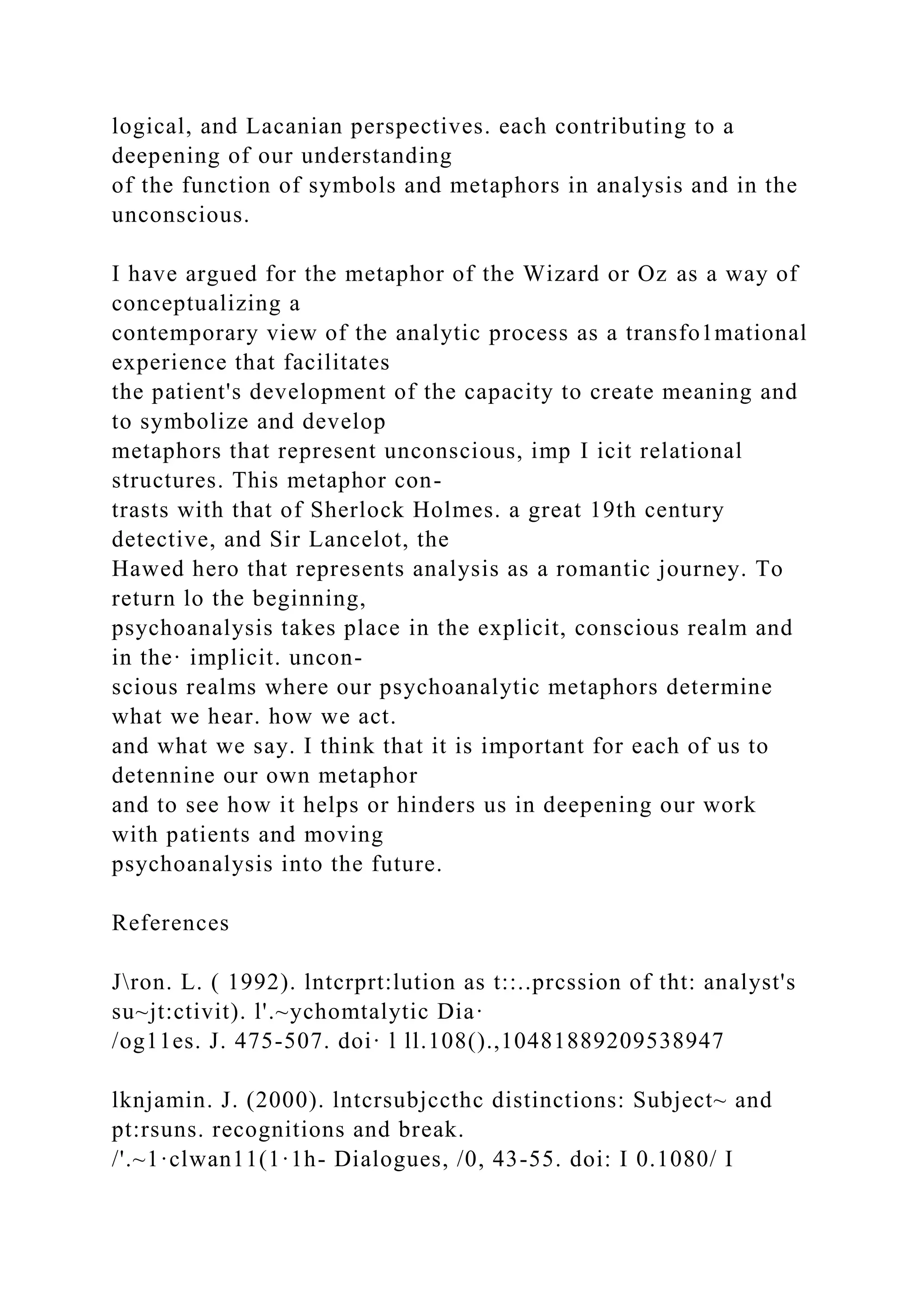

![j. 1745-8315.2009.00 I <,].;l..
Blass. R. B. (2010). Allirming ·that"s not pS)Cho-anal}sis! ' On
the value of the politically incom:ct
act of attempting to ddinc the limits of our lh:ld. The
lntunational Jnul'llal ,,f l'sychomw(vsis
91. 81-89. doi:IO 111 l l j 1745-8315.2009.0021 l.i.
Boston Change Process Stud} Group (BCl'SG}. (2007). The
foundational level of psychodynarnk
meaning: Implicit processes in relntion to conflict, ddcnse and
the dynurnk unconscious,
lnlr!rnalional .lournal of Psyclw-Ana f.1s1s. 88, 843 -860.
Breuer. 1.. & Freud, S. ( 1893). On the ps)chic.il mechunism of
h)stcrieal phenomena: Preliminar)
communication from studies on h}sti.:ria. In Tlie stwulurd
itduum of the complete p.1~1--clw/ogical
11-orks I!/ Sigmund Freru/, I c1/11m,• II ( /l/93 /895) · Studies
011 h,l'steric1 (pp. 1-17). London,
United Kingdom : Vintage.
Burl-.c. W. F. ( 1992}. Countertransrcreni:e disclosure, the a~)
mmetry/rnutualily dilemma. l'.tycho-
ci11a(vtic Dwlogues, 1. 241-271. doi: 10.1
OX().'1048188920953893 I
Davies. J. tvl. ( 1998). BclH!en the disclosure and forec losure
of erotic Lransli:rem:e-
countcrtransforcncc: Can ps)chounal) sis find a place for adult
sexuality'! l'Jychomralytic Diu-
loguC!.', 8, 747-766.
Dor, J. { 1998). /111rocluc1im1 to th,· n.mdmg cf /.1we111.
'l'h,: 1mw11.1·uvus sinicwred like u language.
New York. NY: Other Press.](https://image.slidesharecdn.com/directionslocatetheannotatedbibliographyandoutlineyou-230111131454-db06e2f3/75/DirectionsLocate-the-annotated-bibliography-and-outline-you-docx-52-2048.jpg)
![l'.m:1-.cll. II. (2010). Reflection in ps)choam1lysi~. On
!>)mhols and mclaphors. The lntr!rnatiwwl
Journal oj Psyclromwlysis. 91 . I 093- 1114. dor I 0. I
11111.1745-8315.2010.()(1]20.x
Ferro. A (2006). C'lin ical imp! icat ions nf Bion · s though I.
71,e /111cma1(011al Joumal <if l'.1ydmanal-
ys1s. 8i. 989-1003. doi: I0.1516•81(,7-Fl'l l-RI <, 7-<)l Vl
h111agy, P .. & Target. M. (2007). ·1 he rooting of' the mind in
the hod) : New links between
uuuchment theory un<l ps)chmmulytie thought. .lmrrnaf •!I°
1/11! , lmL'l'lctJn l'sydroam1(1·th· ..lsso-
,·iatum 55. 411-456.
l mag}. I' .. I arget, ~L Gergely. G .. Allen. J. G .. & Bateman.
A. W. (2003). The de'clopmcnt.11
roots of borderline personalit) <li,order in early attachment
relationships: A theory and some
evidence. /'.1:1dwant1~1'1ic lnquirv, 13, 412-t59. Jo i·
I0.1080;07351692309349042
Fn:u<l. S. ( 1909), le/ler Ji-om Sigmund Fmu/ to C C . . /1111~.
J1111e /8, /909. In W. McGuire ( Ed.).
l'hc FrcudfJung Letters. The C'mrespondcncc heteen Sigmund
Freud and C. G. Jung (Bollingen
Series. Nn. 94 ). Princeton, NJ : Princeton Uni ersit> Pres,.
Freud. S. ( 1912). Recommendations to physicians practising
pS}cho-anulysis. In 71ie swndard
editwn oft/re comph•I•' 11syt•/ro/og1cal 11 ork.1· oj
S1~11111ml 1-h·ud ( Vol. 12. pp. I 09-120}. The Case
of Schrcher, Papers on Technique and Other 'orl-.s. London;
The Hogarth Press.](https://image.slidesharecdn.com/directionslocatetheannotatedbibliographyandoutlineyou-230111131454-db06e2f3/75/DirectionsLocate-the-annotated-bibliography-and-outline-you-docx-53-2048.jpg)
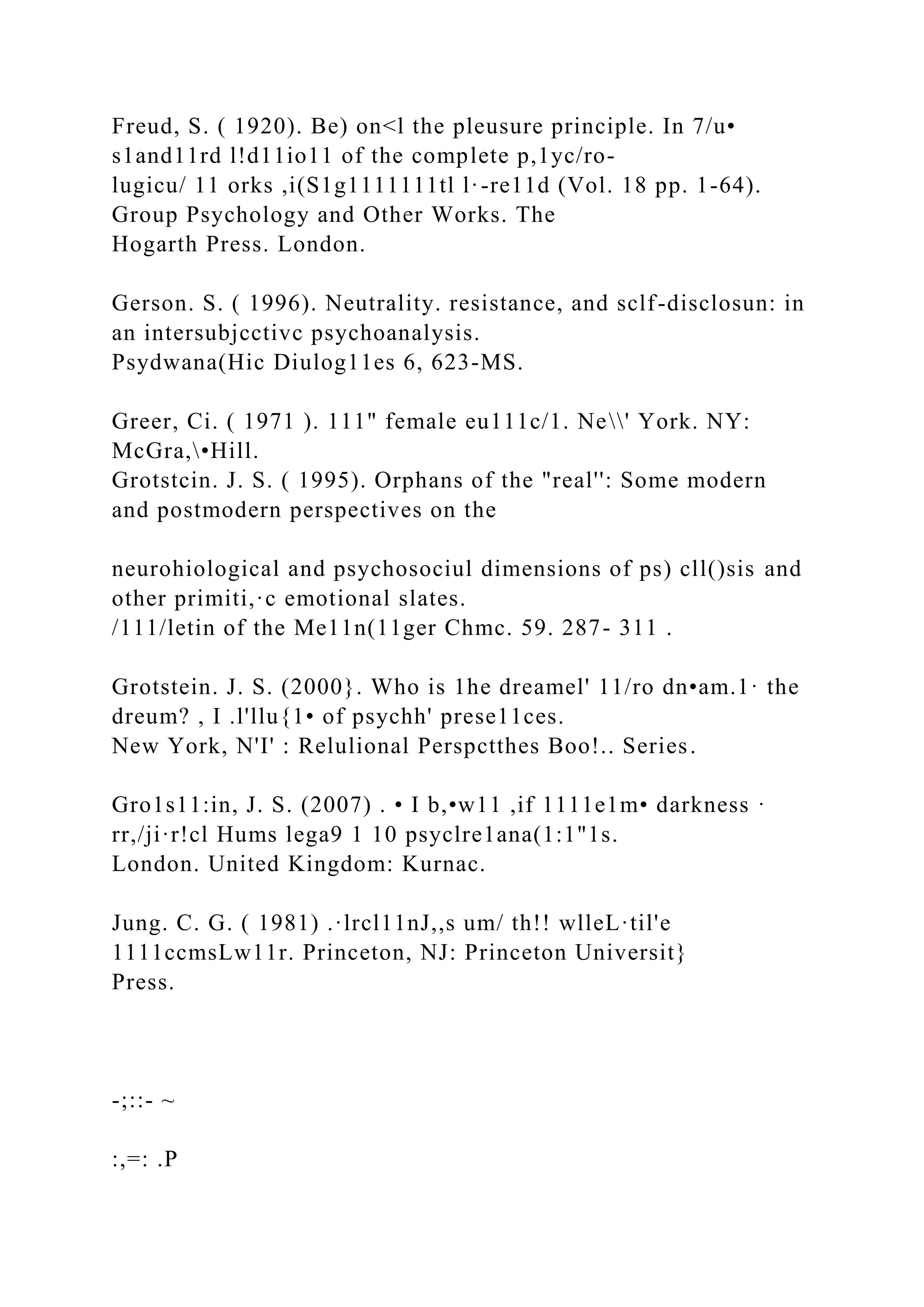
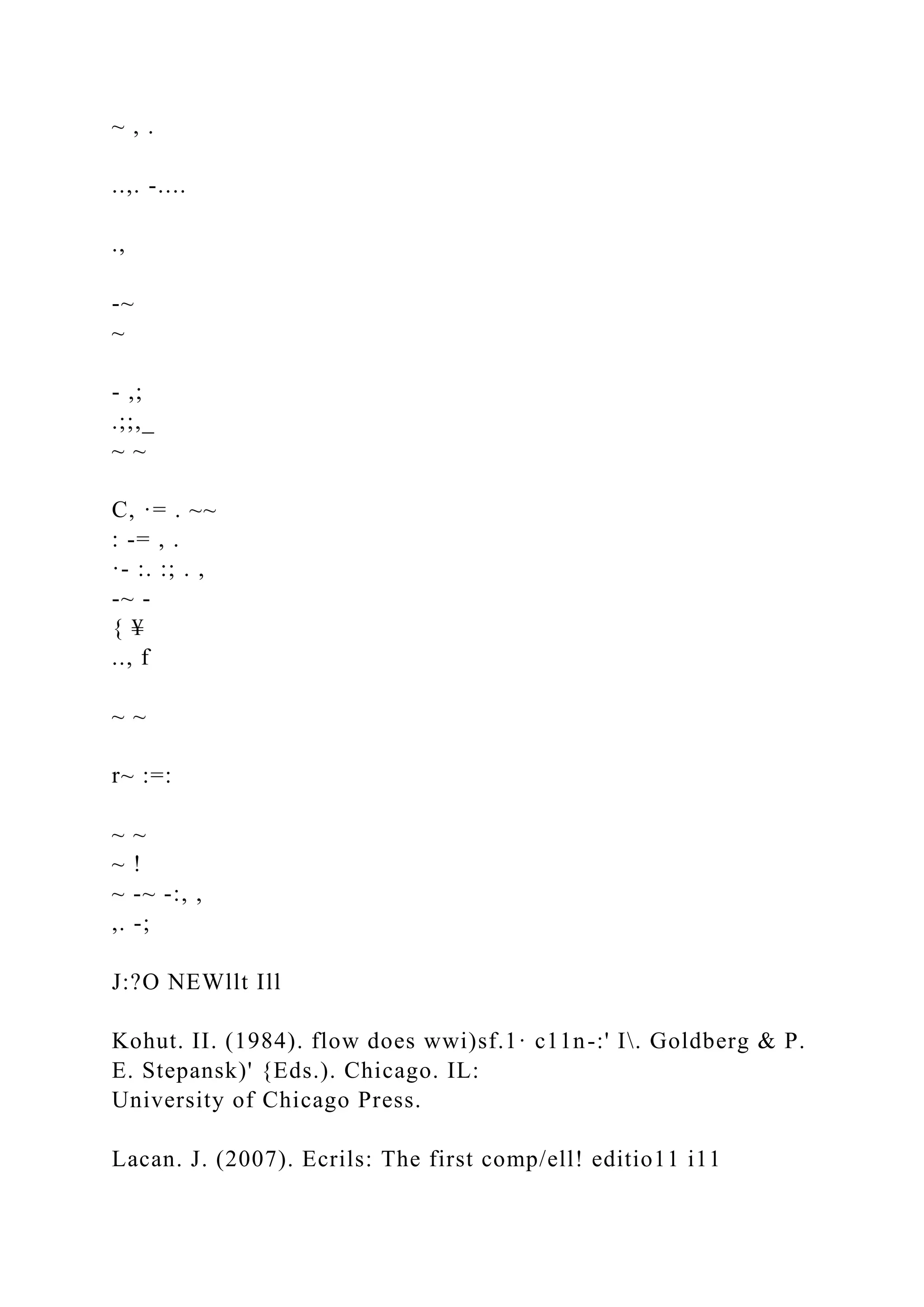
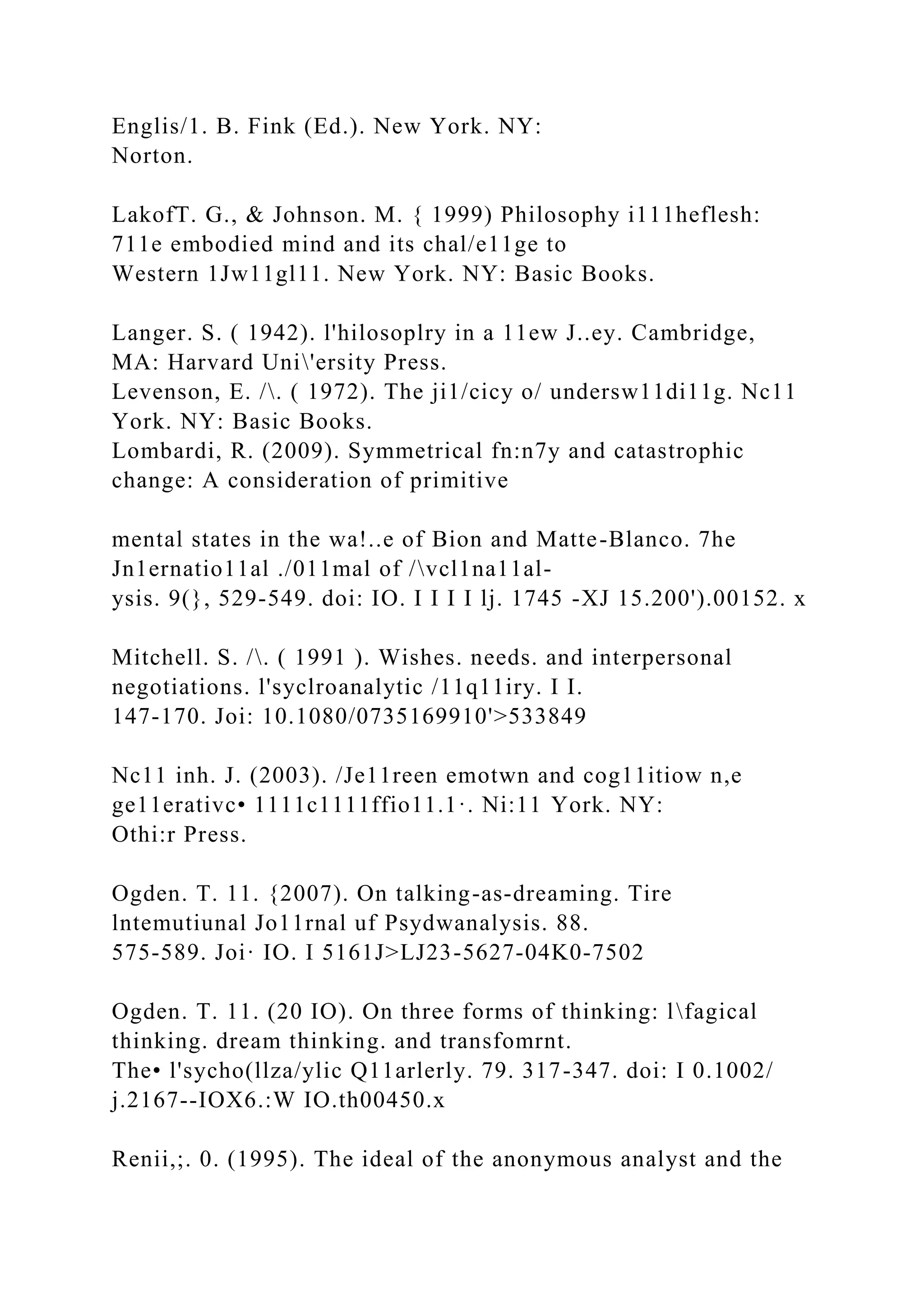
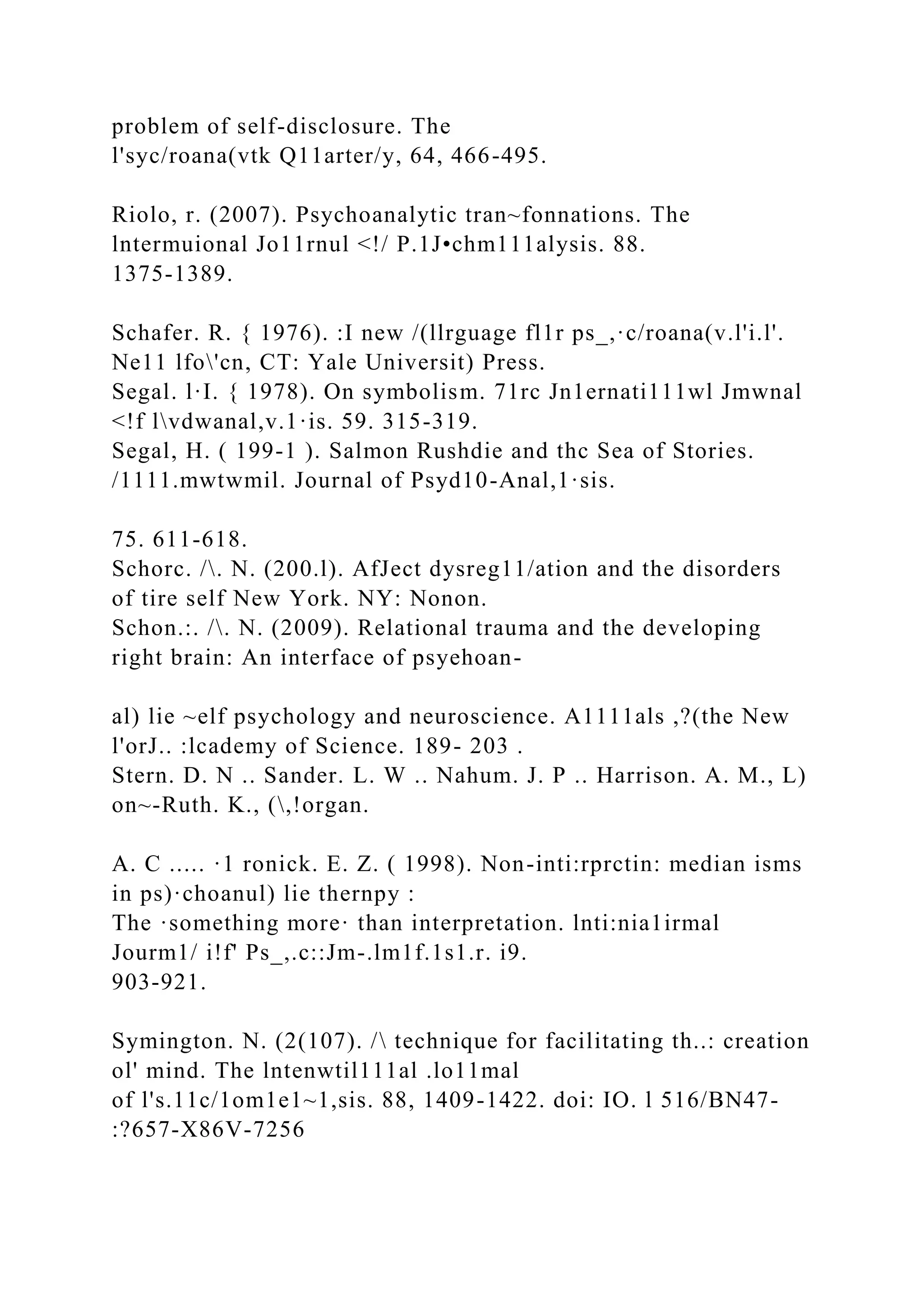
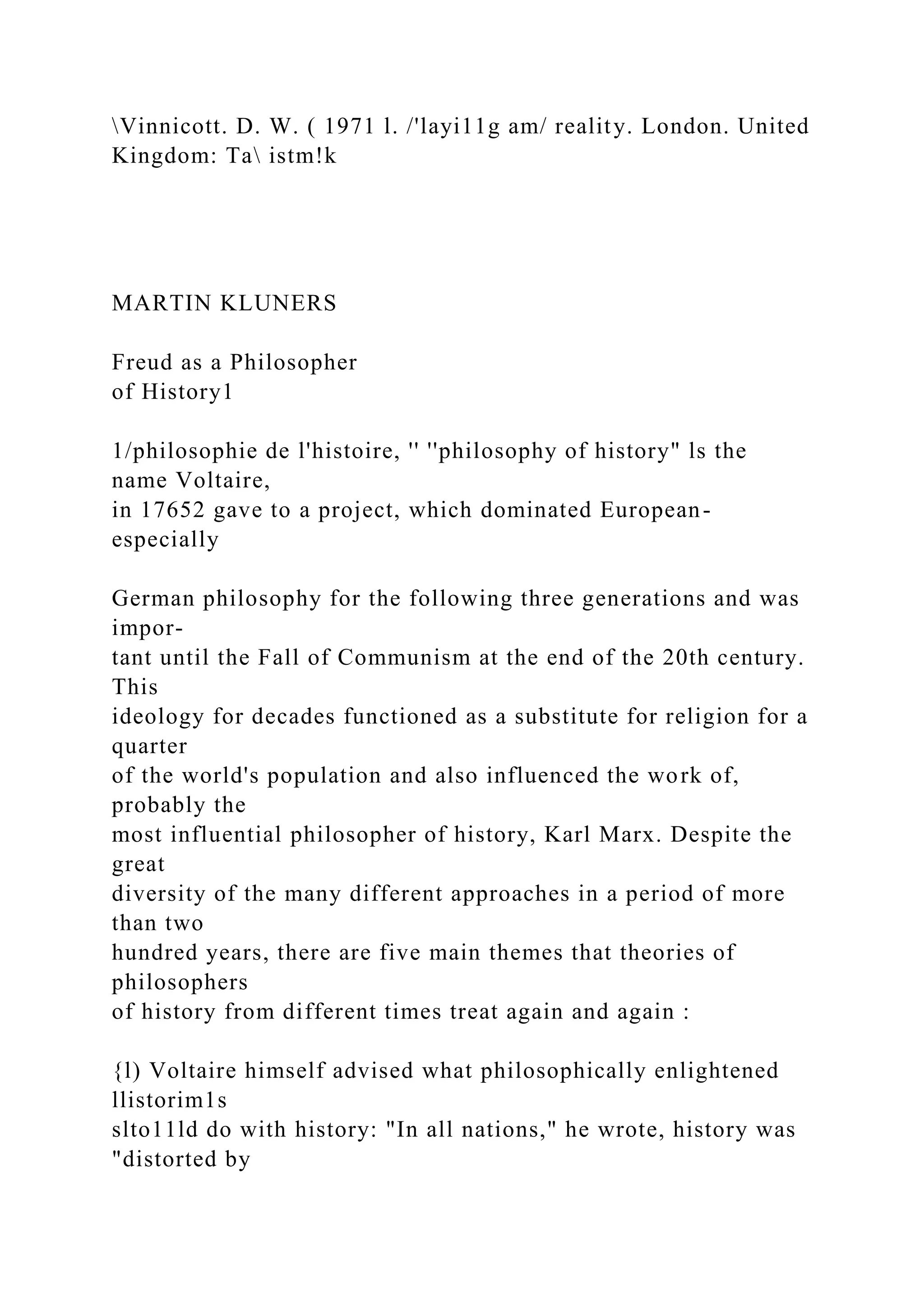

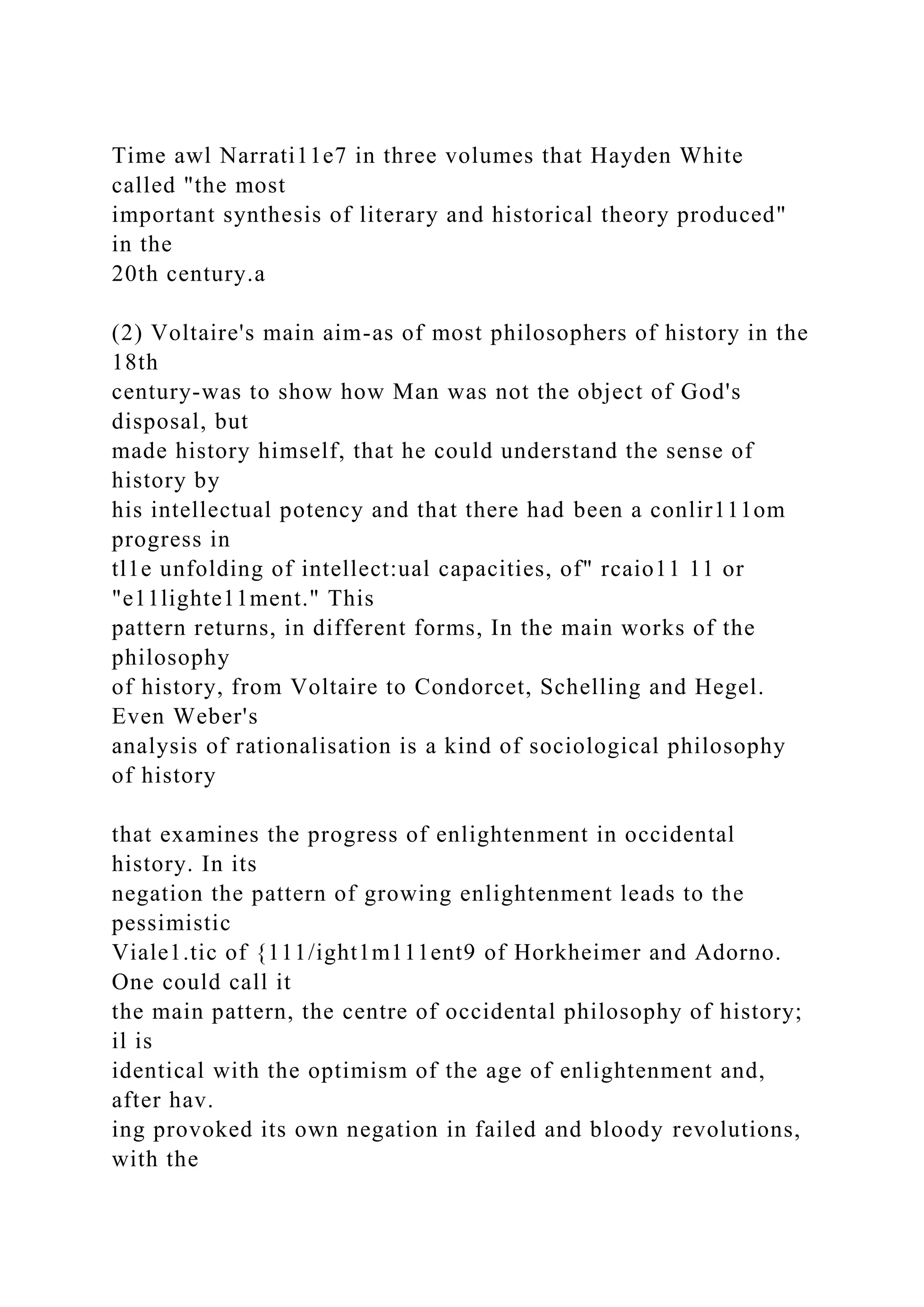
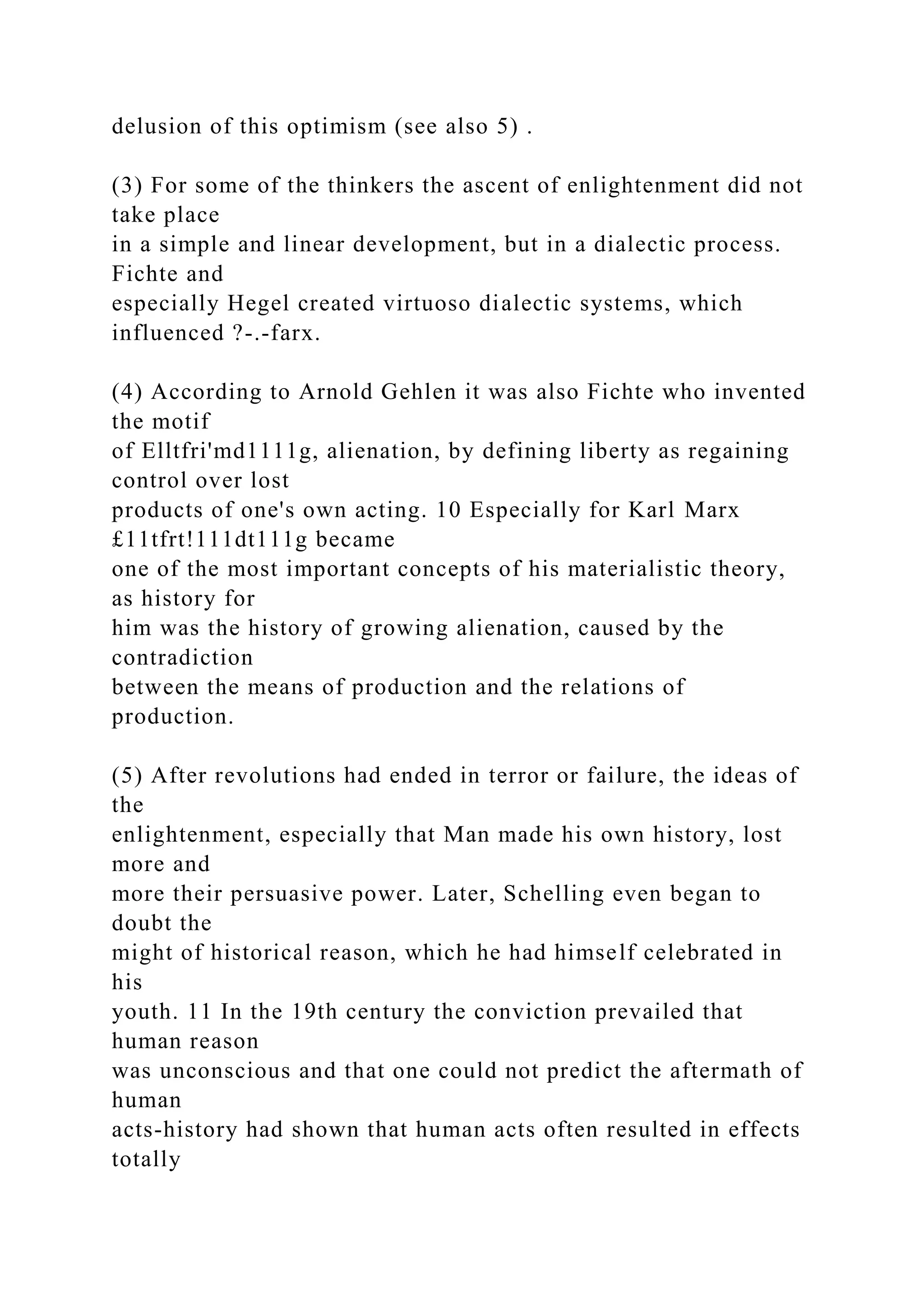
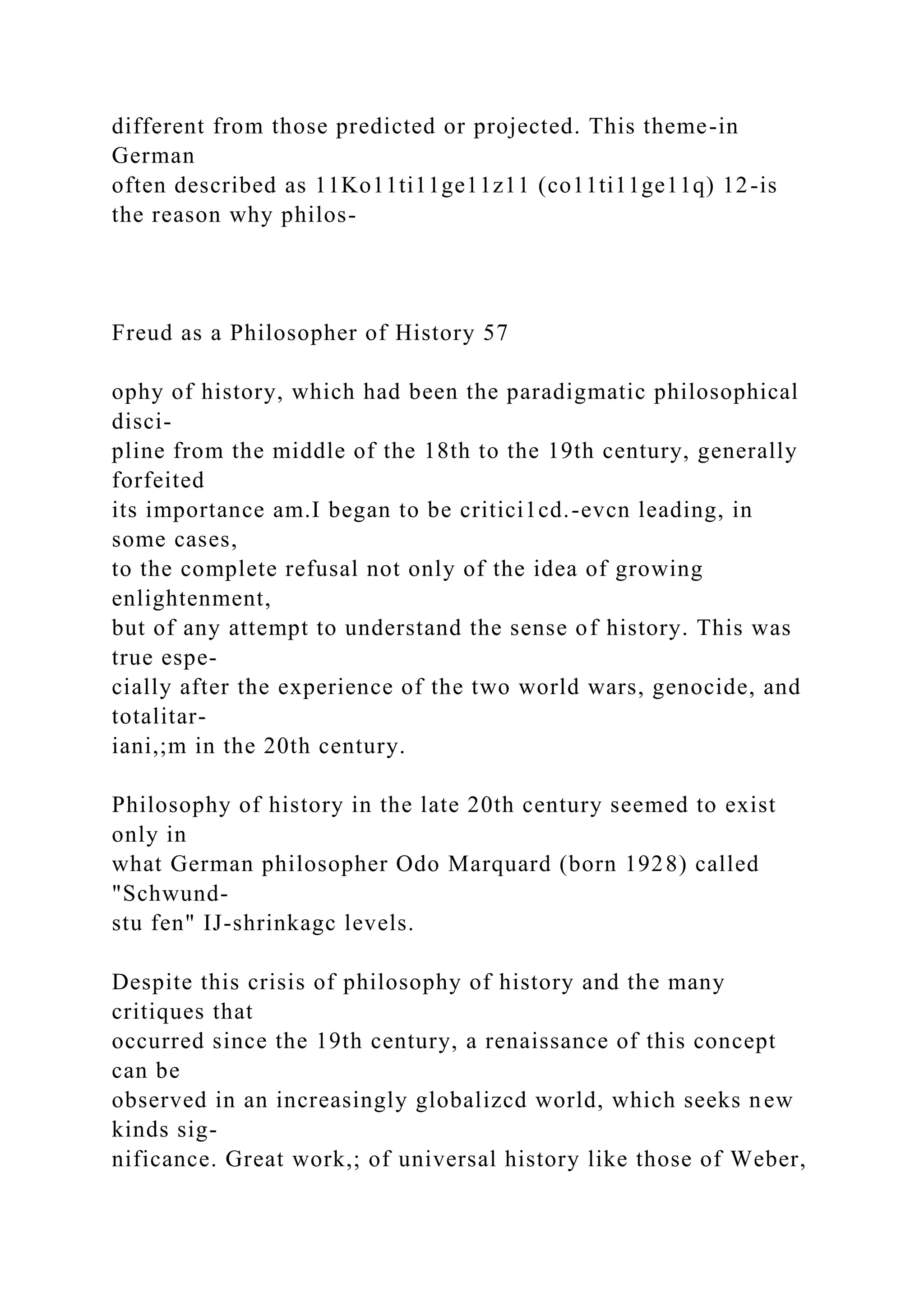
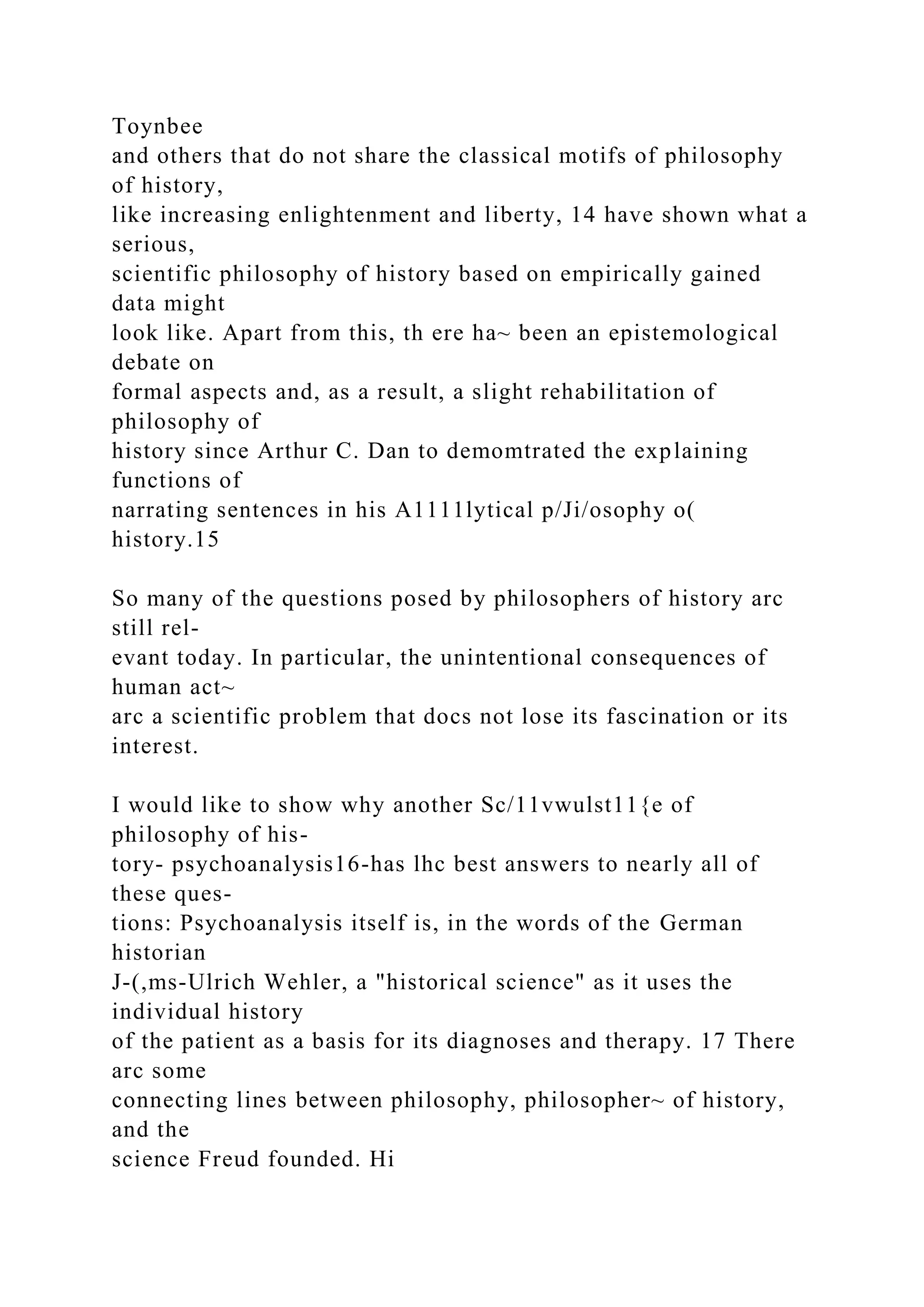
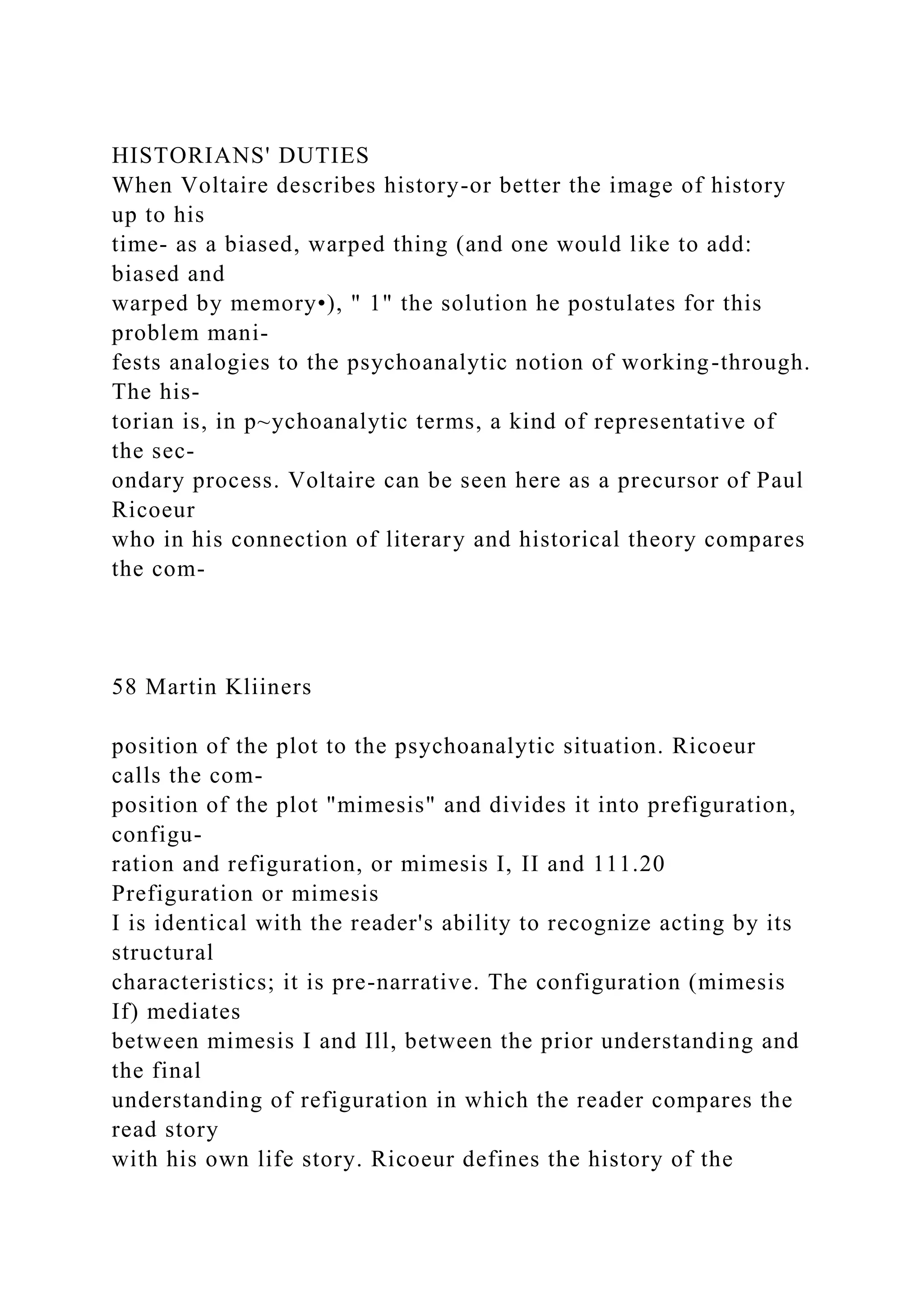
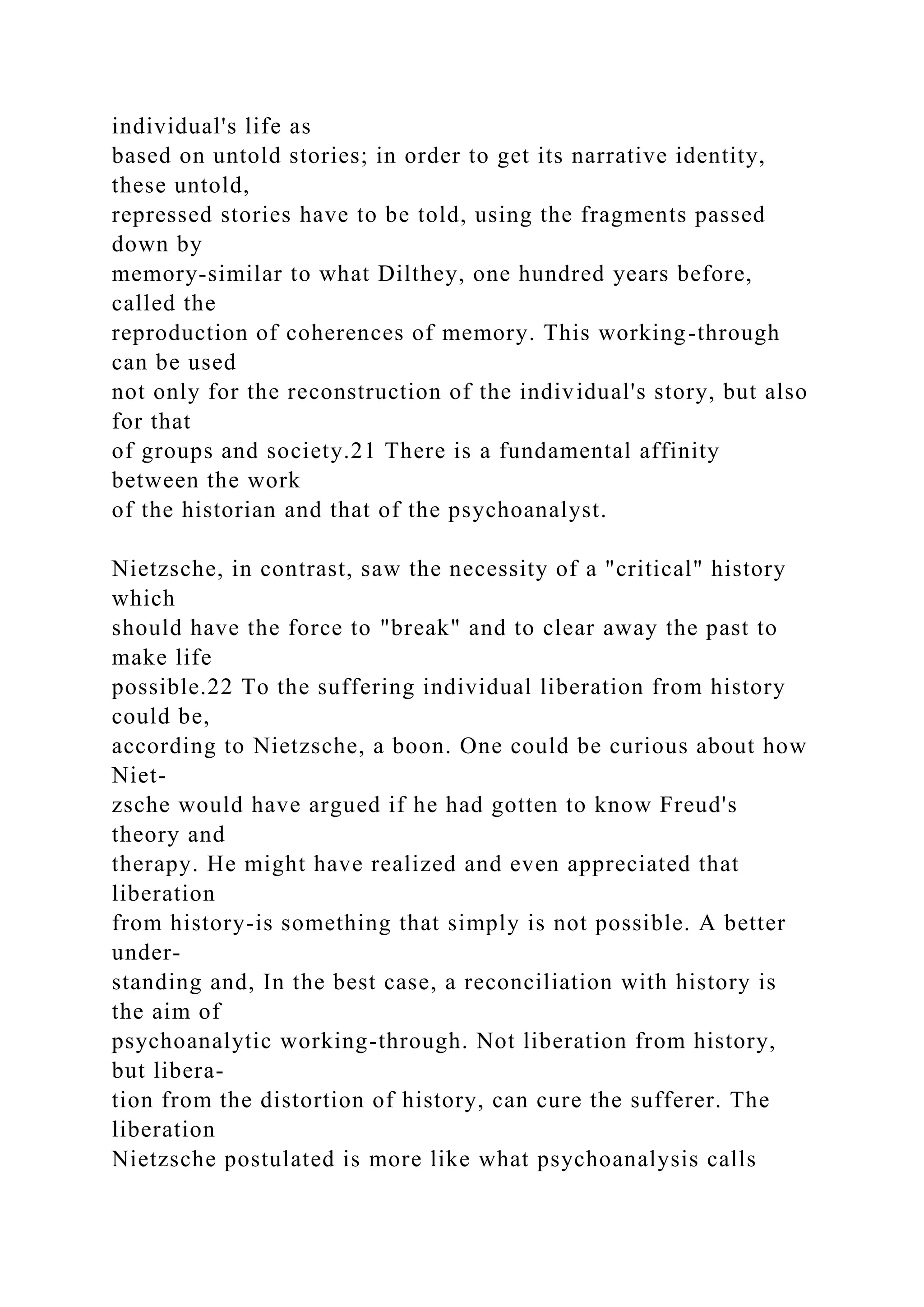
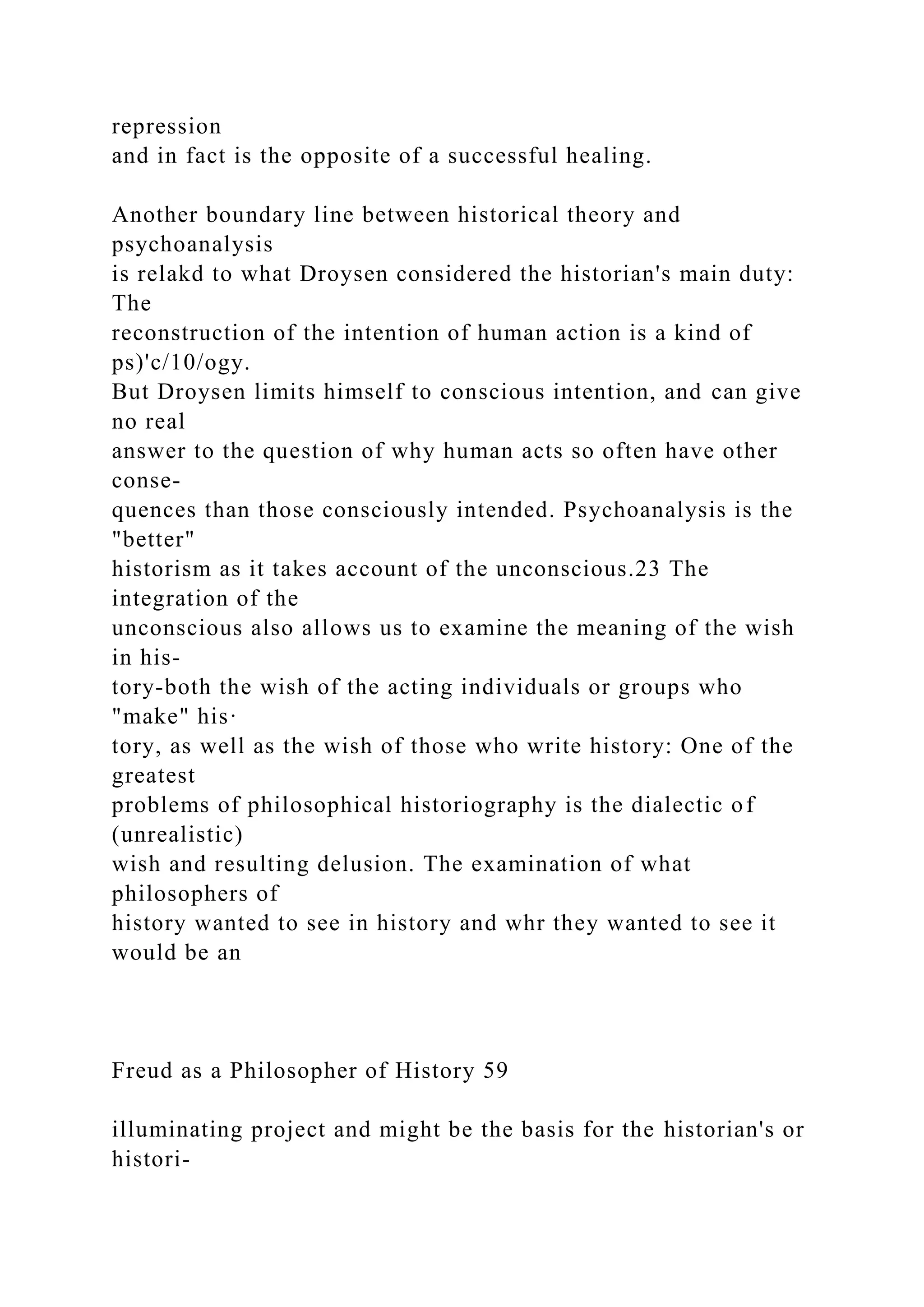



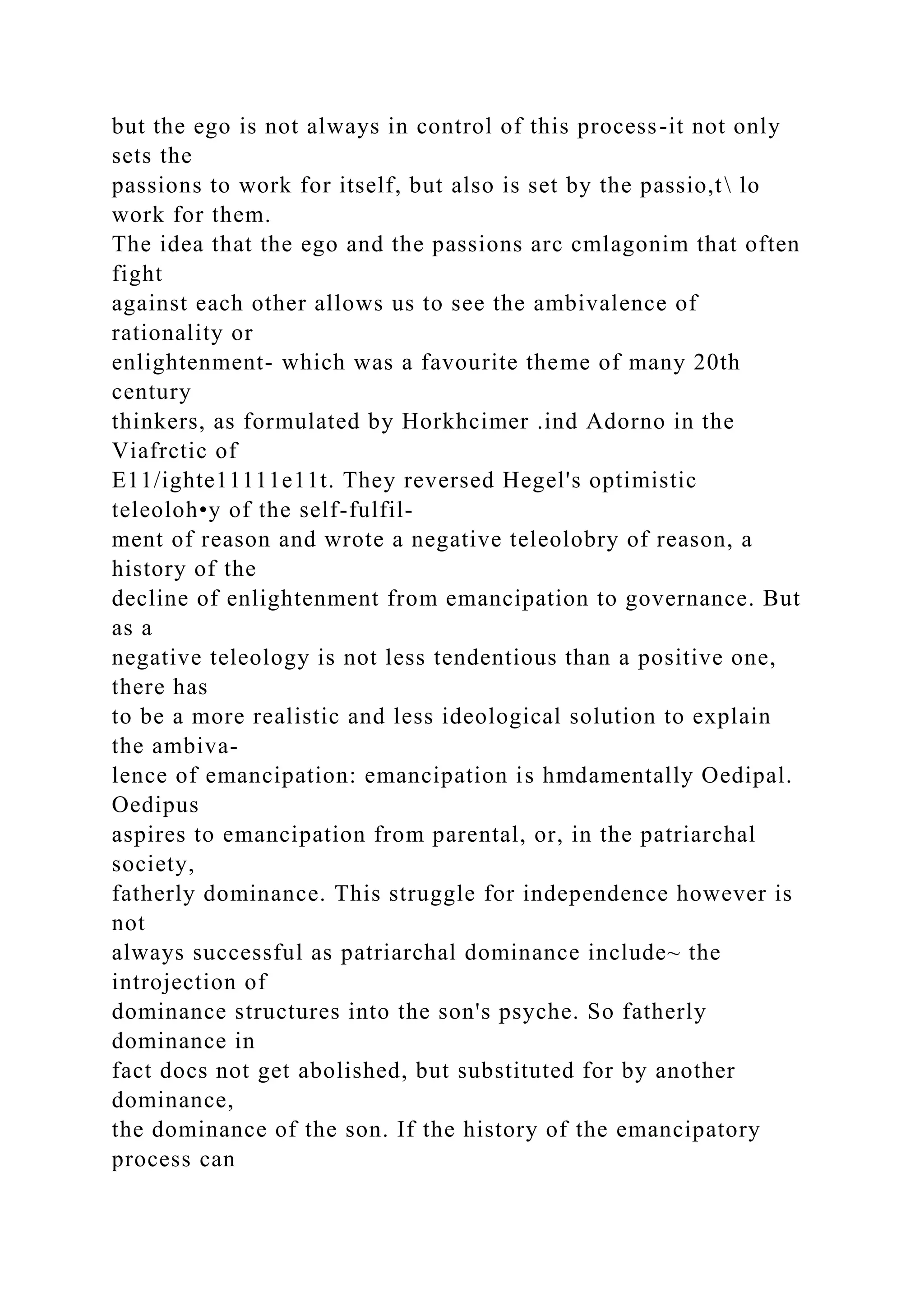
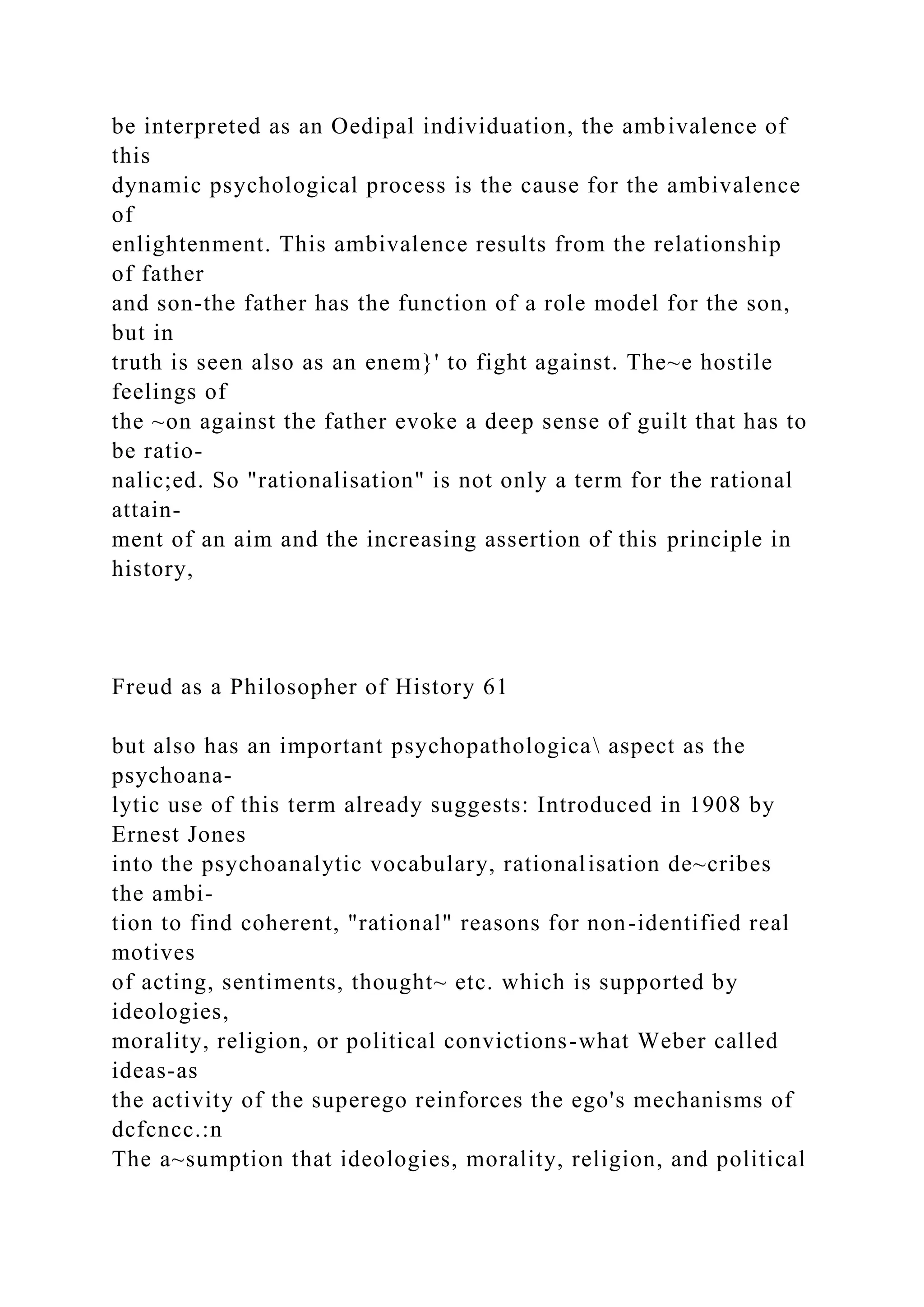
![convic-
tions could influence thinking would offer the possibility of
using psy-
choanalysis to help understand historically powerful ideas and
to finally
find an answer to the question of why history so often yields
other devel-
opments than those consciously intended.
DIALECTIC
for the thinkers of German idealism rationalisation was a
dialectic
process. I would like to focus on the parallels between I legel's
and Freud's
dialectic as Paul Ricoeur analysed them in his Essar 011
lnterprctation.3"'
Ricoeur seeks "to find in Freud an inverted image of Hegel":15
by comparing
their respective dialectics: Freud links, in the words of Ricoeur,
"a thema-
tized arcl1aeology of the unconscious to an unthematized
teleology of the
process of becoming conscious," while "Hegel links an explicit
teleology
of mind or spirit to an implicit archaeology of life and
desire."J6 Hegel
does not develop a phcnomenologv of the consciousness, but of
spirit, so
spirit is more than con'iciousness. Between "the I legelian
dialectic of m/11-
pliwted consciousness" and ''the process of consciousness that
develops in
the analytic relation there is a remarkable structural homology,"
'' [t]he
entire analytic relation can he reinterpreted as a dialectic of
consciousness,](https://image.slidesharecdn.com/directionslocatetheannotatedbibliographyandoutlineyou-230111131454-db06e2f3/75/DirectionsLocate-the-annotated-bibliography-and-outline-you-docx-72-2048.jpg)
![rlsing from life to self-consciousness, from the satisfaction of
desire to the
recognition of the other consciousncss."37 According to
Ricoeur, the rela-
tion between the analyst and the patient is similar to, the
Hegelian rela-
tion between master and slave. The Hegelian terms of
"satisfaction" and
''recognition" are of such great importance for psychoanalysis
that "we
can say that all the dramas psychoanalysis discovers are located
on the
path that leads from 'satisfaction' to ' recognition."'-18 Freud's
thought is,
like that of Hegel, fundamentally dialectical, especially in the
second
topogrnphy: ''The second topography is the dialeclic properly
so-called in
and through which arise the various instinctual dichotomies and
the
opposed pairs or instinctual vicissitudes l, .. ). The question of
the superego
lies at the origin of the dialectical situation [ ... ]. Furthermore,
the series of
pairs, ego-id, ego-superego, ego-world, which constitute these
dependent
62 Martin Kliiners
relations, are all presented, as in the Hegelian dialectic, as
master-slave
relationships that must be overcome."39 For Freud world
history, the rela-
tionship of human nature, cultural development and religion-are](https://image.slidesharecdn.com/directionslocatetheannotatedbibliographyandoutlineyou-230111131454-db06e2f3/75/DirectionsLocate-the-annotated-bibliography-and-outline-you-docx-73-2048.jpg)
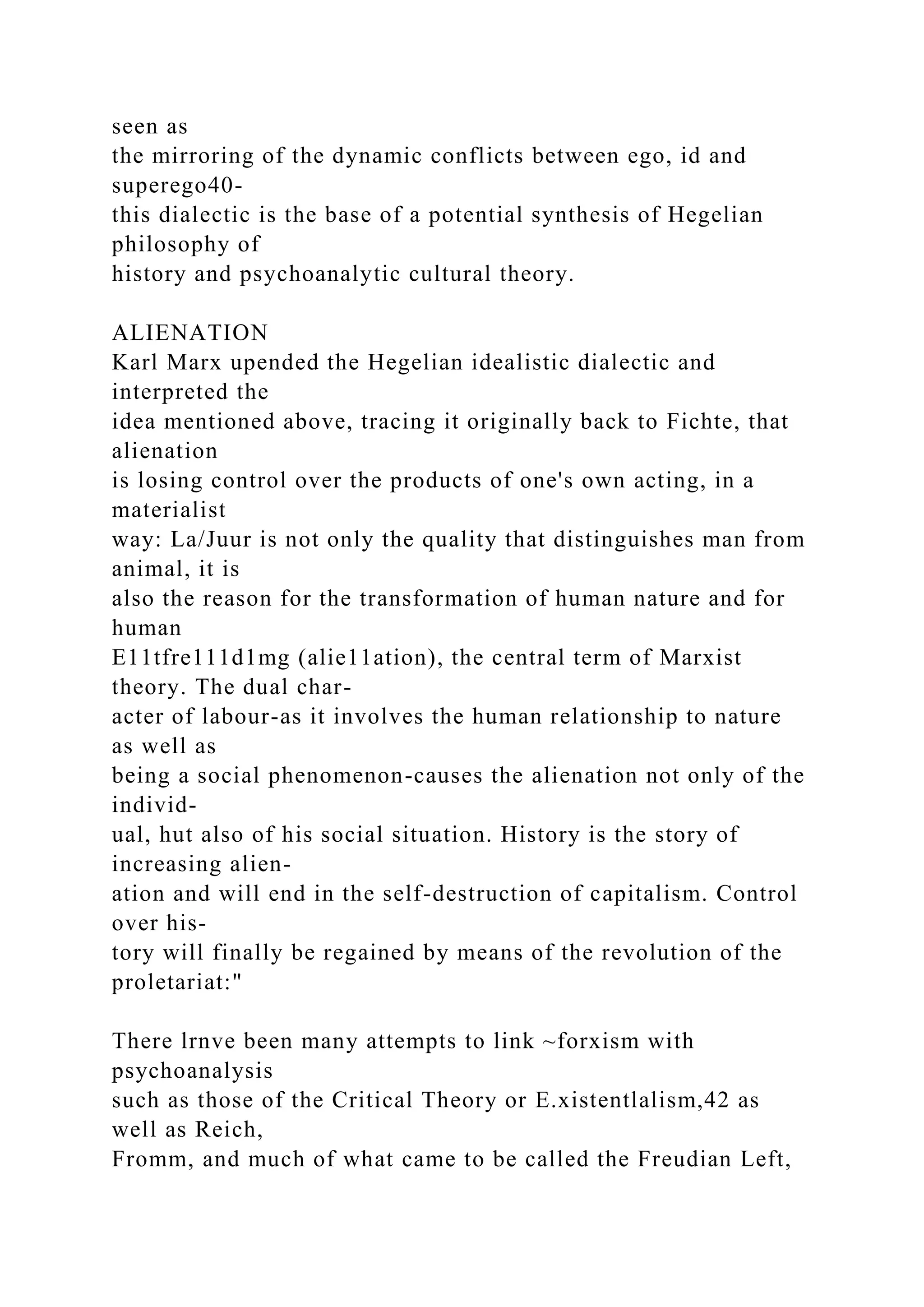
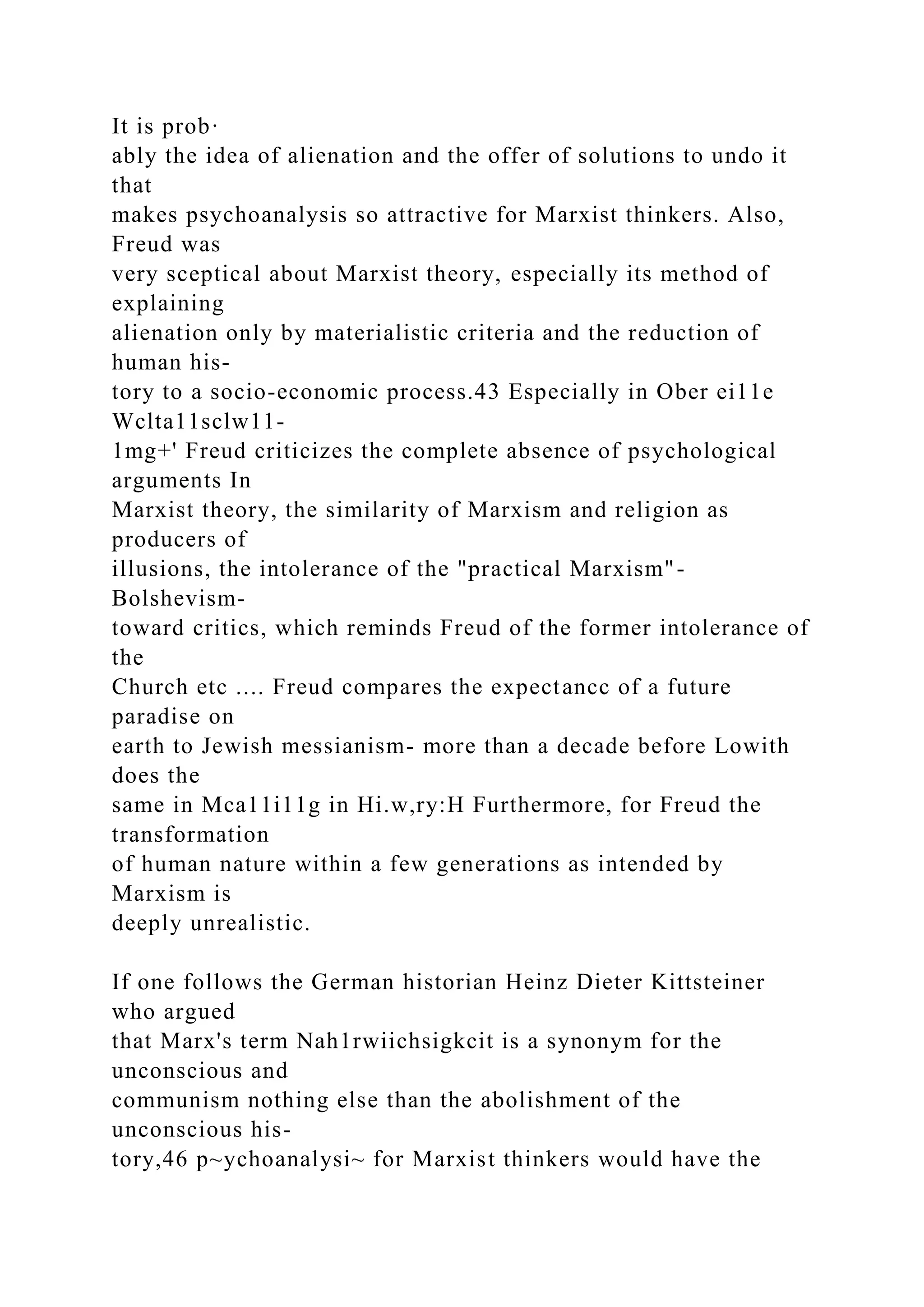

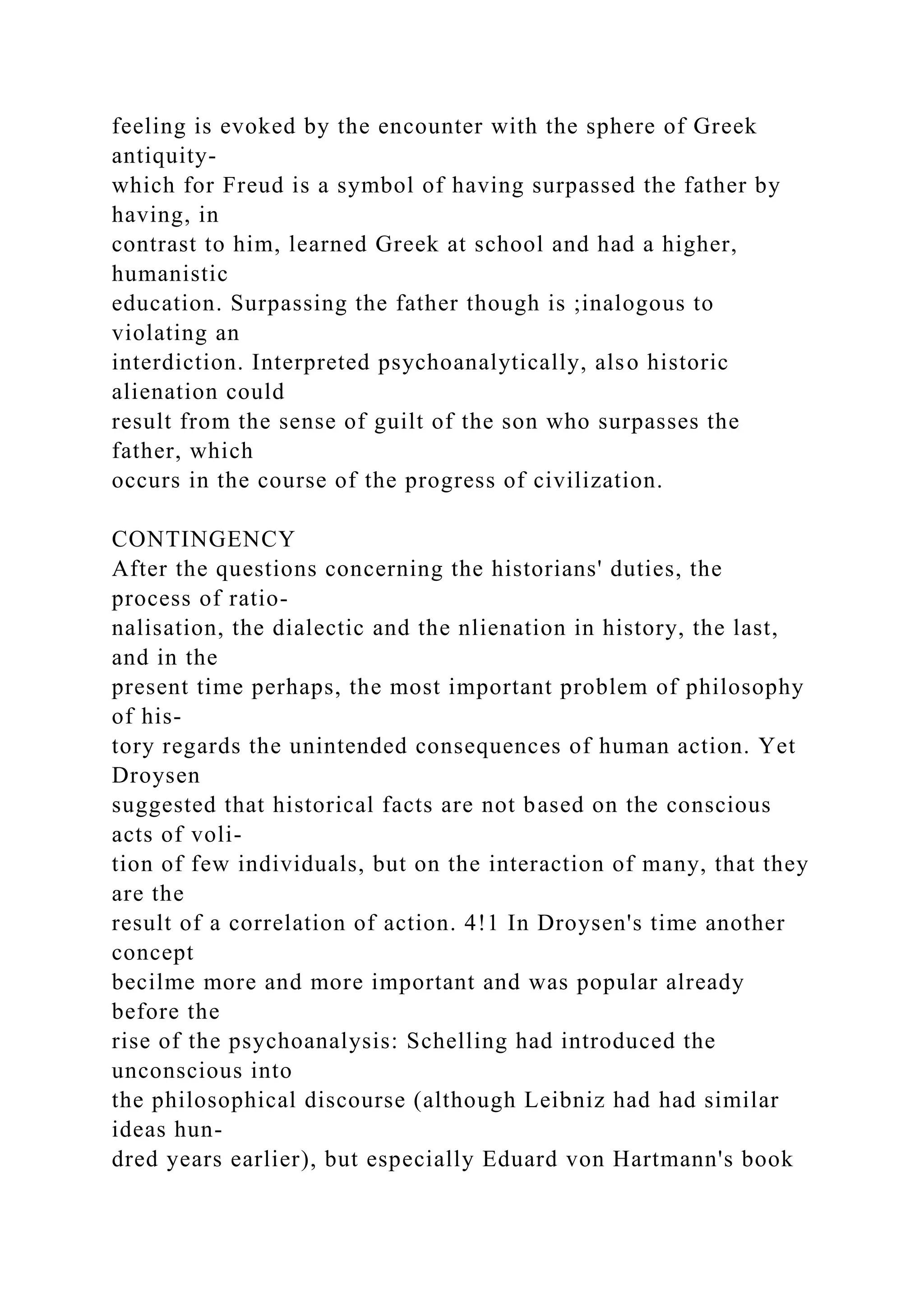
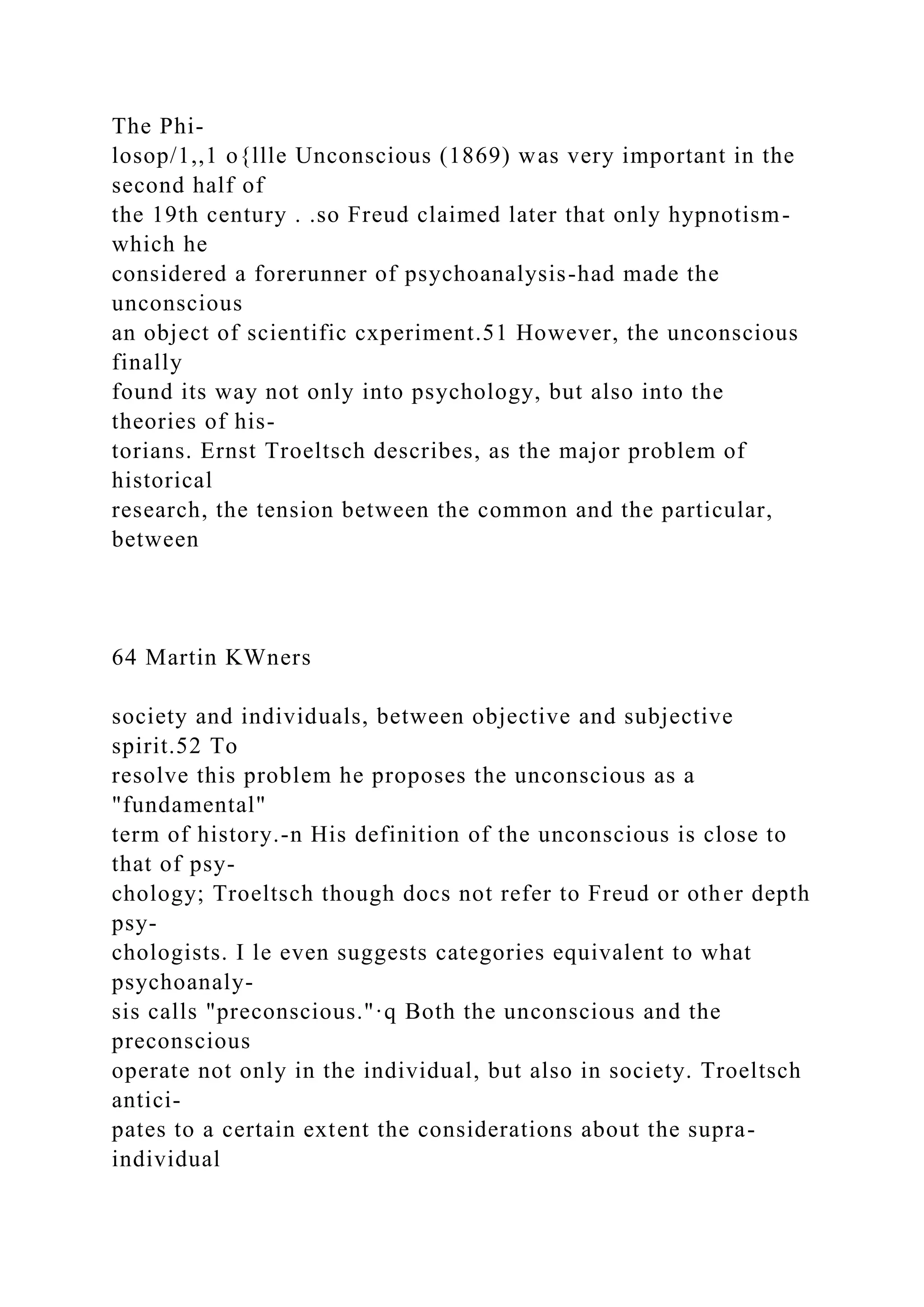
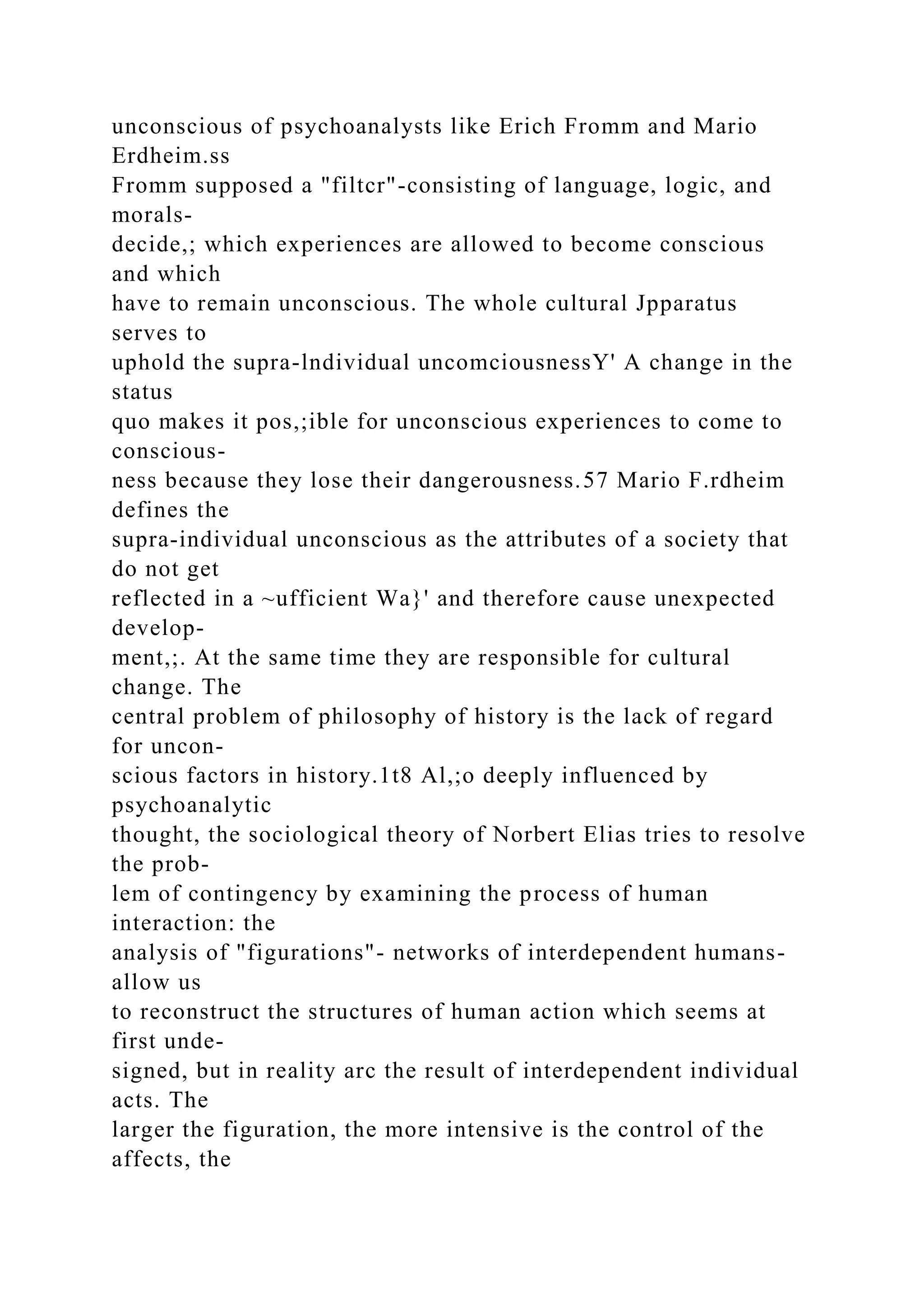
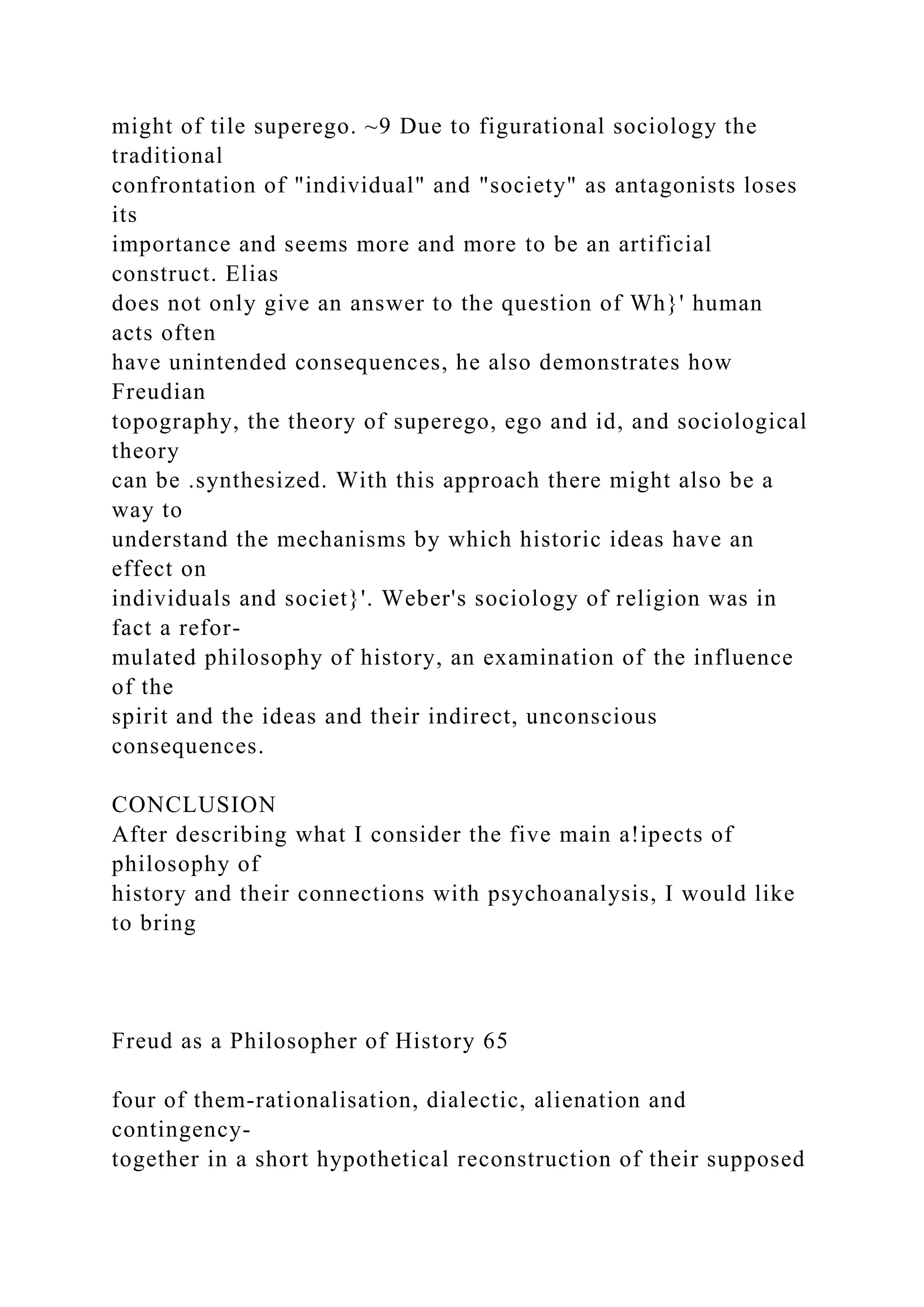

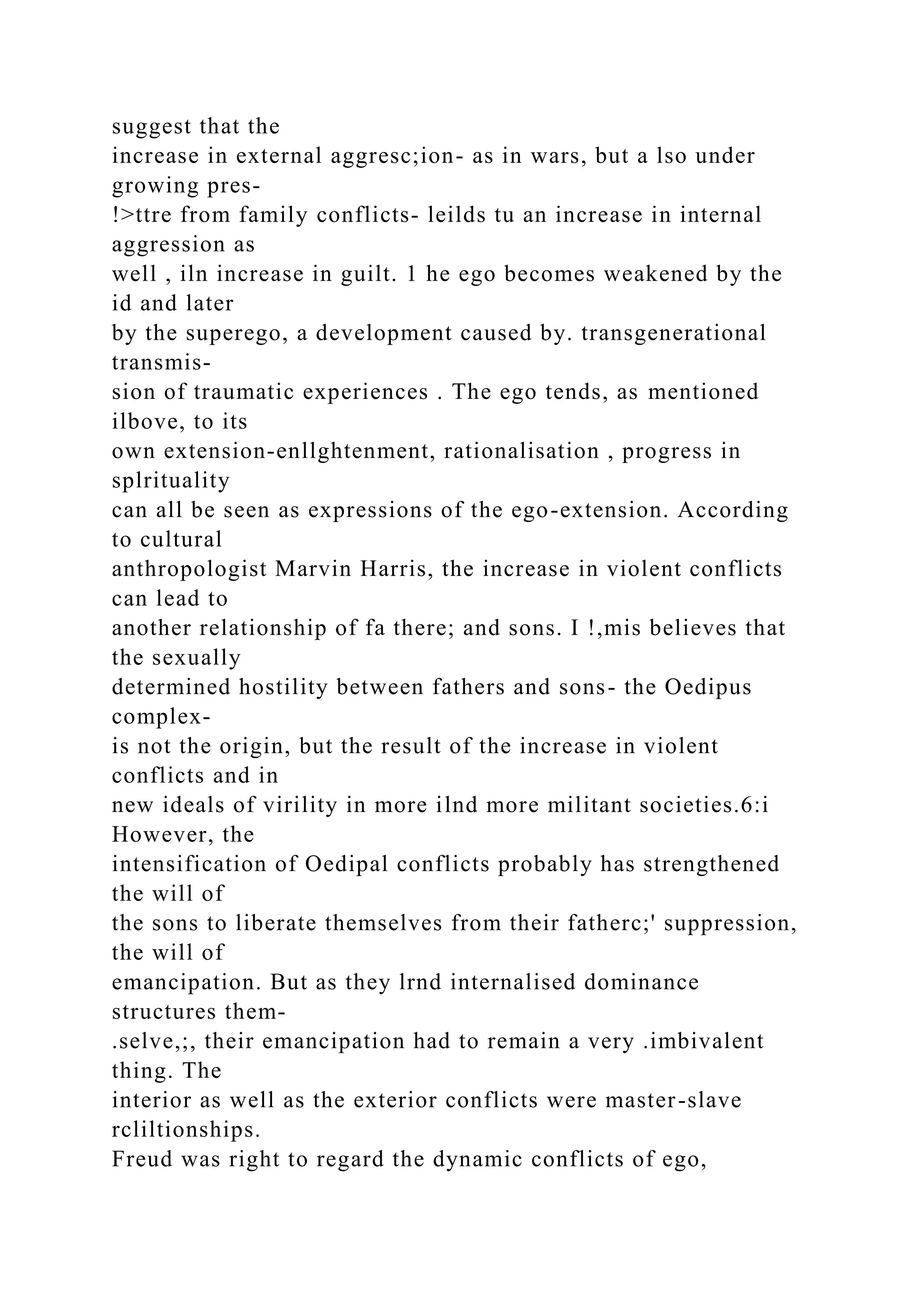
![superego and id as
the foundation of human history. The ad'antilge of
psychoanalytic "phi-
losophy of history" over the traditional philosophy of history is
based on
the fact that it takes into consideration the unconscious aspects
of
66 Martin Kli.iners
human acting-Psychoanalytic theory makes possible a more
realistic
image of Man and his history as both social and a natural being.
Martin Kliiners (bom 1979) studied History and Gen11m1
literature at Hum-
boldt University in Berlin. His />/JD thesi~ defense was in
Febmary 2012 at
Ruhr University Rochum (Faculty of Social Science). He car1
be reached at
111.kl [email protected] .tie.
BIBLIOGRAPHY
Angl'l1m, Emil. 19'Jl. Gescl1irht~f1hllom11hic. (Grumlkurs
l'hilu~ophlc, 15). Stuttgart [el
al.J : Kohlhammer.
llaumgartncr, I lam M. 1996. Plrilosophie c/er Ges(hiclrtc
11ar:h elem Ende tier Gcscllichtsphi-
/osuphit•. lk,i1erk1111gr11 zu111 .«egmwilrtiJCII Sta11c/ ,les
scsd1ic/1~f1lii/osophisc/1e11 Vc11kms. In:
Nagl-Docckal, Merta (editor). 1996. D,•r Si1111 drs
Histurlscllt'n. Ges(hichtsphilosoplrischc](https://image.slidesharecdn.com/directionslocatetheannotatedbibliographyandoutlineyou-230111131454-db06e2f3/75/DirectionsLocate-the-annotated-bibliography-and-outline-you-docx-83-2048.jpg)

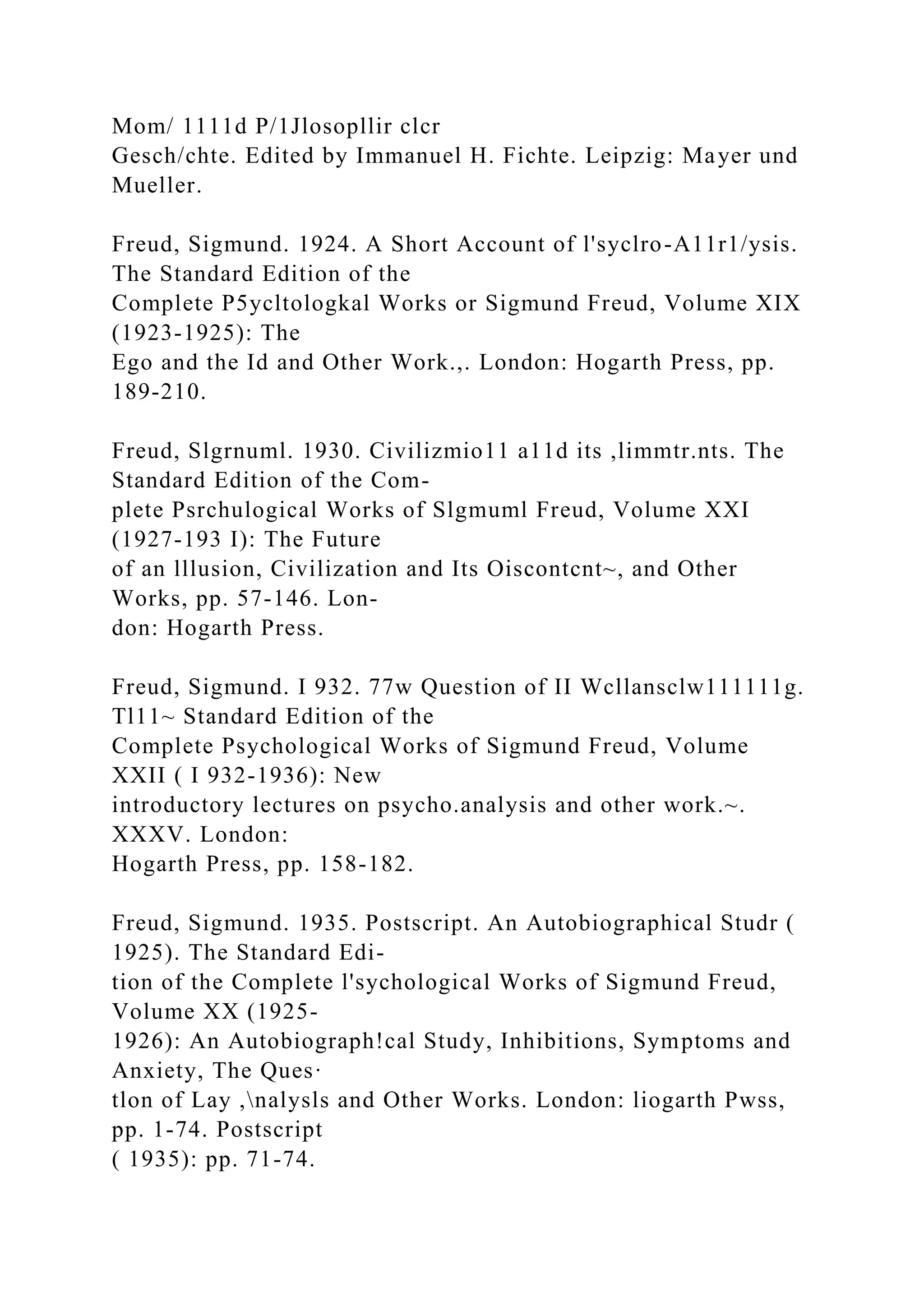
![Freud as a Philosopher of History 67
I-rem.I , Sii,:111u11d. I 936 .. I Dist11r/Jm1cc o{ .f,•11100·
011 tile Auopoli~. rhc St i1mh1ul Edltion
of tlir Complete Psycholog[cal Work.~ of Sigmund Freud,
Volume XXII ,(1932-
1936): New Introductory Lectures on Psycho-Analysis and
Other Works. London:
I loHarth l're~s. pp. 237-248.
Freud, Sigmund. 1939. ,vfcm!S and Mo11othe'i.m1. Translateu
from the German hy Katherine
Jon,~. London: Hogarth Press.
Fromm, Eric.h. 1990. Die E11t,ieck1mx des
.~cscli.fflwfUiclrr11 U11bew11{3ten. Lur N1'11bestim-
1111mx der l'syc/10a11alrsc. Edited b}' Rainer Funk, (Schriften
aus dem Nat hlaB, 3).
WeJnhelm: llclt1"
Gehlen, 1rnold. 1952/53. Ober dlc! Gc/111rt der Frri/1cil ,ms
cler E11tfremd111rg. In: Arc/Jiv filr
Rechts-1md Sozlalplrilosophlc 40, pp. 338-35],
l,i}ddc, <"iunter. 1999. Tmditio11sli11ir11 d1•s
uU11/Jew11[1ten*, Schope11ha11er, Nietz.~ri,,•, Fn'lul.
·1 (!bingen: Ed. Diskord.
1 larris, Mal"'•in. 1989. K11/turm1t/1mpolosit•. Ei11
Lel1rh11cl1 . Translated hy Sylvia M. Schnm•
hurg-~cherff. Frankfurt/M./New York: Campus (based on:
Harris, Marvin. 1987.
C11/t11ml m1thmpolog,-. Second edition. New York [ct al.) : 1-](https://image.slidesharecdn.com/directionslocatetheannotatedbibliographyandoutlineyou-230111131454-db06e2f3/75/DirectionsLocate-the-annotated-bibliography-and-outline-you-docx-86-2048.jpg)

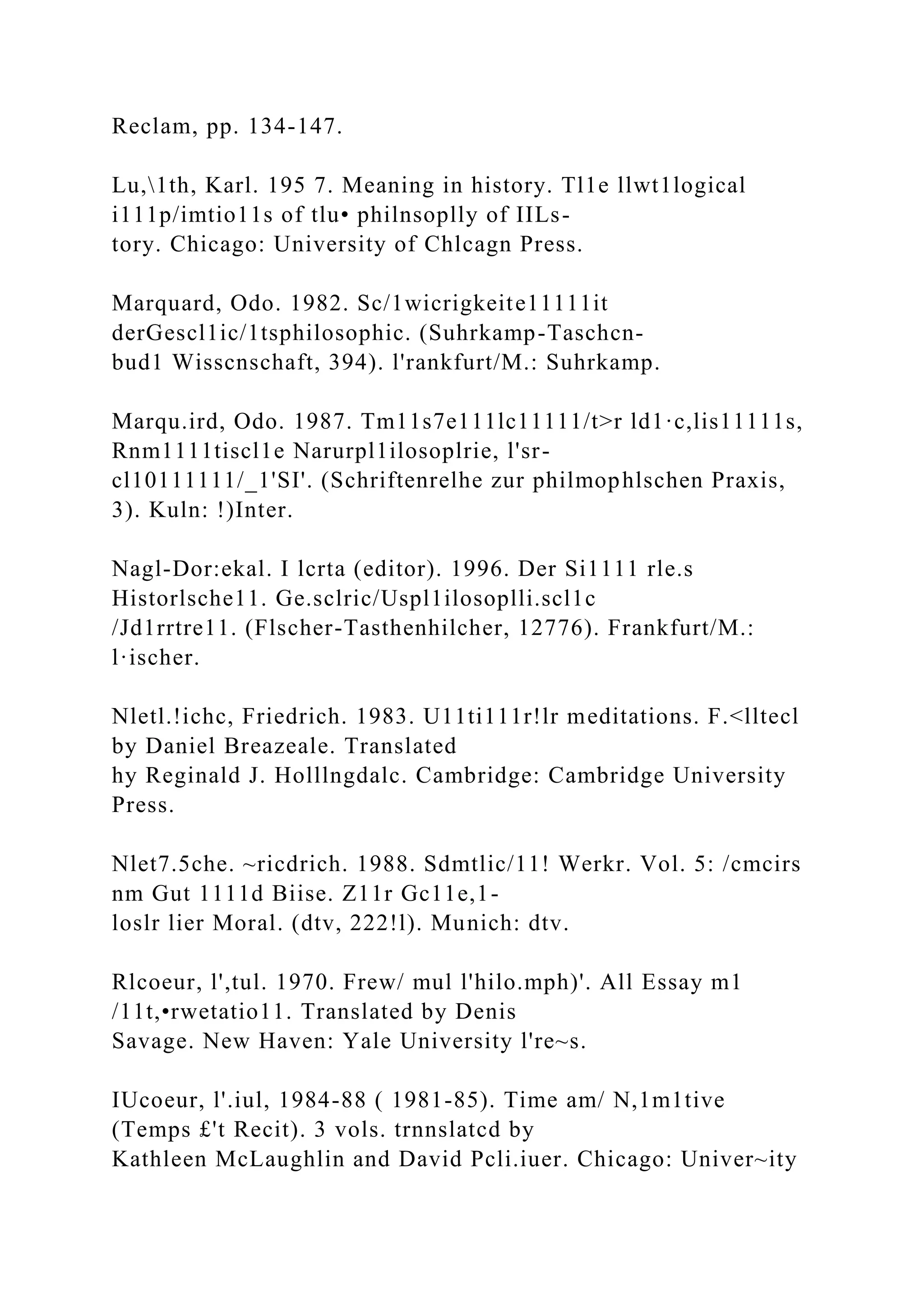
![or Chicago Pre5S.
68 Martin Kliiners
Rohhcck, Johannes. 2004. G1°scl11chtsphilosoplrir. z11r
Ei11fiUm111s. (Zur Elnfilhrung, 302).
Hamburg: Junius.
Ril)en, Jorn ,Uld Straub, Jtirgen (editors). 1998. Die d1111kle
Spur dcr 'e,sanJenheit. /1'-
r/romra/} ti~clle Z11gd11ge tum Gescl1iclrtsbew11{itst'i11,
('iuhrkamp. I aschcnbuch Wl~sen-
schaft, 1403). Frankfurt/ M.: Suhrkamp.
Rusen, Jcrn and Straub, J1irgen (L'llilors). 2010. Dark /raws of
tlw f'"St. l'syclwmralysis a///l
historical thi11k/11g. New York let al .]: Herghahn Books. (I
his translation do~ not
contain all the articles of the German original.)
Straub, Jurgen. 1998. Psych0<11111l>'$I', Geschichtc 1111</
Gesclricht.nl'lu e,,schaft. Eine Ei11fil/1
nms i11 s,1:5tematisc/1er ,bsicht. In: Rusen, J(lrn and Straub,
Jurgen fe<litor,;). 1998. Die
tl1111klr .'ip11r dcr Verga11gc11IIL'it. l'~>·clwa11al>•lische
Z11gii11.~c 111111 G,•sc/1iclrts/Je'11'11fltsei11,
lSuhrl,.amp-TaschcnbuLl1 Wl,cmL11art, 1403). i:r,mkfurt/1'I.
Suhrkamp, pp. 12-32.
·1 <.-ssar, Hans 2008. Die l'roc/11J..tic11 Jt~c/fschaftllchcr
U11/x'll'llutl1eit. l.i11e 11,111e AlllhmpologiL'
Spmd1plli/11so11lrie, Erkm11t11istlreorie mu/
Gesel/fc/m(nphilasoplrit·. I lamhurg: Dlplomlt.1](https://image.slidesharecdn.com/directionslocatetheannotatedbibliographyandoutlineyou-230111131454-db06e2f3/75/DirectionsLocate-the-annotated-bibliography-and-outline-you-docx-89-2048.jpg)
![I roelt~cl1, Ernst. J 922. Gesmmm IIC! Schrif1111. Vol. 3: Der
I fistorfm111s rmtl 11'i11e l'mblemr,
Erst,•s (d,uigcs) B11clr. Dm luJisc Irr l'mhlmr tlrr
GcS<l1iclrtsplrilosophic. Tiiblngen: ~ lol ,r.
Voltaire, I ranois-Marie. 196.t £rn1/ s11r le~ 1111c11rs et l
'c•s11rit ,It's 1111tiom ct .mr /i•s pri11ci-
1111m {crits ,ii! l'ilistoire ,lep11l~ C'harlewagm• imqu',i Louis
XIII 1·.dited by Rene Pomeau.
Vol. 2. l'aris: Garnier.
W~b,r, Max 1920. Ges(l111111c•ltt' Au(Jiitte z11r
Rl!ligiomsotiologie. Vu/. 1: lJic protesta11tisc/1r
Ethik 111111,h'r Geist ties K1111italism11s Ttibingcn: Mohr.
Wehler, I lan~-t:lrlch 1971. GeKhicl,tc 111ul
l'syc/111111111/rsr. (Pocket, 25). Kmn: Kicpen-
heuer & Witsch.
White, llayden. 19R7. Tire C<mtc11t of tlw {arm. Nam1ti1•r
,li.mmrsc mul lristorical reprcs1•11.
tatimt. Baltimore, Md [1•1 al.] : Johns I lopkins University
Press.
Zuckermann, Moshe (edltor), 2004: Grschiclrtc 11ml
l'~,1'/1omwfrse. ( lei ,·iver Jahrhuch fiir
deutsche Leschilhte, 32). Gi>ttlngen: Wallstcin.
ENDNOTES
1. Tills article gives an outline or the main results or my PhD
thesis that has hccn
published In 201.'l (Kitiners, Martin. 201:.i.
Gescl1ichtfflhilosop/1ic' 1111d l'syrlwa1111l}'St'.
GOttingen- ' & It unlpress). I tried to use original English texts
or translations](https://image.slidesharecdn.com/directionslocatetheannotatedbibliographyandoutlineyou-230111131454-db06e2f3/75/DirectionsLocate-the-annotated-bibliography-and-outline-you-docx-90-2048.jpg)
![whcrcvu possible.
2. Angchm, Fmll. 1991. G1·.sd1ichts11/1/loso1•ltie..
(Gmndi..urs !'hilosophlc, 15). Stuttgart let
al.) ; Koltlhamrncr, p. ulJ. One year before, In 176-1, Volt,1irc
used the expression
"philmopltie de l'hlstulre" for the first time ln a wcenslon ur
Hume's Camplt•tc His-
torr 11/ £11.~lmul (Nagl-Ducek,11, Herta (editor). 1996. Der
Simi dt•s Historisclw11.
C iC' ~cltic/11 .spltilo.~opltisrlte Dcb,1t tcn. (Fi sci ll.'r:
rachcnlJ1lcher, 12 776). Frankf urt/"t>I..
Fischer, p. 7 ).
3. Voltaire, Franoi~-Marle. 196J Emu s11r J,s 1111t·11rs et
l't'Sf'rit dc!s 11atium et .rnr Ir.
pri11cipaw,: fait~ ,IL' l'lristaire depuls Clwrlemag11e j11sq11',i
I.auir }(Ill. Edited hy Rene
Pomcau. lol. 2, Paci~. Garnier, p. 800.
-1. Rohbc<.k, Johannes. 200.J. Geschichtsplrilvsophie lllr
Ei11fiiltn111g. (Zur t::lnfilhrung,
J02). l·famburg: Junius, p. 77. See also Droysen, Johann G.
1977. Historik. cdltcd by
Peter Leyh. Stuttgart Uad Cnnnstatt: l'ron11nann-Mol1boog, p.
424.
'i. Oihhc)', Wllhelm. 2002. Tire fvmwtio11 of the ltfatorirnl
1mr/1/ in thr h11111a11 .sci1•11cc•.s.
Fdited, with Jn introduction, hy Rudolr ,, Mnkl.:rcel and Frft
hJof Rodi. l'rlnceton,
N.J.: Princeton University Prcs, pp. 2]7-23!!.
6. At nearly the same time Nicttsche saw history .is a kind of
iifi.>'~ servant whose v:iiuc
resulted only In it, meaning for ltfo. l'rcoccupatlon with history](https://image.slidesharecdn.com/directionslocatetheannotatedbibliographyandoutlineyou-230111131454-db06e2f3/75/DirectionsLocate-the-annotated-bibliography-and-outline-you-docx-91-2048.jpg)
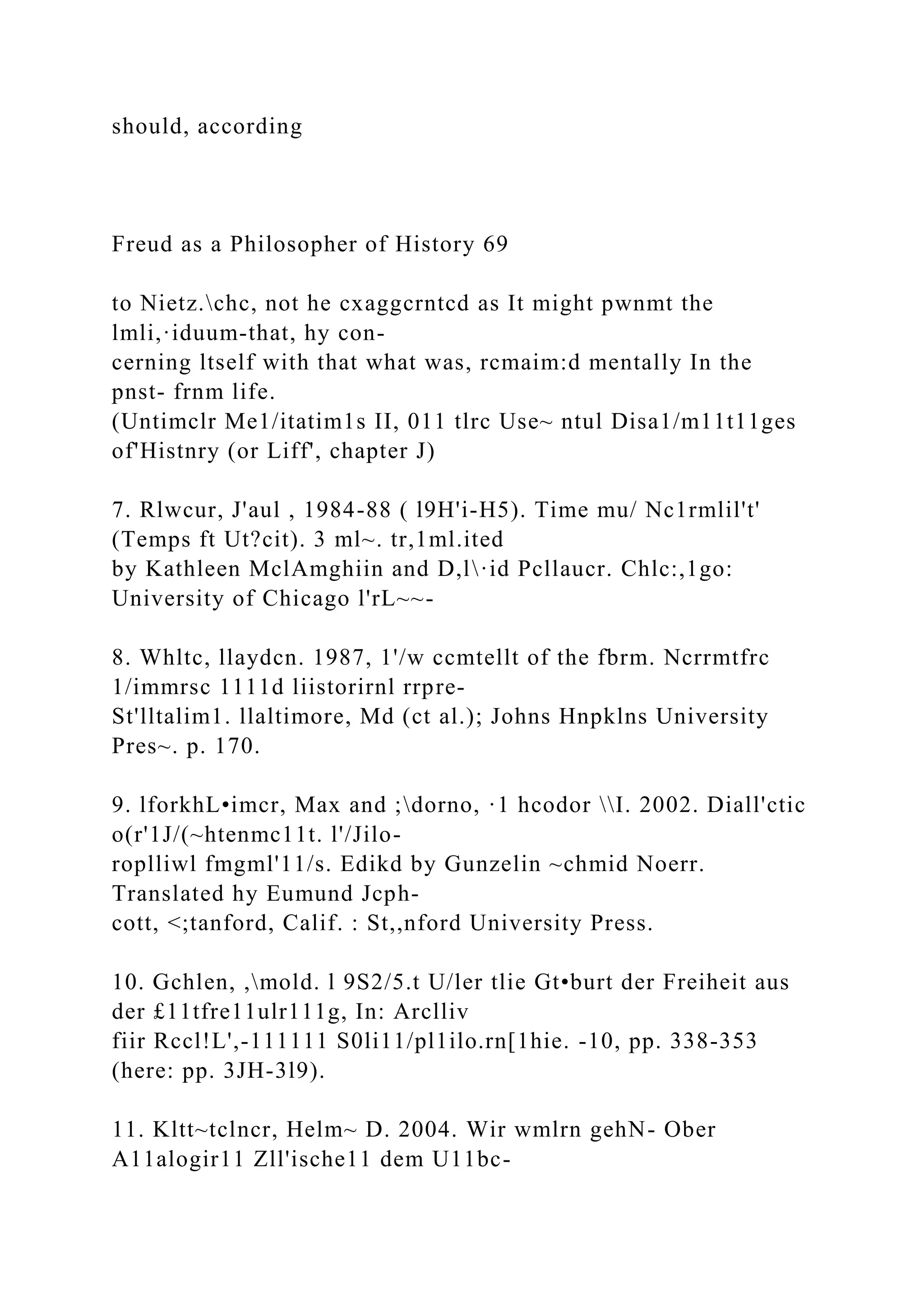
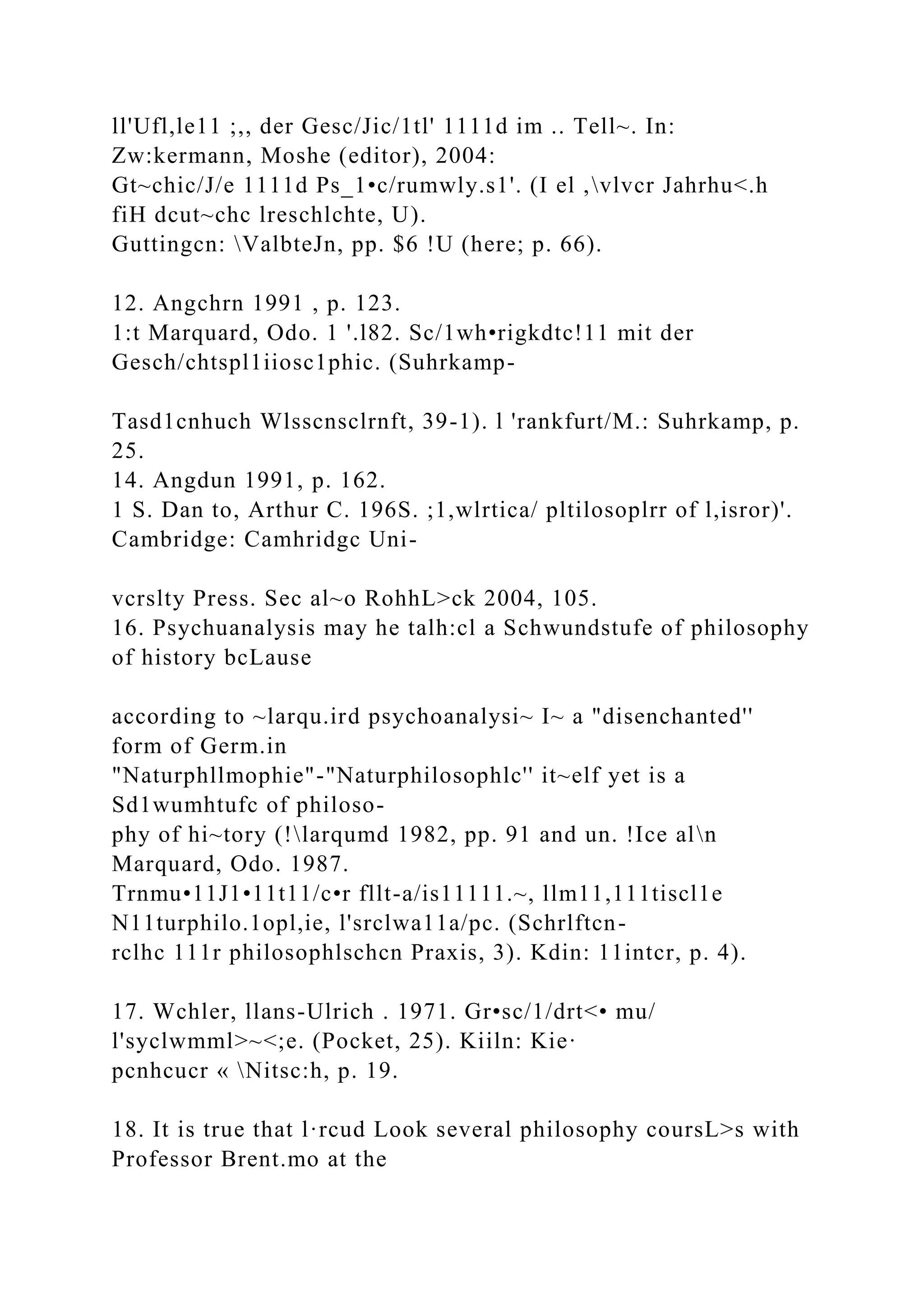
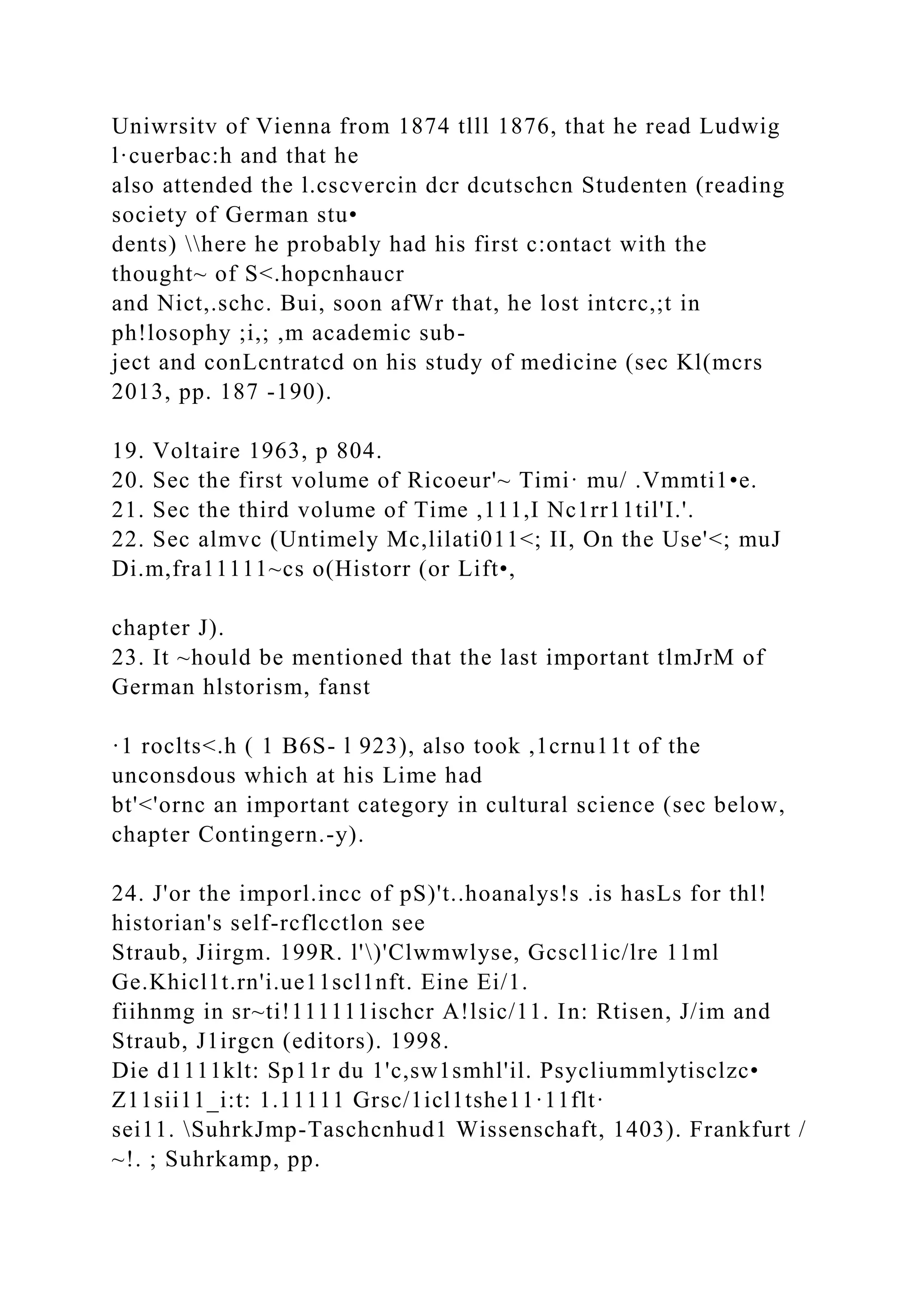
![12·32 (here: pp. ]0-31 ). An l·nglish tramlatJon of thl artlclc
t..an hL· found at
70 Martin Kluners
Rusen, Jorn and Straub, Jurgen (editors). 2010. Dark traces of
the past. Psrrlwanalysis
a111f historical thi11ki11s. New York [et al.): Uerghahn Hooks
2~. Angchrn 1991. p. 72.
26. Baumgartner, Hans M. 1996. Phllosophie clcr G,•schic/1te
1u,cl1 elem £111/e der
Gcschid1tsphilosophic. I1emerk1mge11 zu111 grge11wifrtigc,1
Stand des gesc/1ichtsp/rilosophl·
sclrm Denkens. In: Nagl-Docekal, Herta (editor). 1996. Der
Si1111 ties Historiscl1c11.
Gcsclrlchtsphllo.mphlsche Dcbatte,1. (Fischer-TaschenbOchcr,
12776). Frankfurt/M.:
Fischer, pp. 151-172 (here: p. 154). My translation. ilso Hchte
wrote that the order
of the world and so equally that of natural processes ls rational.
Where reason can-
not yet be effocllve by the aid of llbf!rt}, it is effectlvf! as
natural law, as "dark
instinct" (Fichte, Johann G. 1845. Siimt/iclU' Werkc. Vol. 7:
L11r /'olitik, Moral mrd
l'hilomplrlc ,/er Ge~c/1/clttc. hilted by Immanuel H Hchtc.
LL!p,di;- ~foyer und Muel-
ler, pp. 8-9).
27. l·reud, ~lgmund. 1939. Moses a11d Monotlrcism. 'Iramlated
from the German by
Katherine Jones. London: Hogarth Press, pp. 178· 179.](https://image.slidesharecdn.com/directionslocatetheannotatedbibliographyandoutlineyou-230111131454-db06e2f3/75/DirectionsLocate-the-annotated-bibliography-and-outline-you-docx-95-2048.jpg)
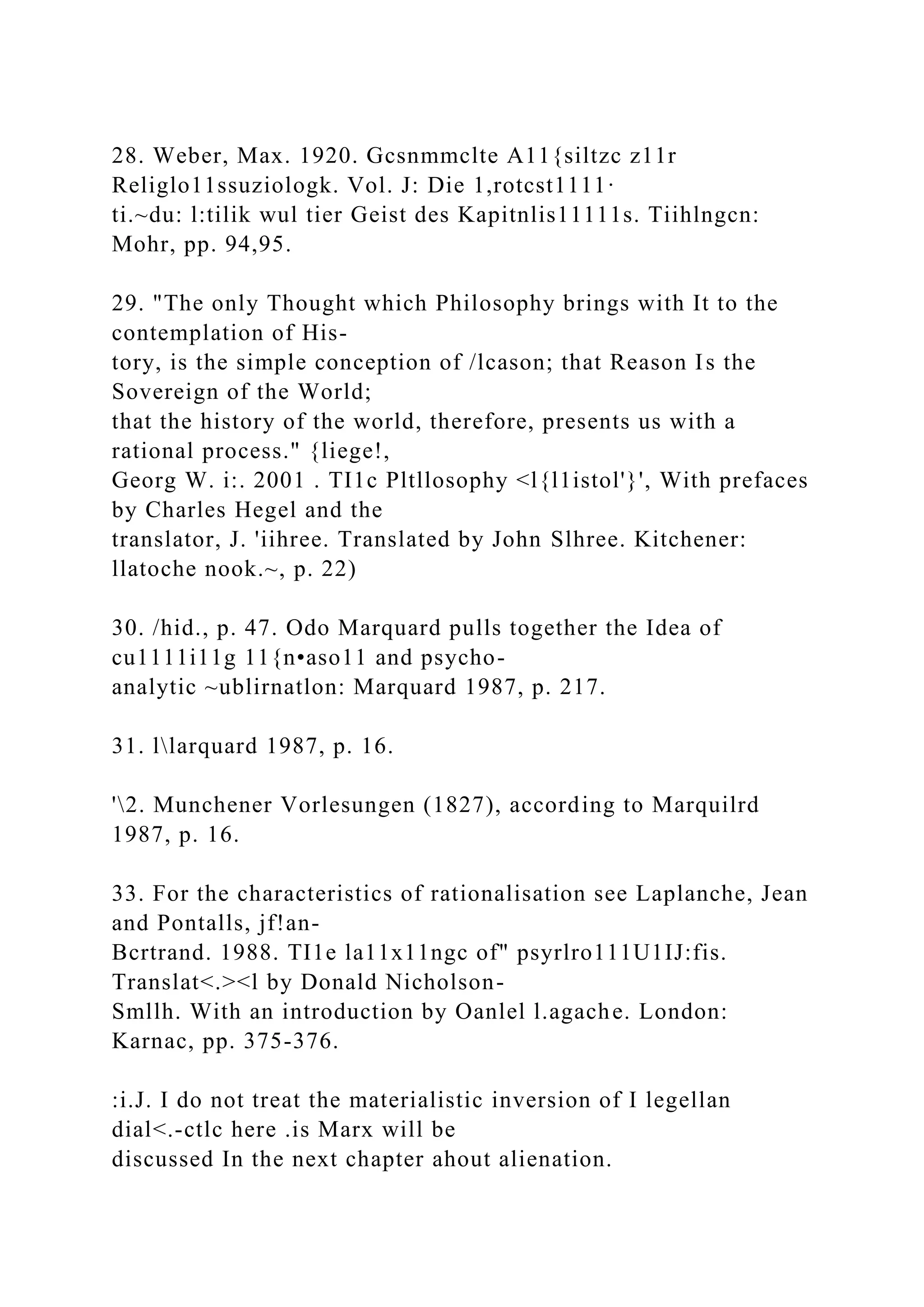
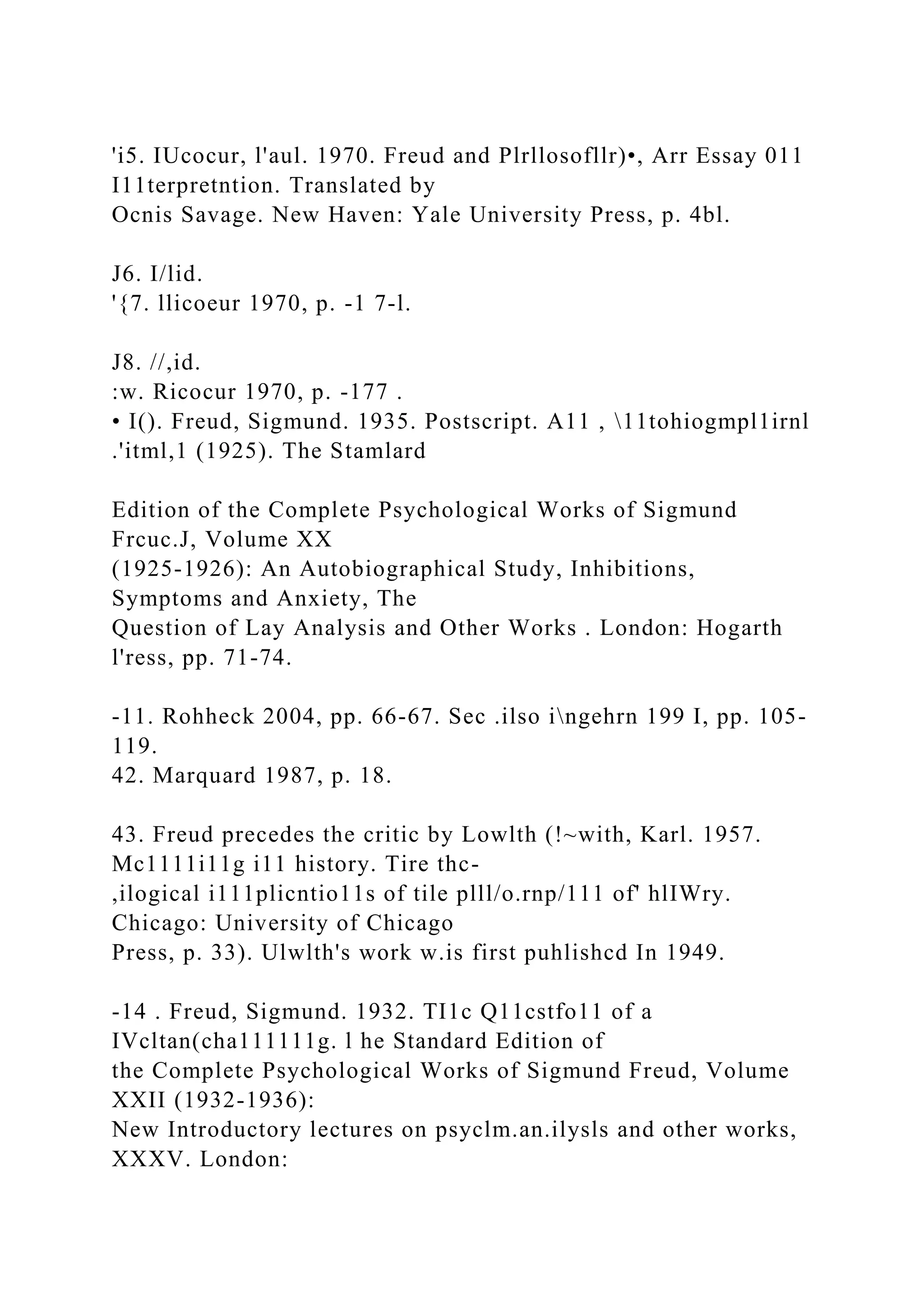
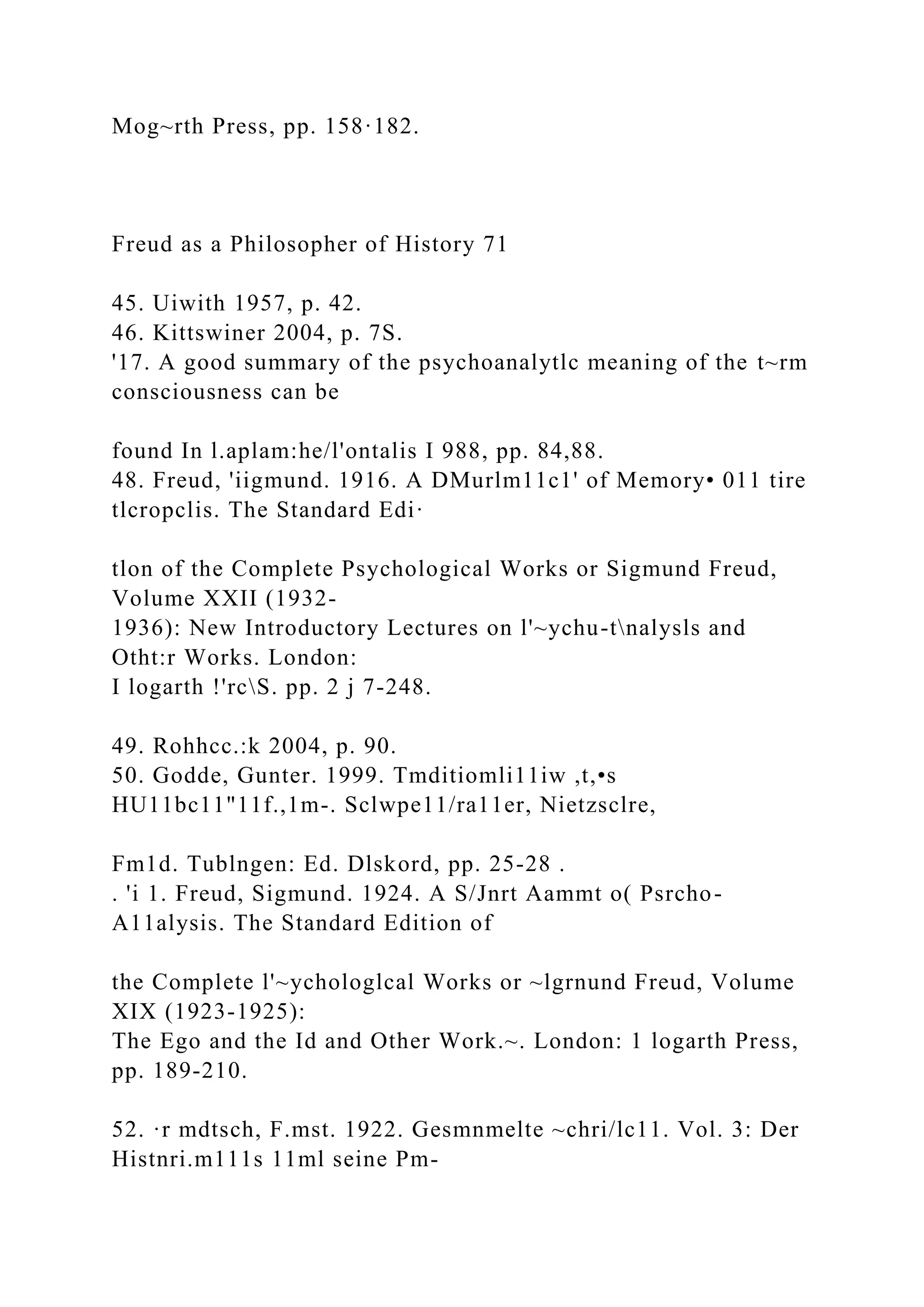

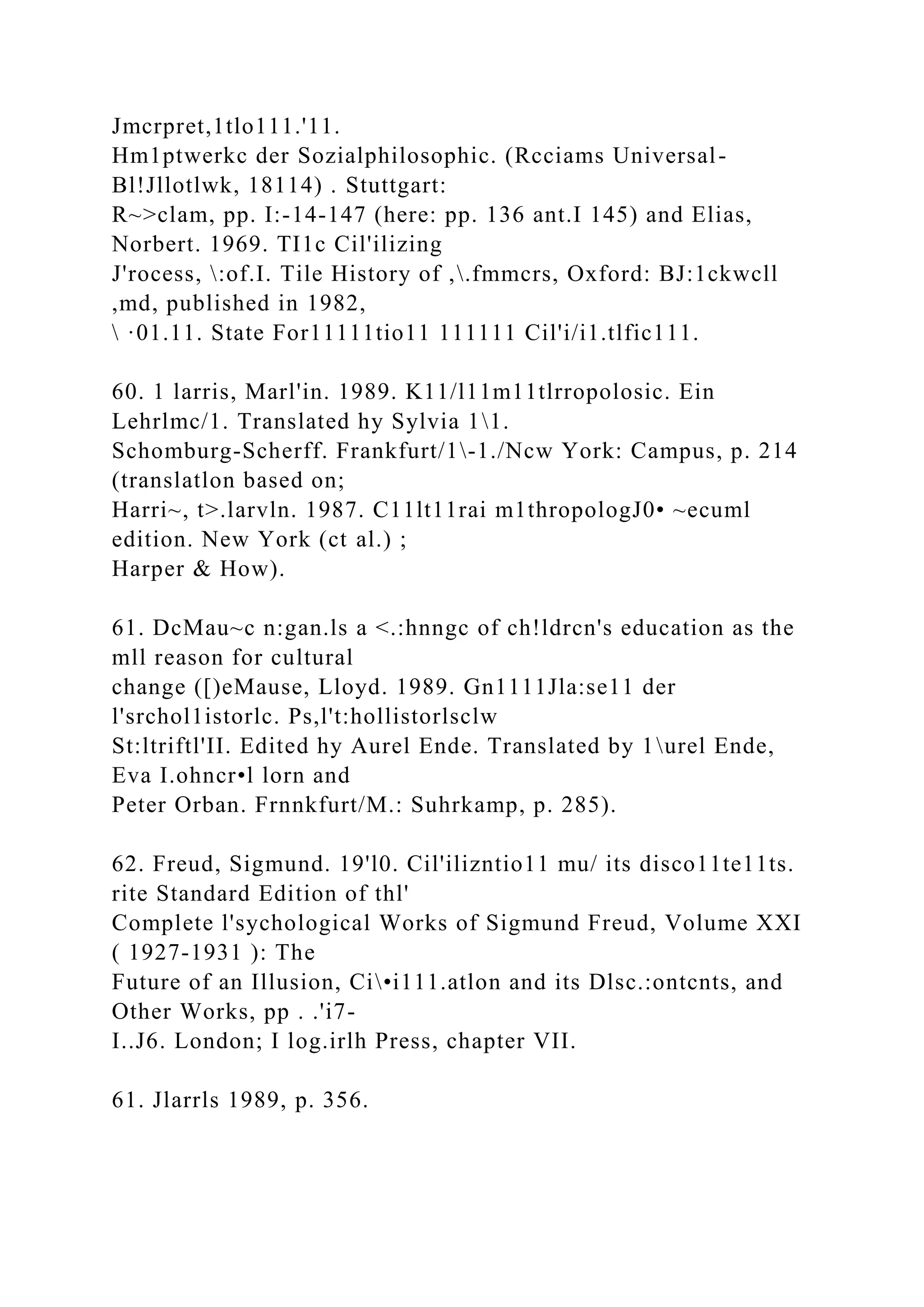
![.,
r :=
~ i
~.J:.
~]
~.§
~ ~
"'=s :!'.
f "::
~ .£
- ,
Psychotherapy Volume 38/Spring 2001/Number I
REVIVING FREUD'S VISION OF A PSYCHOANALYTIC
SCIENCE: IMPLICATIONS FOR CLINICAL
TRAINING AND EDUCATION
ALEXANDERJ. SCHUT LOUIS G. CASTONGUAY
Pennsylvania State University
Traditional assumptions about the
analytic encounter have contributed to
the detachment of psychoanalytic
psychotherapy from the empirical
movement that has dominated
mainstream academic clinical
psychology. However, recent research
findings on the process and mechanisms
of change within psychoanalytic forms of
treatment now provide much needed](https://image.slidesharecdn.com/directionslocatetheannotatedbibliographyandoutlineyou-230111131454-db06e2f3/75/DirectionsLocate-the-annotated-bibliography-and-outline-you-docx-101-2048.jpg)
![empirical support for some of the basic
tenets of psychoanalytic theory and
practice, challenge long-standing
notions regarding the link between
therapeutic technique and clinical
improvement, and suggel·t that factors
once believed to be unique to
psychoanalytic psychotherapy might be
playing a crucial role in the promotion
of change in other therapeutic
modalities. The implications of these
process research findings for the present
state and future of clinical training and
education are provided.
Preparation of lhis manuscripl was supported in pan by
Nalional lns1i1u1e of Menial Heallh Research Granc MH·
SR593.
An earlier version of chis article was submined by lhc first
au1hor and awarded lirsl prize in 1999 for the American Psy-
chological Association's Division 29 S1uden1 Paper Campell·
lion on Education and Training.
Correspondence regarding this article should be addressed
to Aleunder J. Schue , Department of Psychology. Pcnnsylva.
nia S1a1e University, 429 Moore Building, Universicy Park.
PA 16802. E-mail: [email protected]
40
Although Freud expressed his wish for a scien-
tifically informed psychoanalytic psychotherapy
over 100 years ago (see Westen, 1998), a survey
of modem-day practitioners indicates that the
bevy of empirical findings generated from aca-
demic psychology (e.g . , psychotherapy research)](https://image.slidesharecdn.com/directionslocatetheannotatedbibliographyandoutlineyou-230111131454-db06e2f3/75/DirectionsLocate-the-annotated-bibliography-and-outline-you-docx-102-2048.jpg)
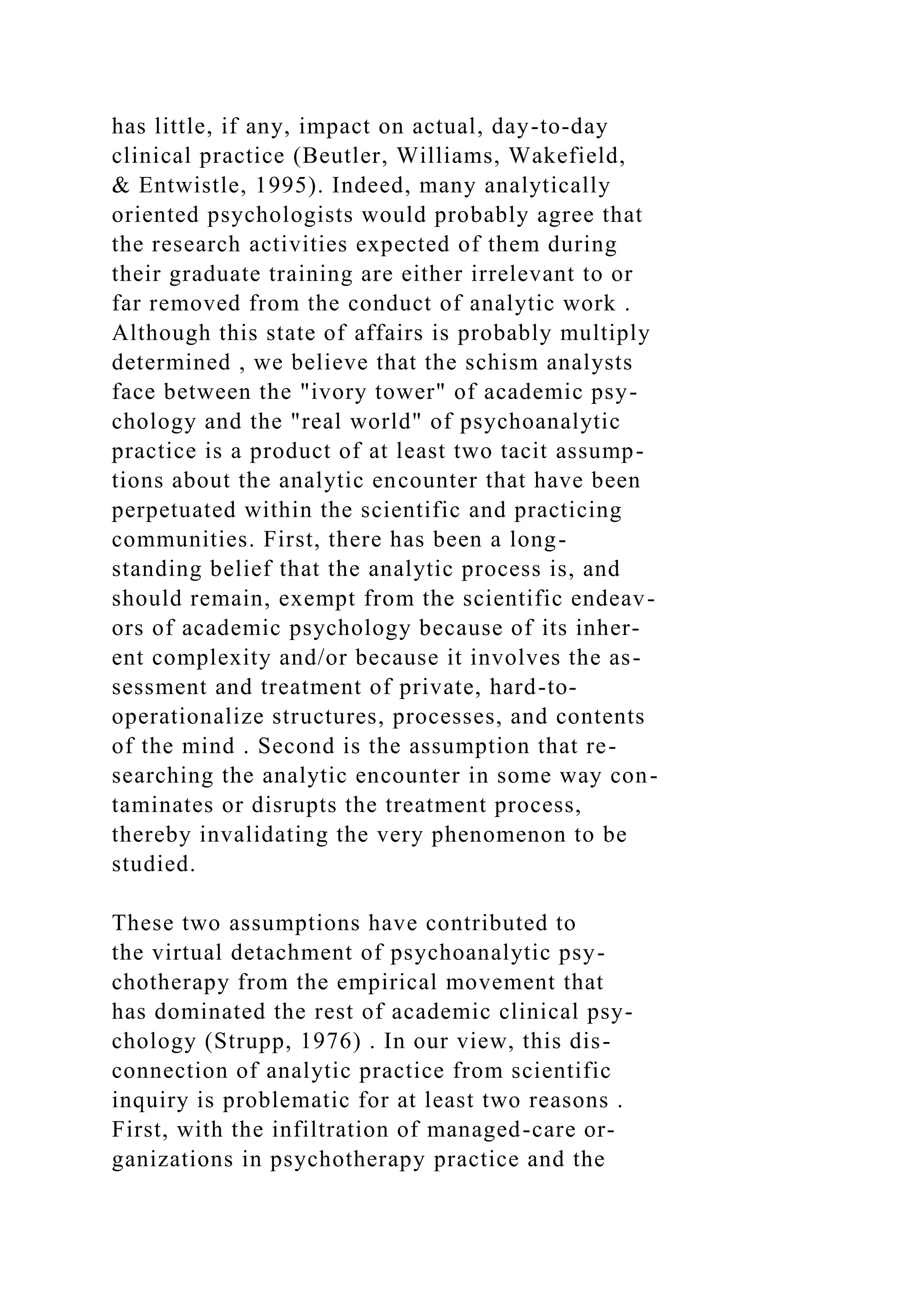

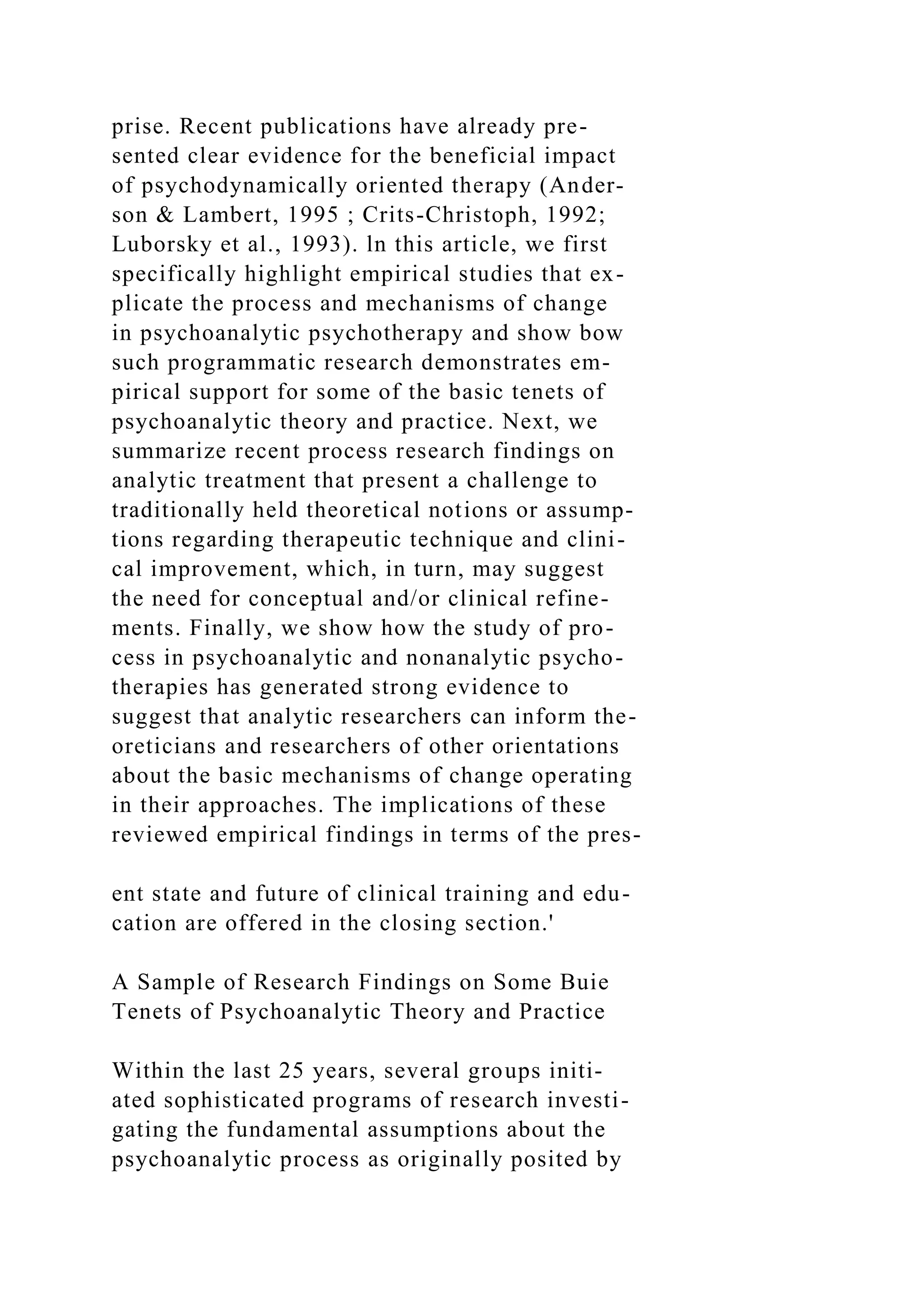
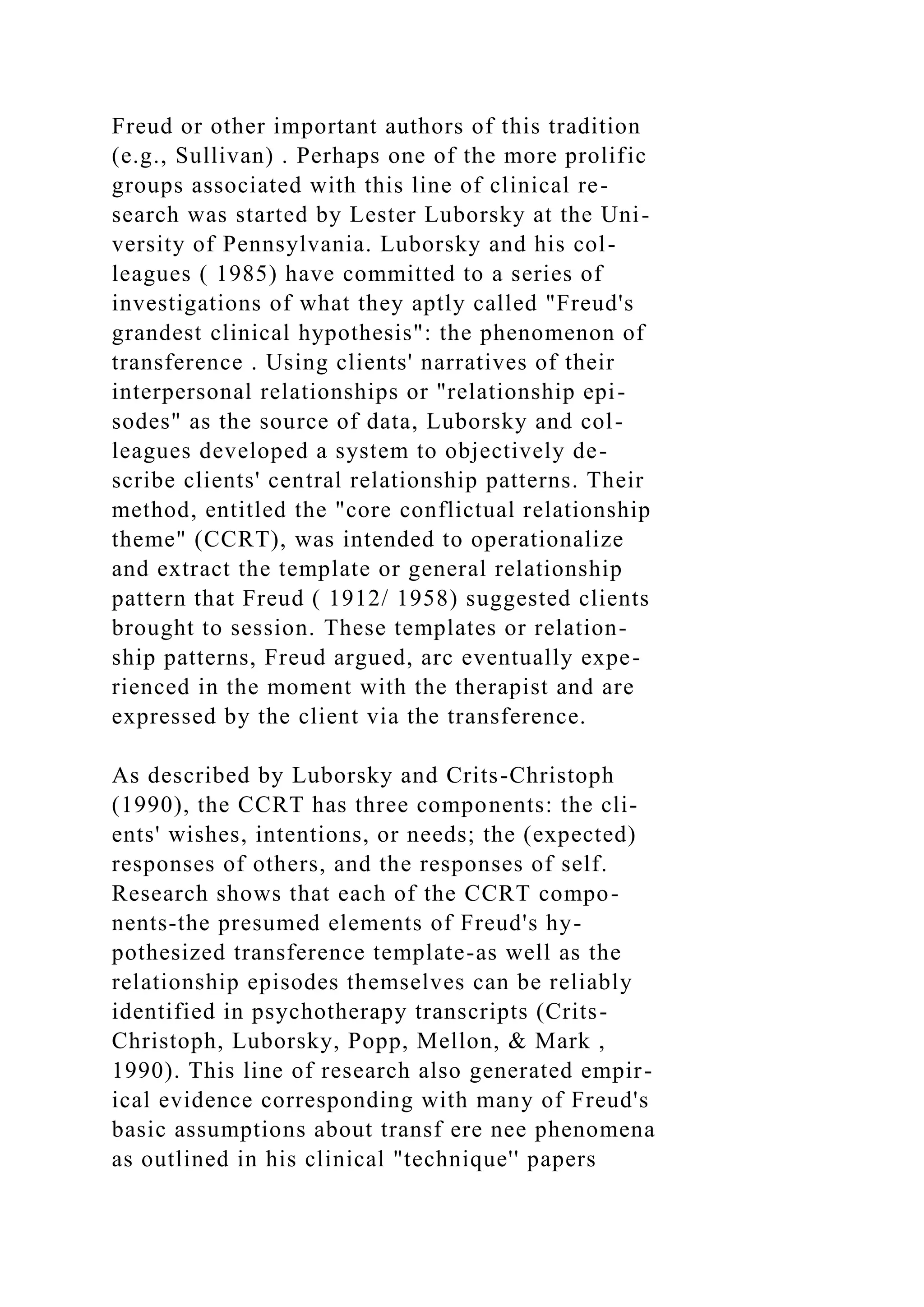


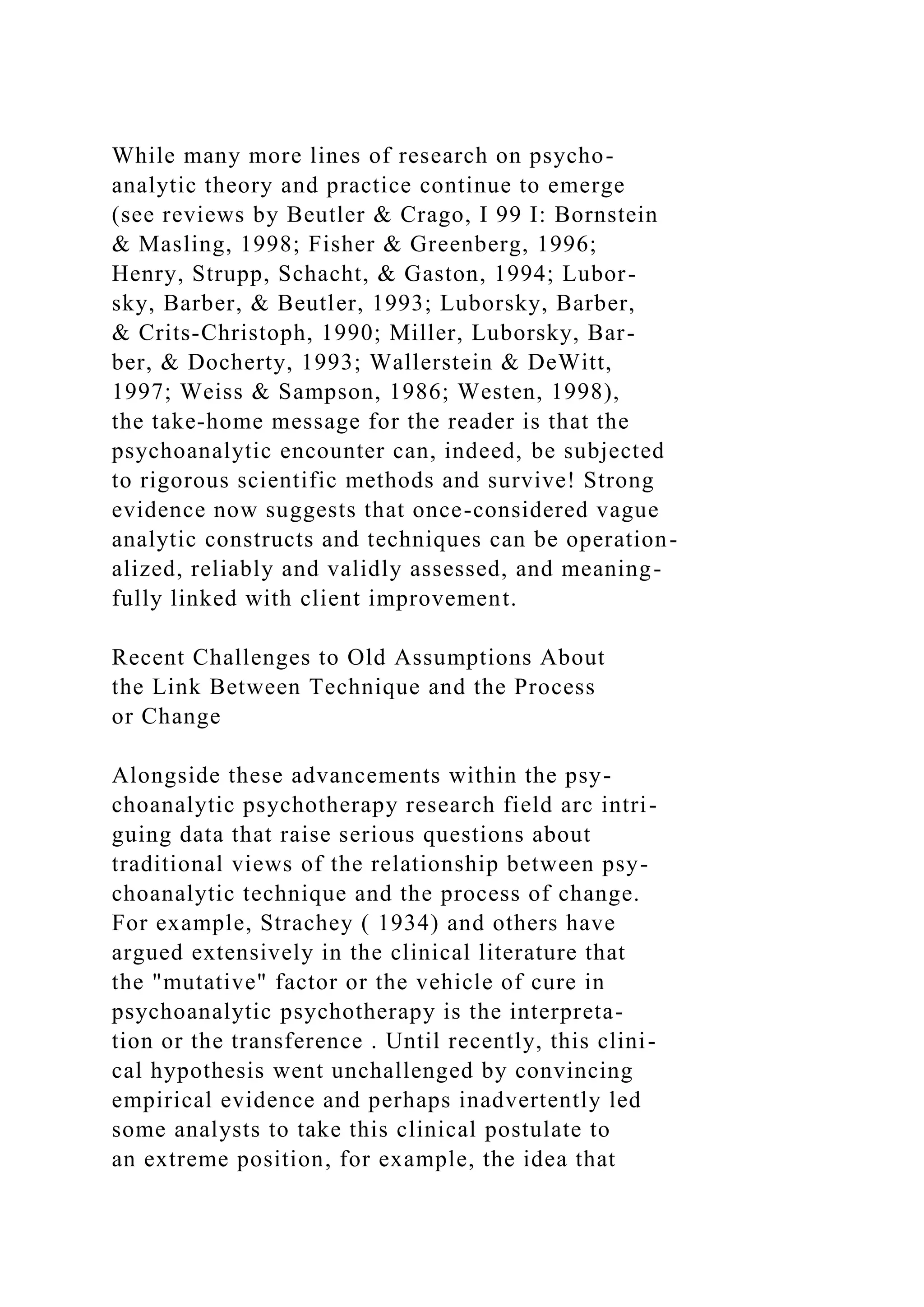
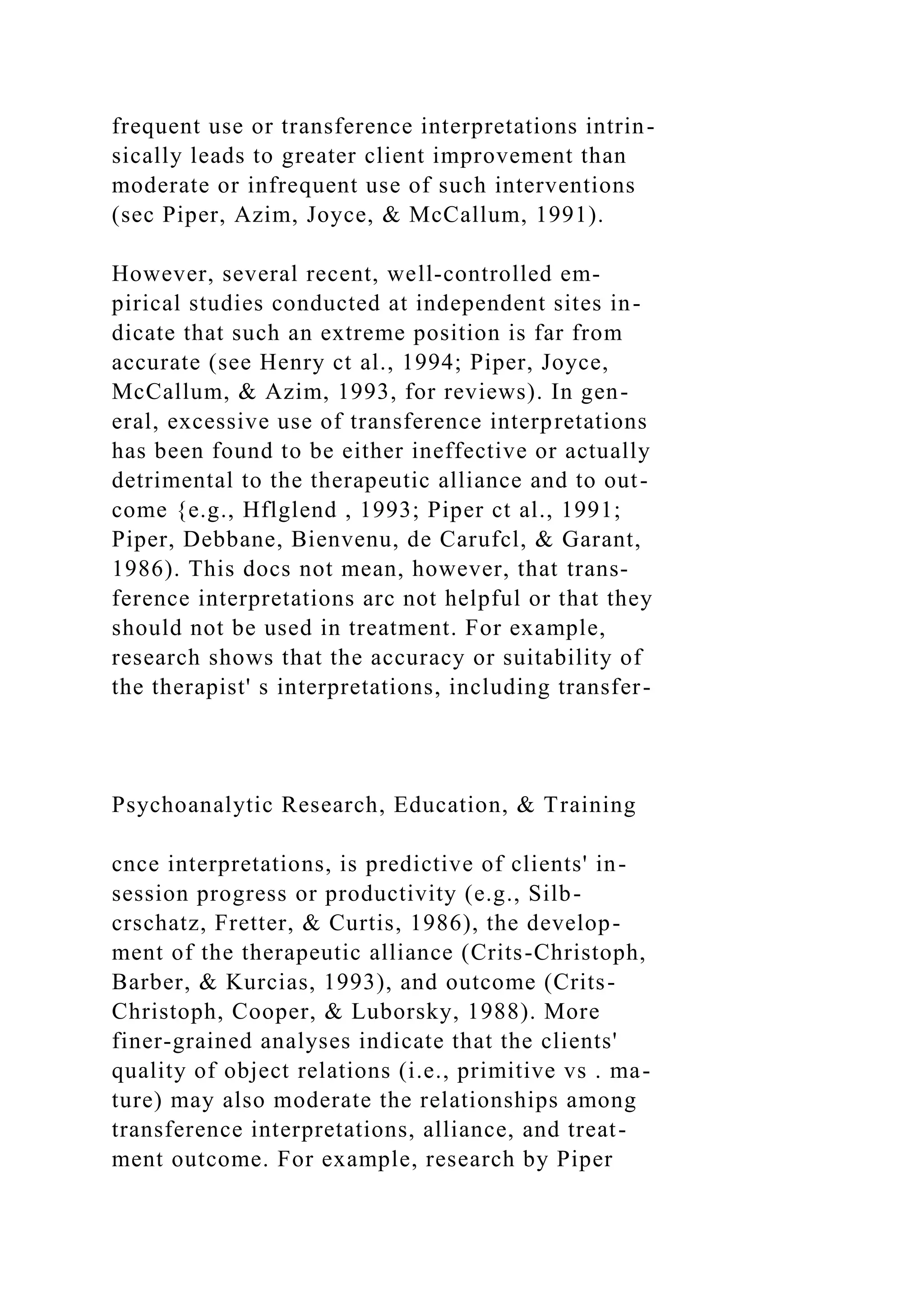
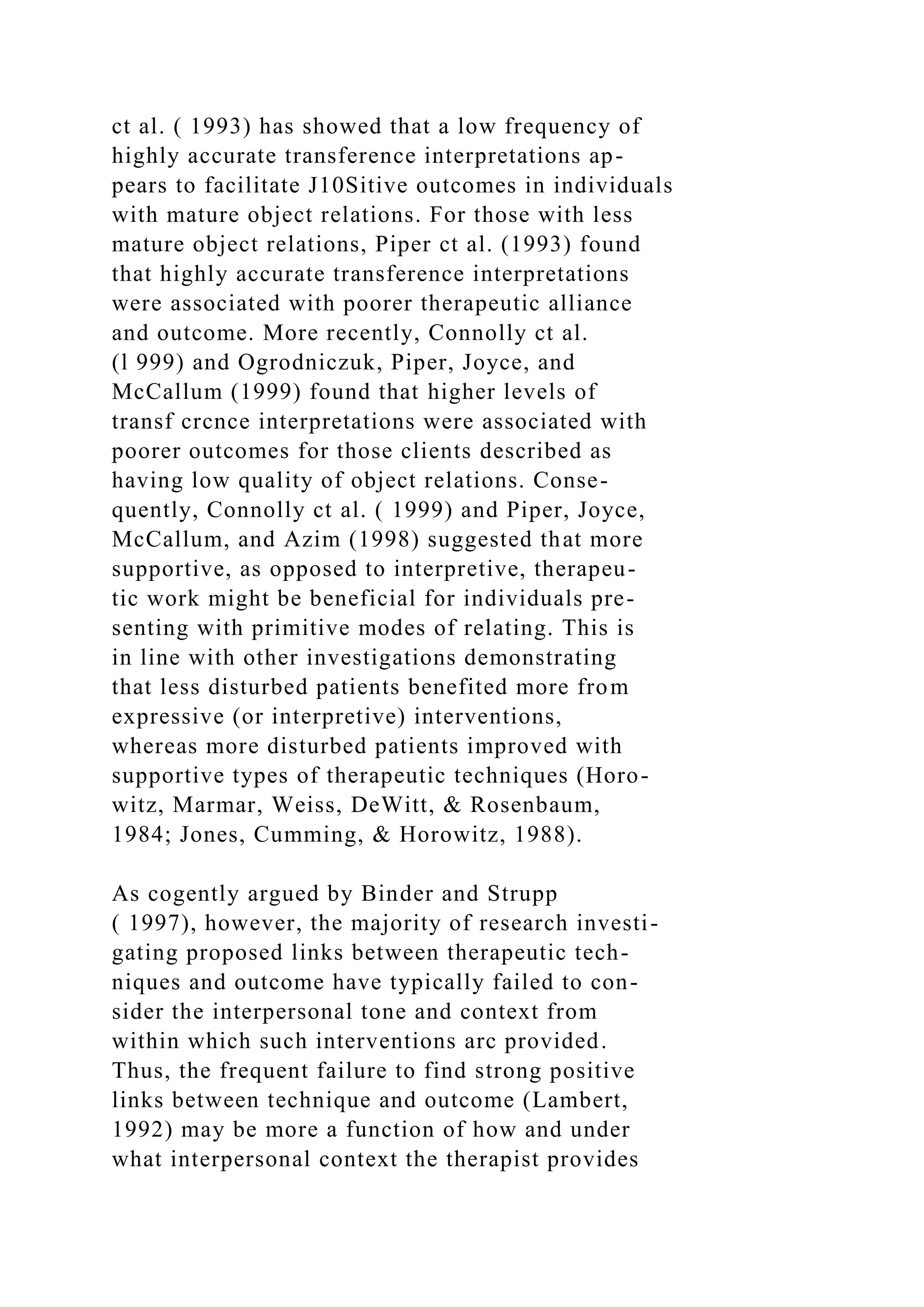
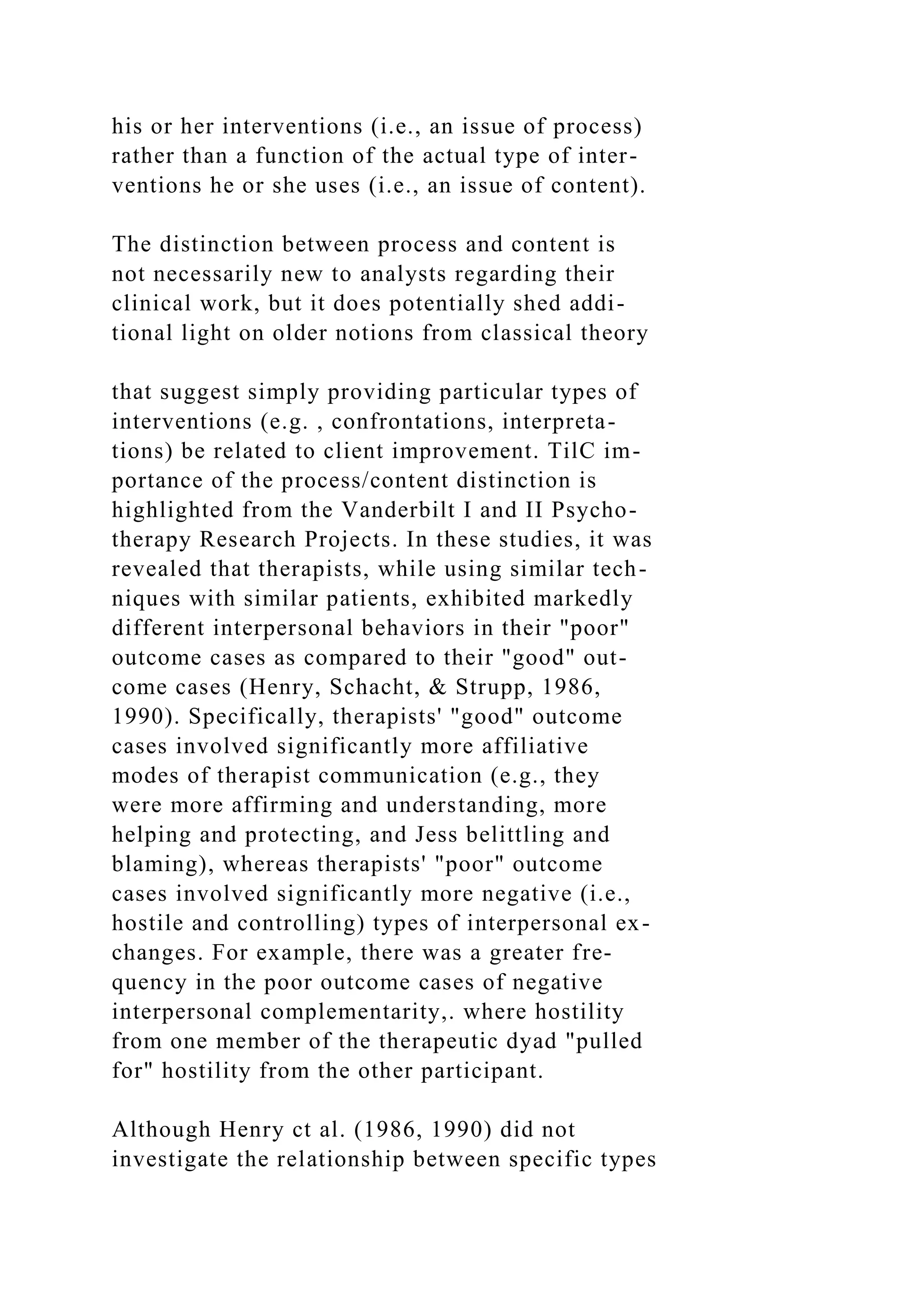
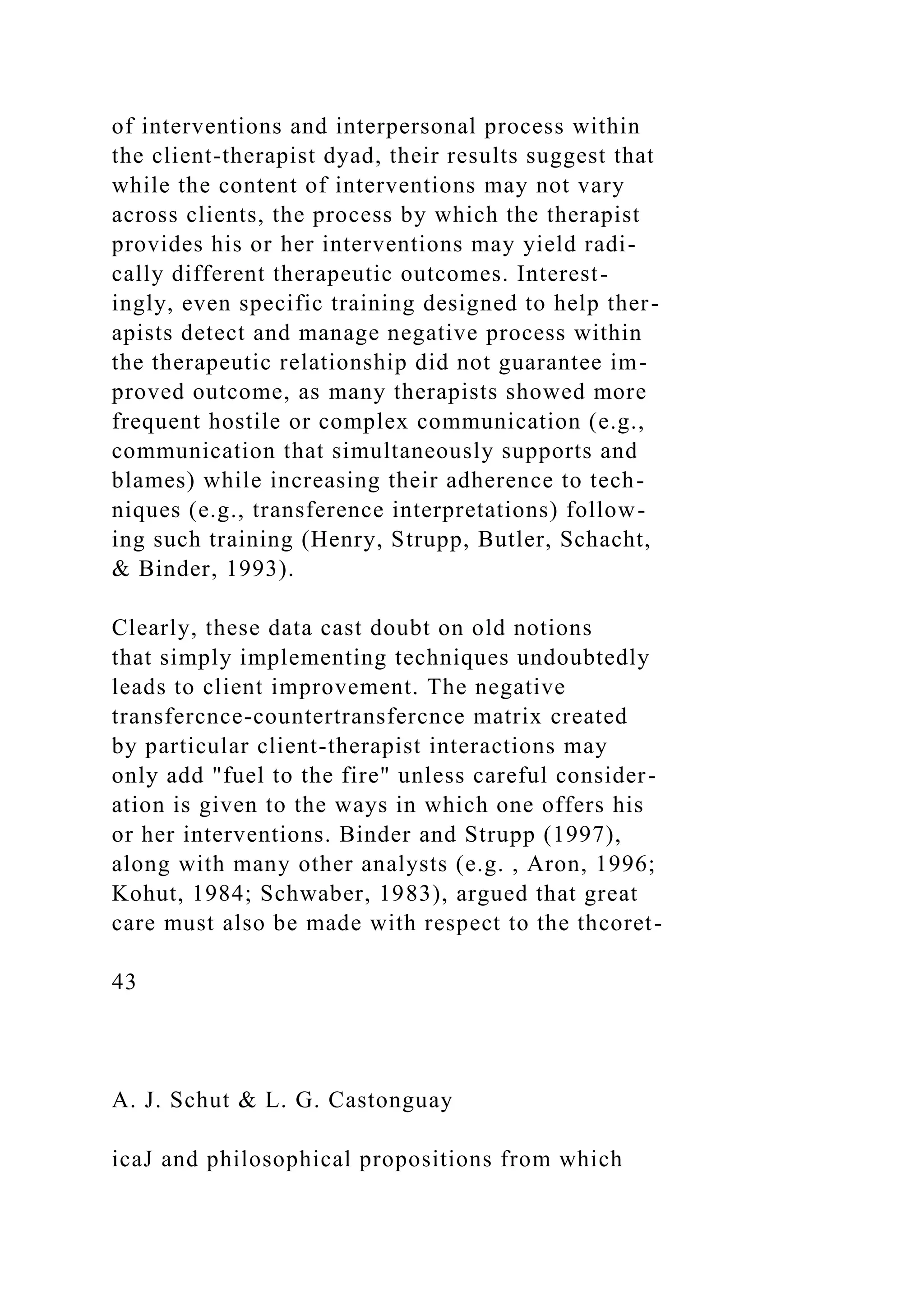
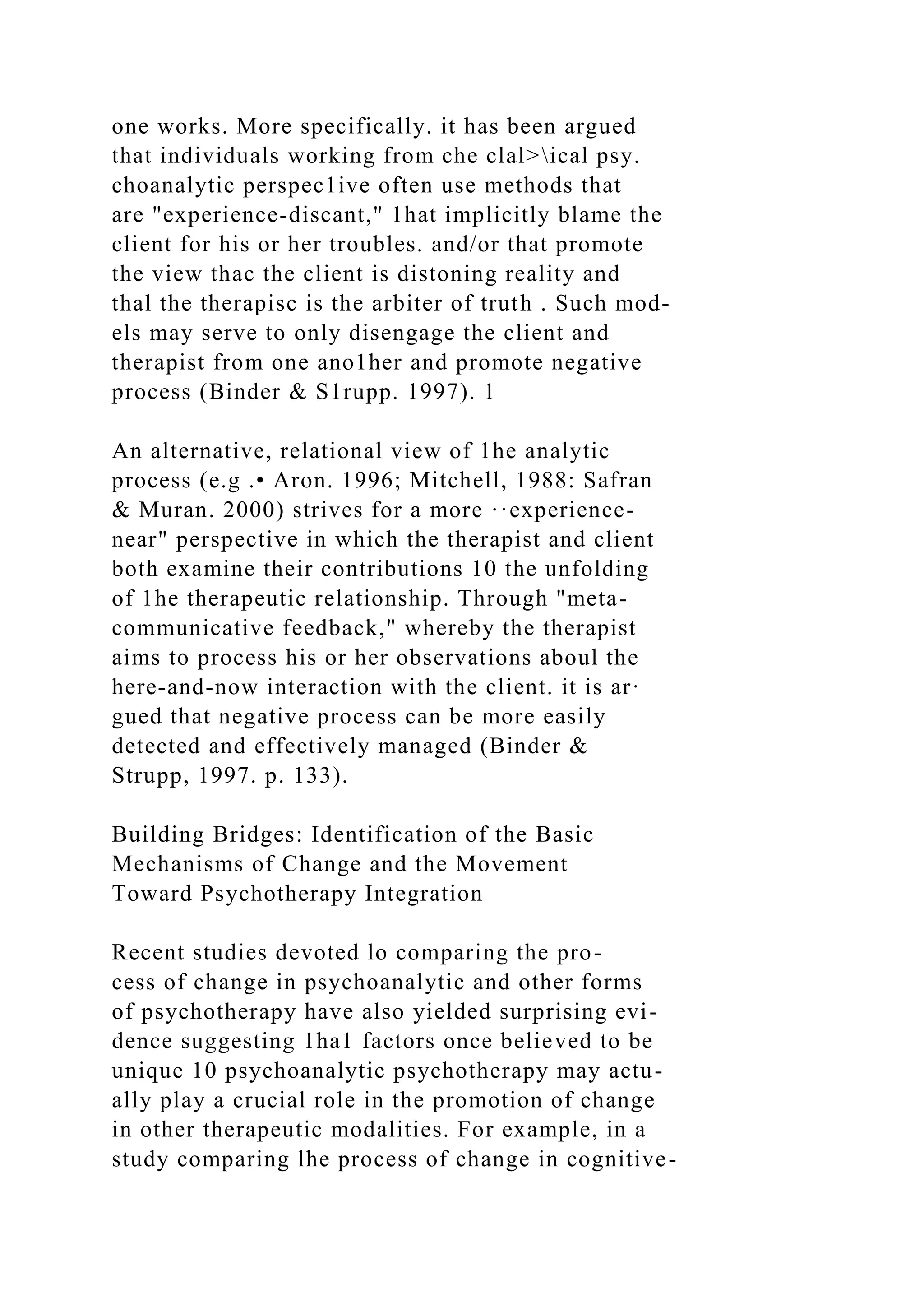




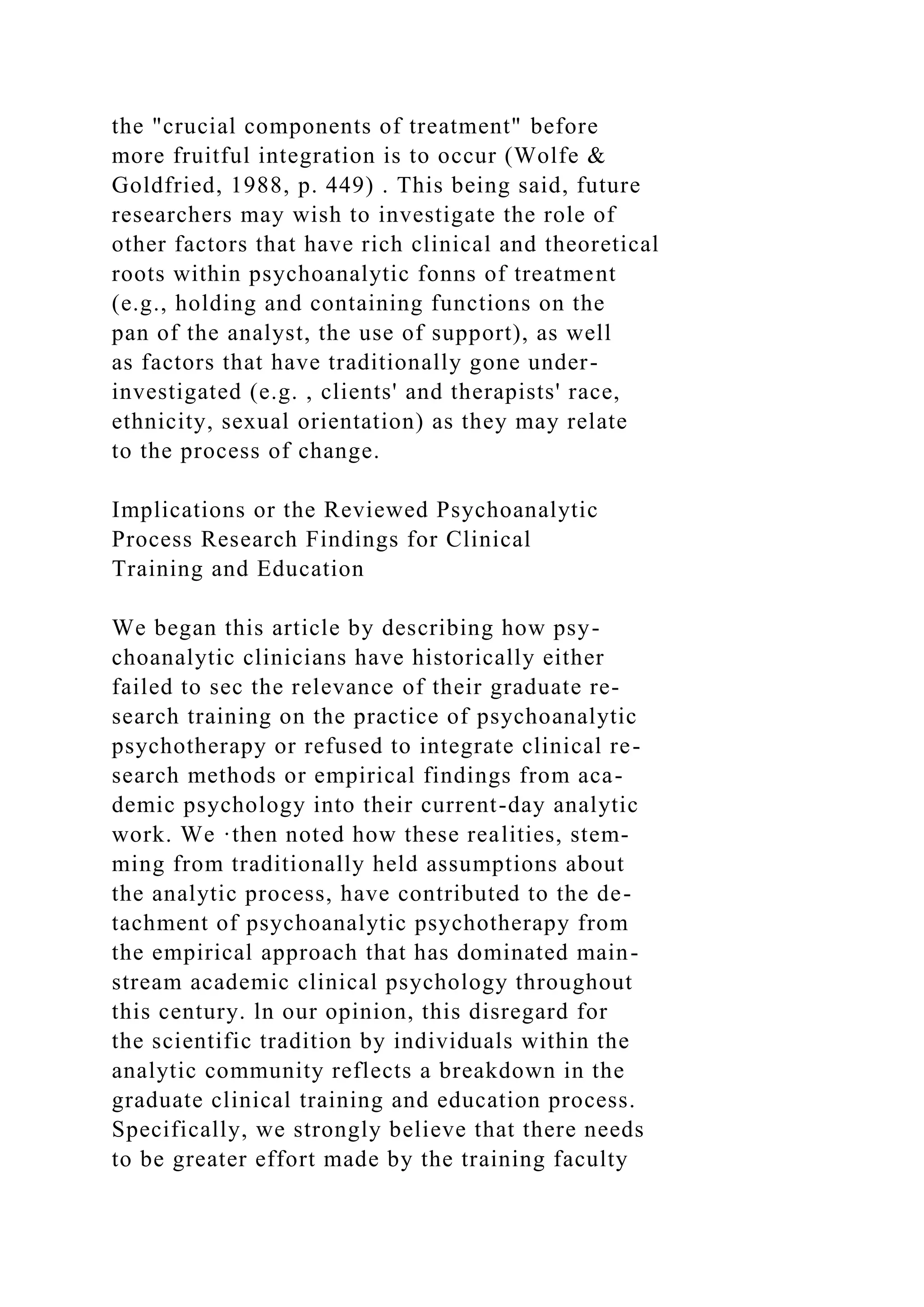
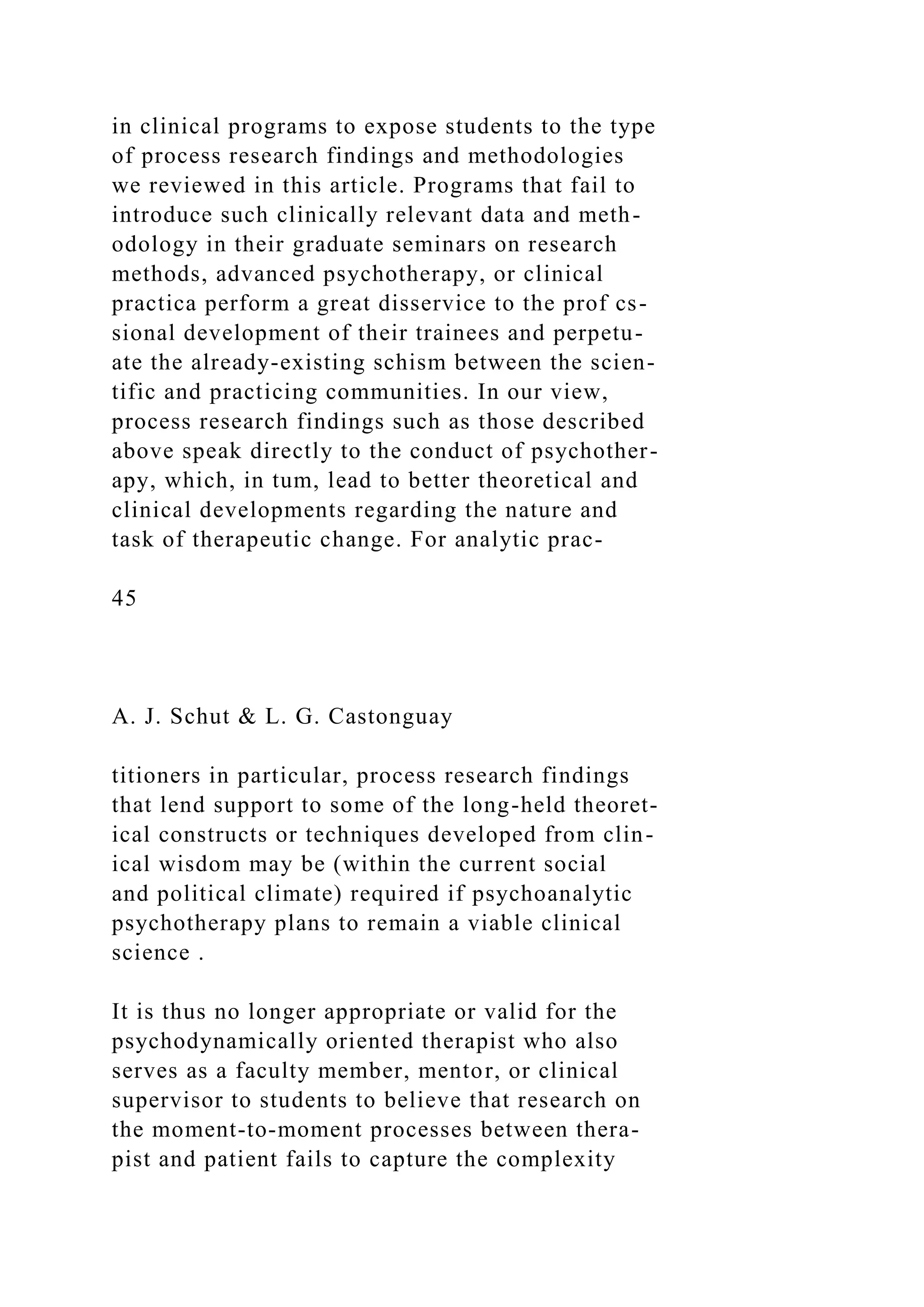
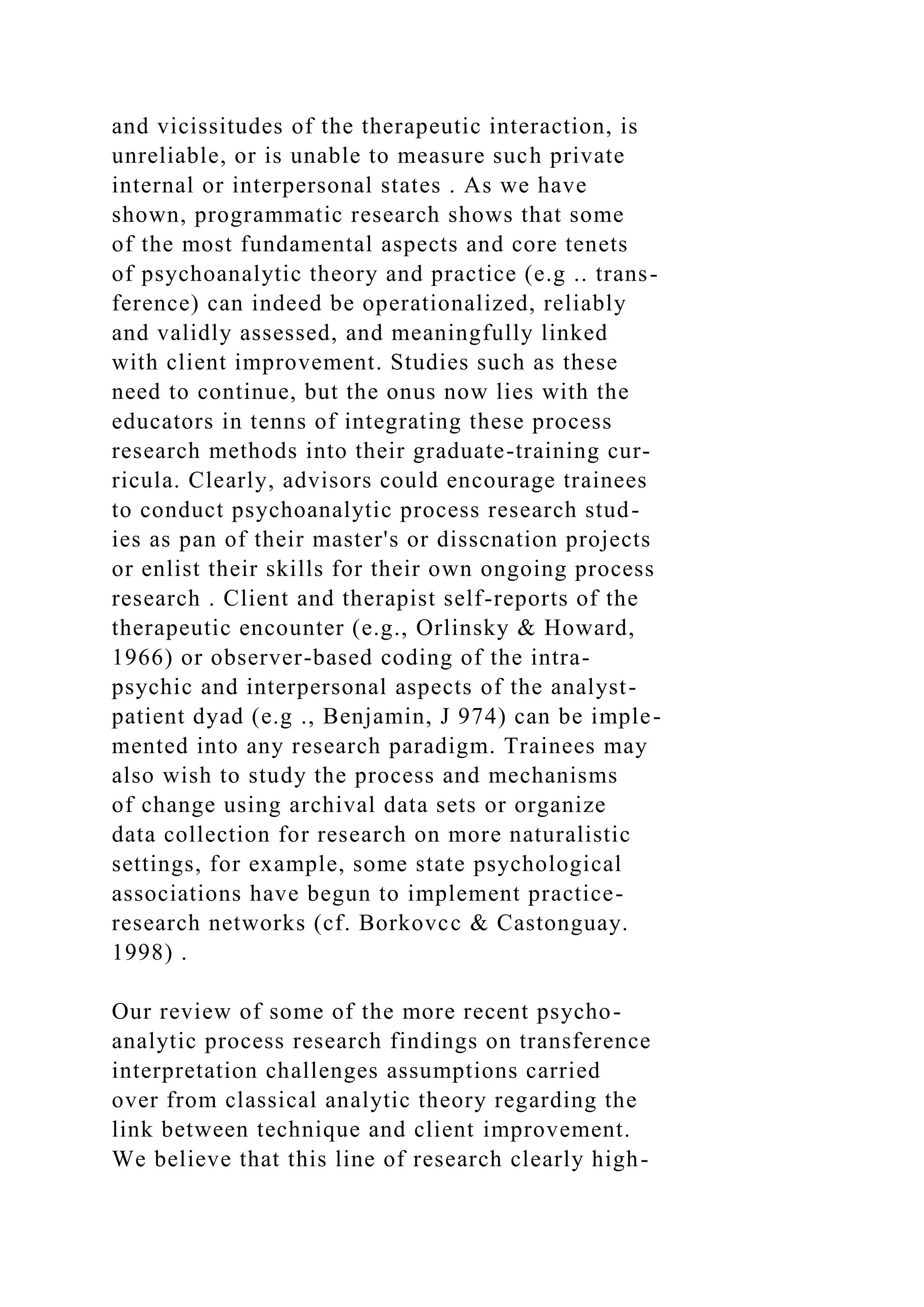

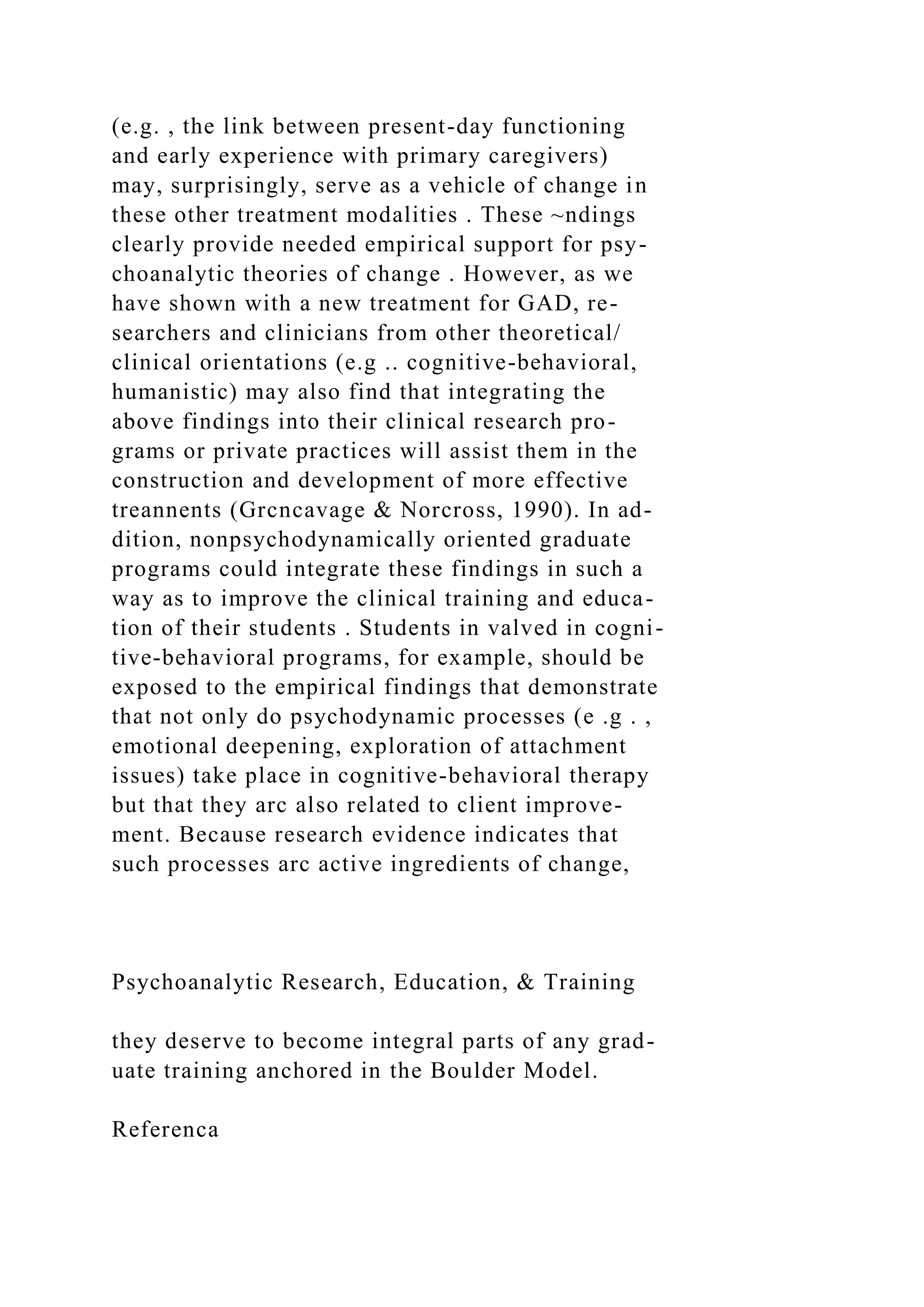
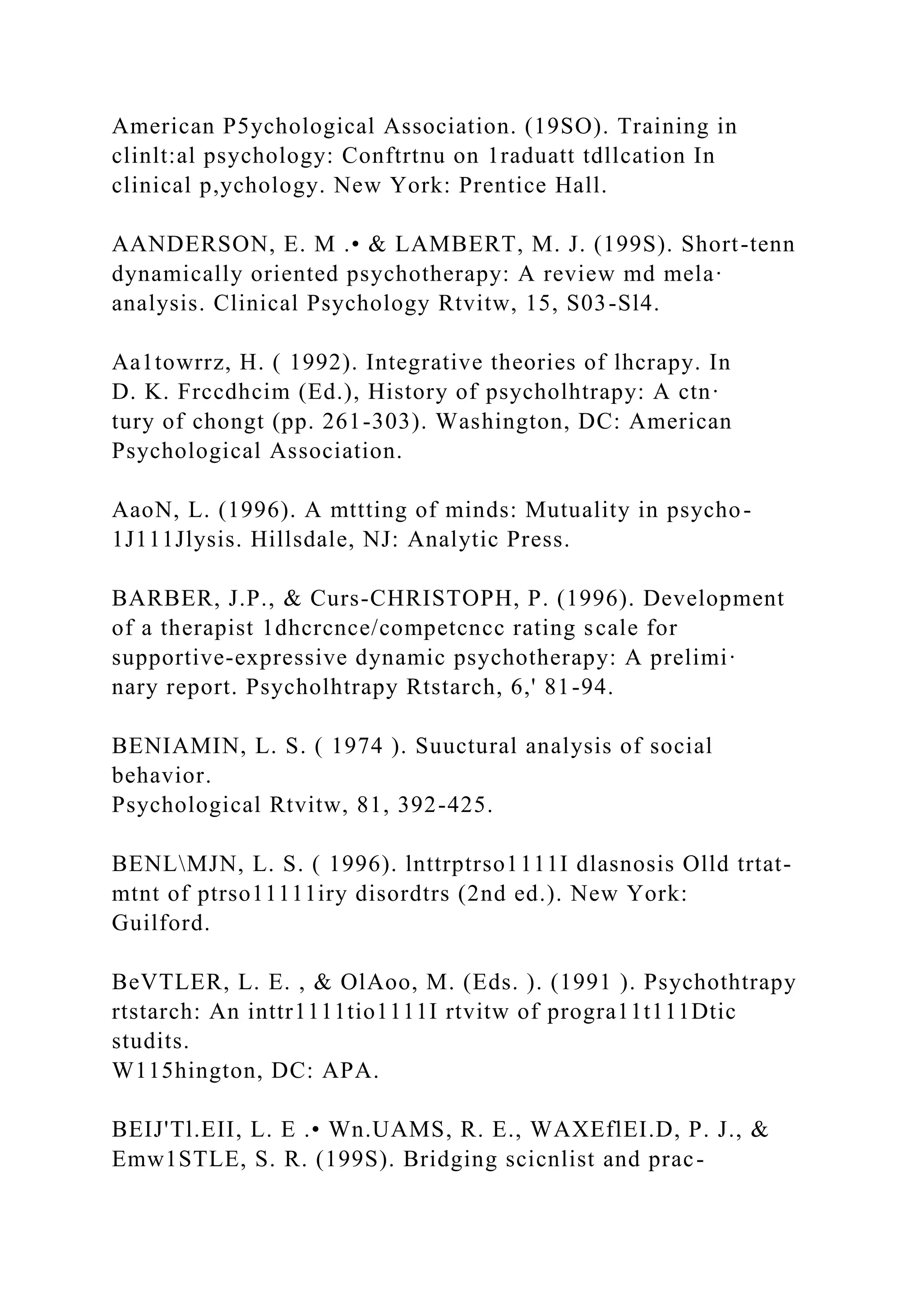
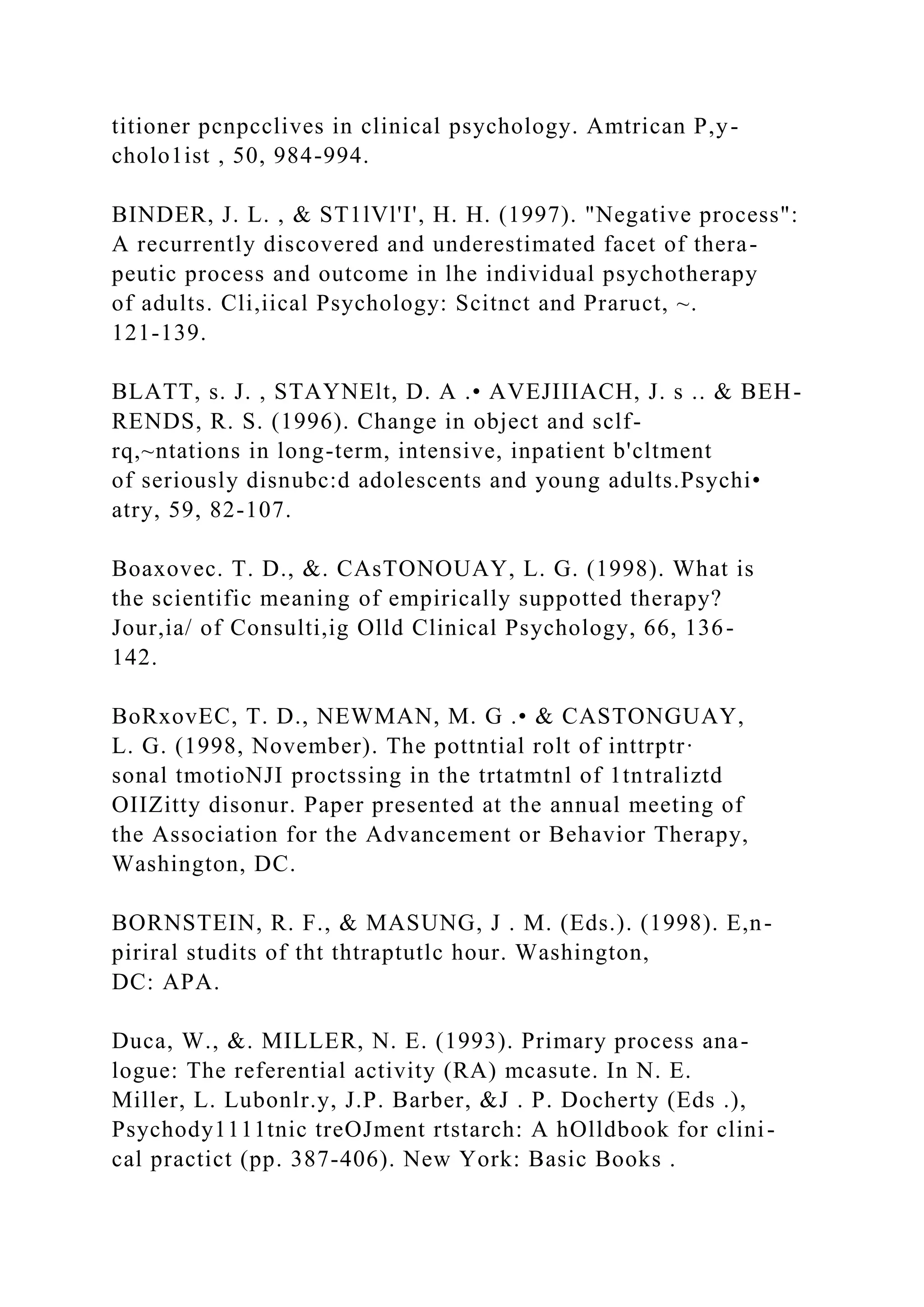
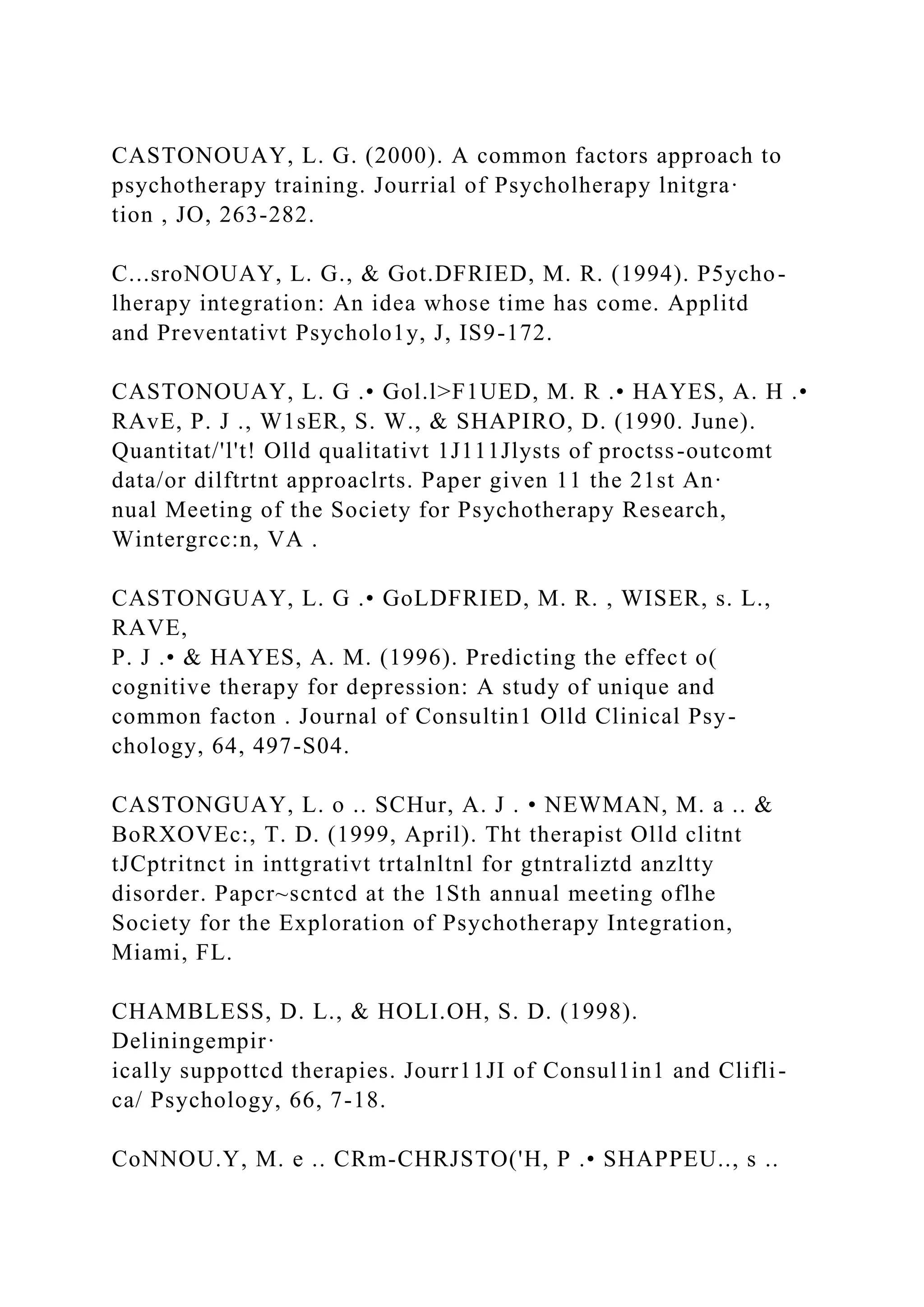
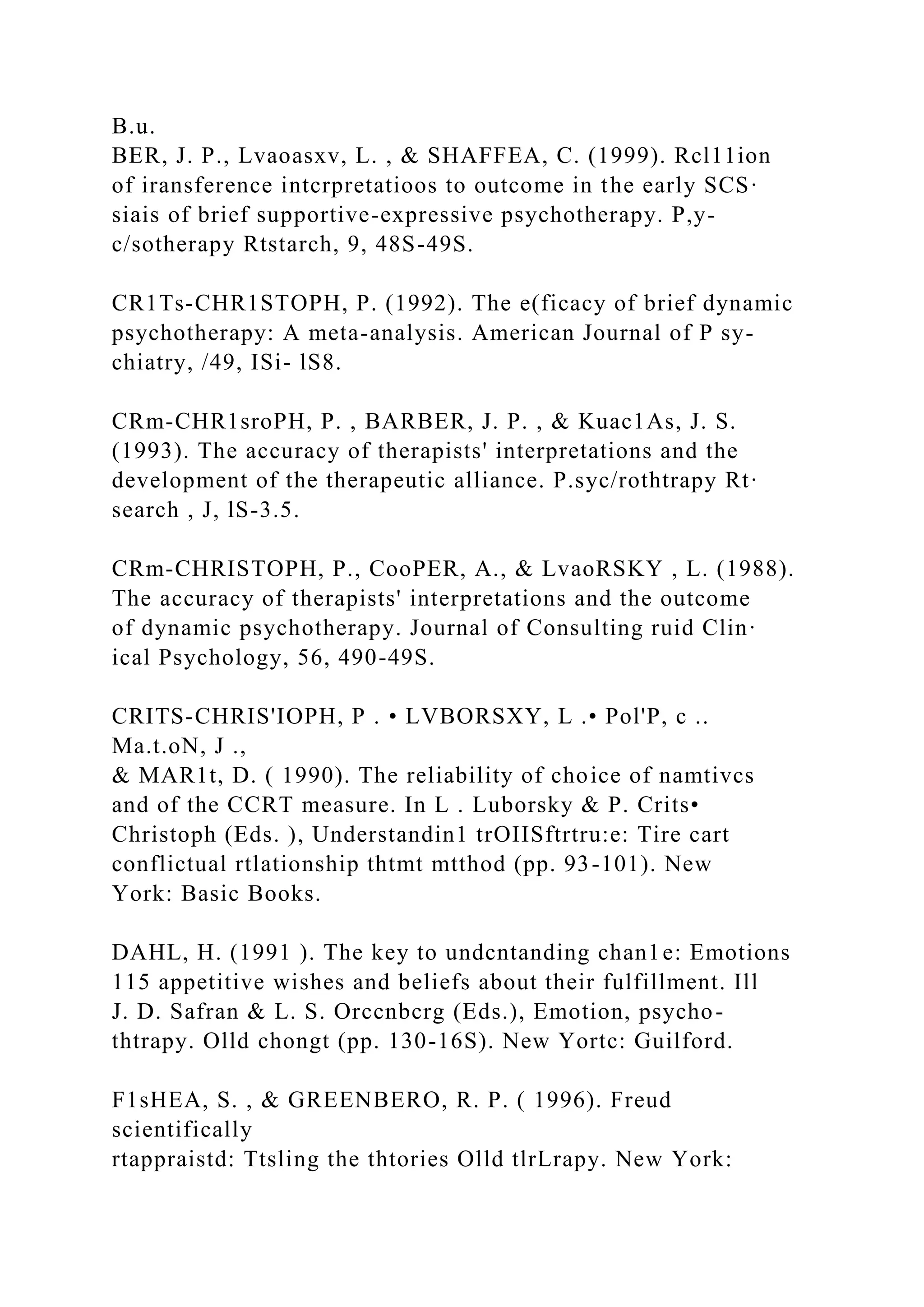

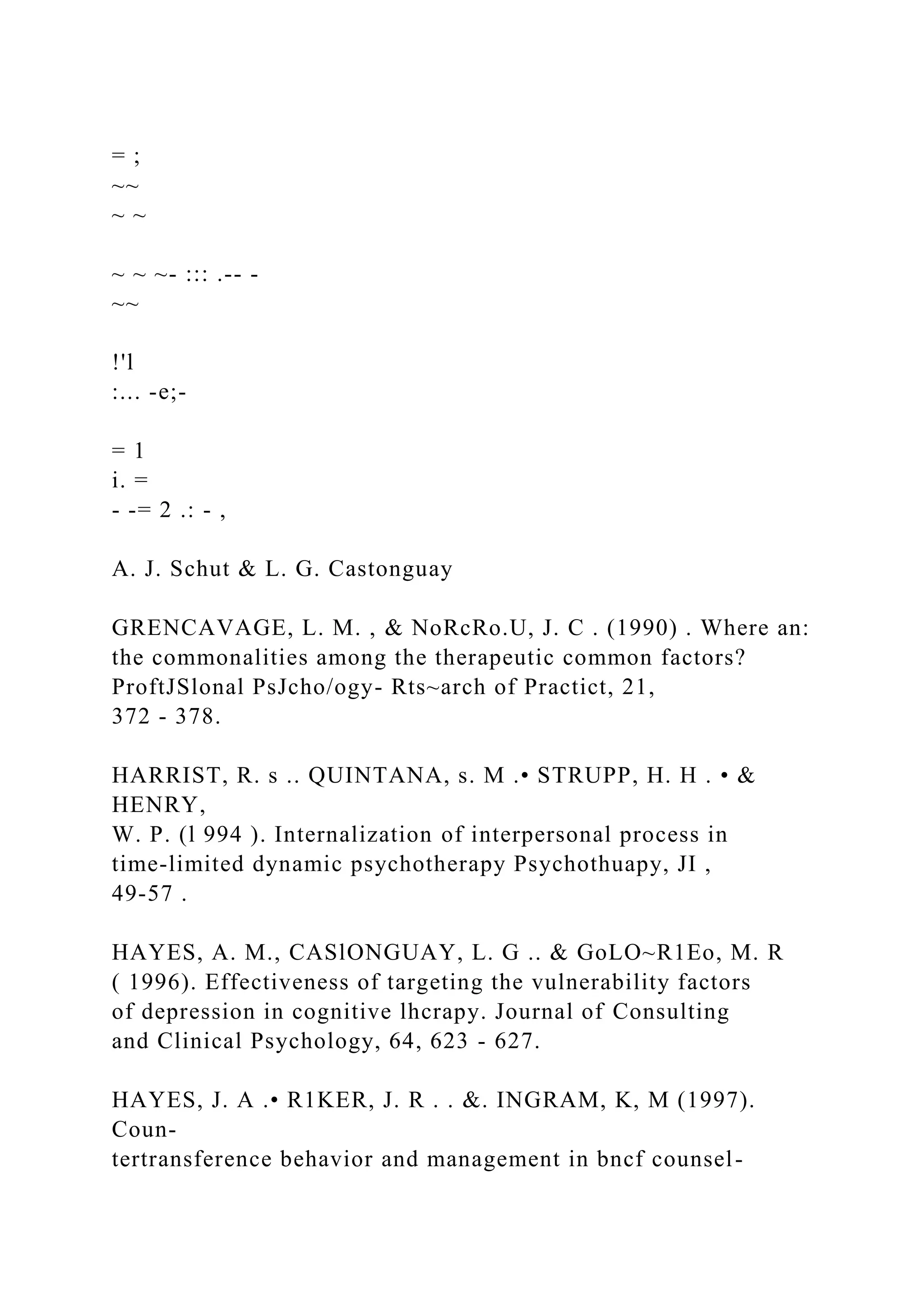
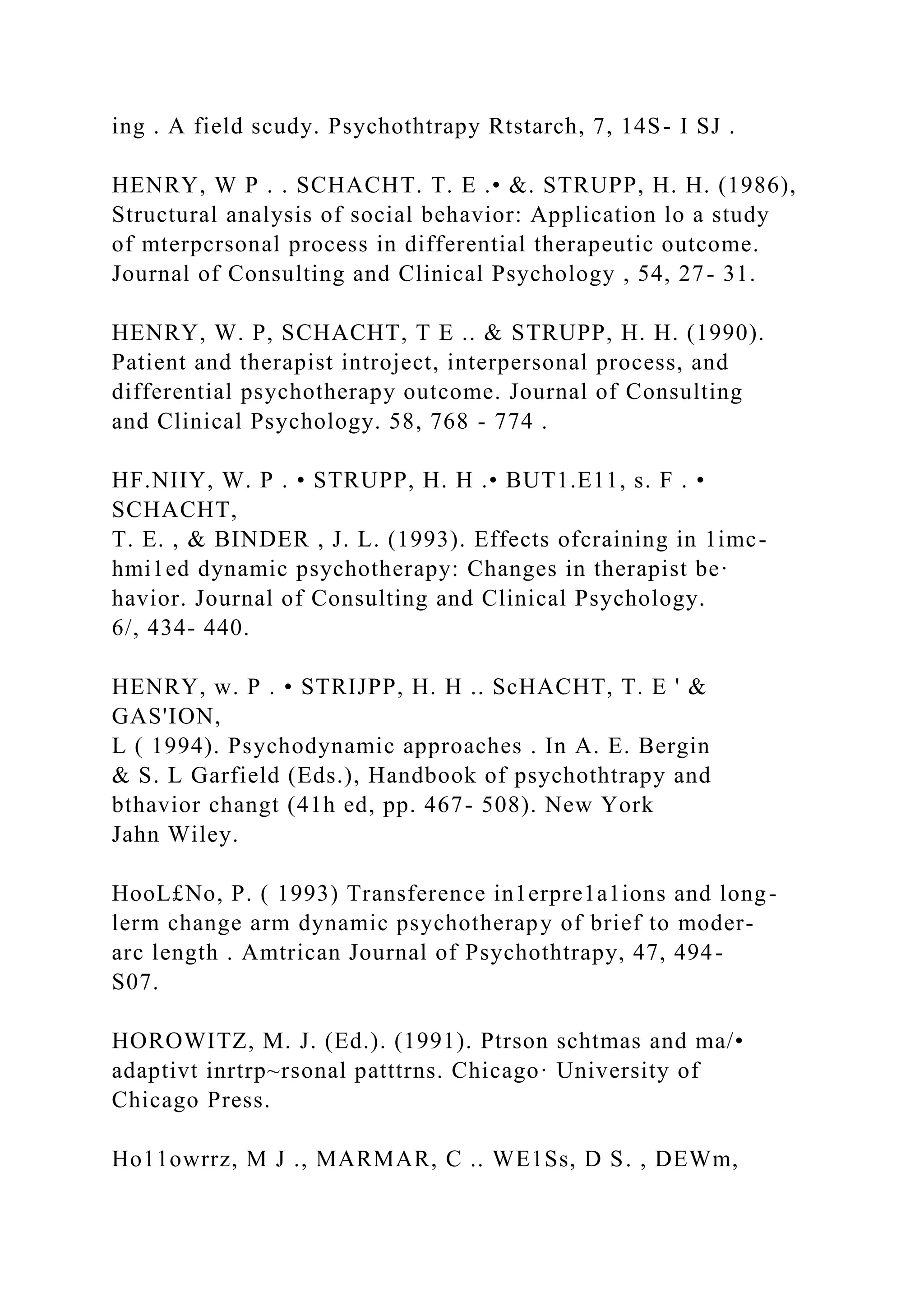
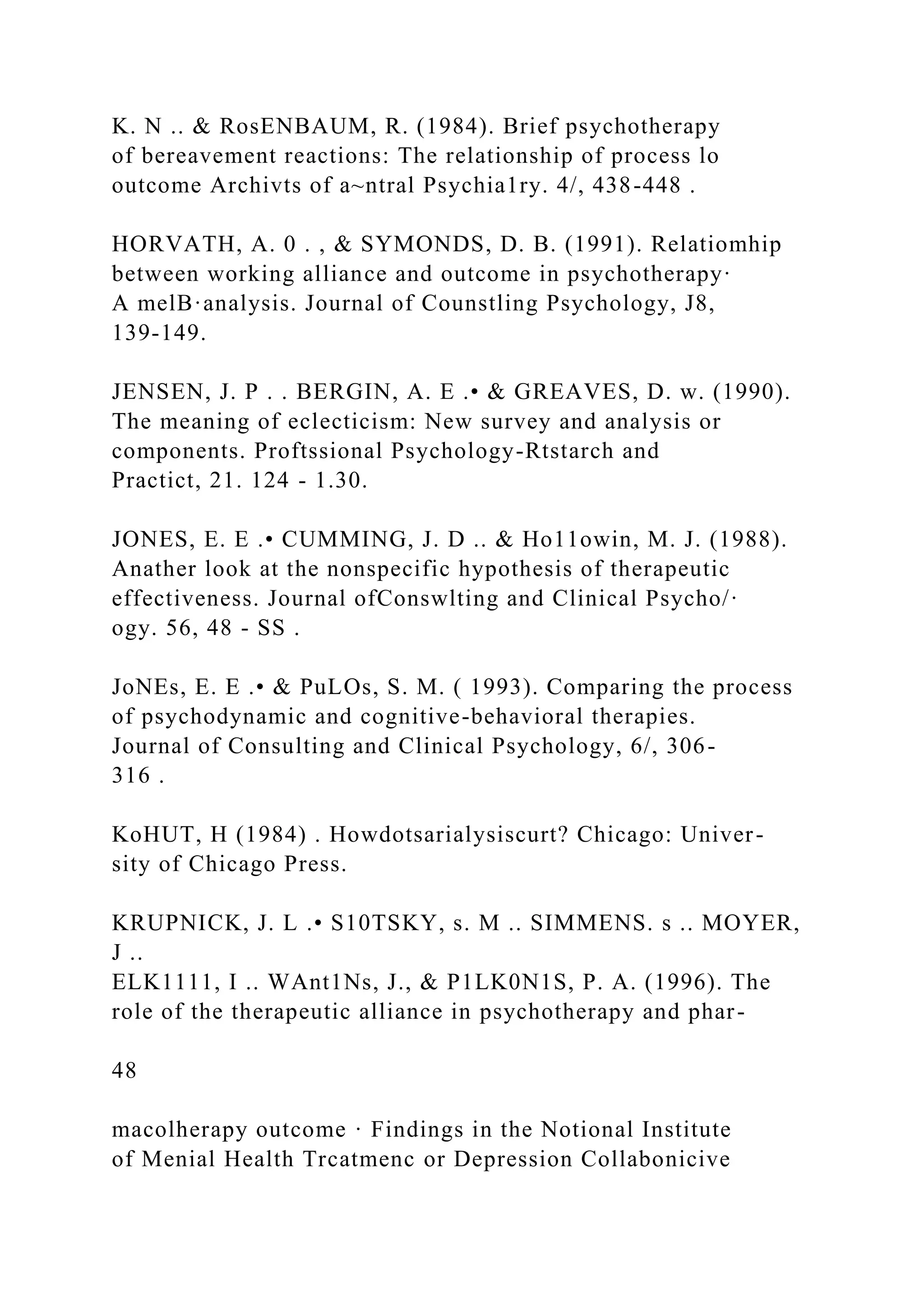
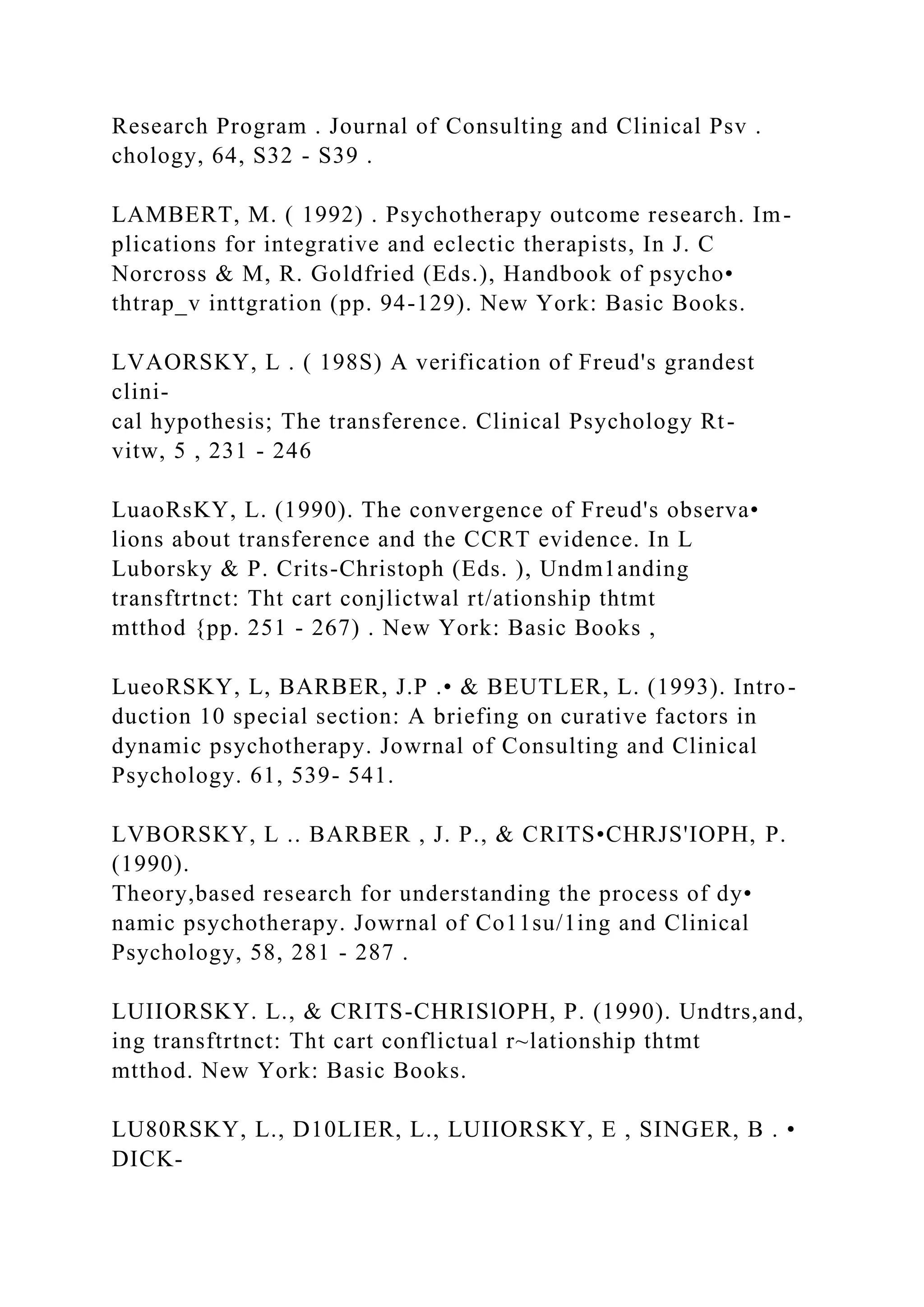

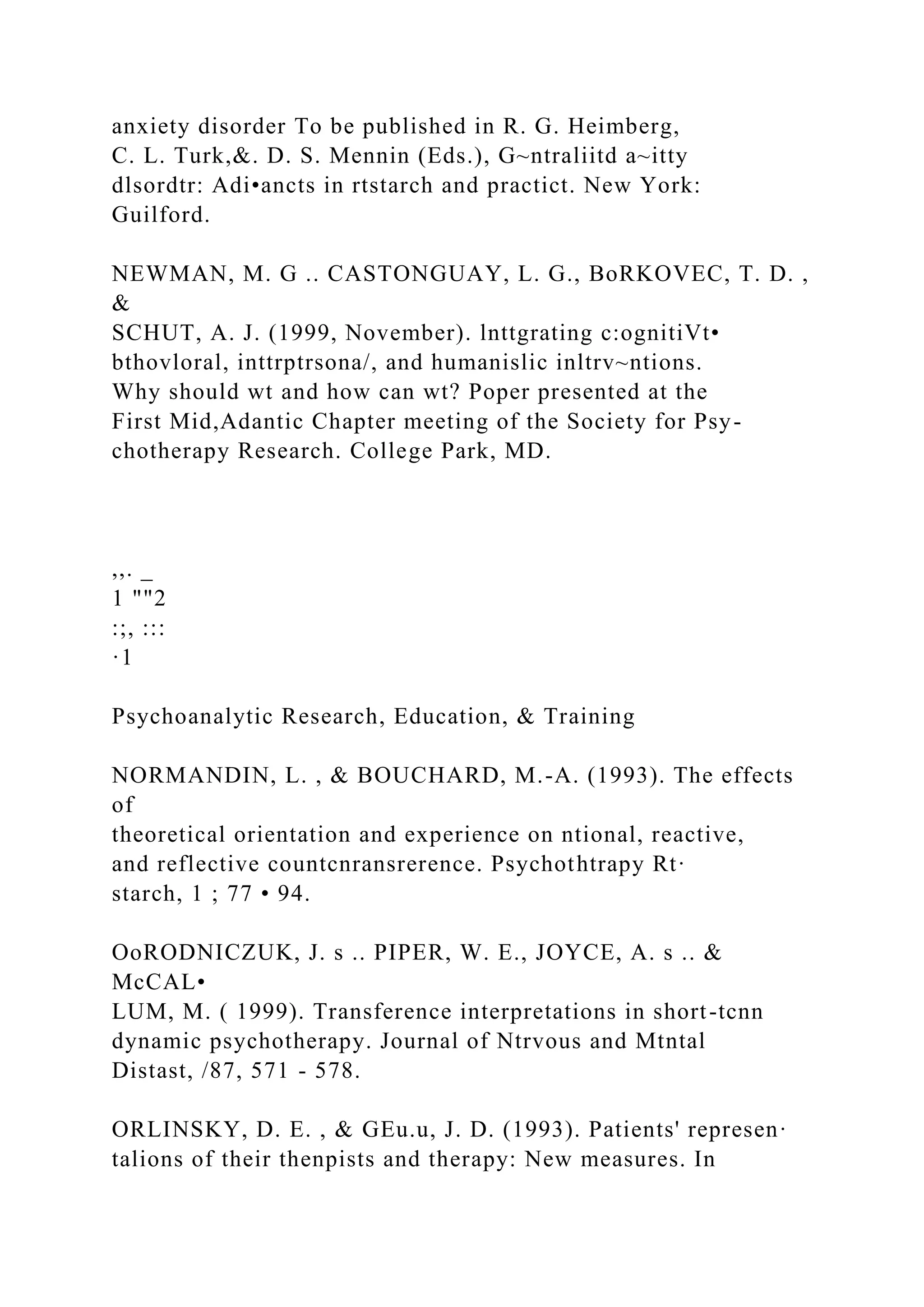
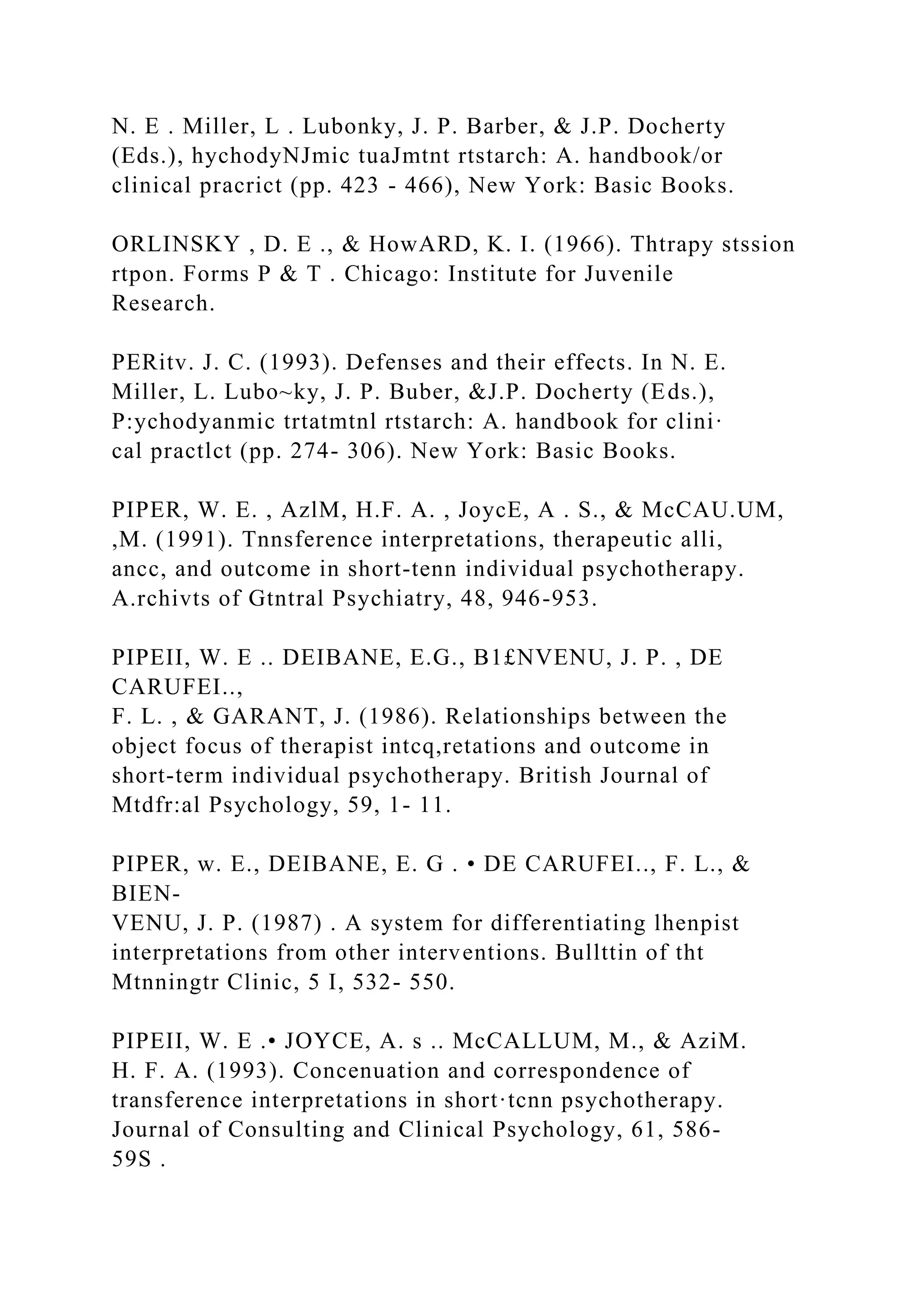
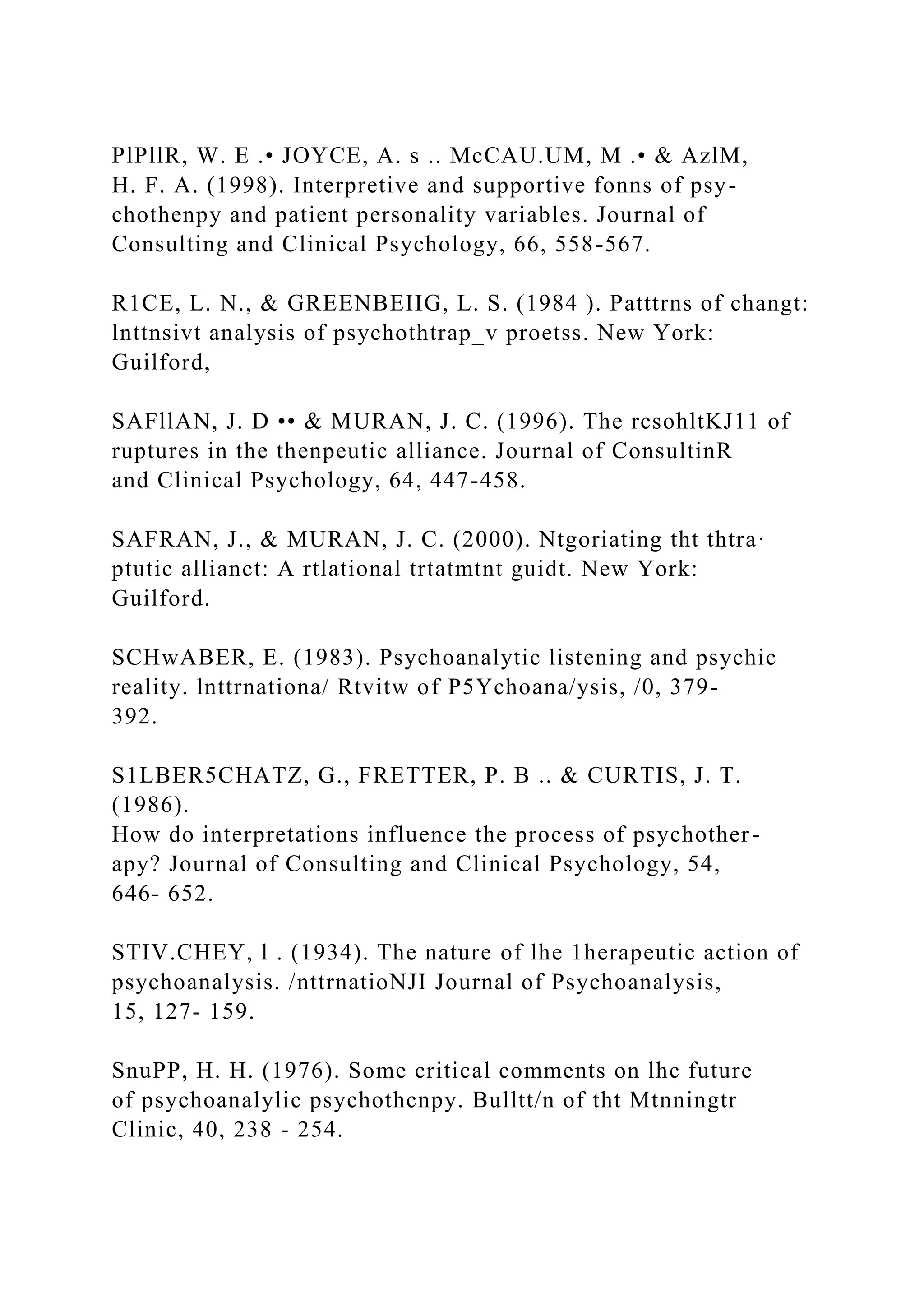
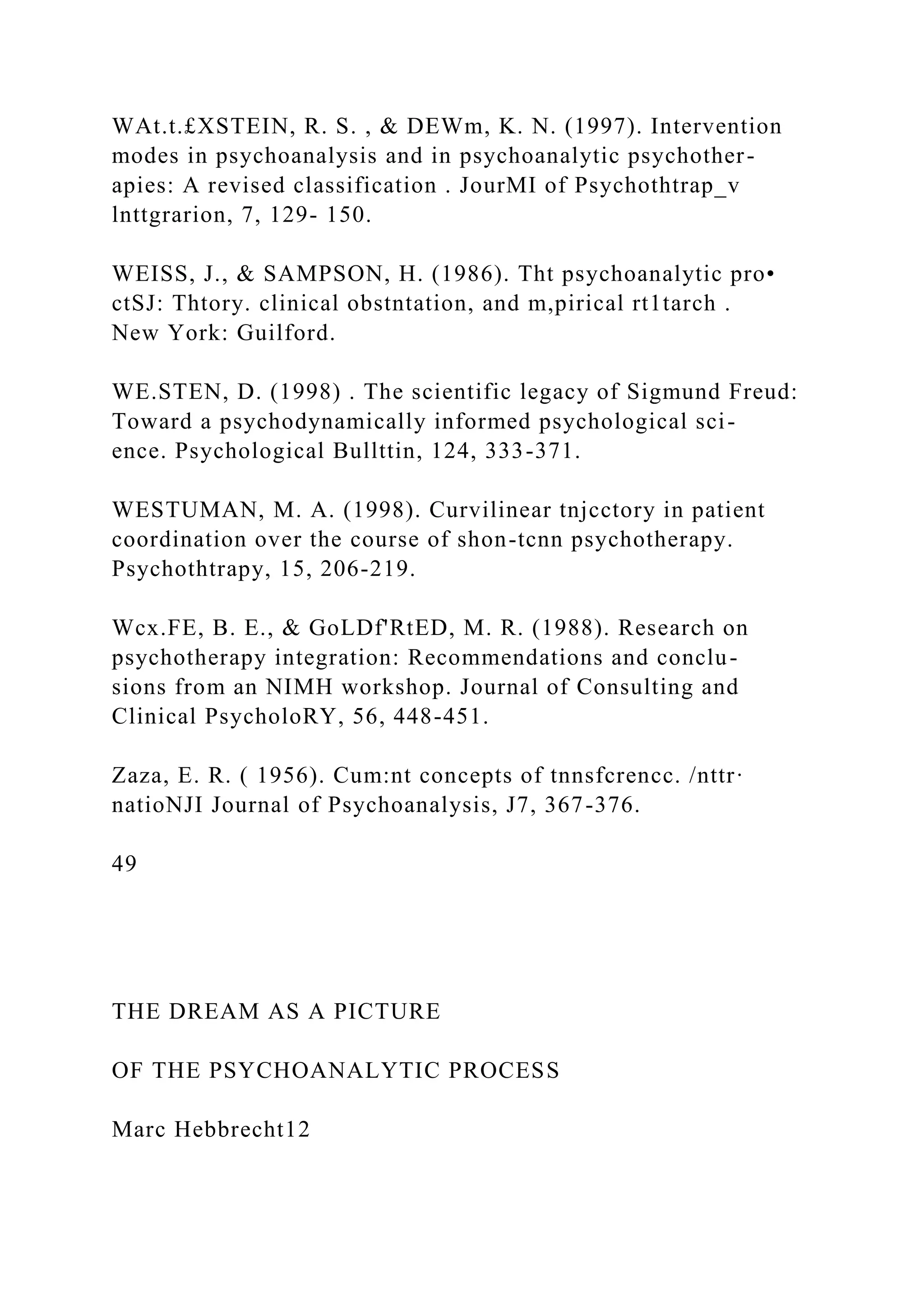
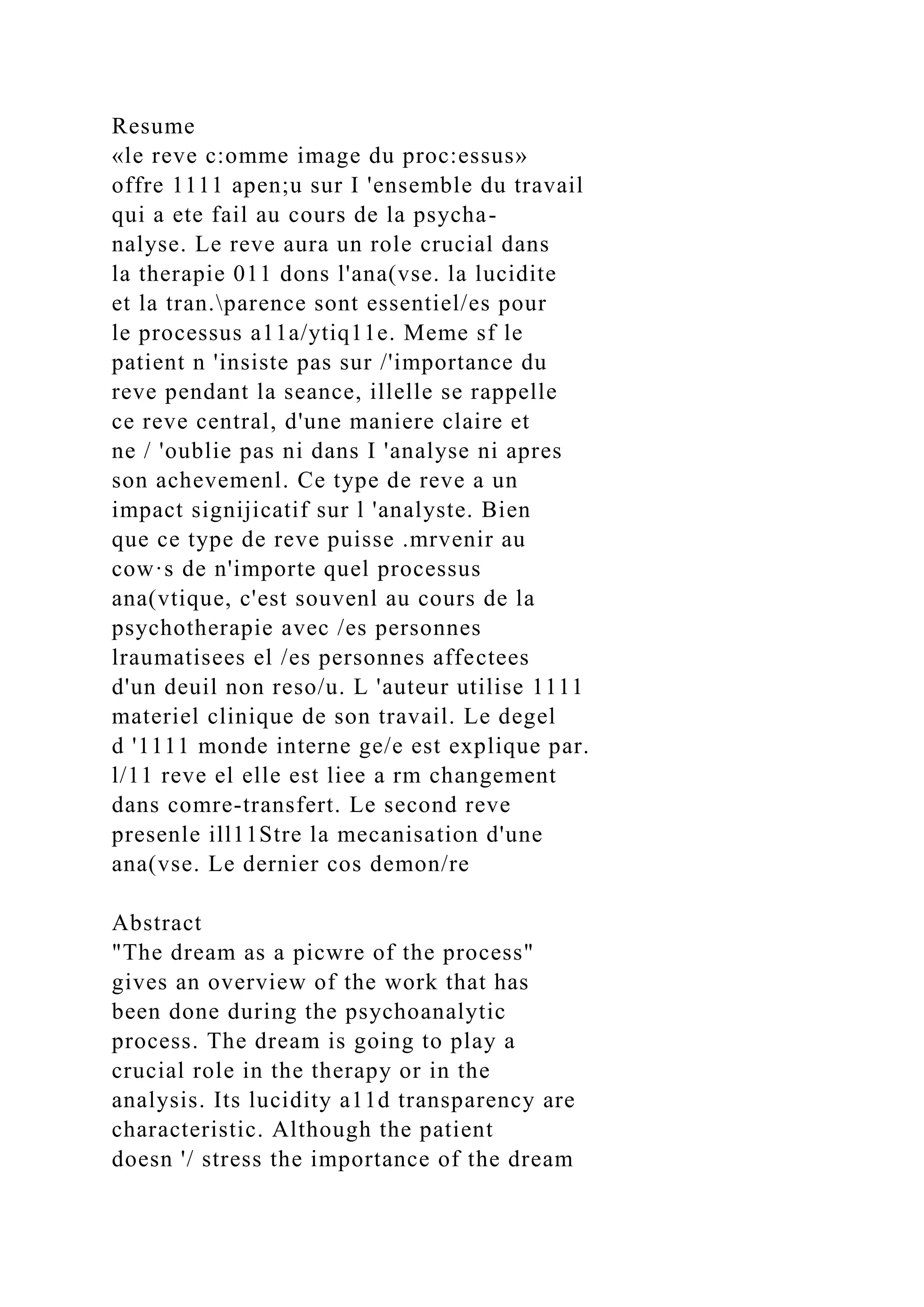
![during the session, he/she remembers them
clearly and also later in the analysis or
after termination, he/she doesn 't forget
this central dream. This kind of dream has
a special impact on the analyst. Although
this type of dream may occur during every
analytic: pra,·ess, it emerges frequent(v
during psychotherapies with traumatized
people or with people who sujjer
unresolved mourning. The author uses
clinical material from his own work. The
thawing of a frozen inner world is
illuminated by a dream and linked to a
shift in the co1111tertramference. The
second dream i/lus1rates the
mechanisation of an analysis. The last
case demo11j;1rates how changes in the
1
~ Sociele Beige de Psyc:hanalyse; [email protected]
124 The dream as a picture of the psychoanalytic process
comment /es changemenls dans /es pro-
cessus sont presentrls par /es elabora-
tions ana(vtiques du premier reve ana-
lytique. Dans un des reves, ii y a une
represenlation visuelle de la comprehen-
sion inconsciente du processus ana-
(vtique. l 'autre reve est une image de
I 'exlension de l'espace interieur.
Mots-clcs: contre-transfert, reves, reve
gele, processus psychanalytique.](https://image.slidesharecdn.com/directionslocatetheannotatedbibliographyandoutlineyou-230111131454-db06e2f3/75/DirectionsLocate-the-annotated-bibliography-and-outline-you-docx-139-2048.jpg)
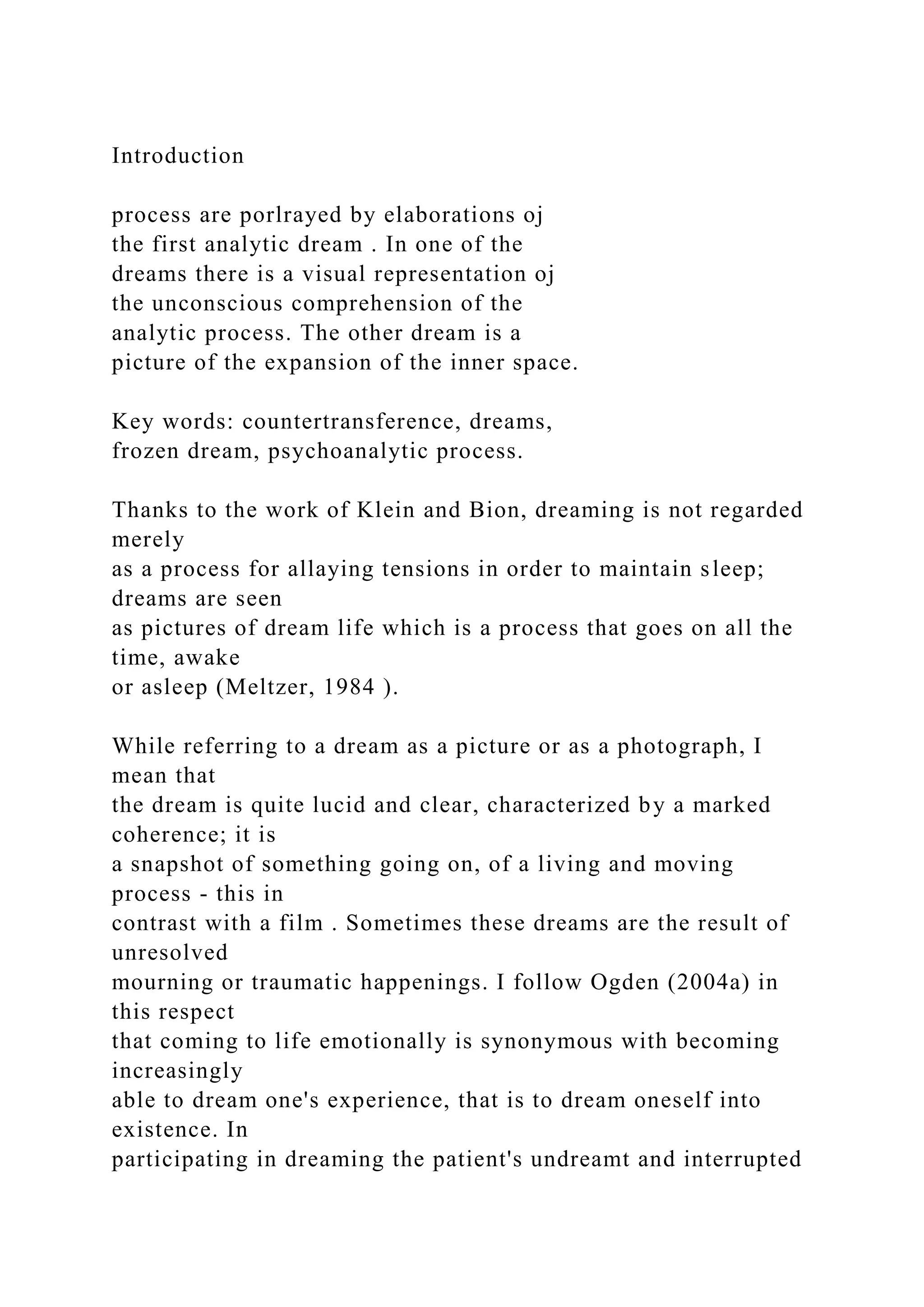
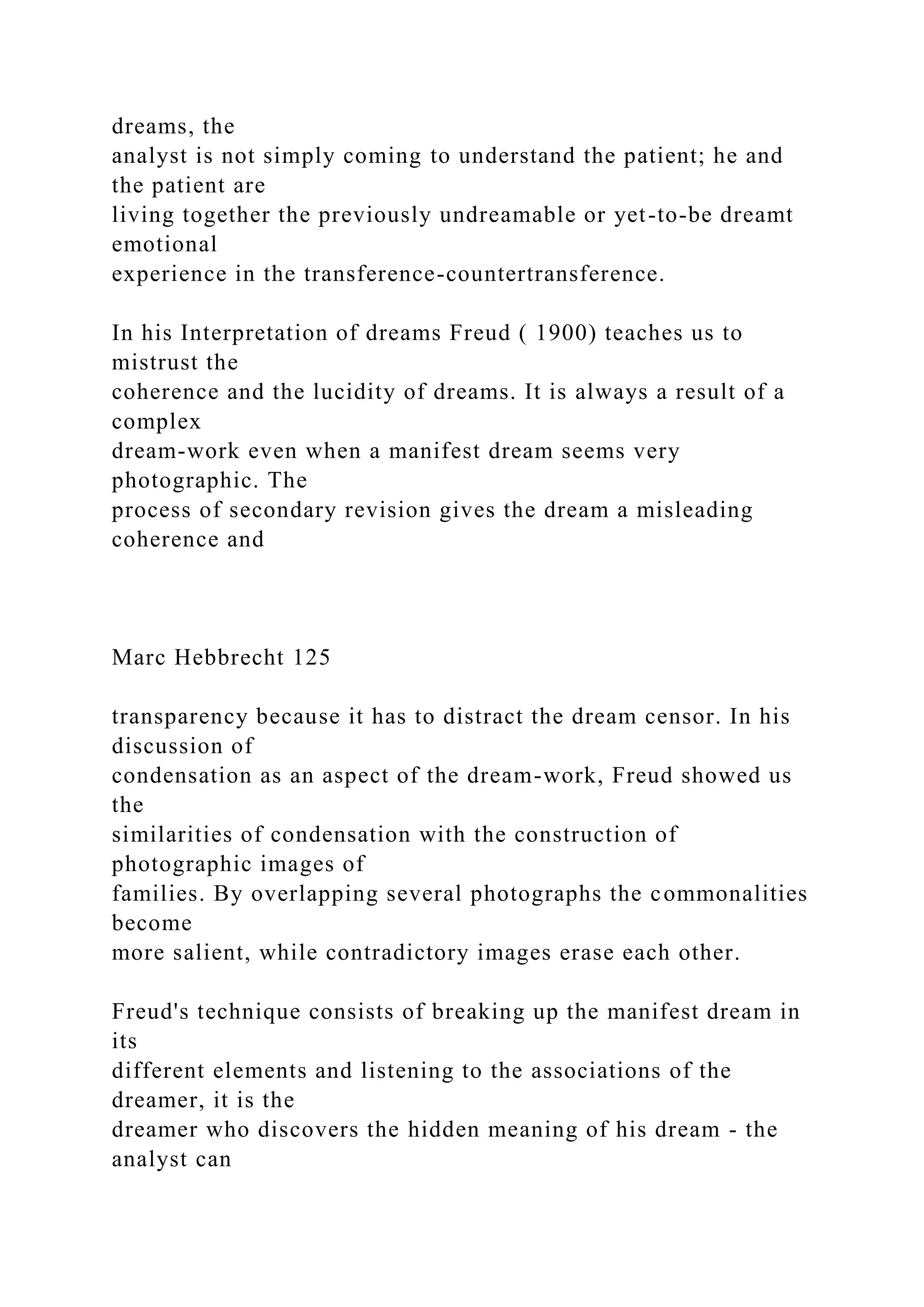
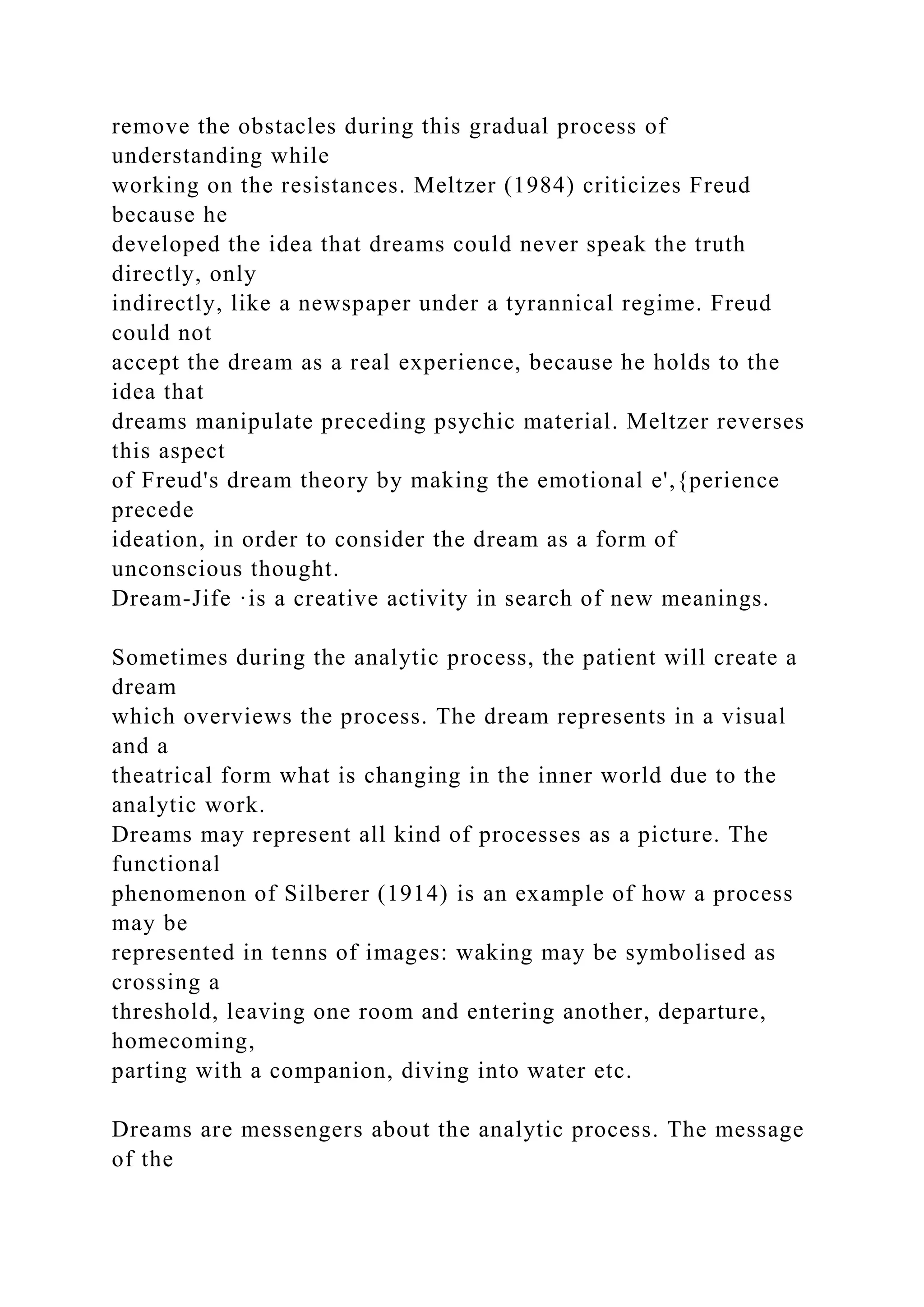

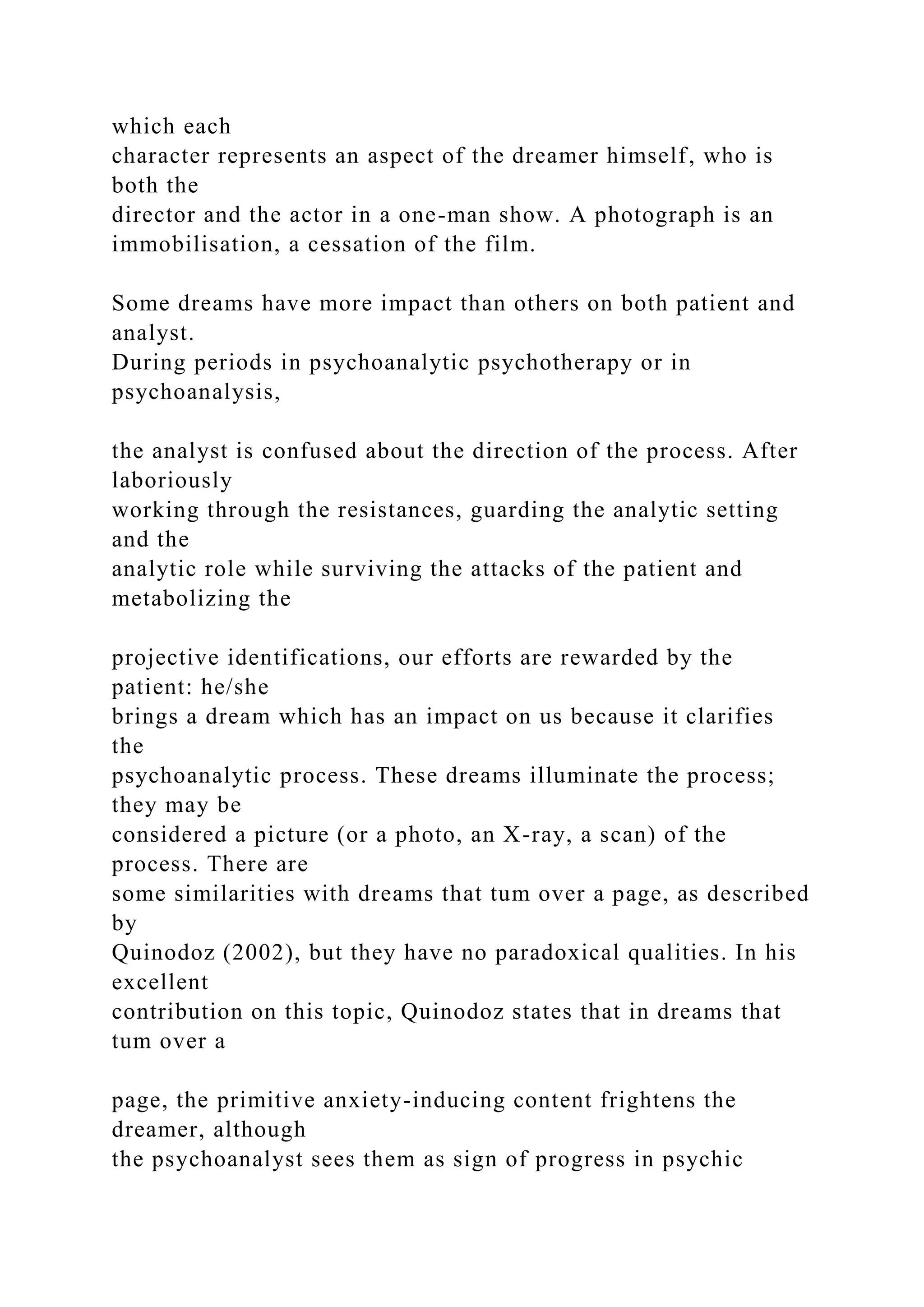
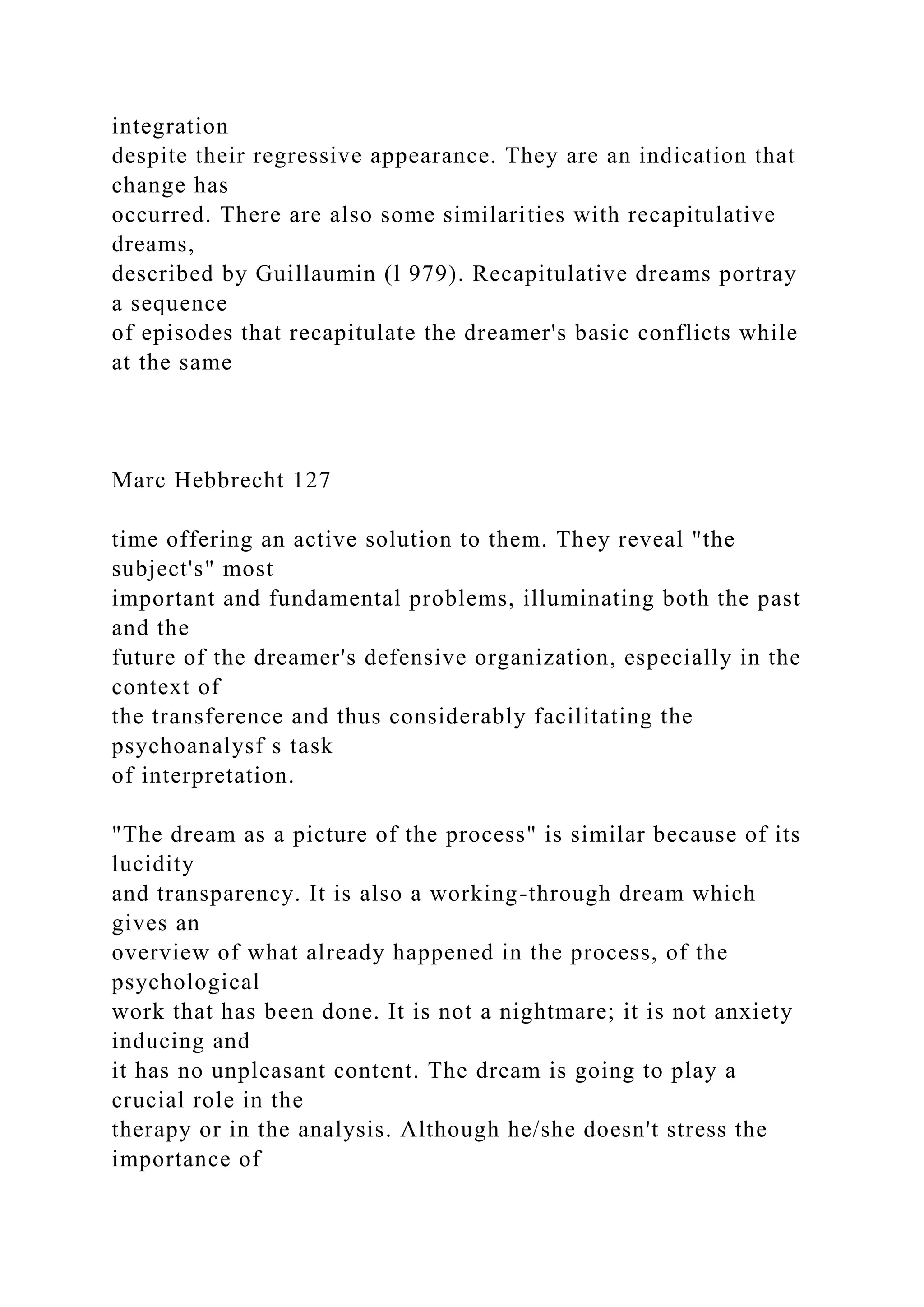
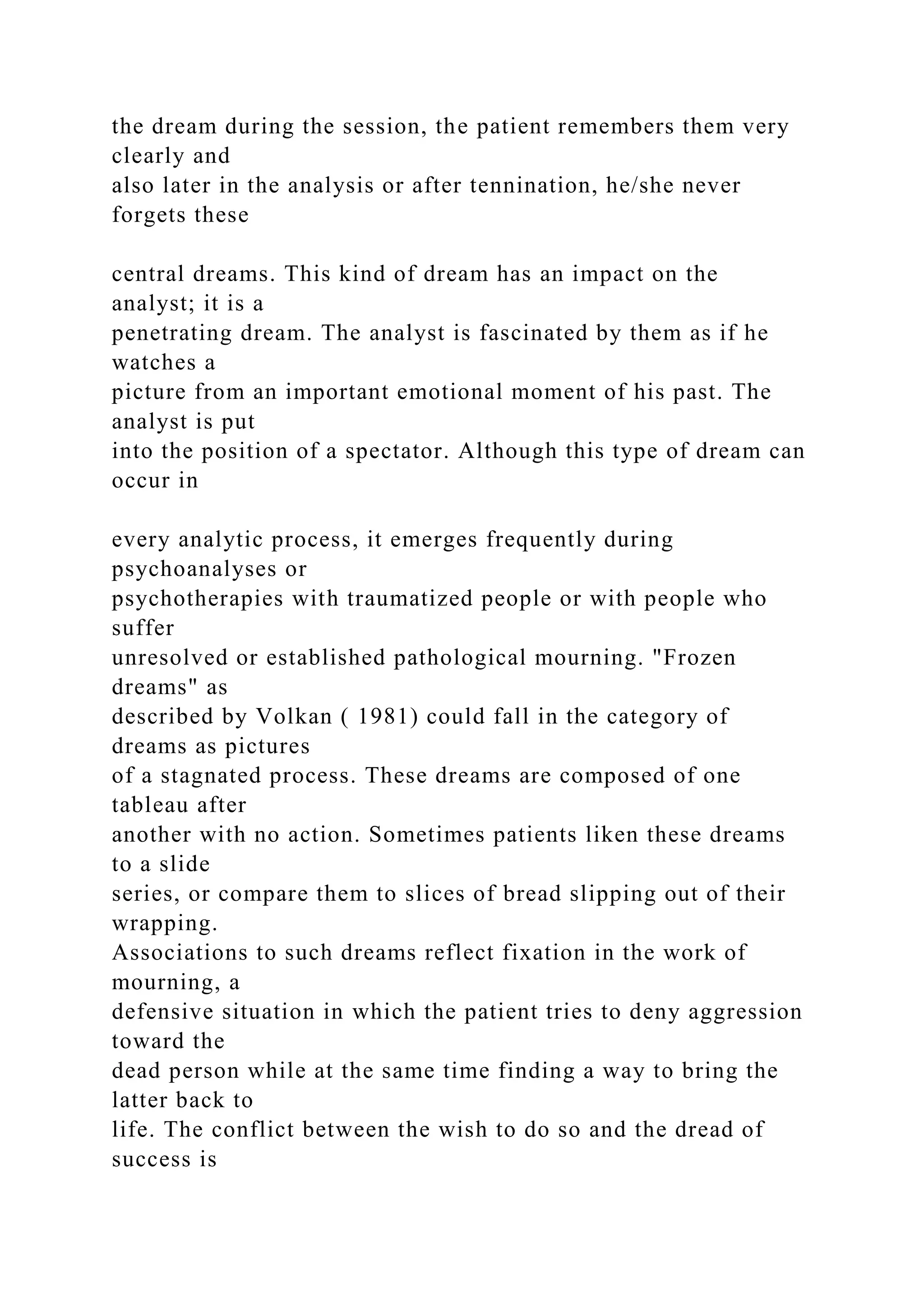
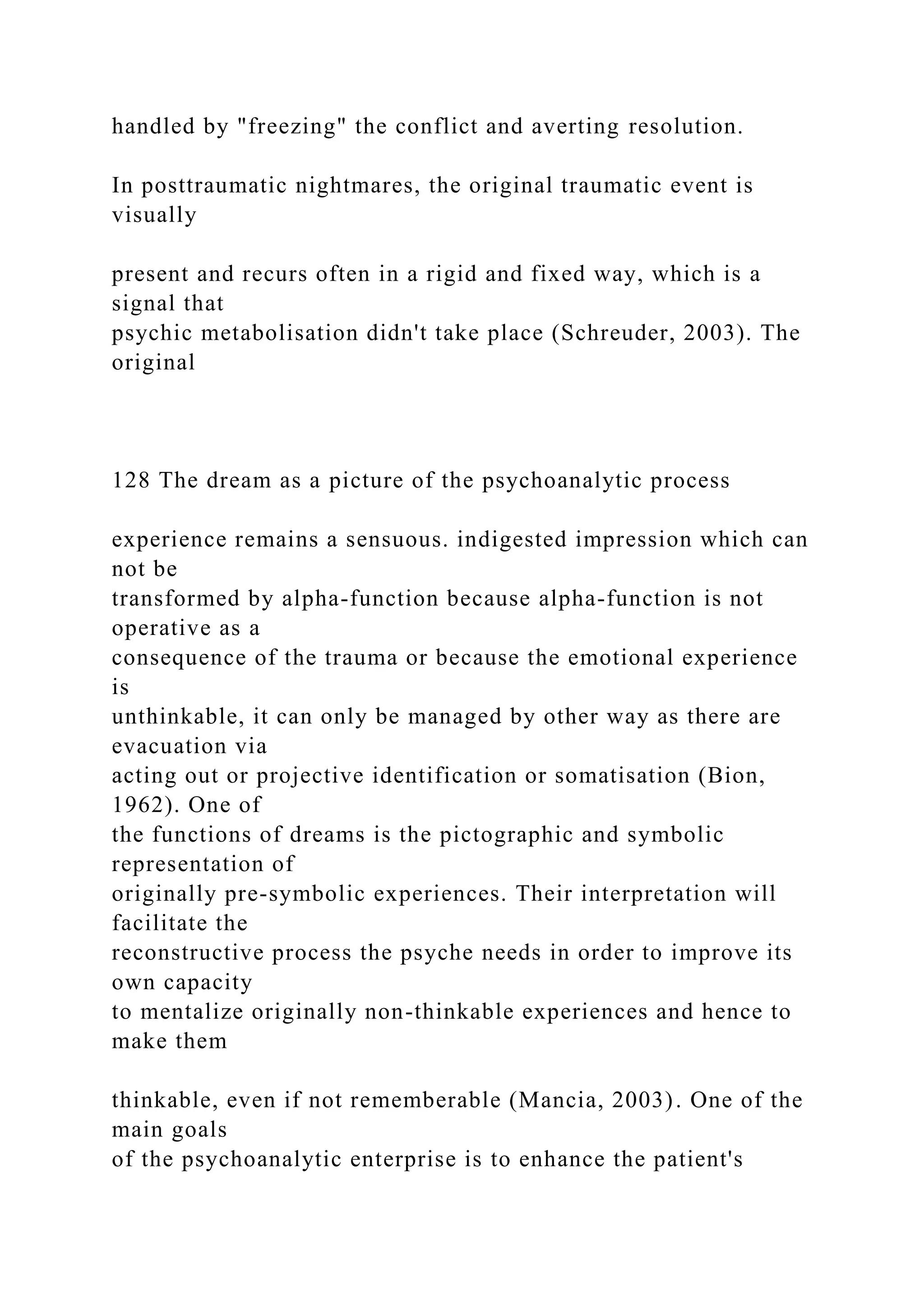
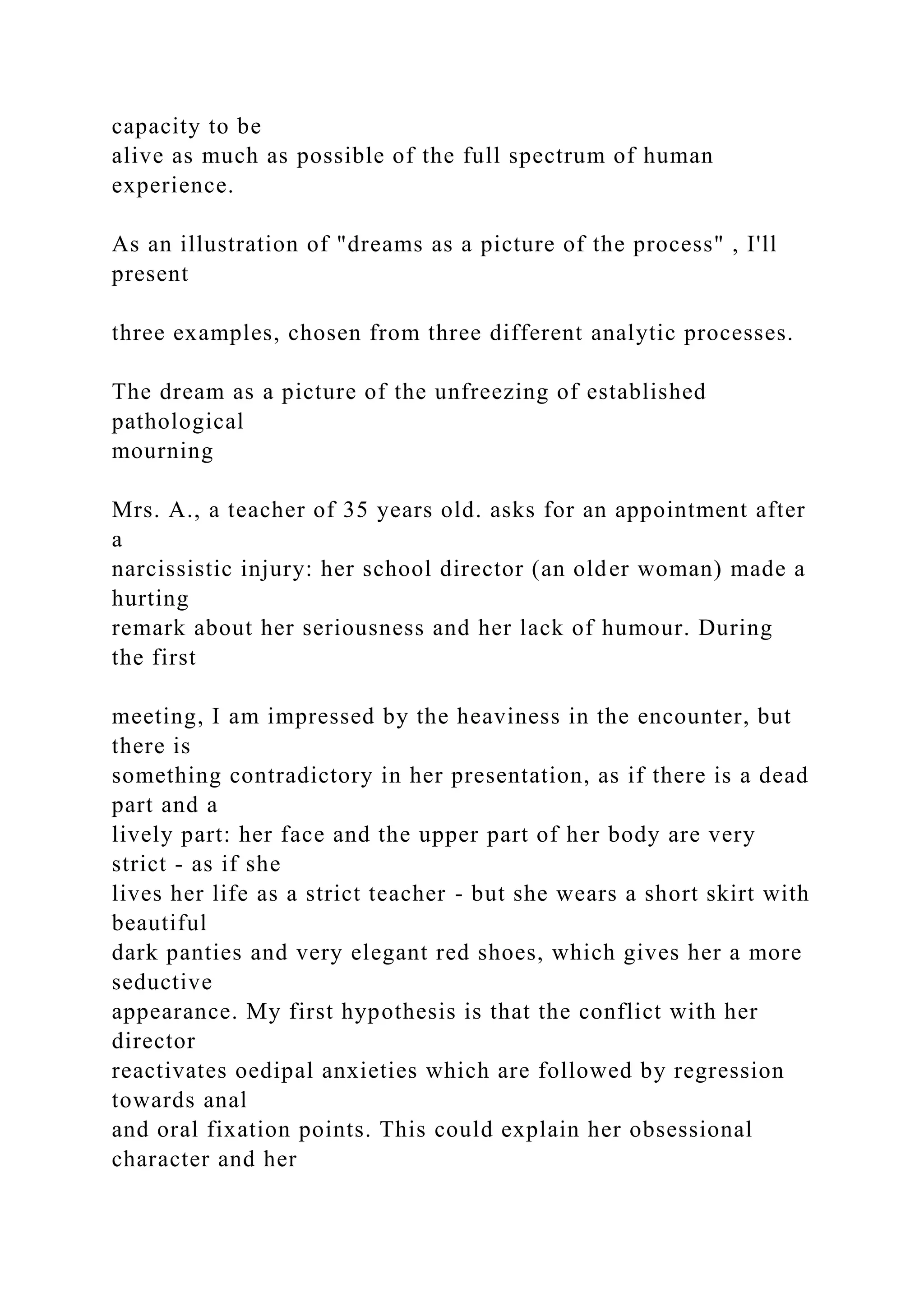
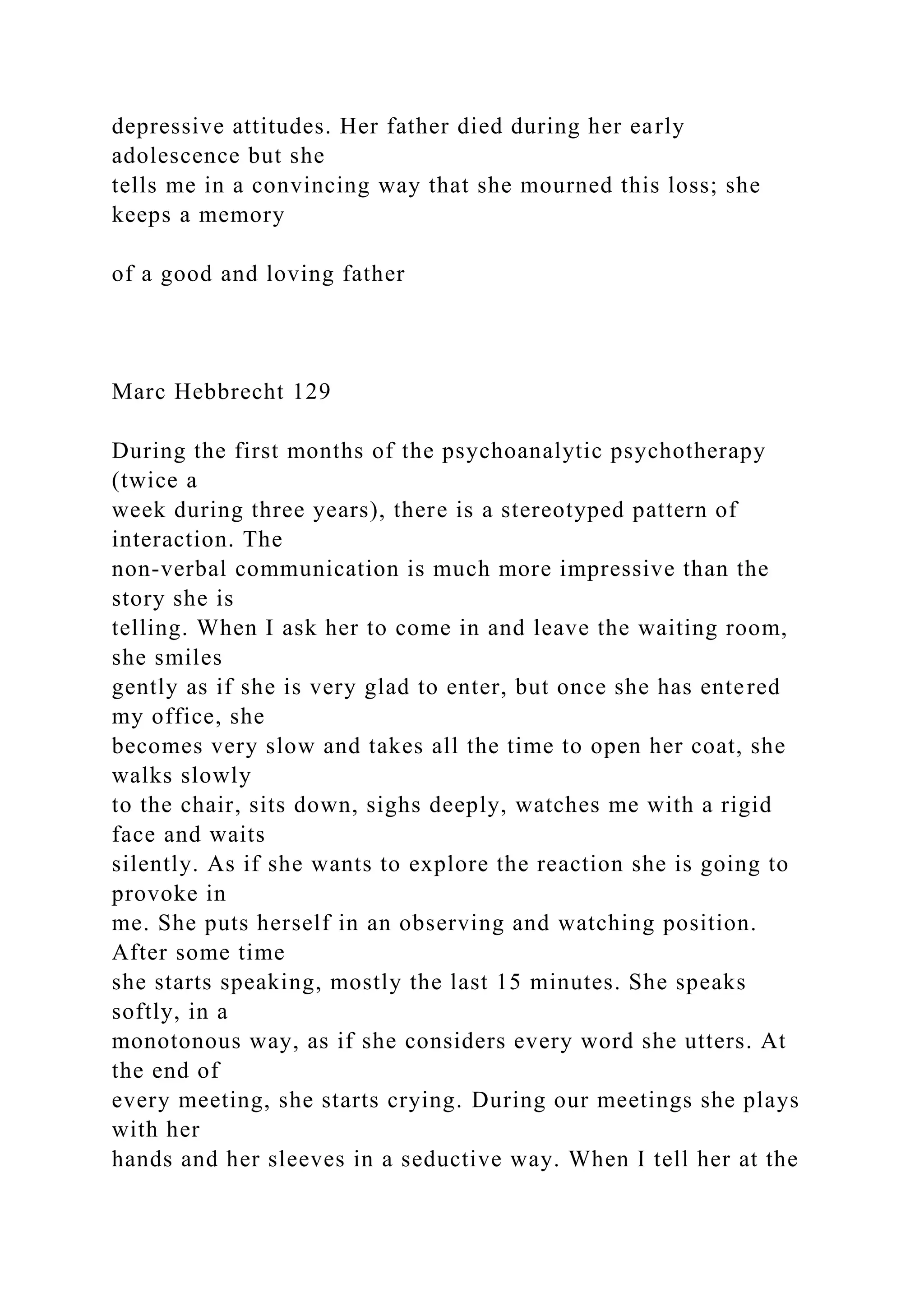
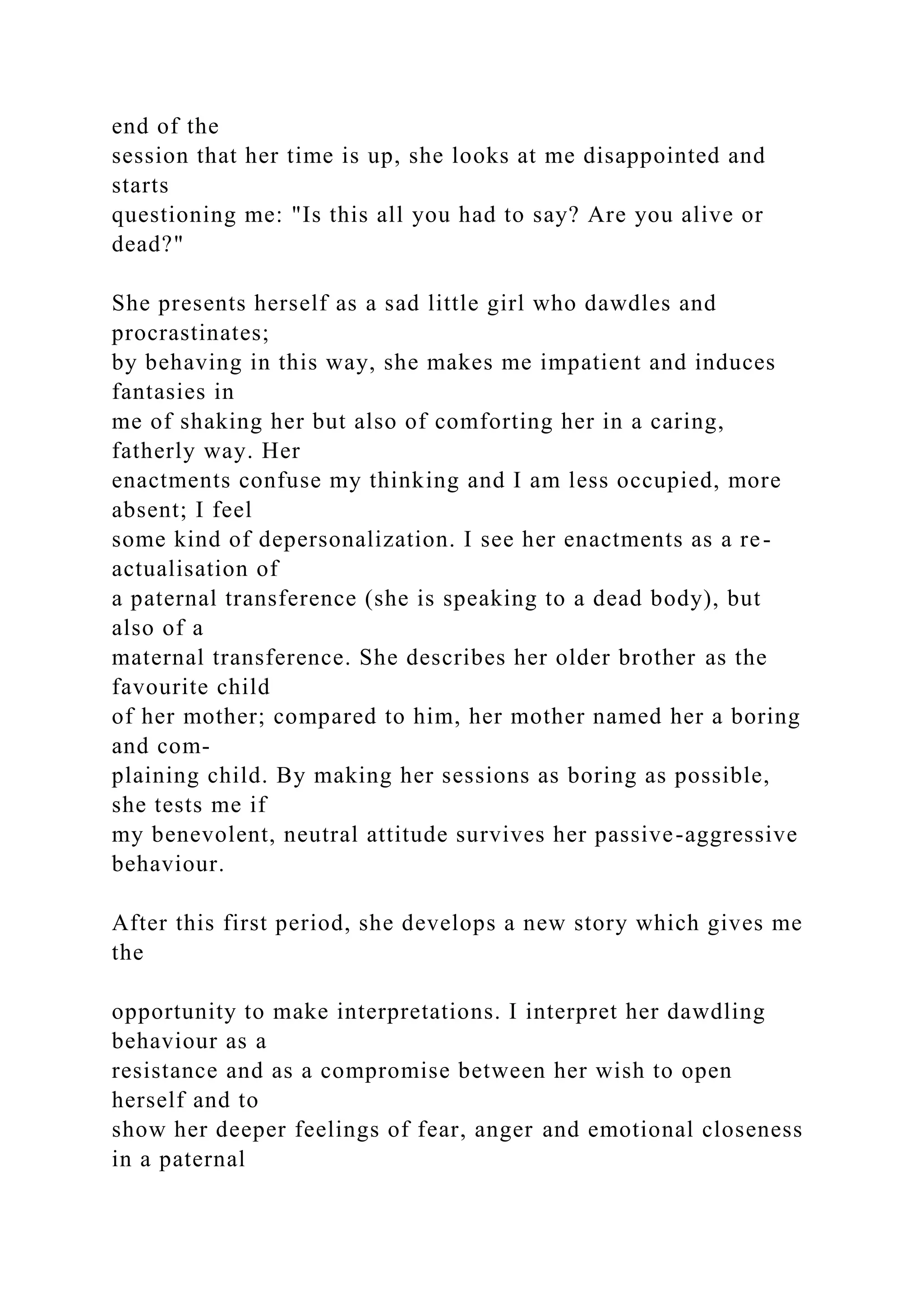
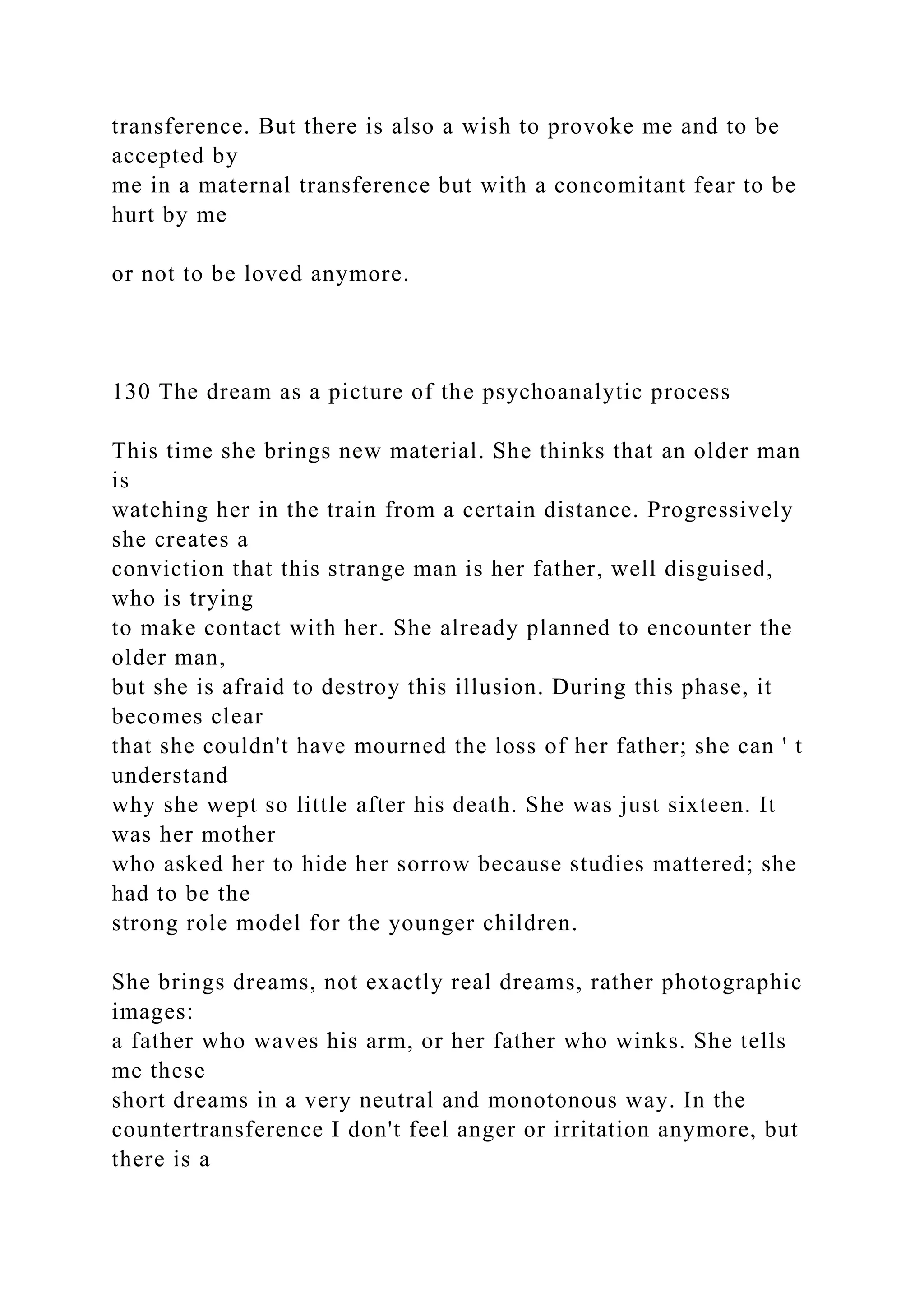
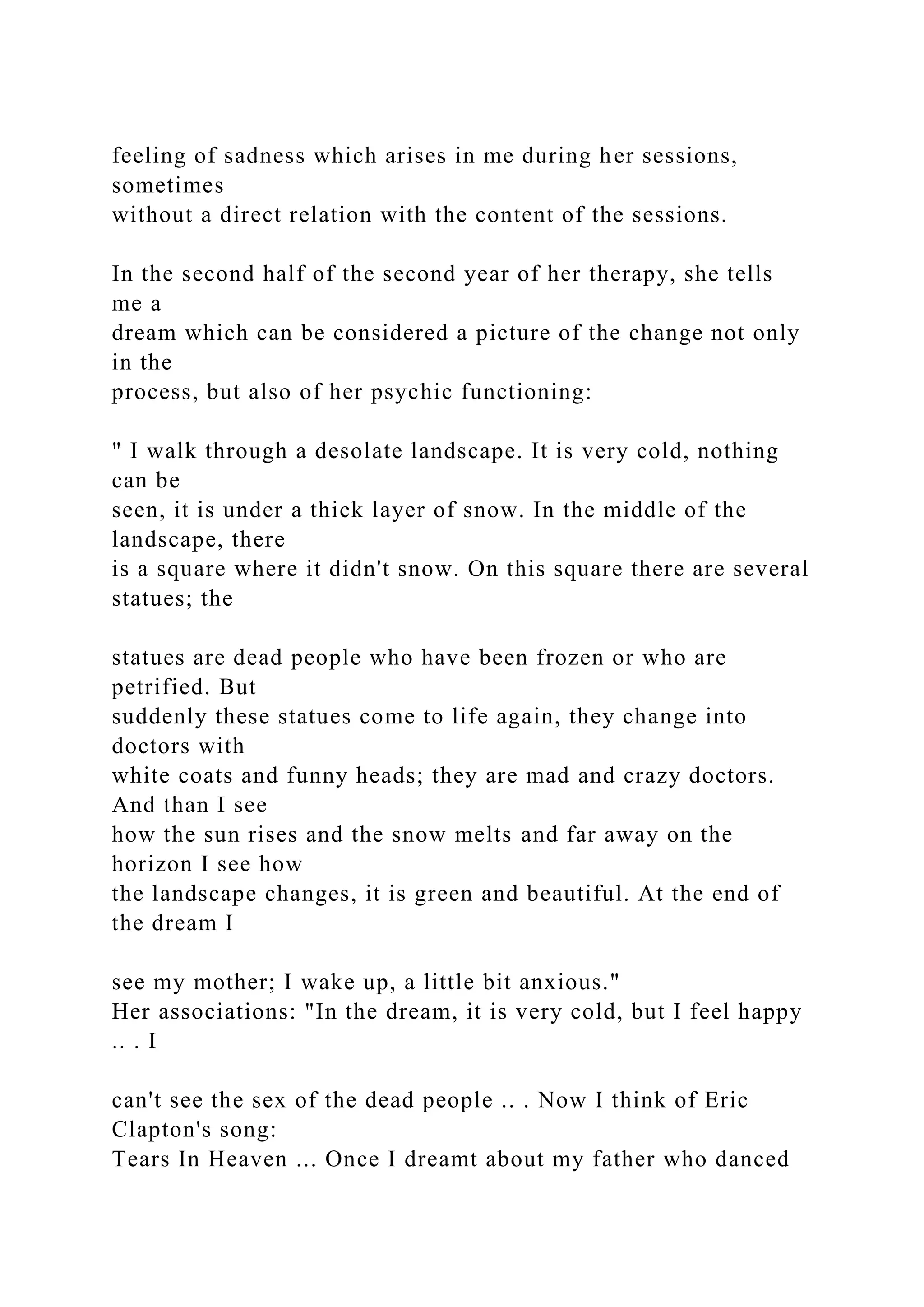
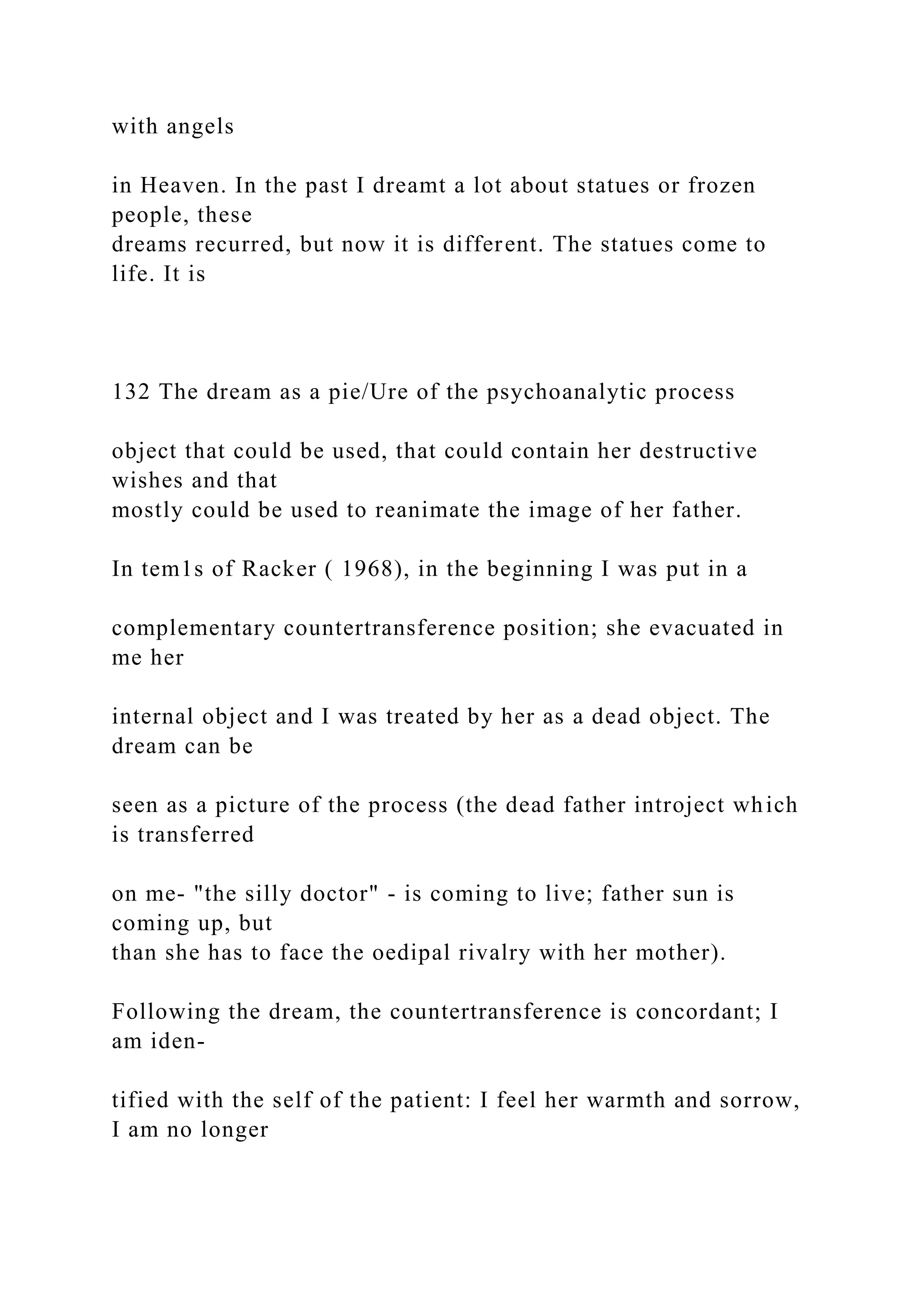

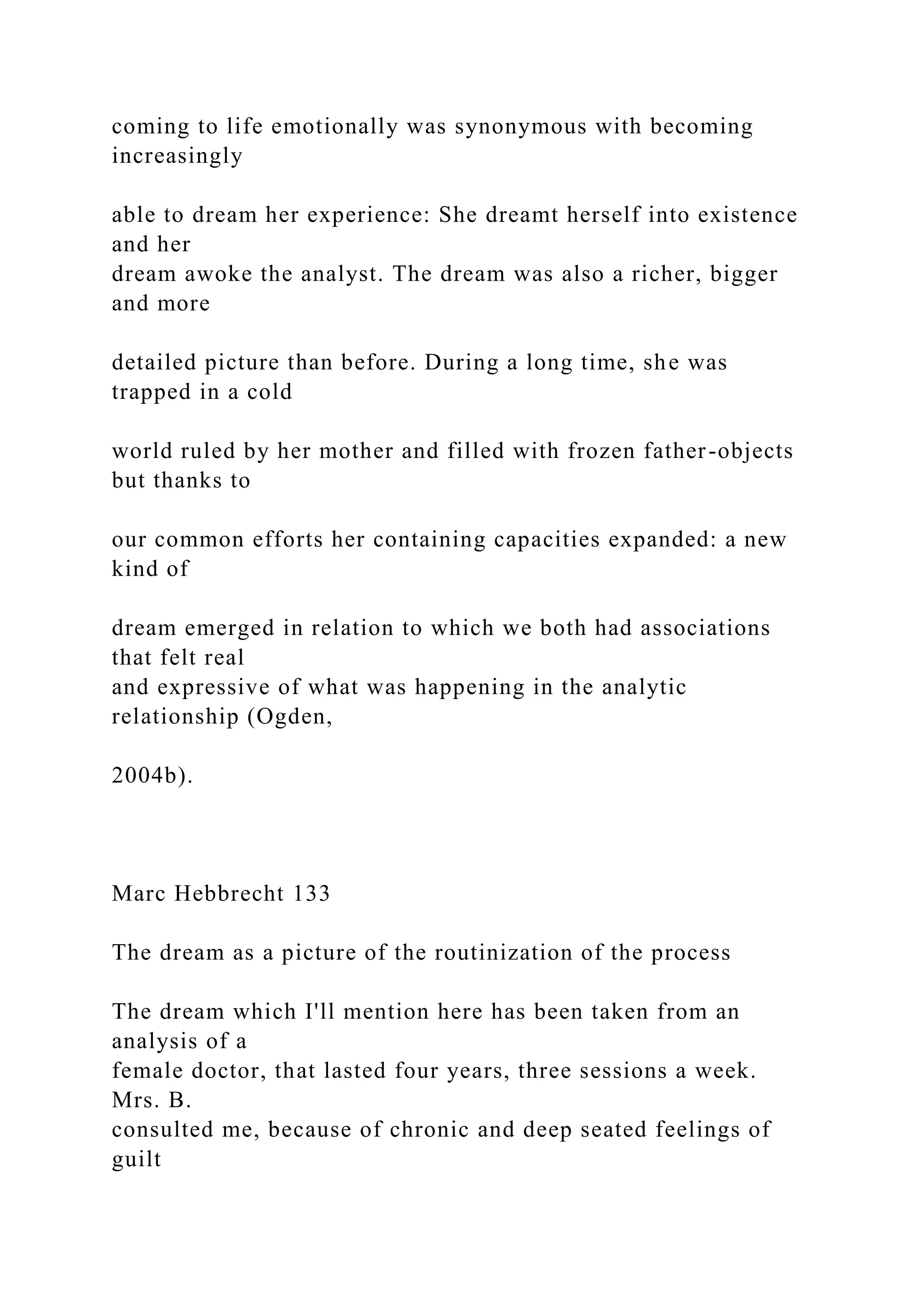
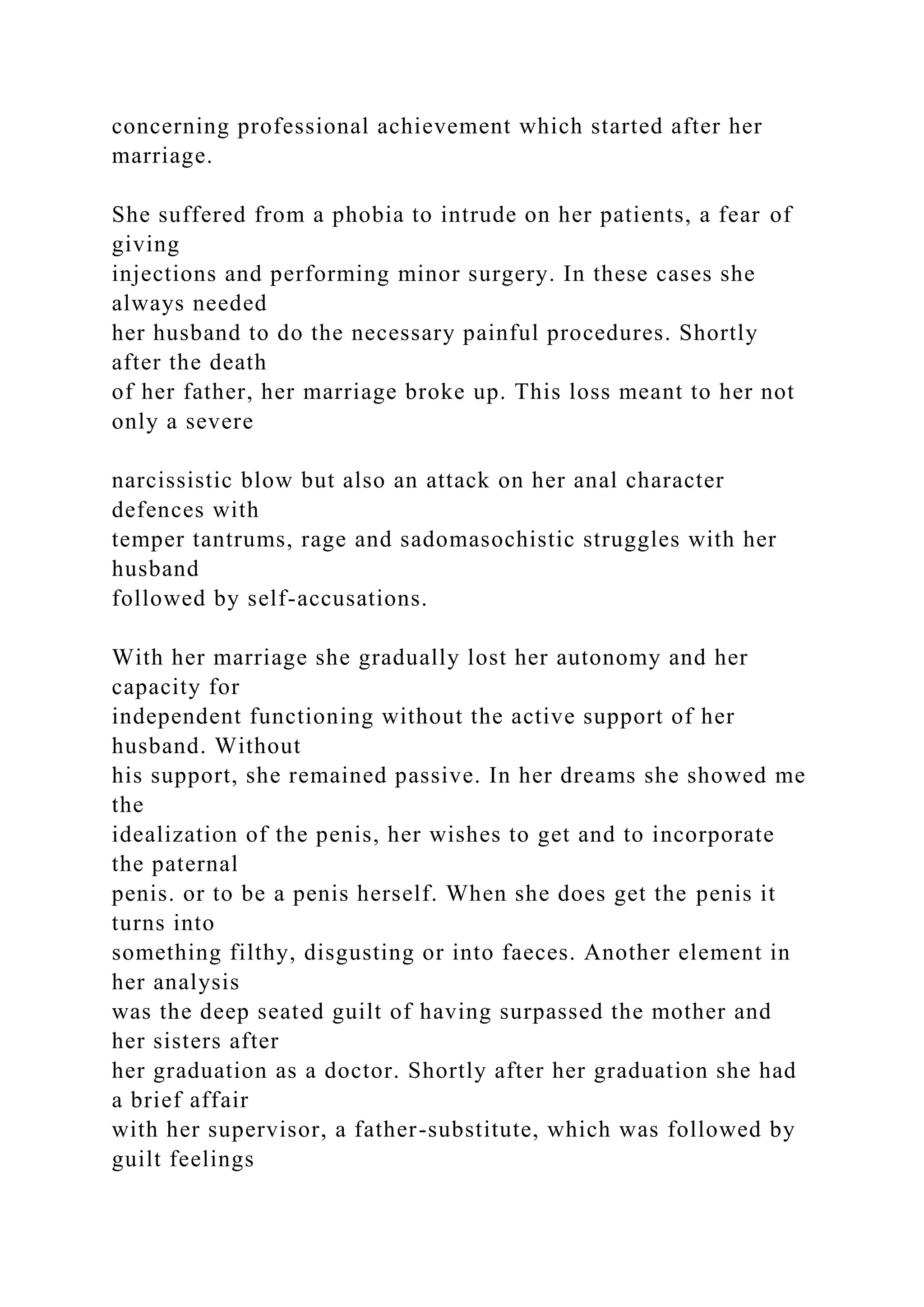
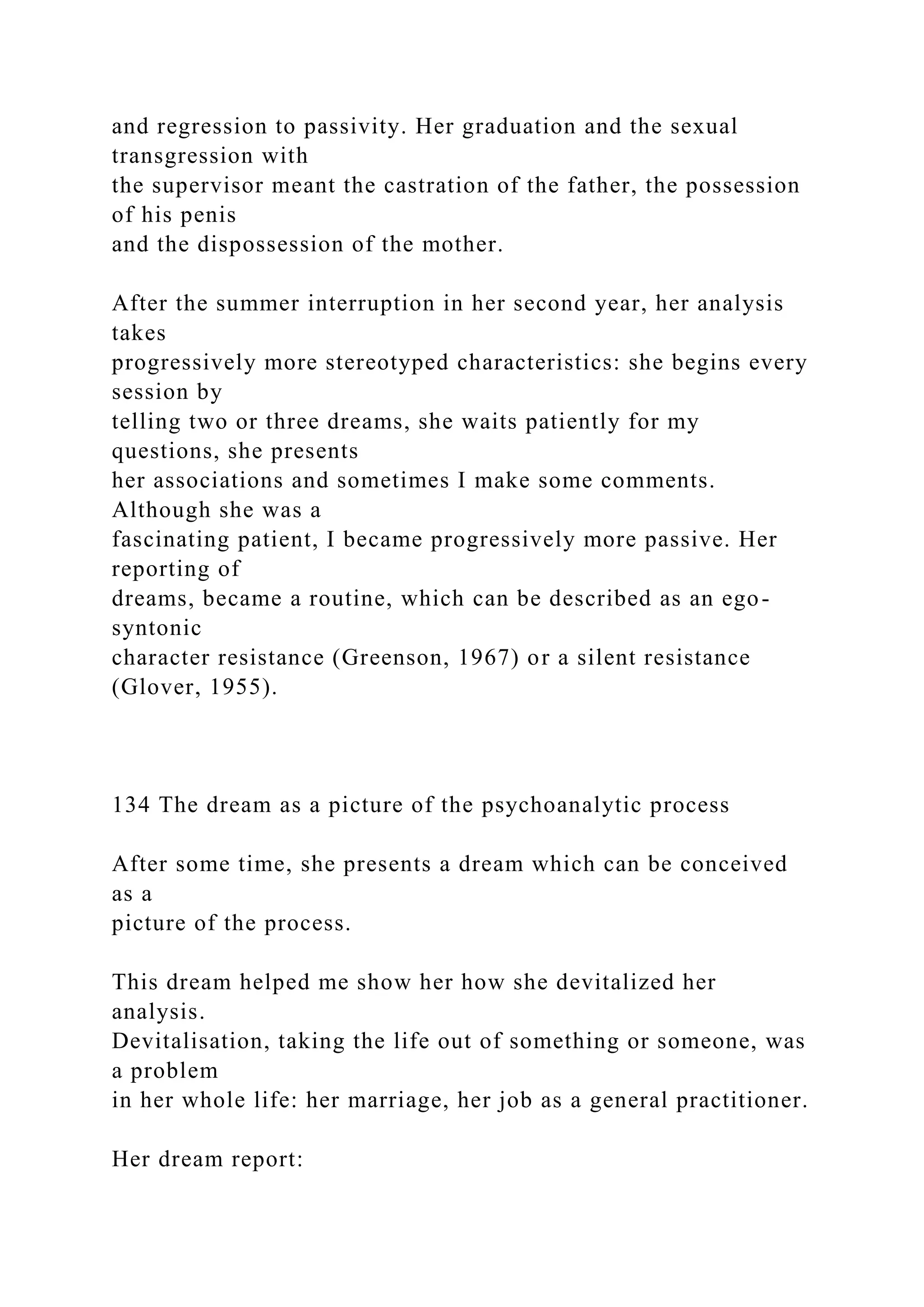
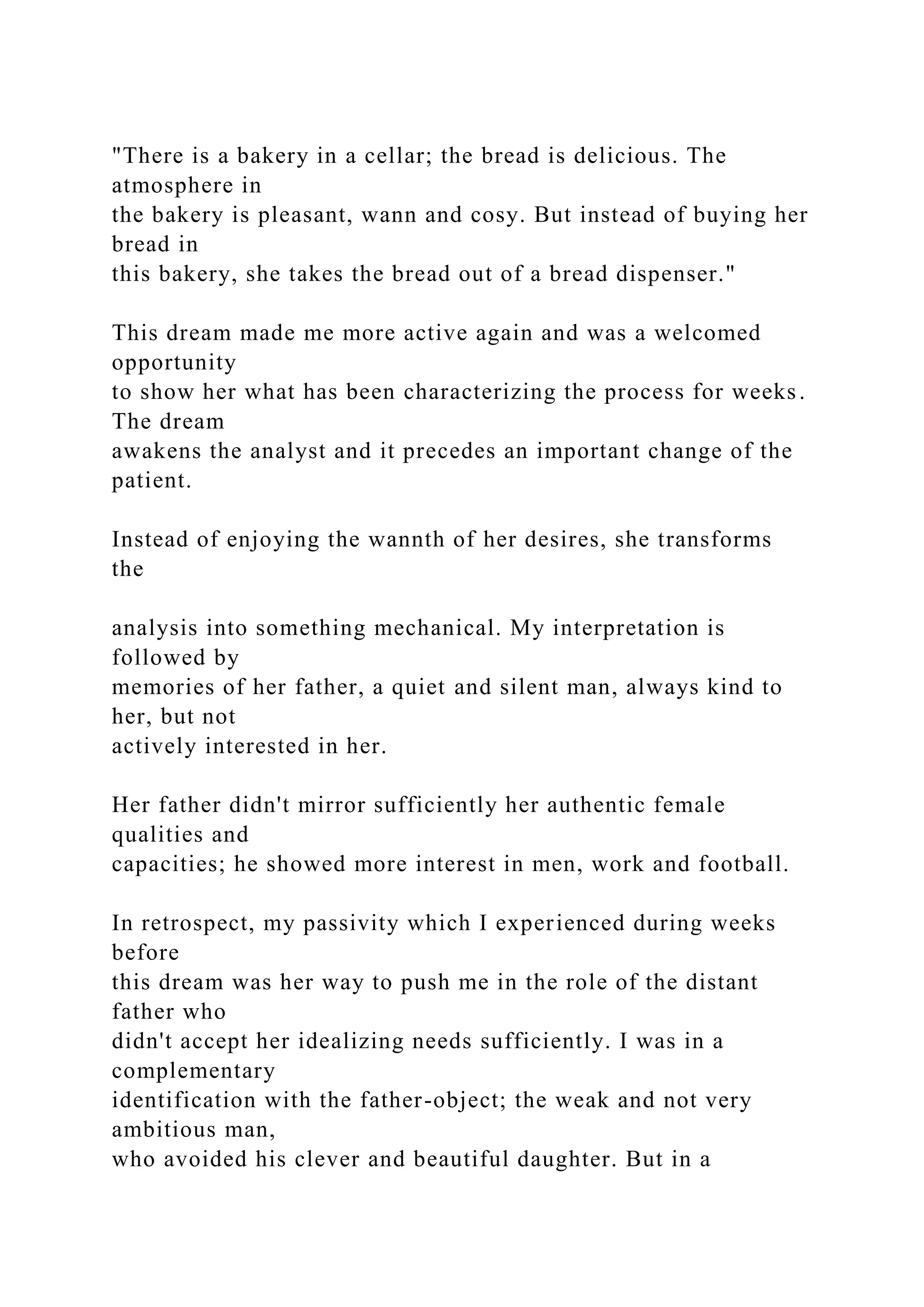
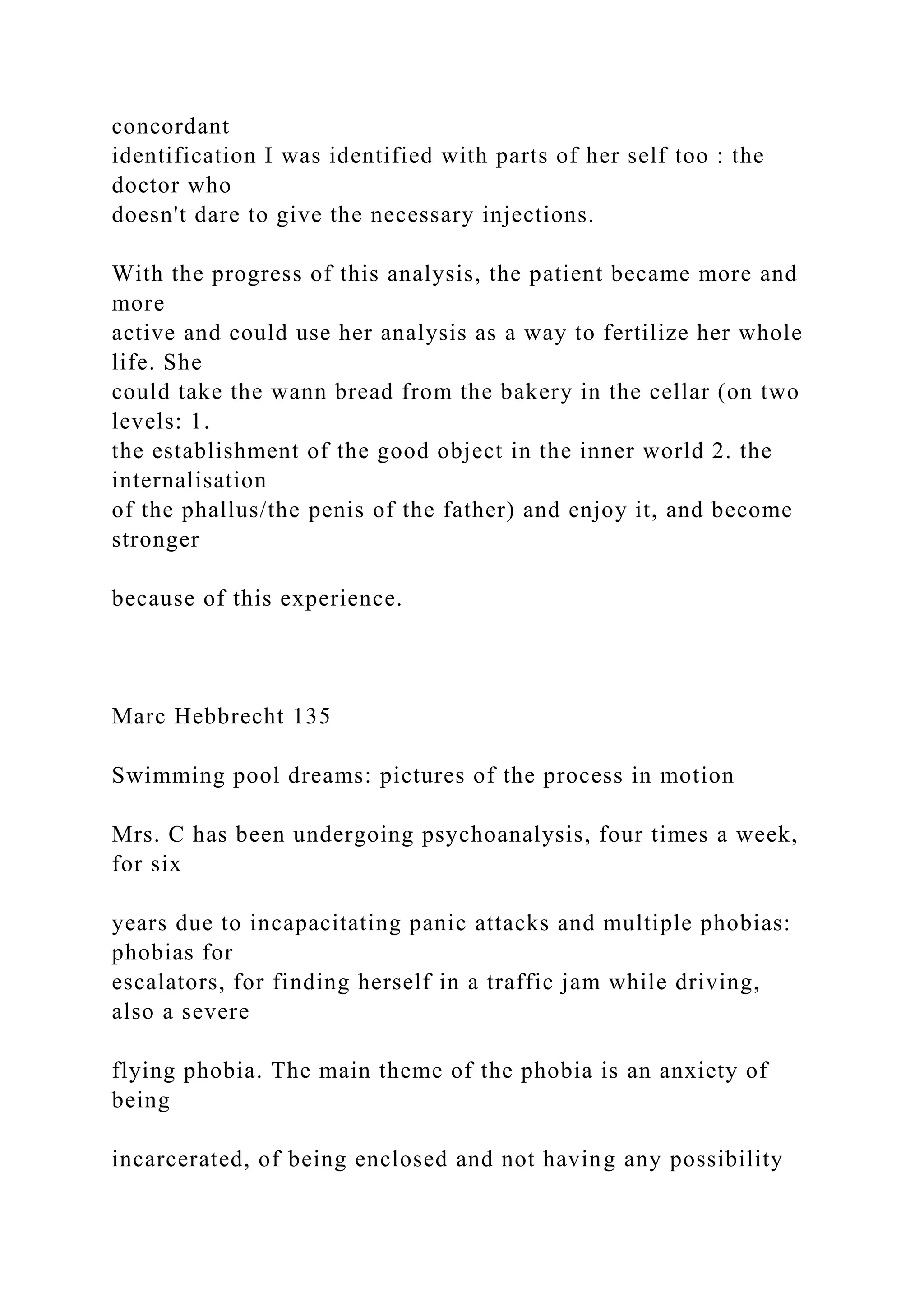
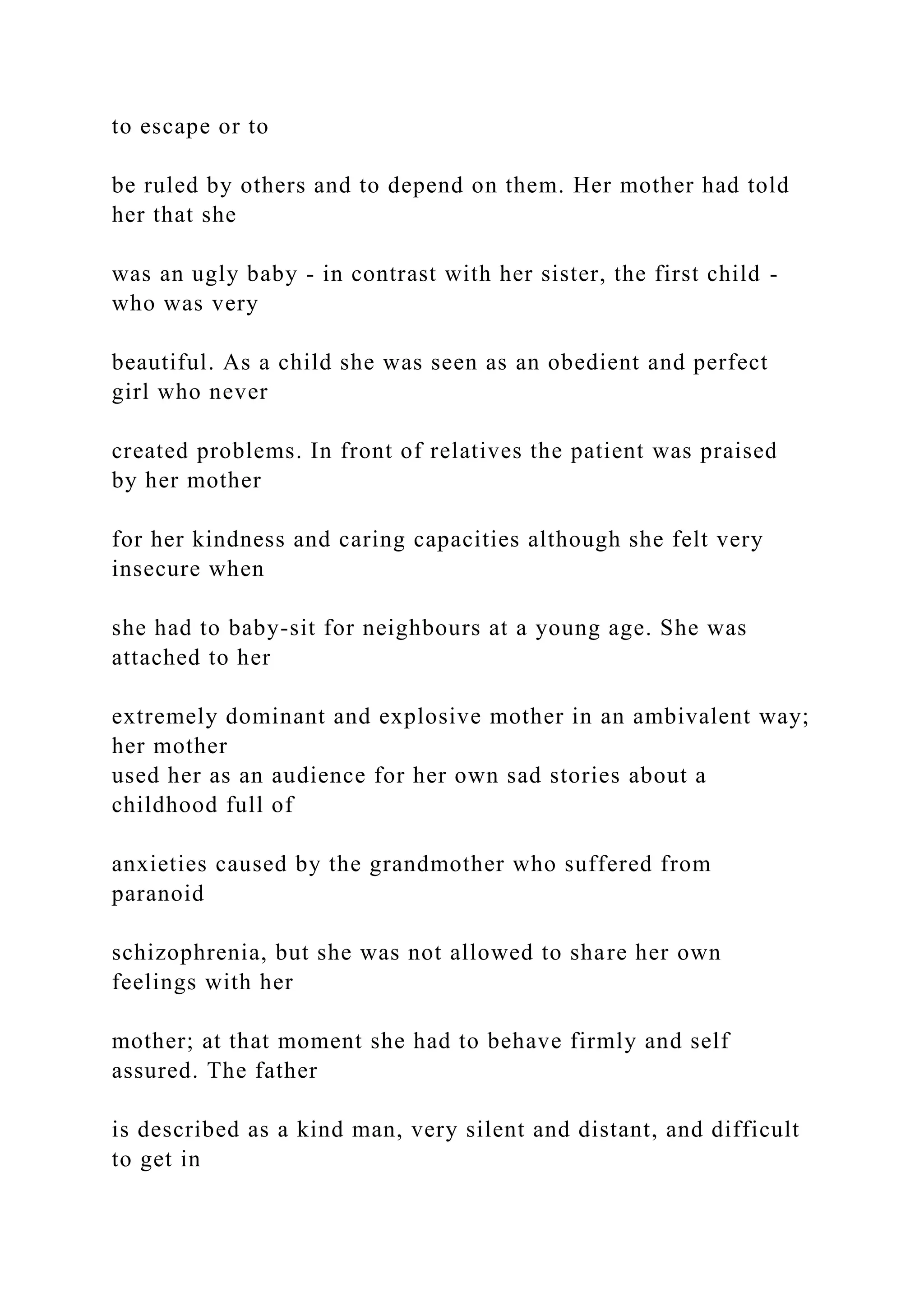
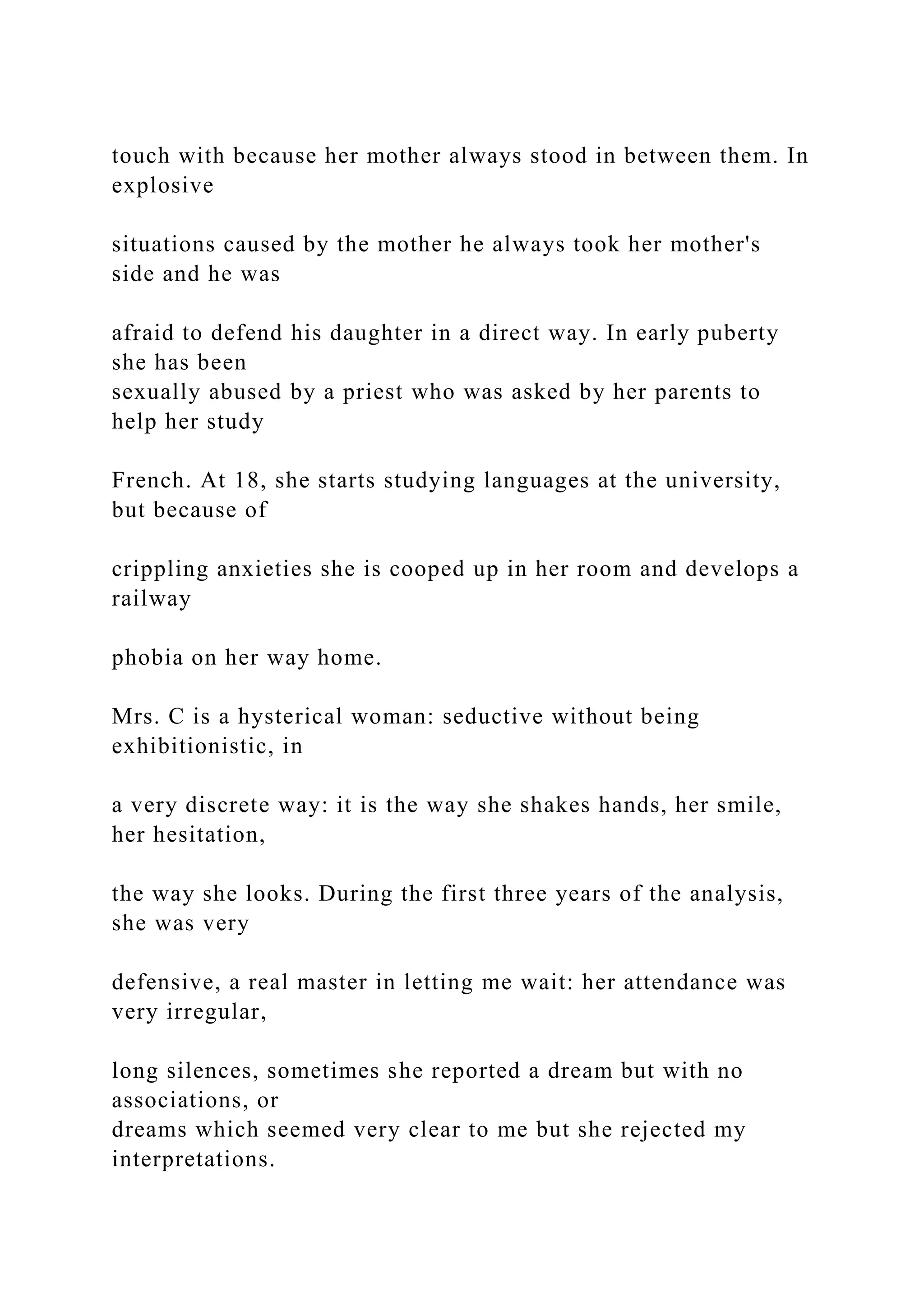
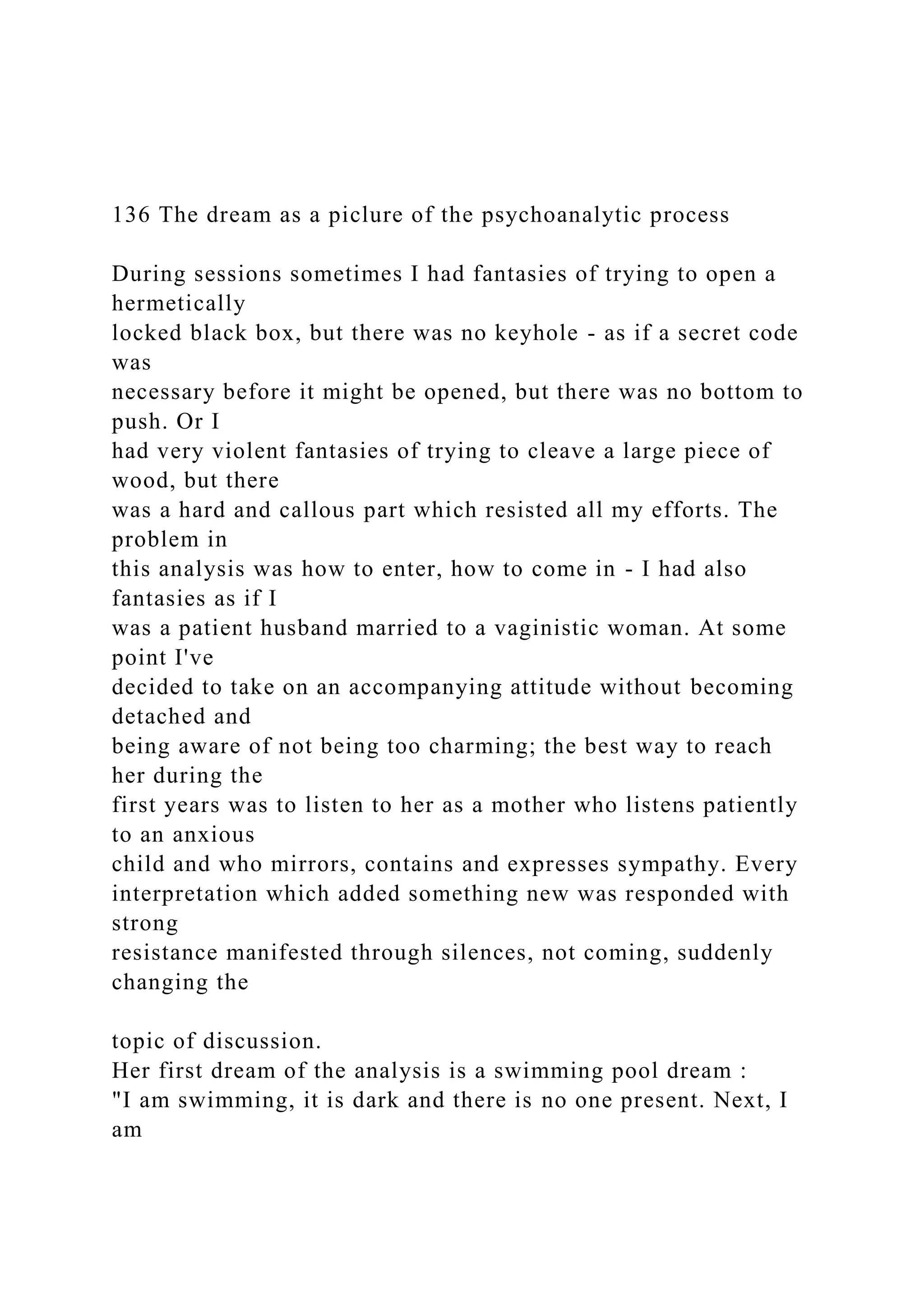
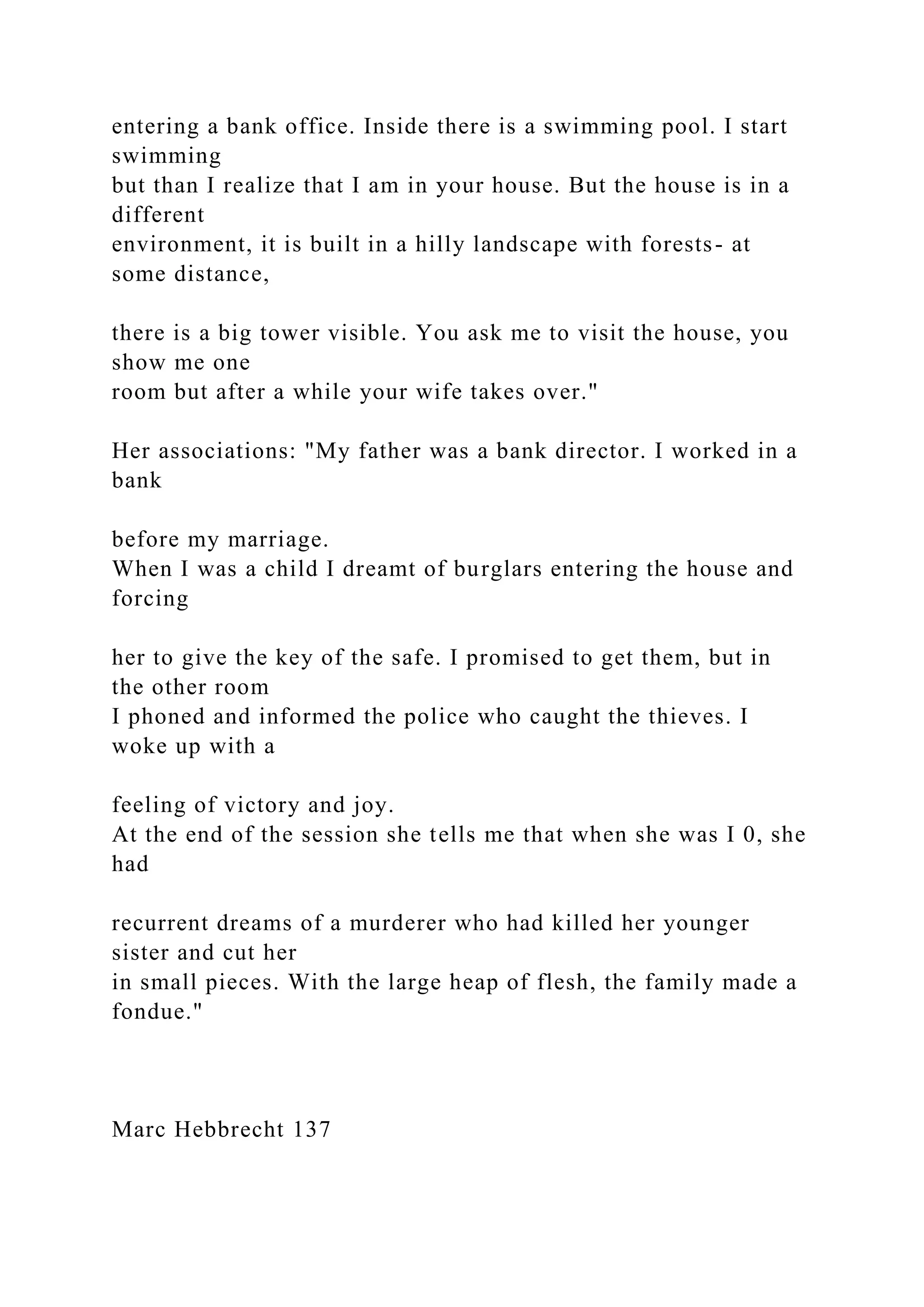

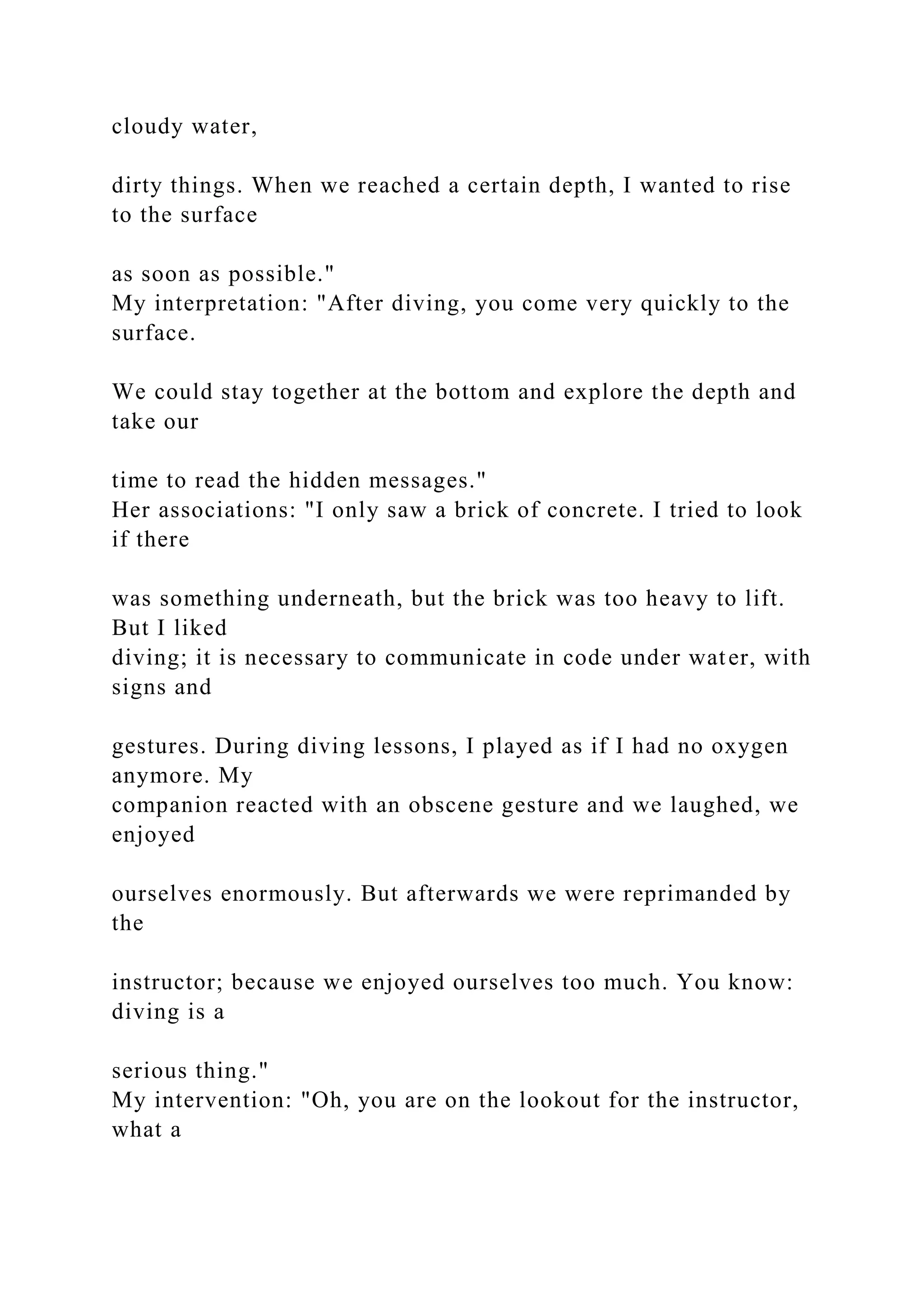
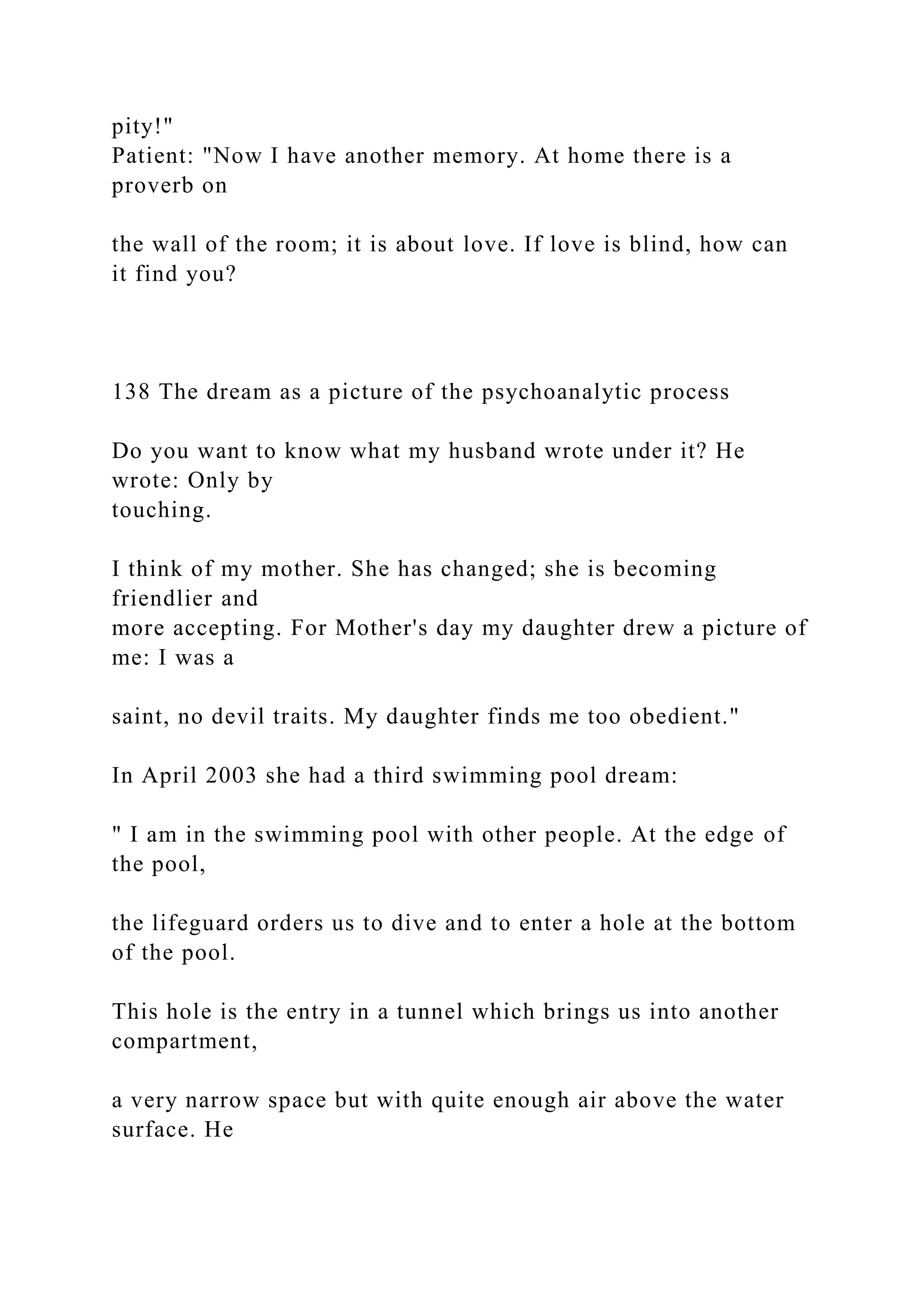
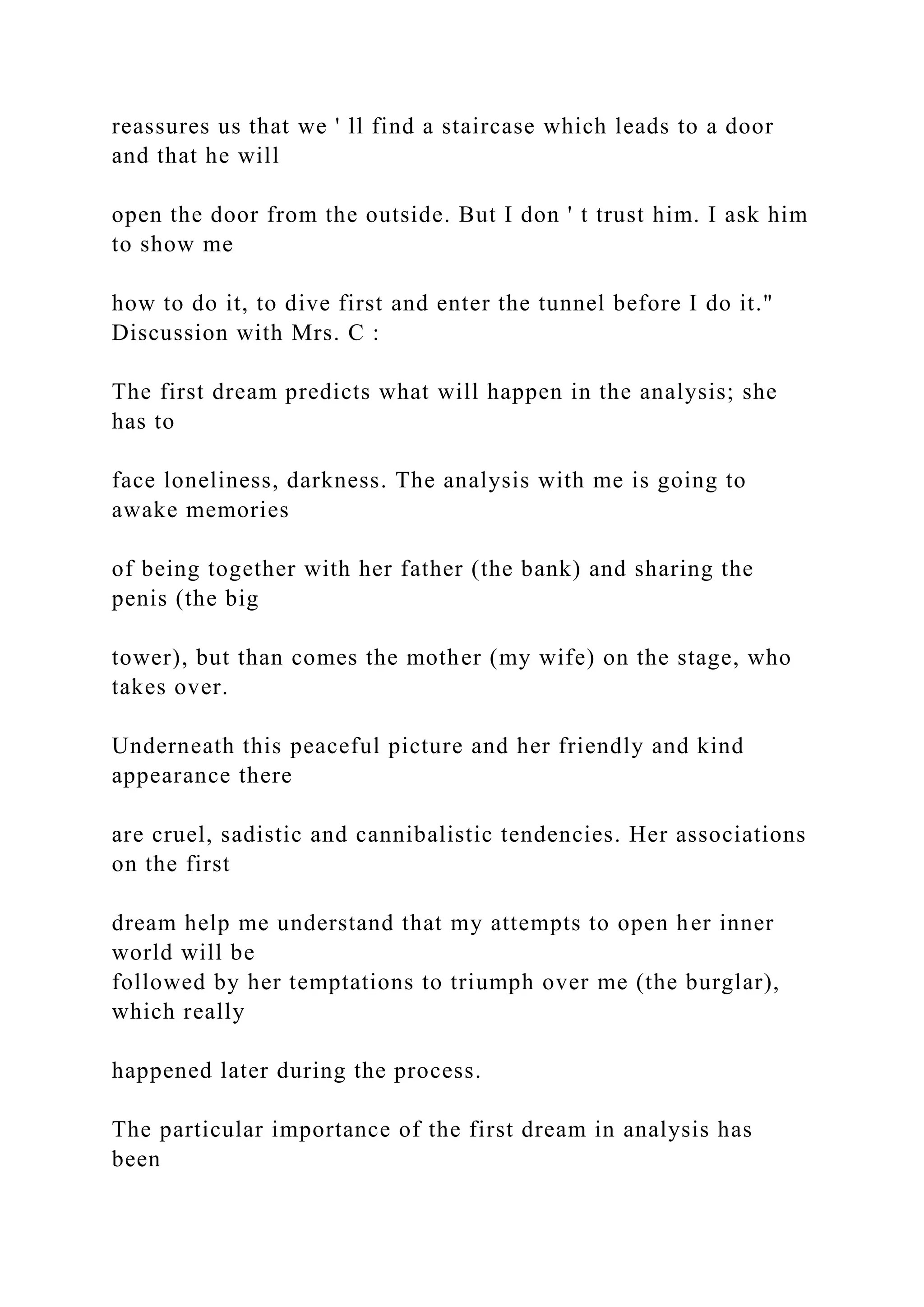
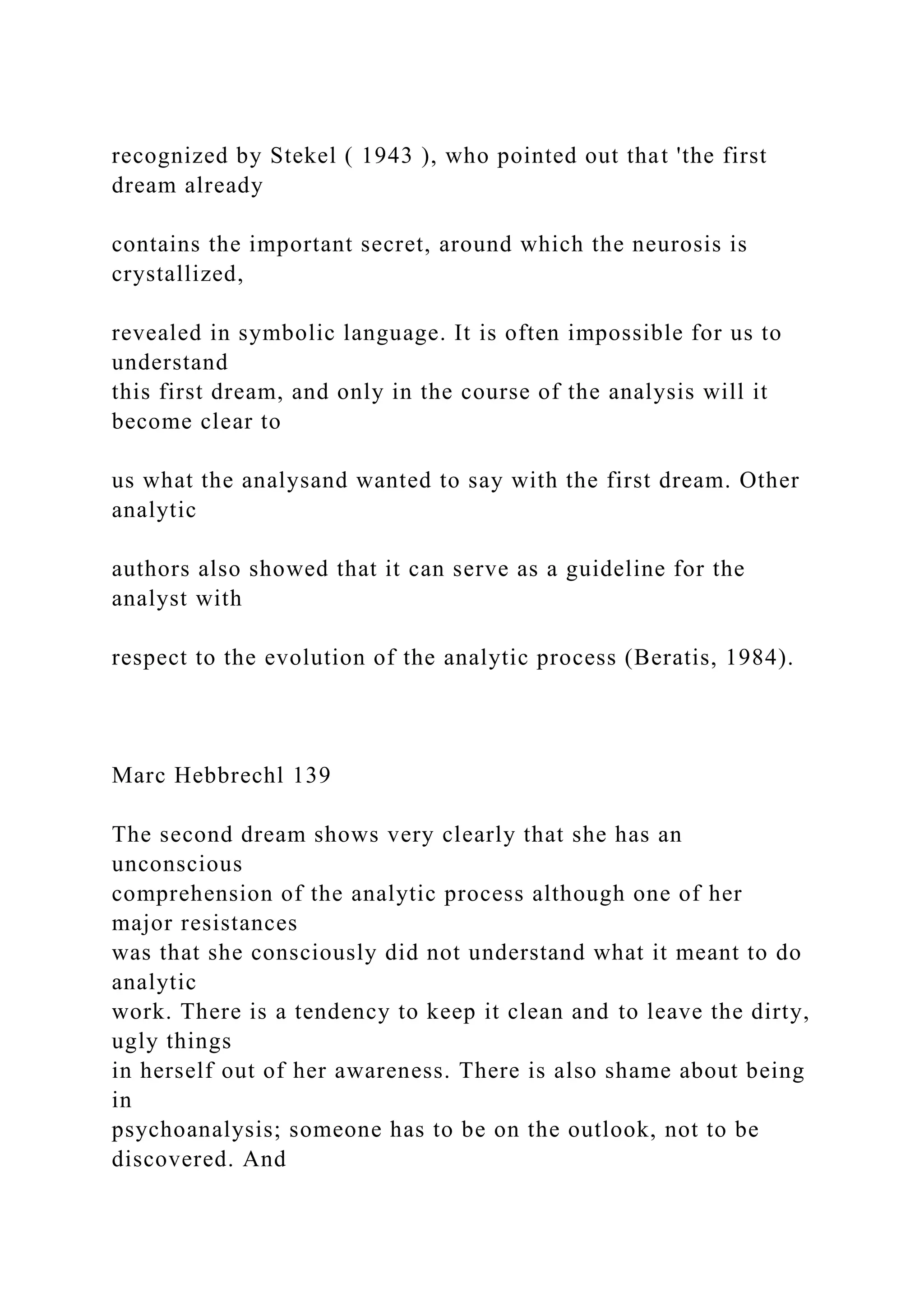
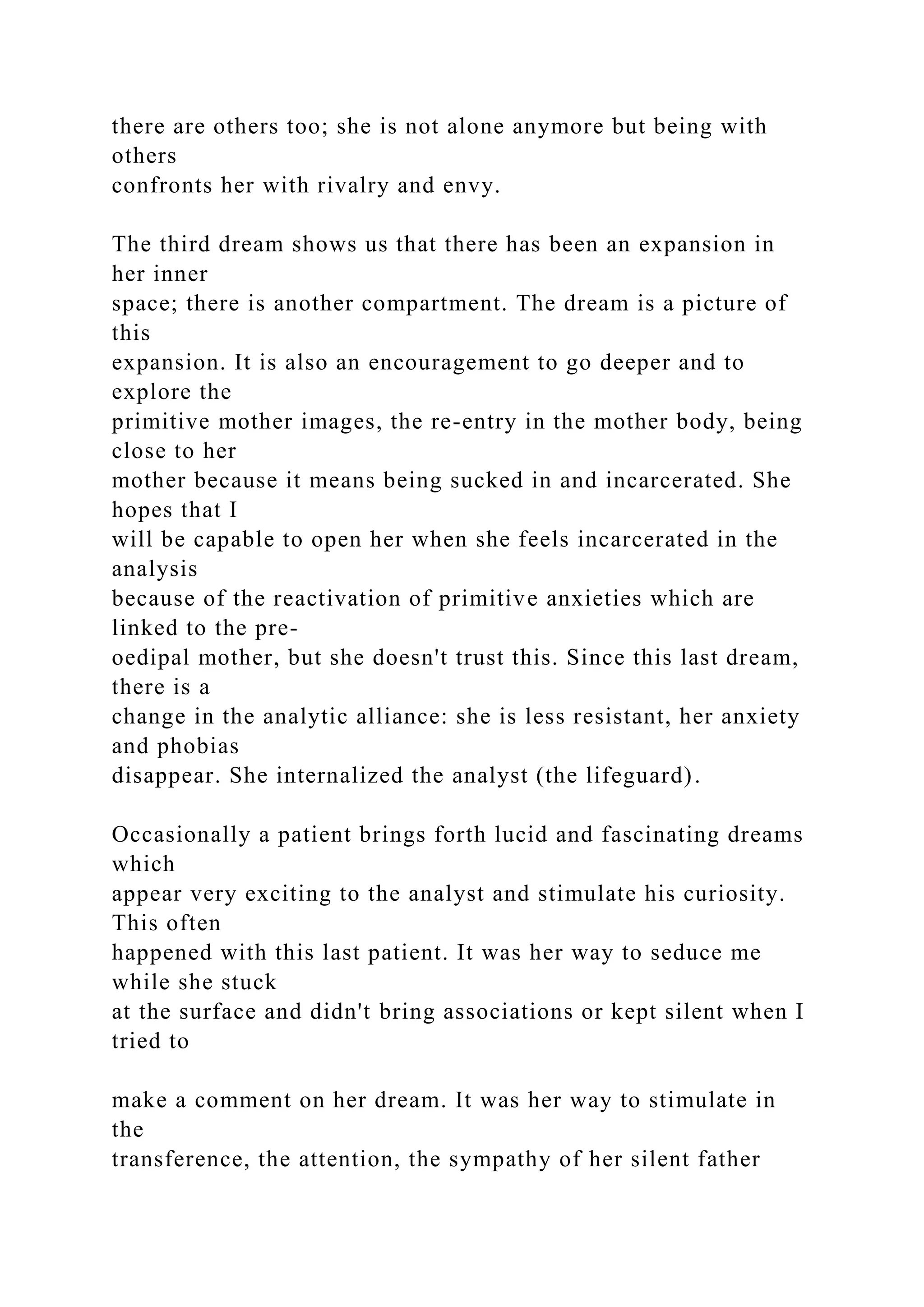
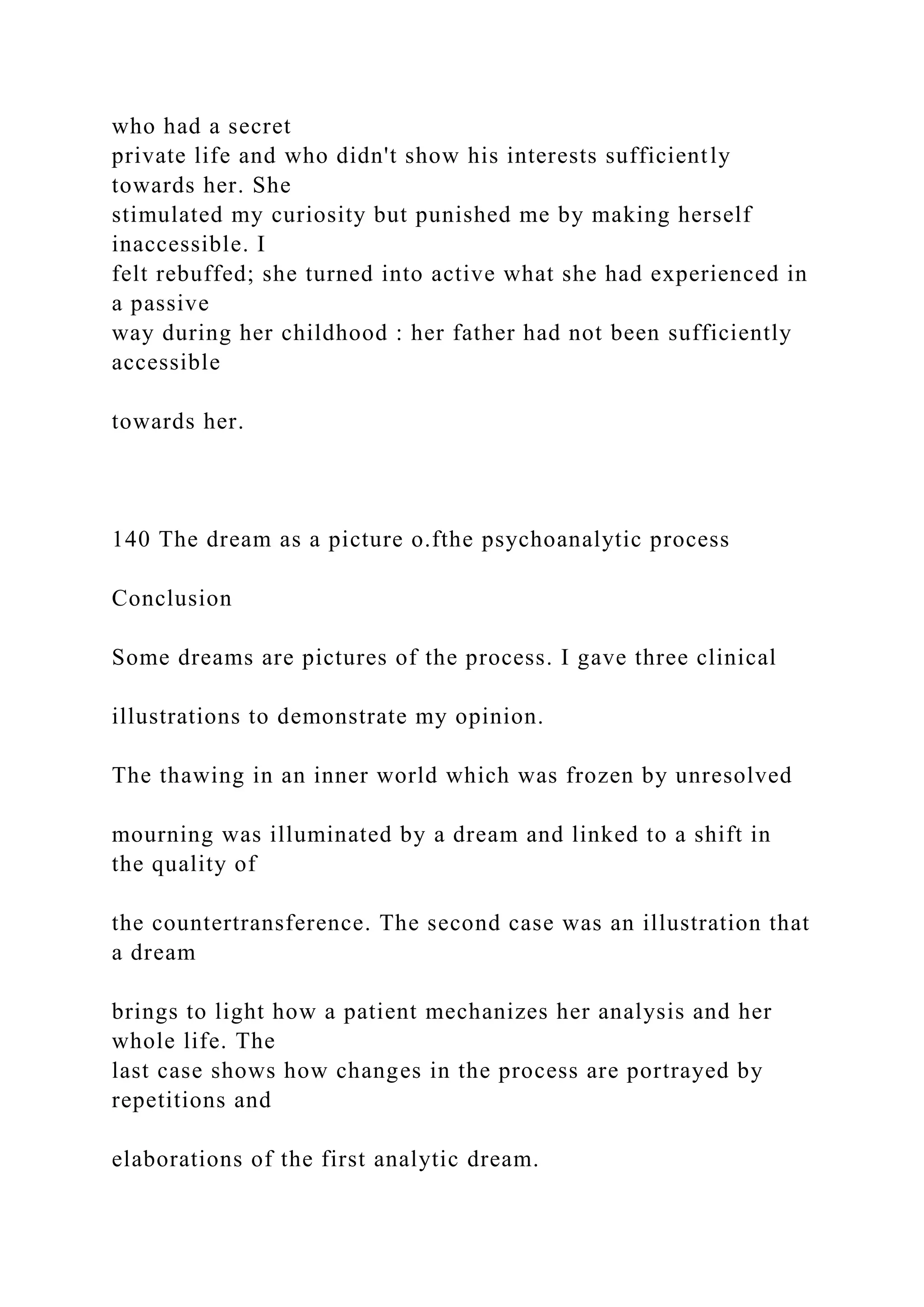
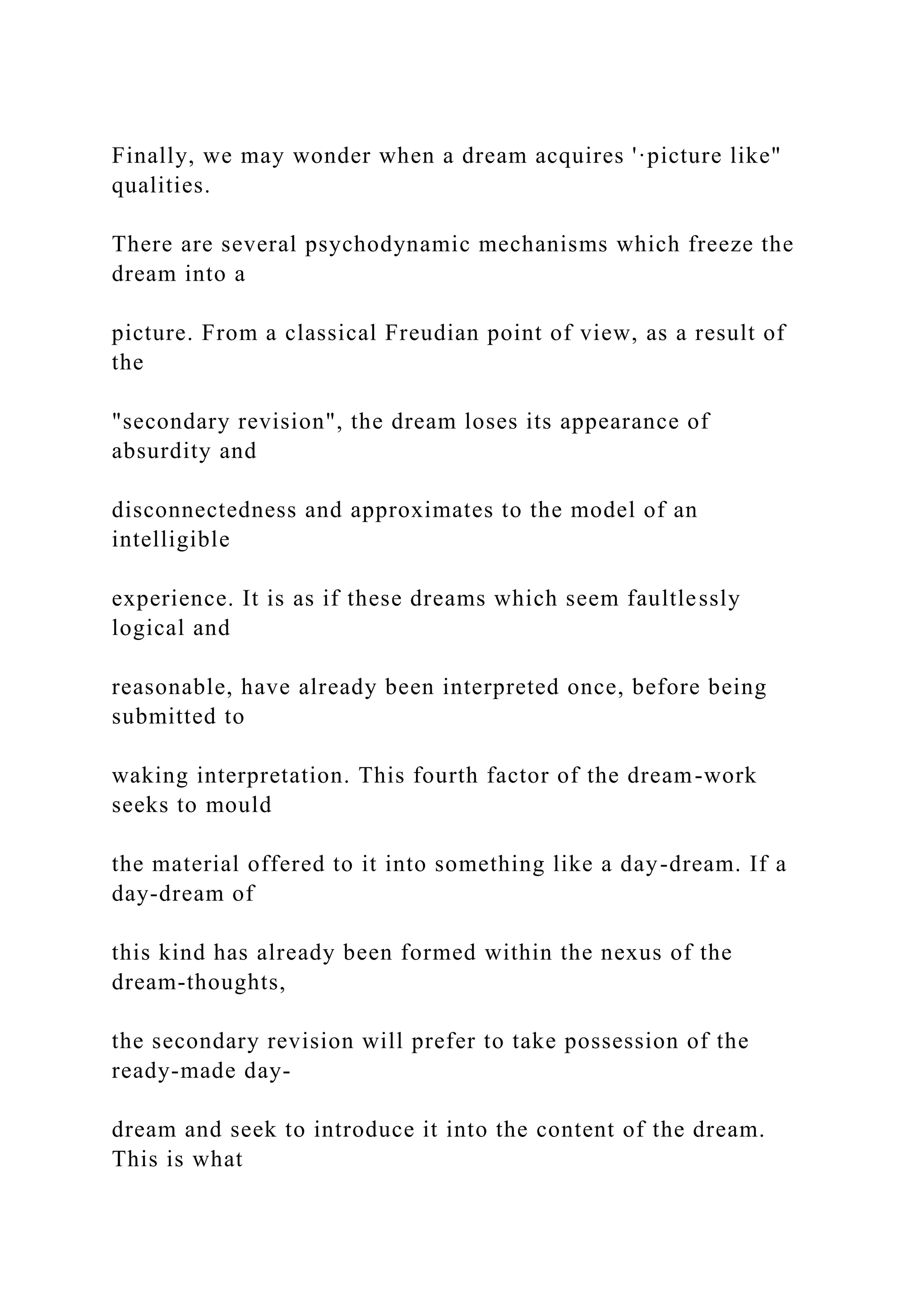
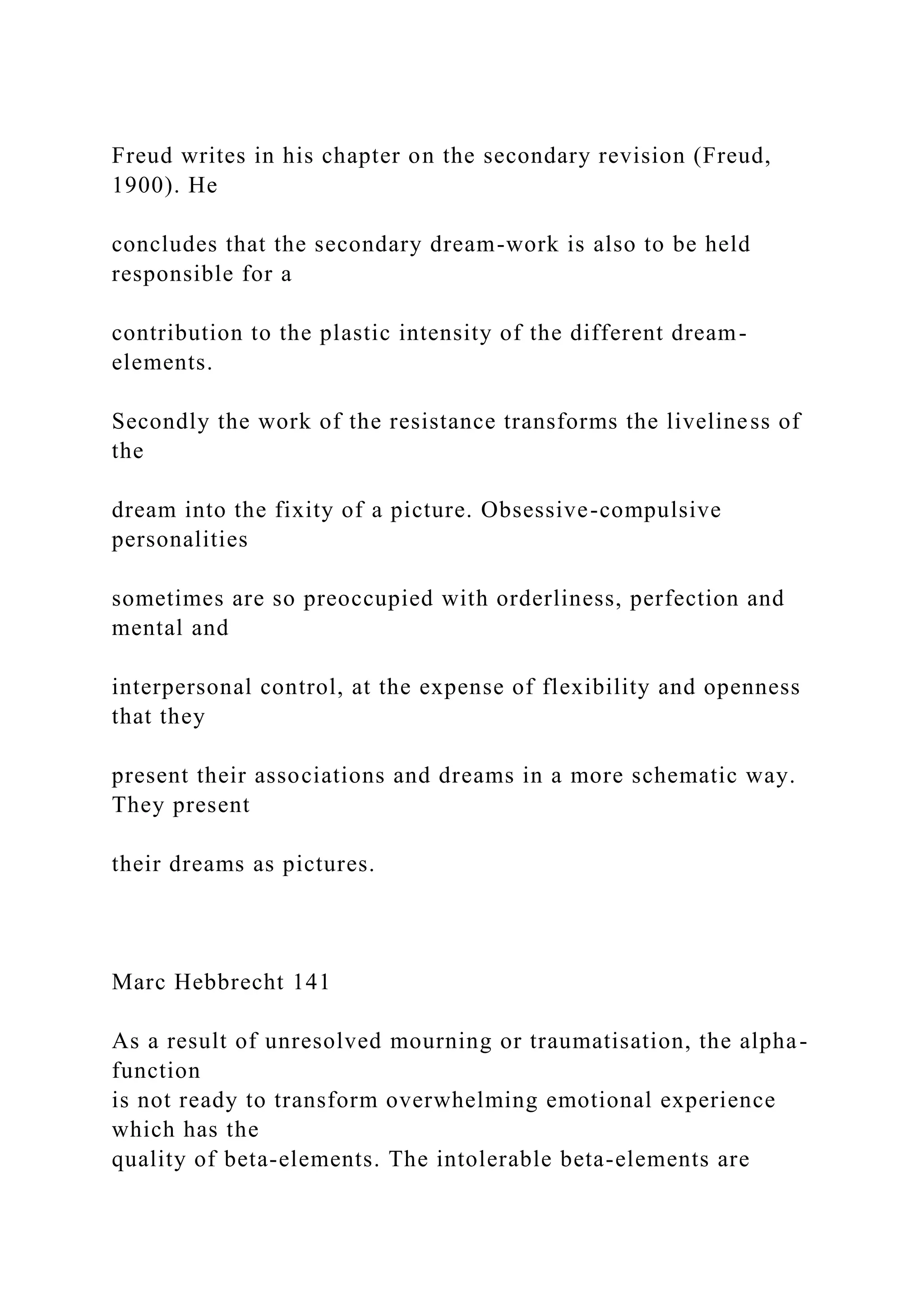
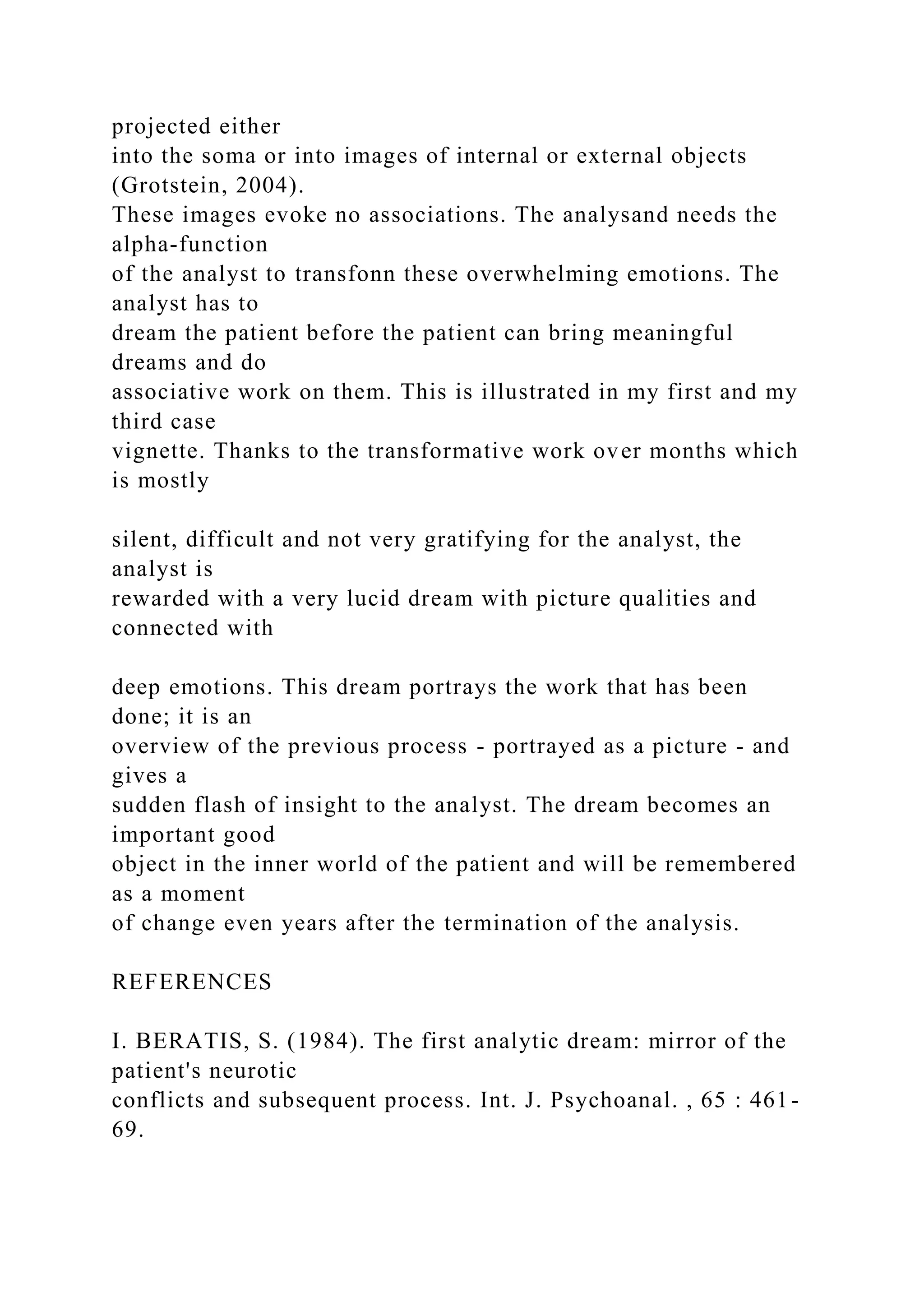
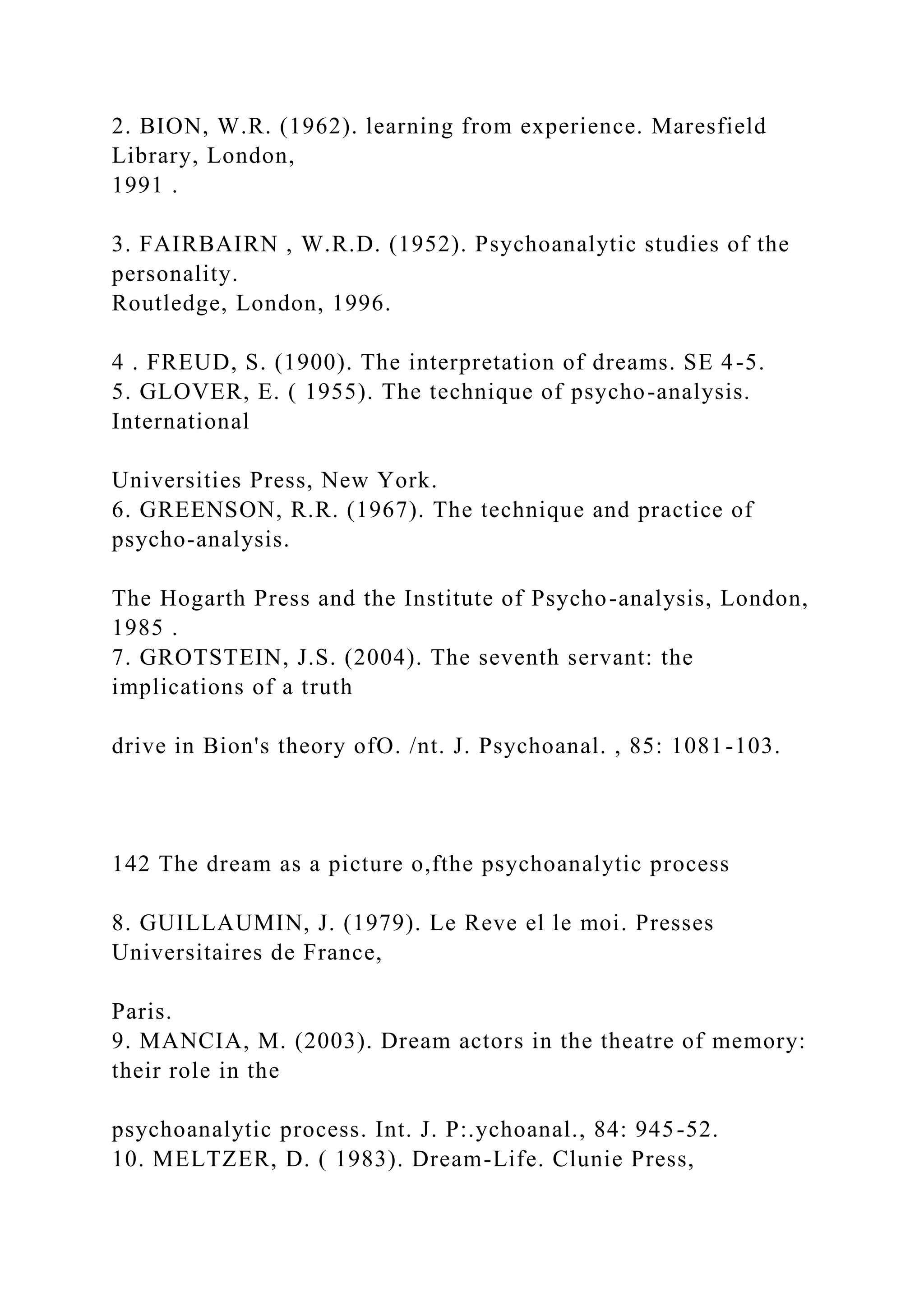
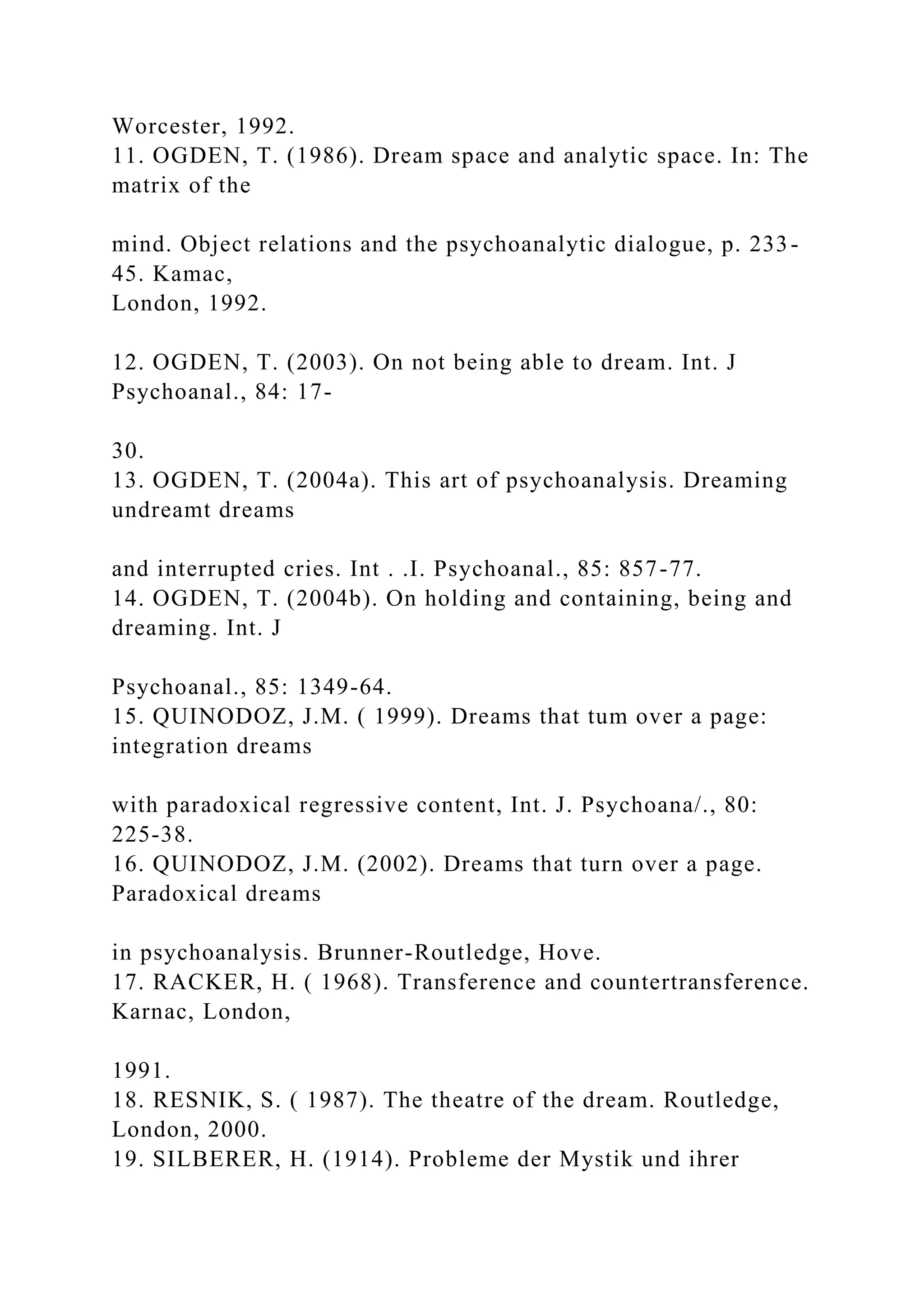
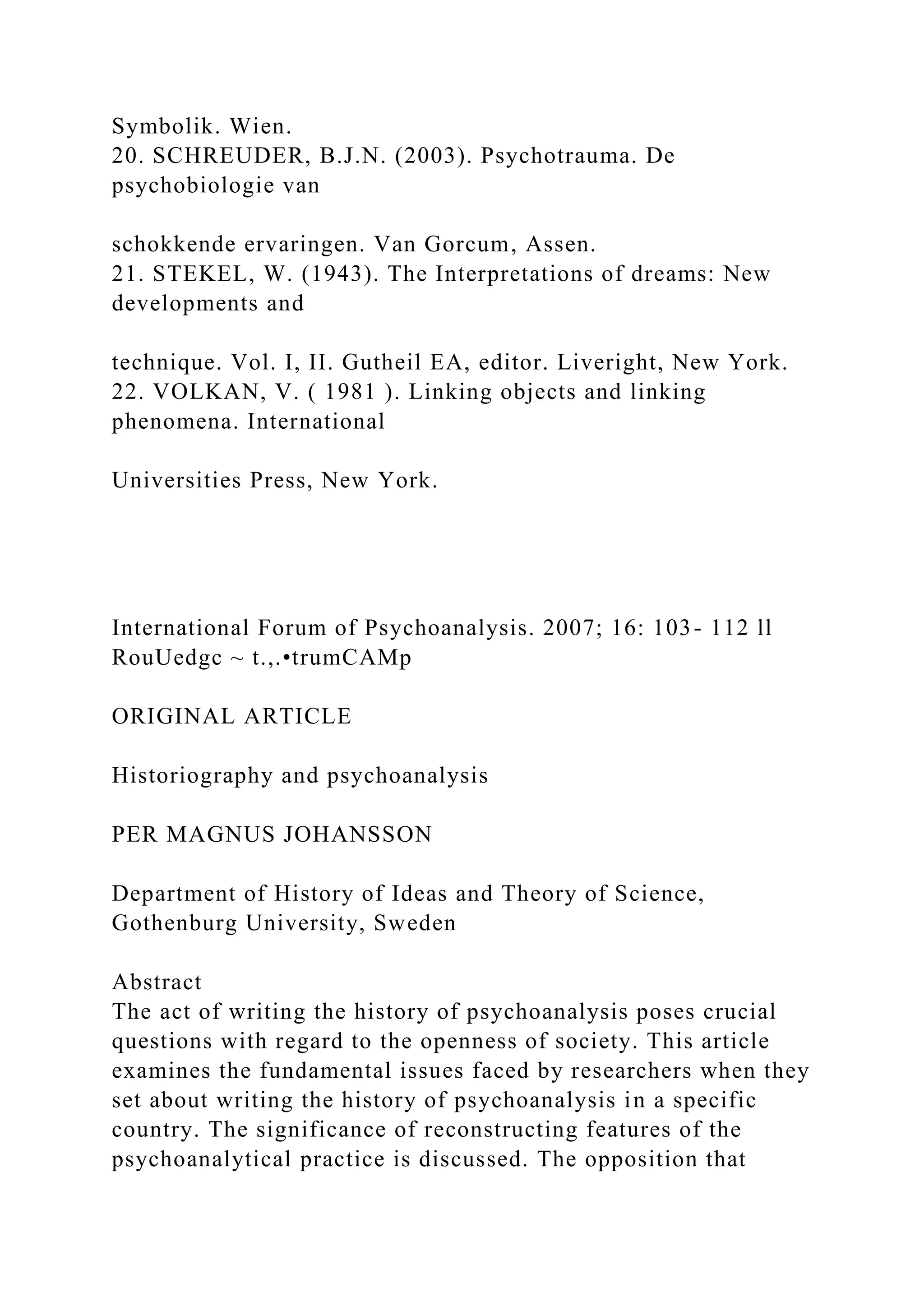

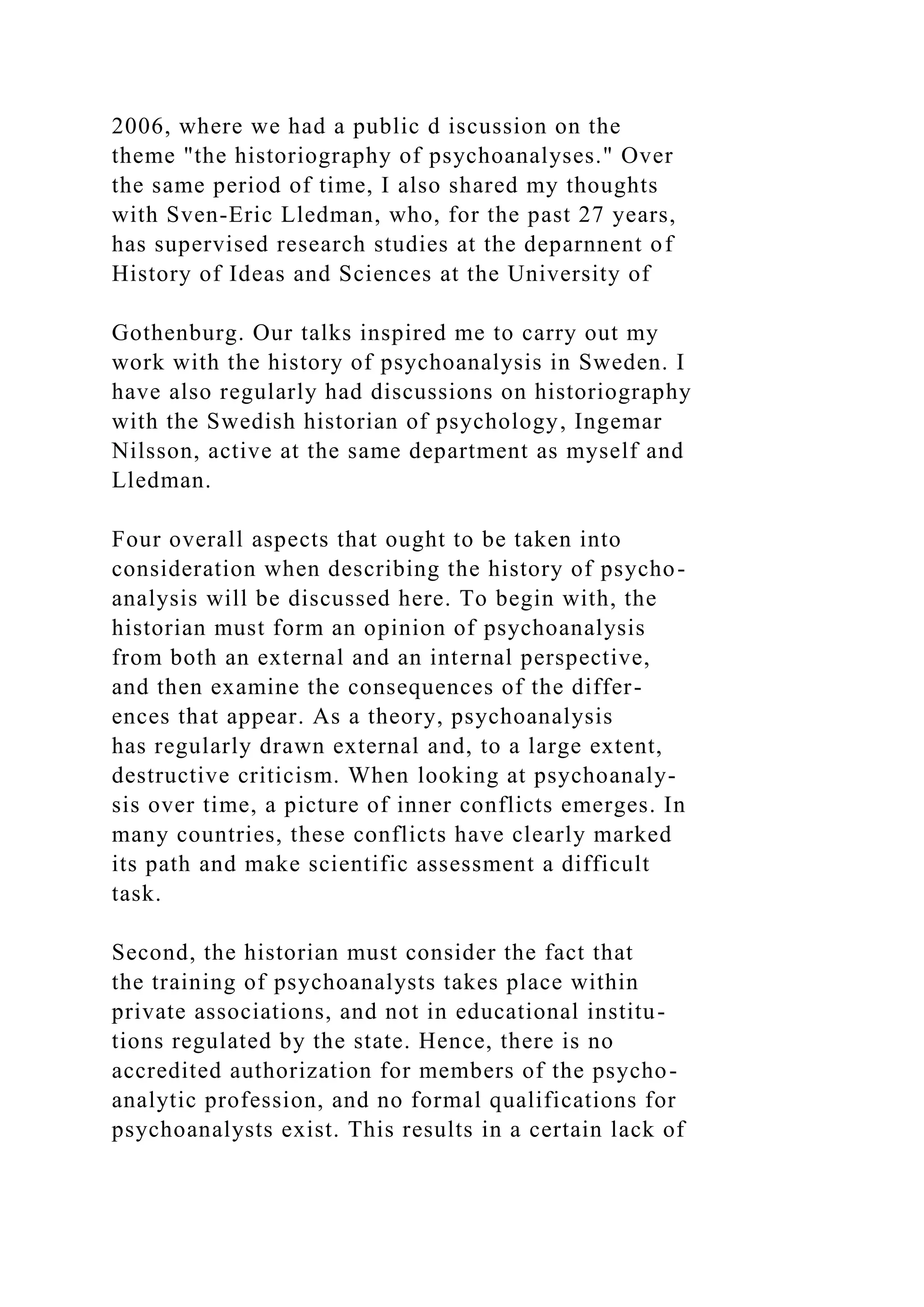
![Com:spondcncc: Per Magnus Johansson l'hO, Har:i Kyrl<opla
26, 411 23 Gotcbora, Sweden, E-mail; J)CT.magnu, johanu
[email protected];lwjpncuc
(Rtctivtd ZO Ftbruary Z007; acctpttd Z6 Ftbrnary Z007)
ISSN 0803-706X prinl/lSSN 1651-2324 onlinc O 2007 Taylor &
Fr:ancis
DOI: I0. 1080/ 08037060701l00083
104 P. M. Johansson
clarity as to who are entitled to call themselves
psychoanalysts. Thus, psychoanalytic associations
and their members often have a complex and
ambiguous relationship to the ideals of the academic
world. At the same time, the often-questioned
position of the private association, combined with
the universal and profoundly human need for
recognition, creates highly charged, sometimes ex-
plosive, personal ties between the various members
of the groups and with the representatives of
academic institutions.
Third, certain specific characteristics of the psy-
choanalytic theory must be taken into account: It
is both a theory pertaining to man as a cultural
being, and a theory pertaining to the treaanent of
psychological distress. In other words, it is both a
theory and a practice. This in itself complex aspect is
expressed by the fact that the psychoanalytic trans-
mission of knowledge is effected verbally as well as
by way of the written word, and of the two, the
oral exchange is the most essential part. All in all,](https://image.slidesharecdn.com/directionslocatetheannotatedbibliographyandoutlineyou-230111131454-db06e2f3/75/DirectionsLocate-the-annotated-bibliography-and-outline-you-docx-179-2048.jpg)
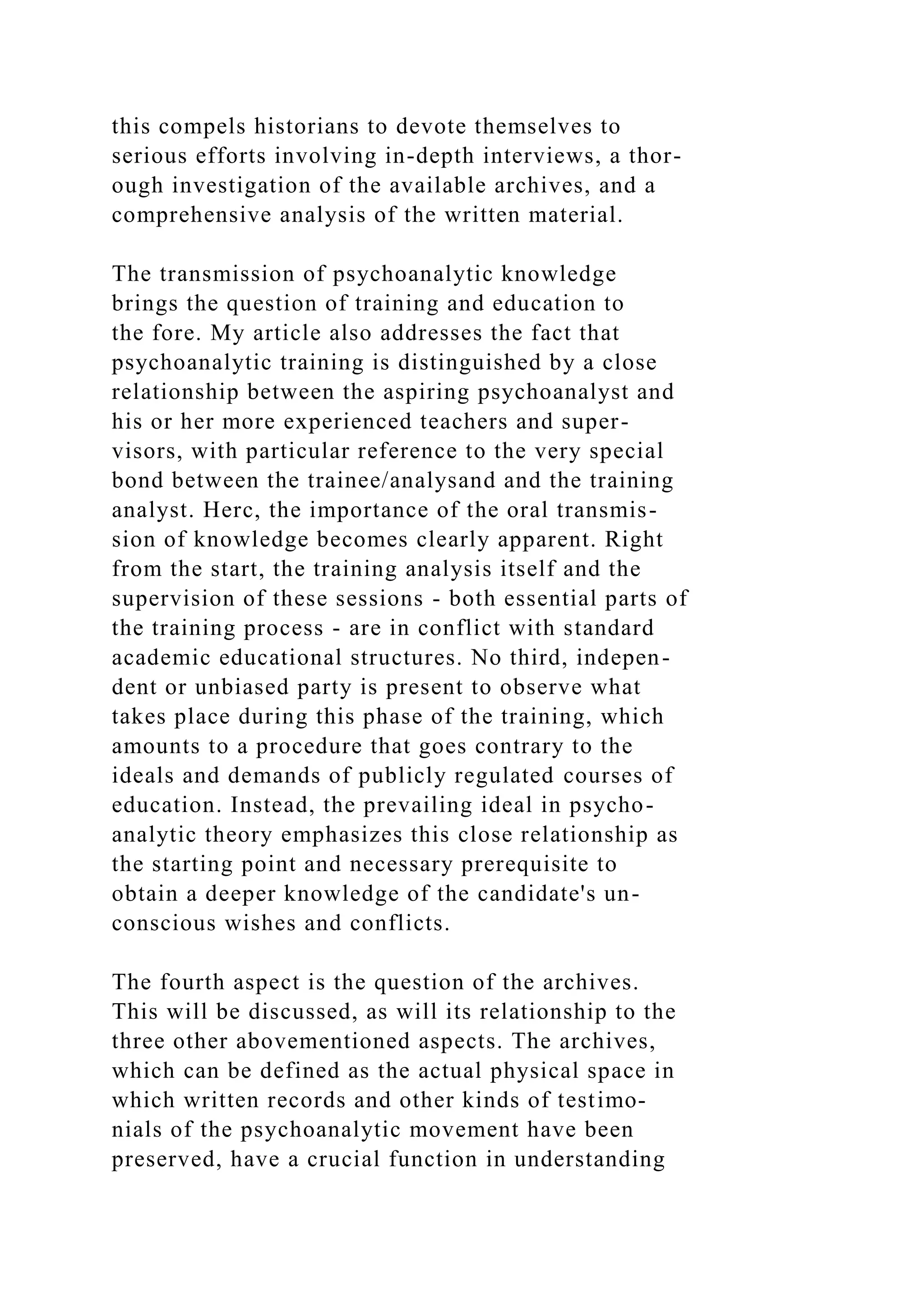

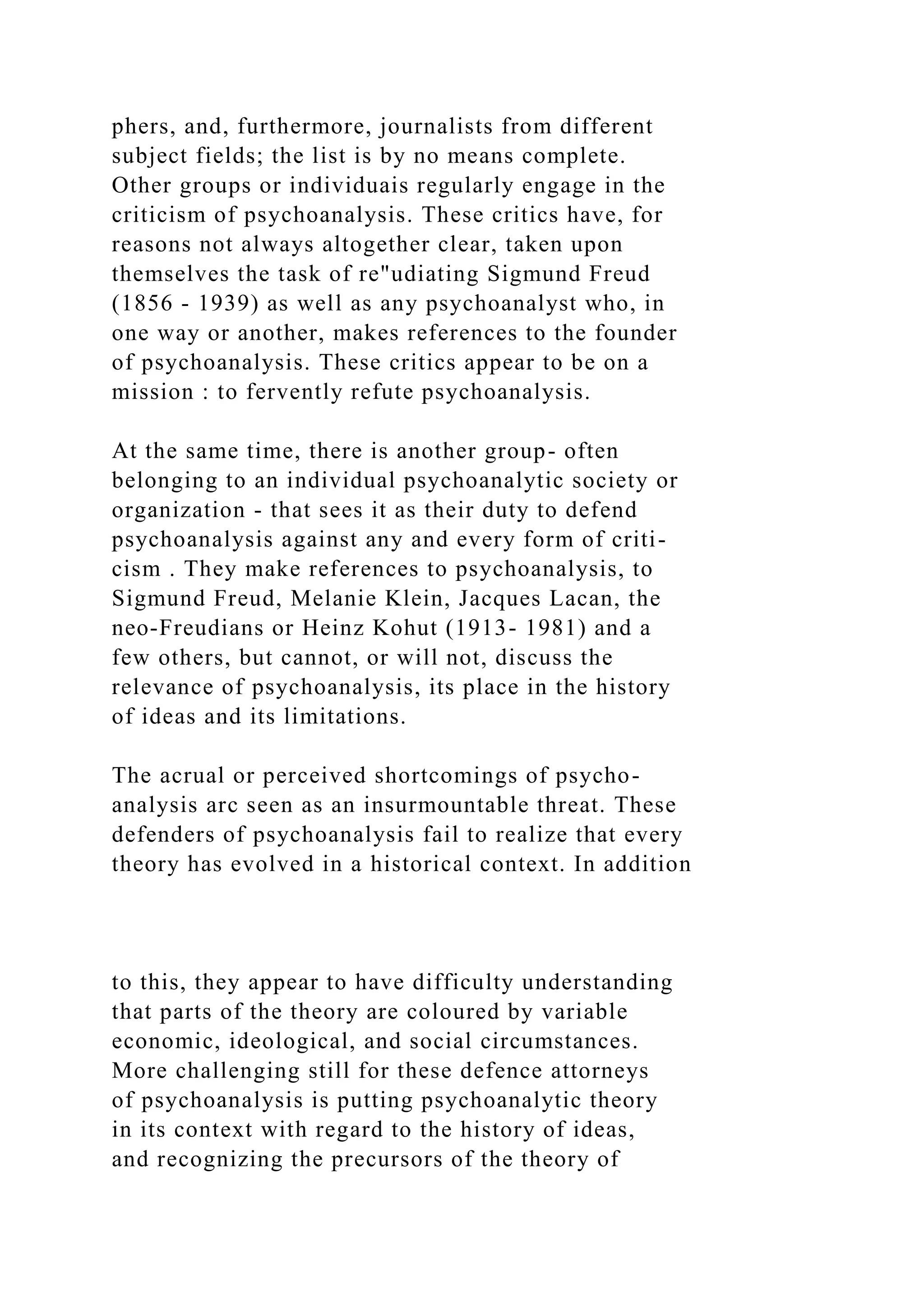
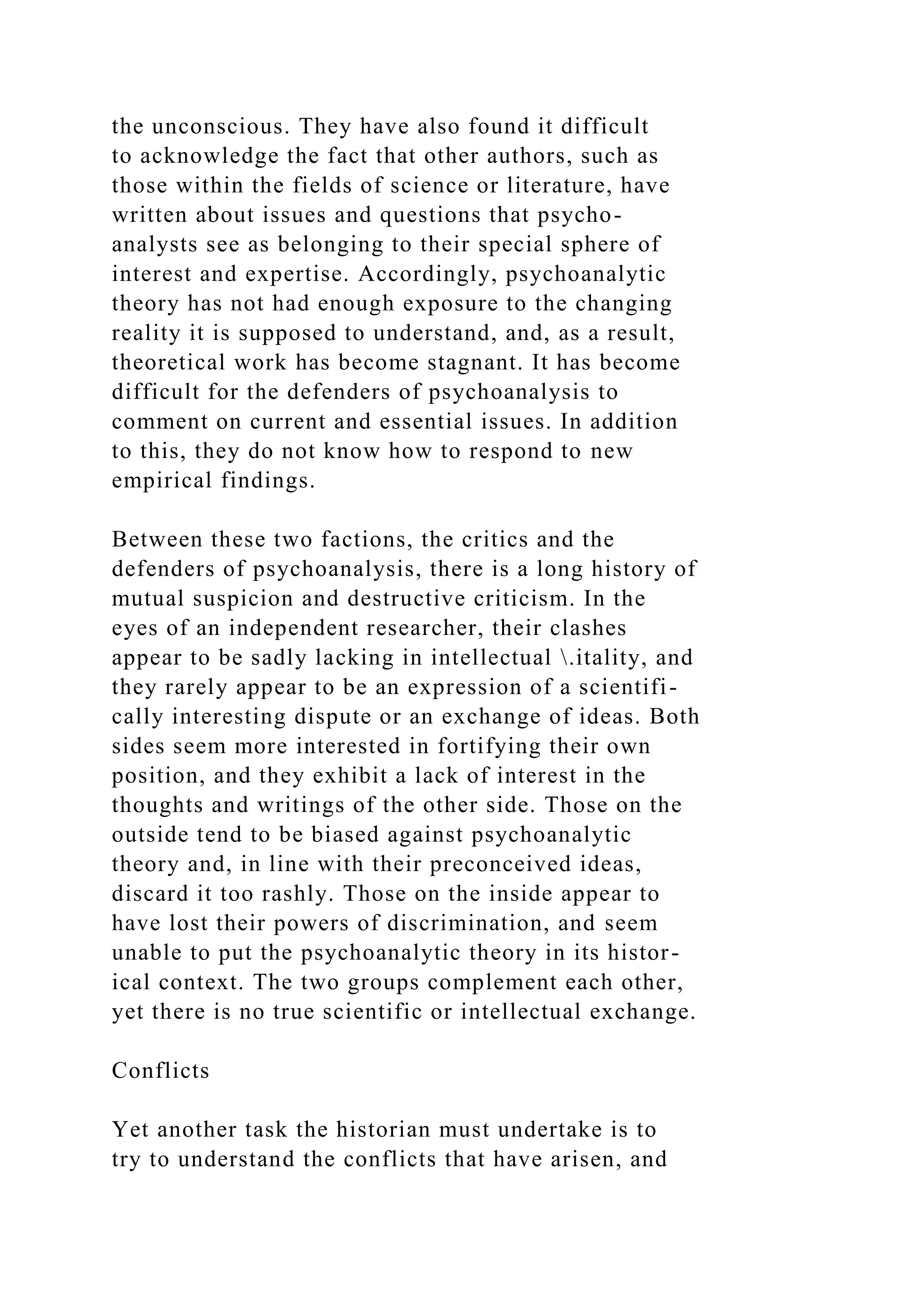
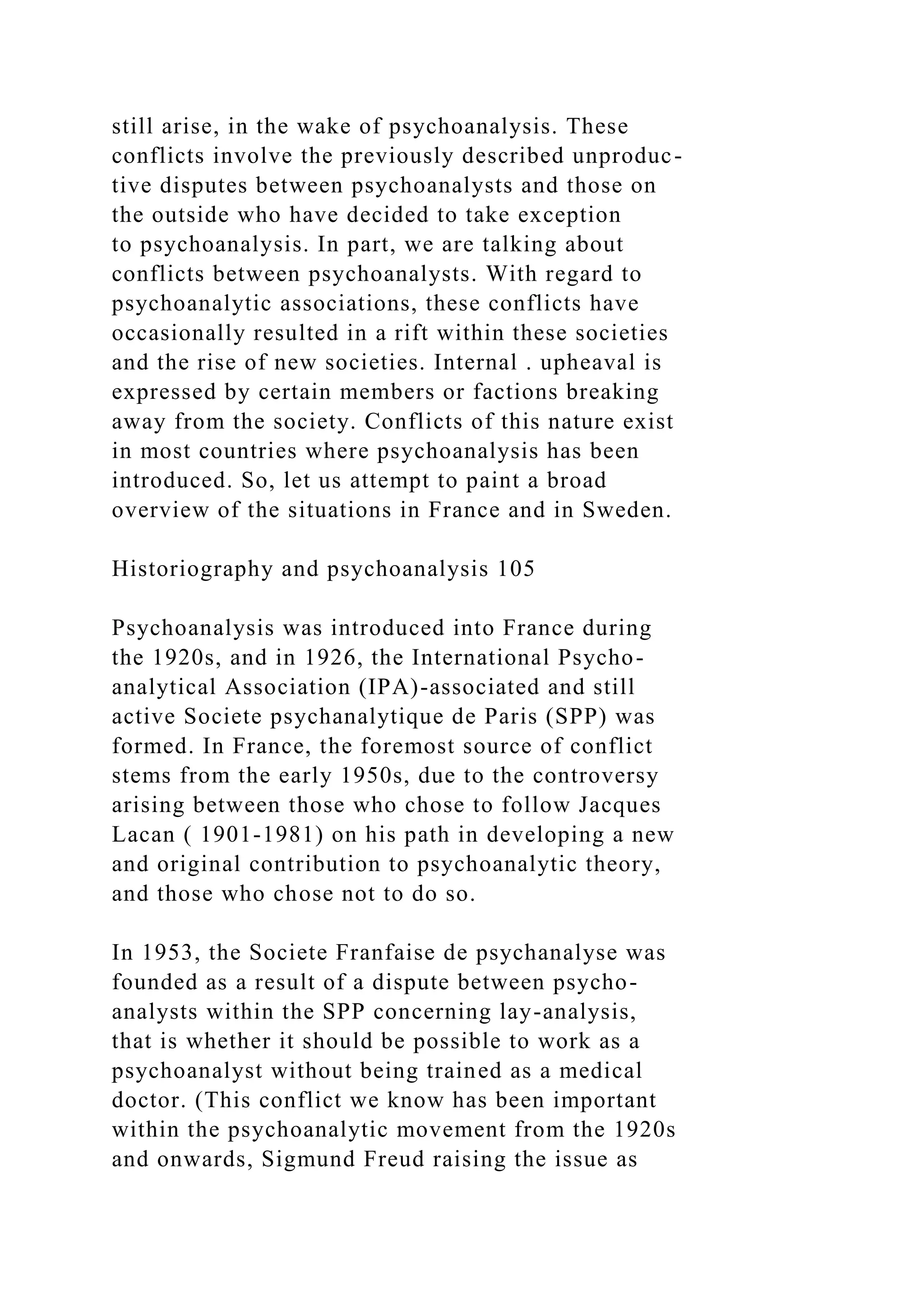
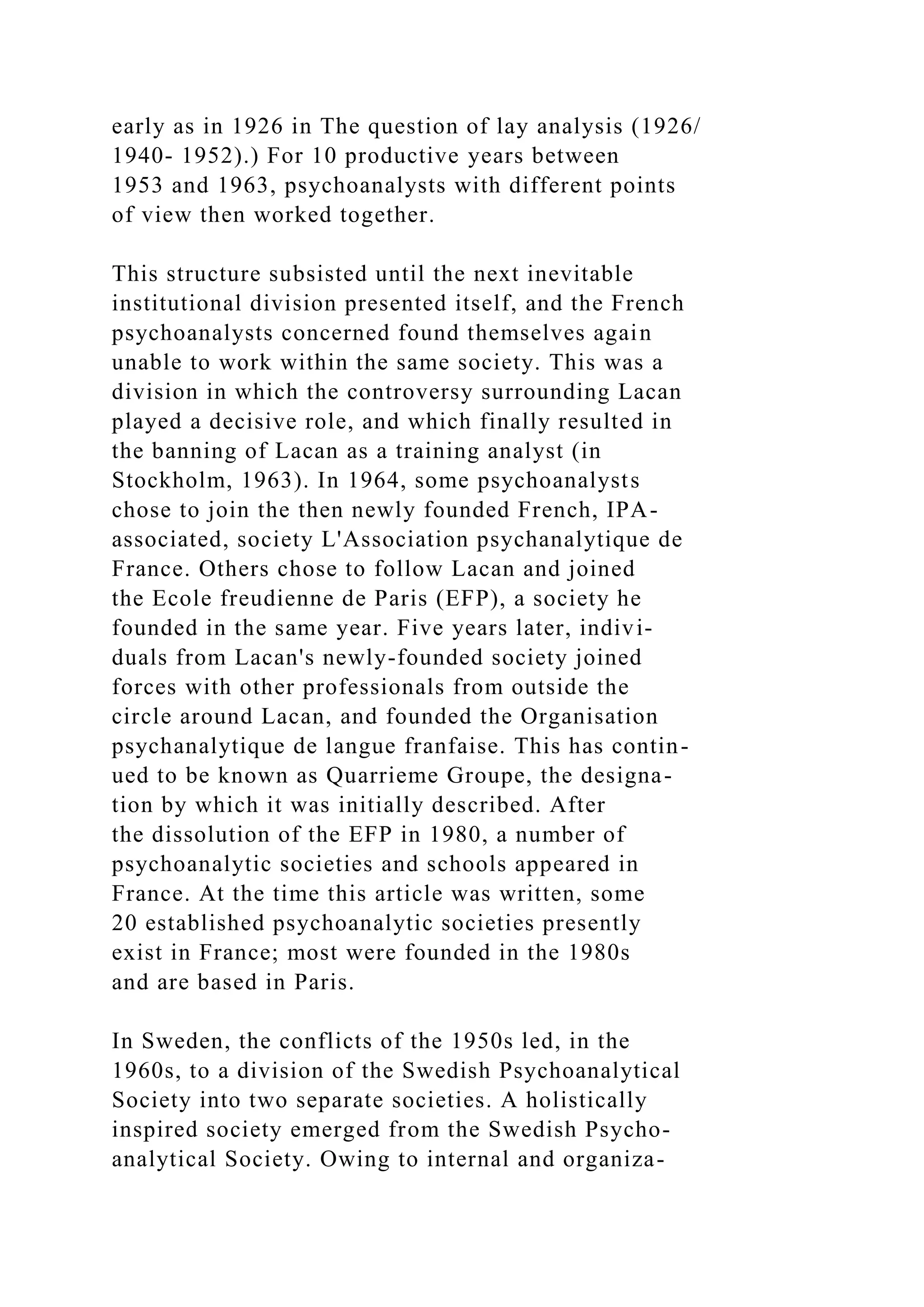
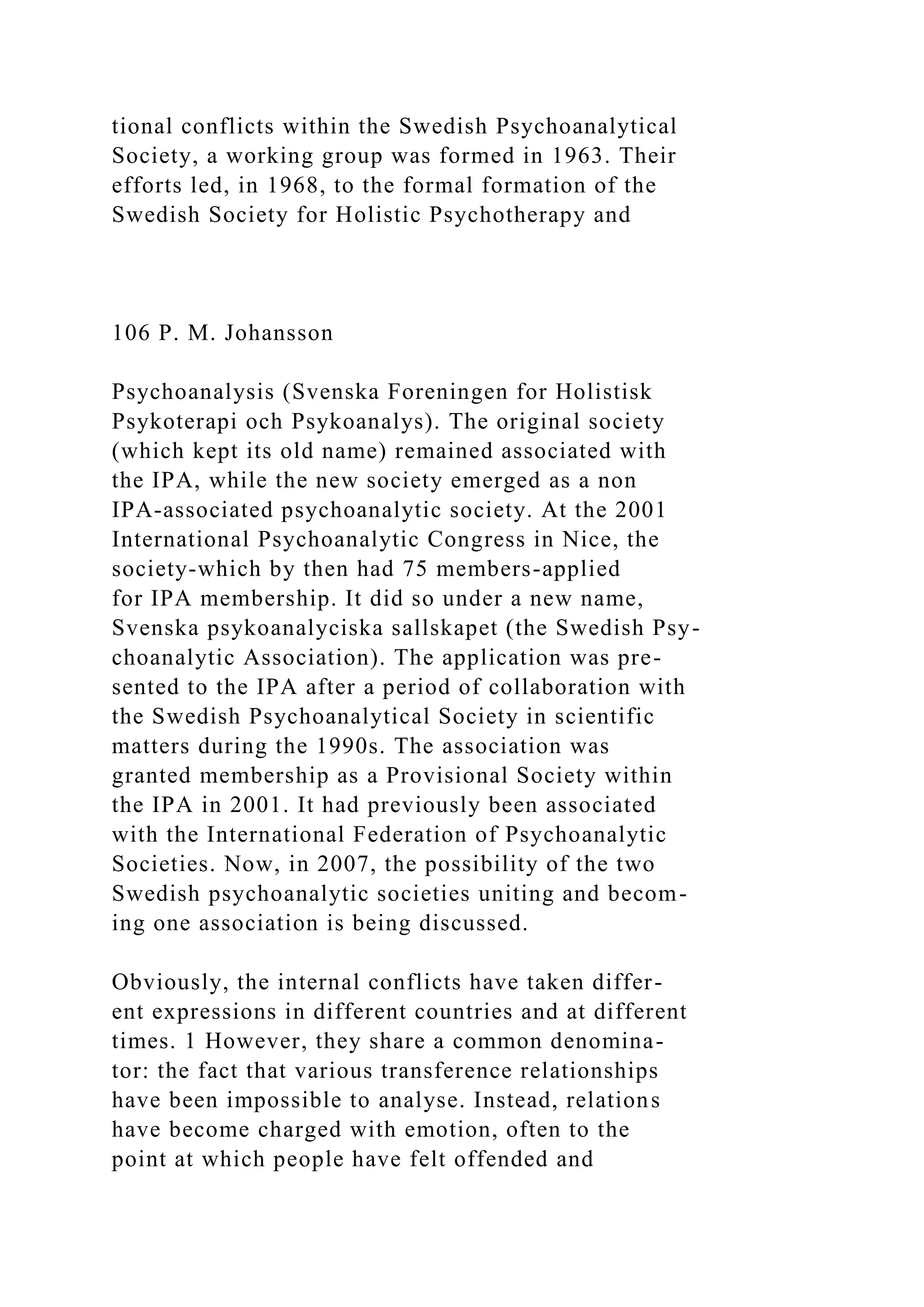
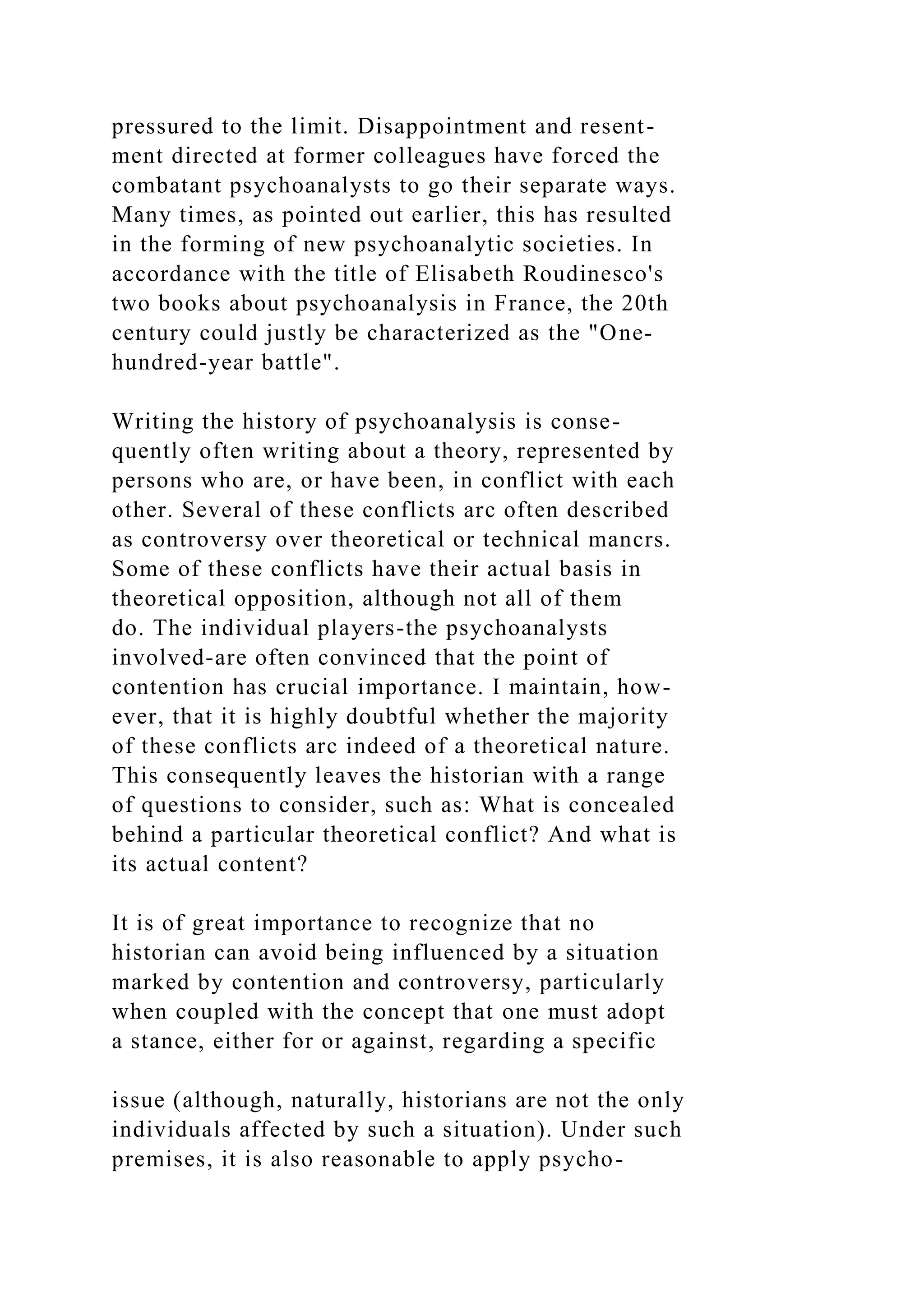
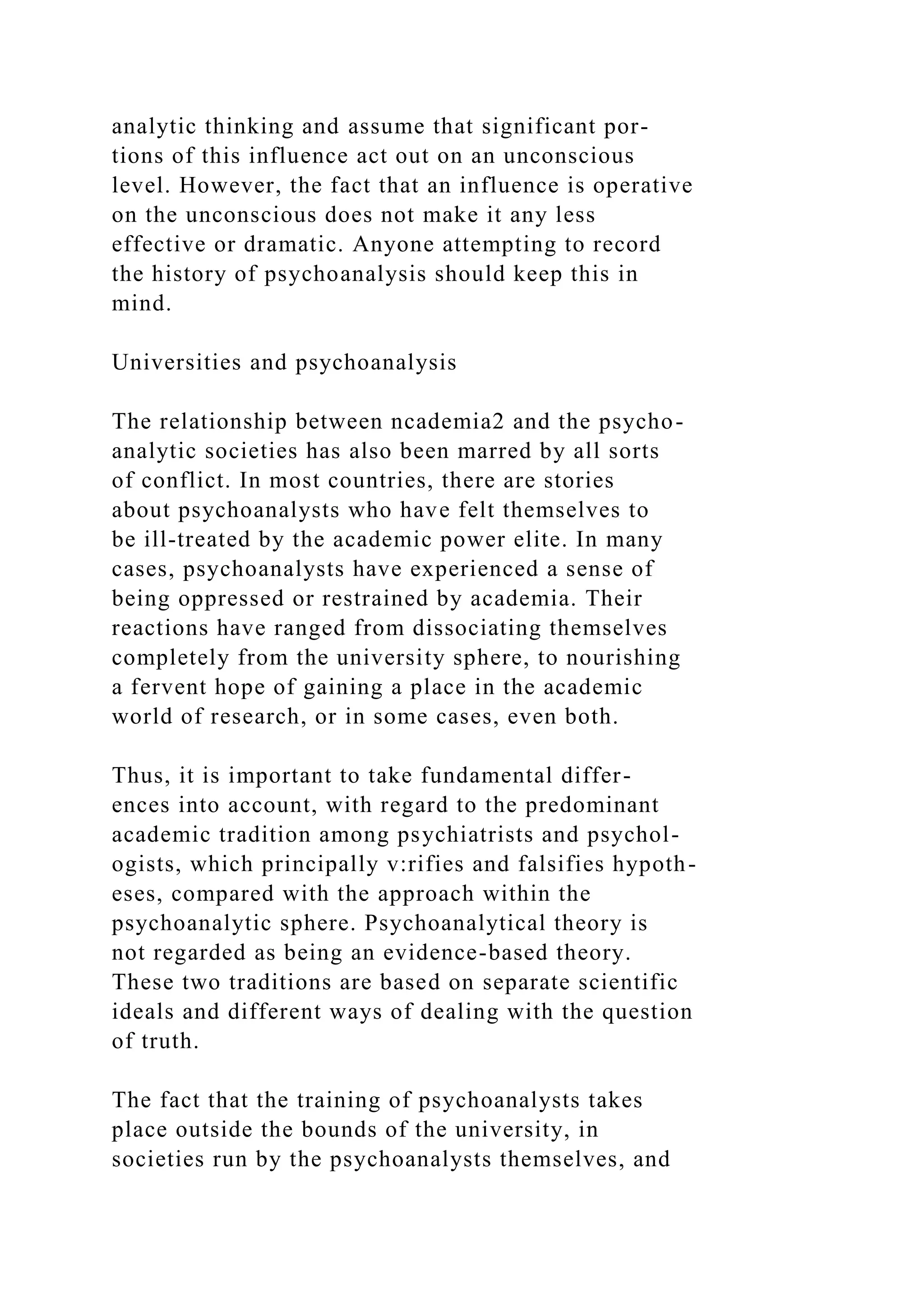
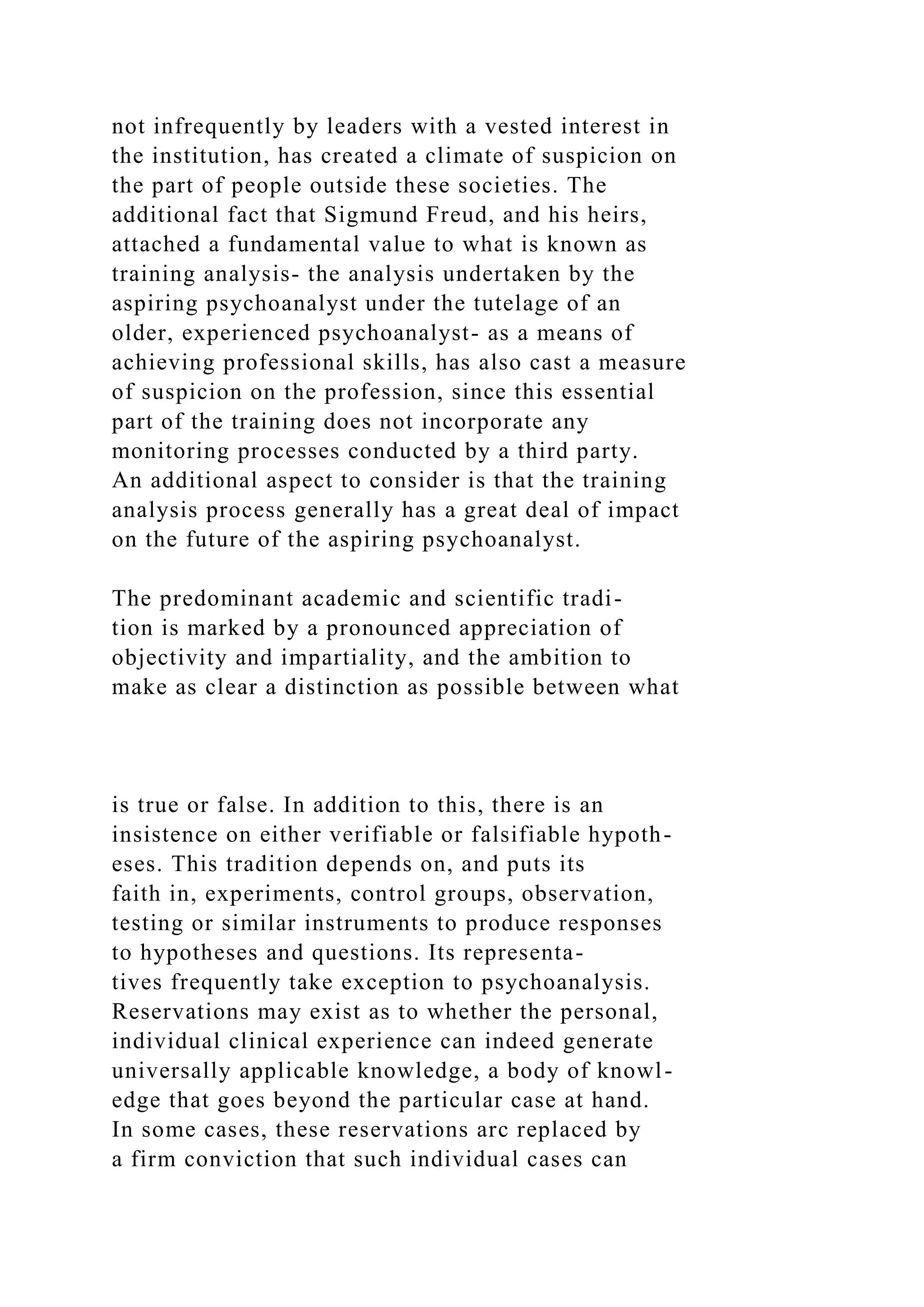
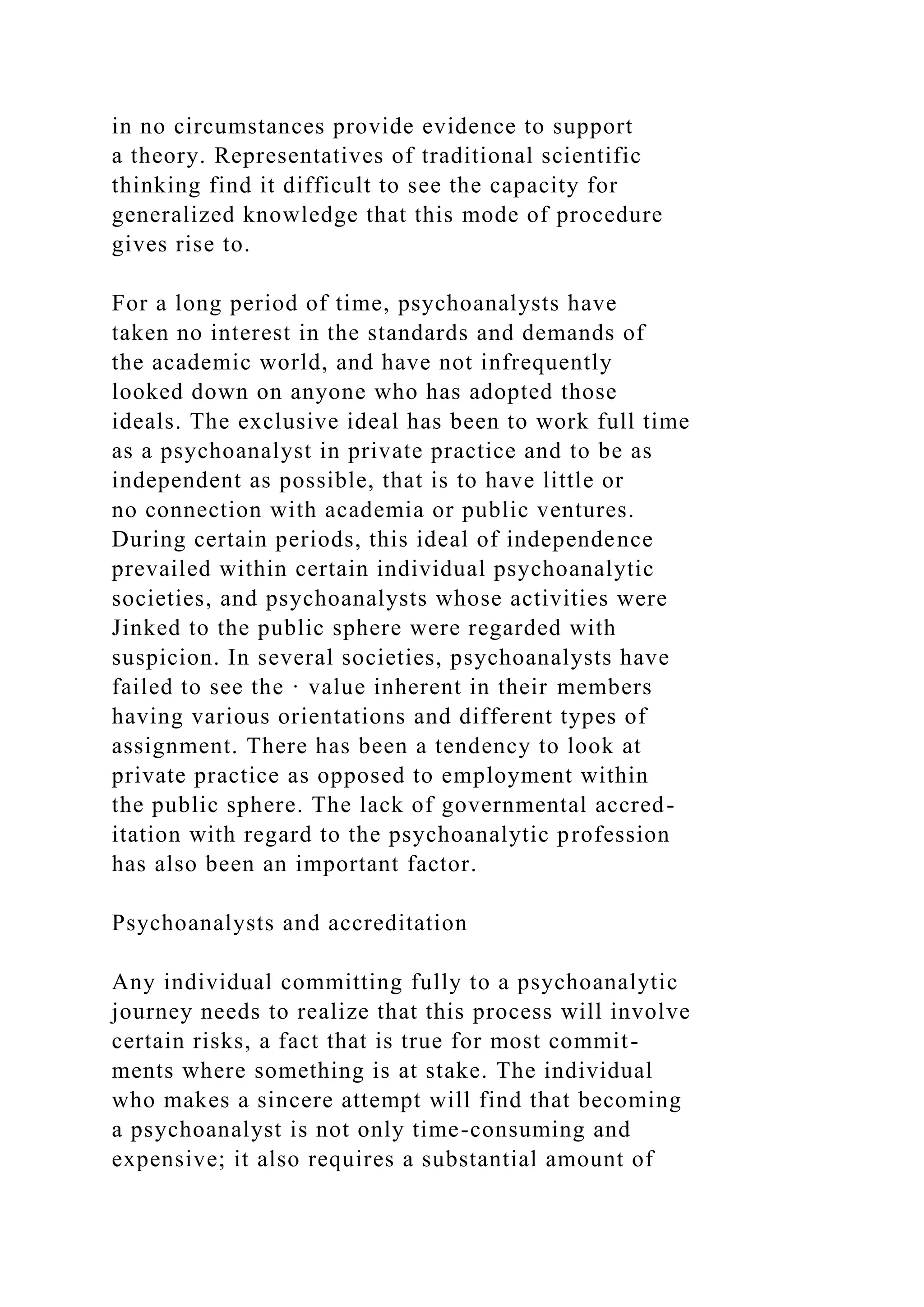
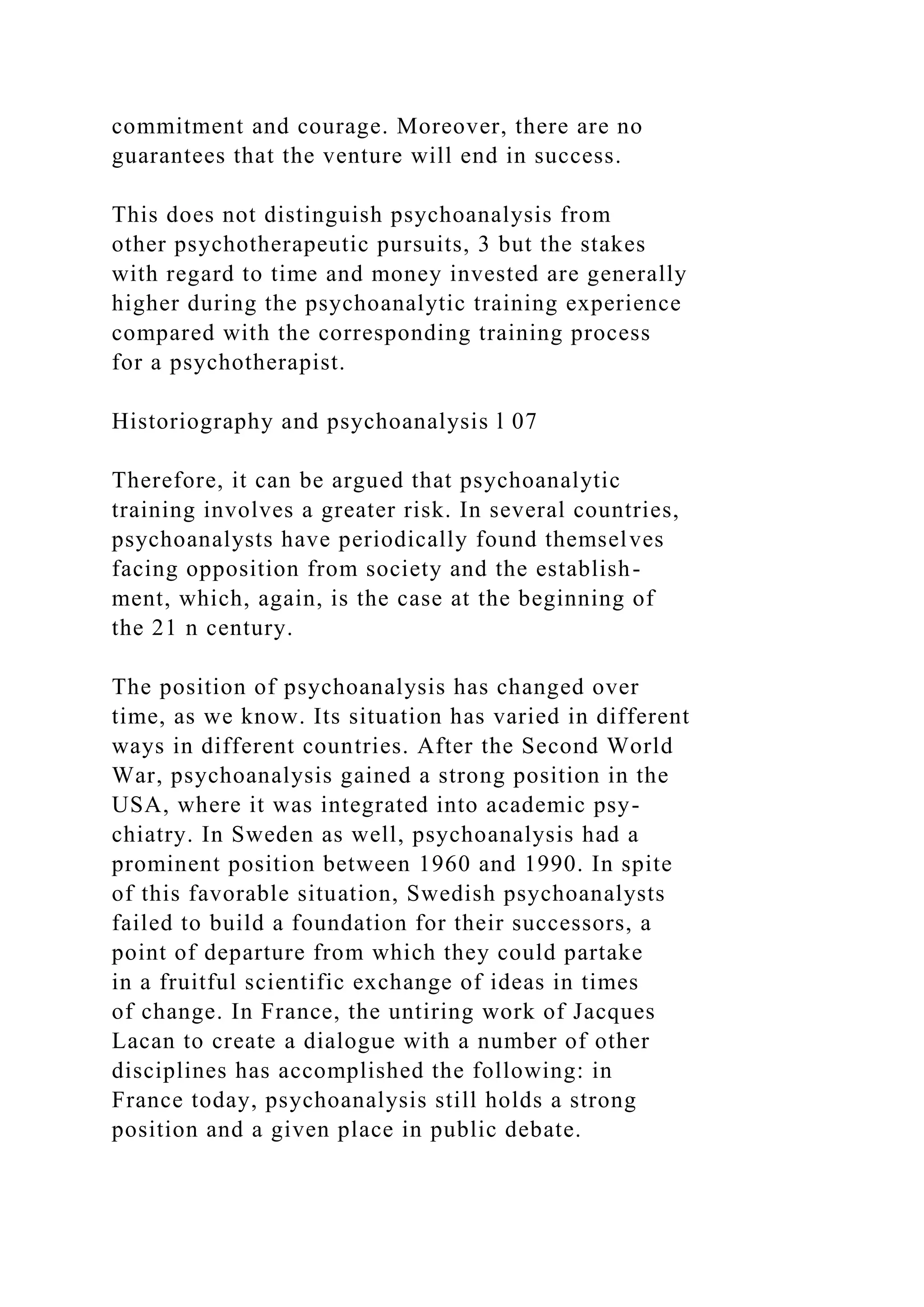

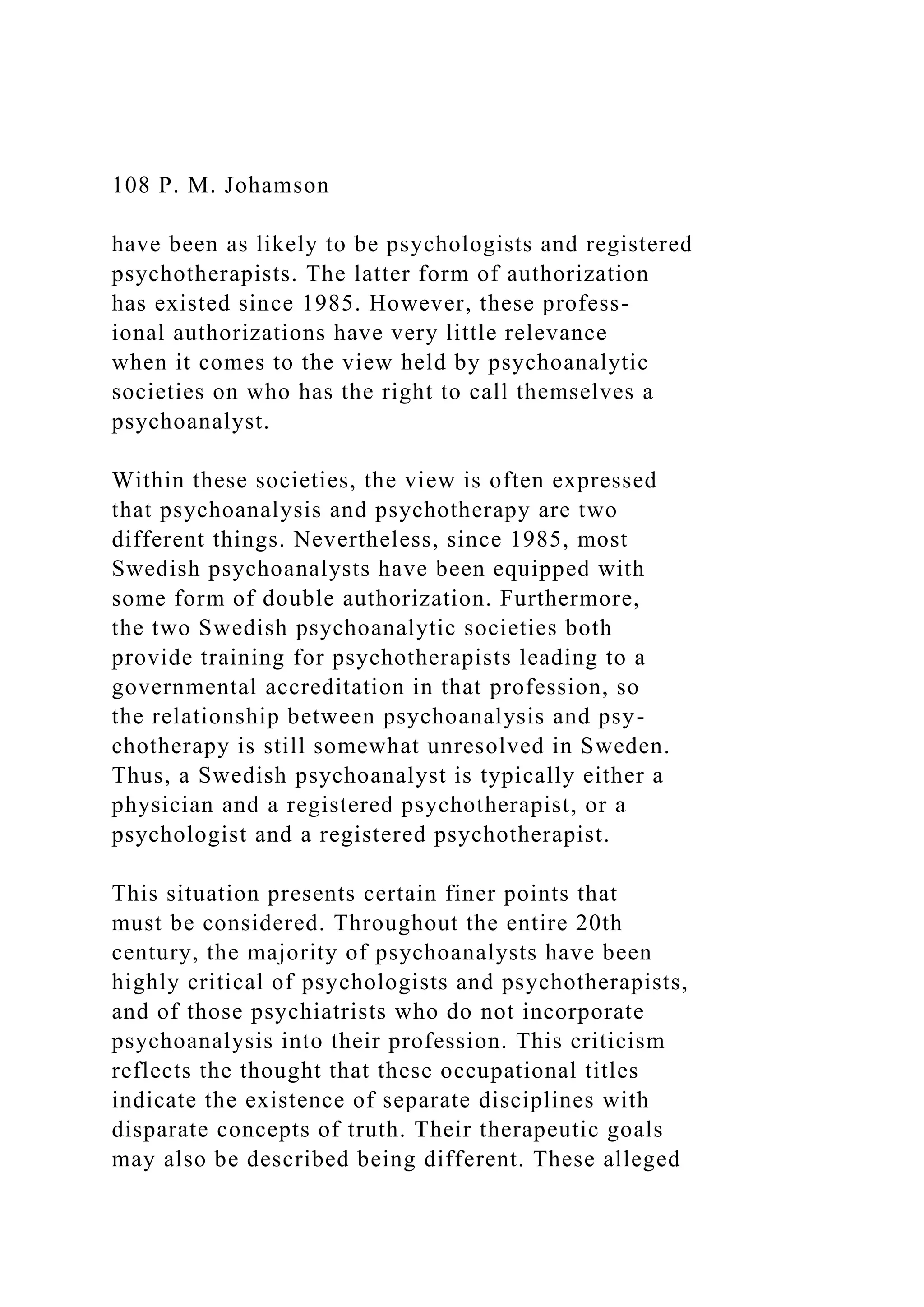
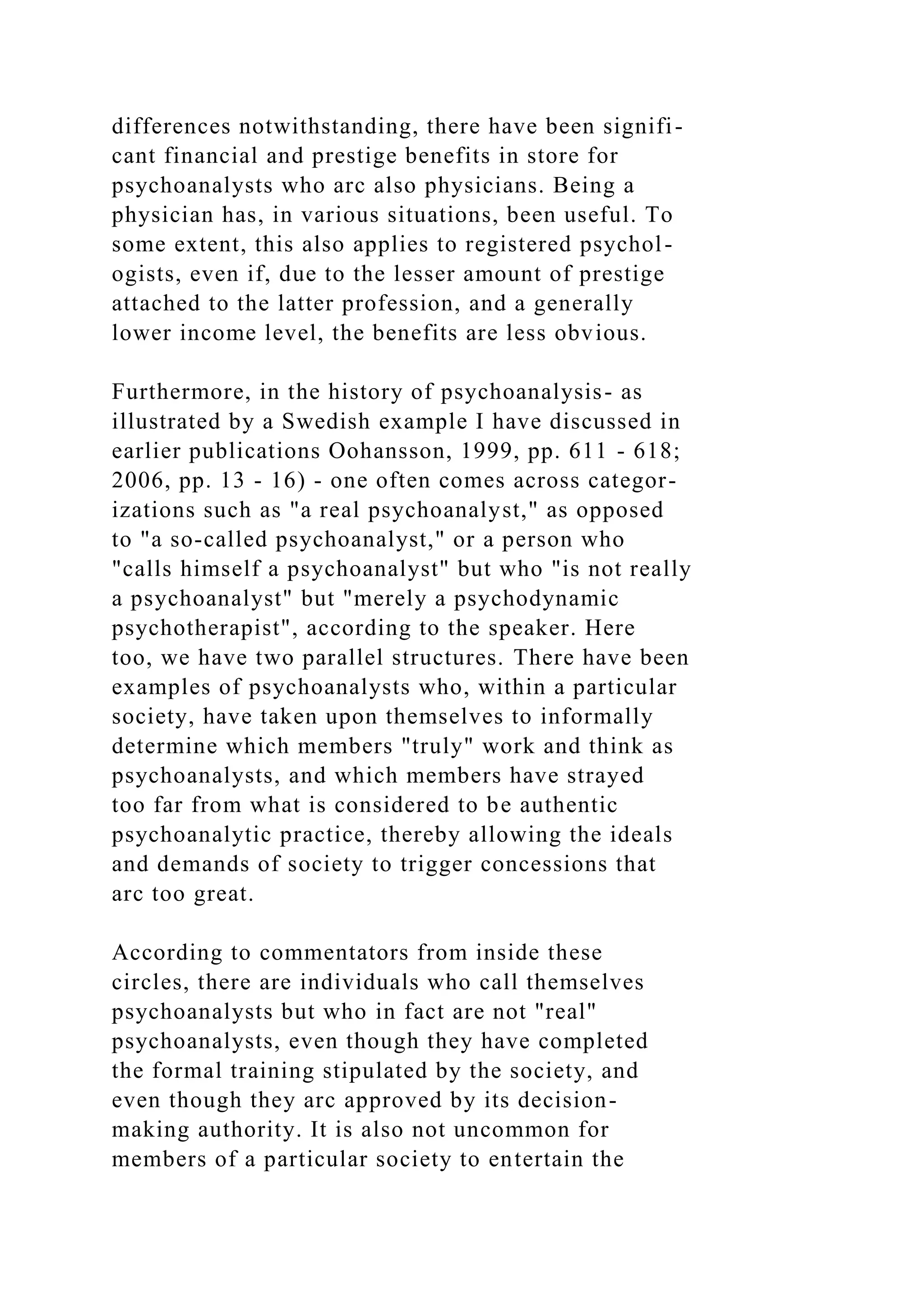
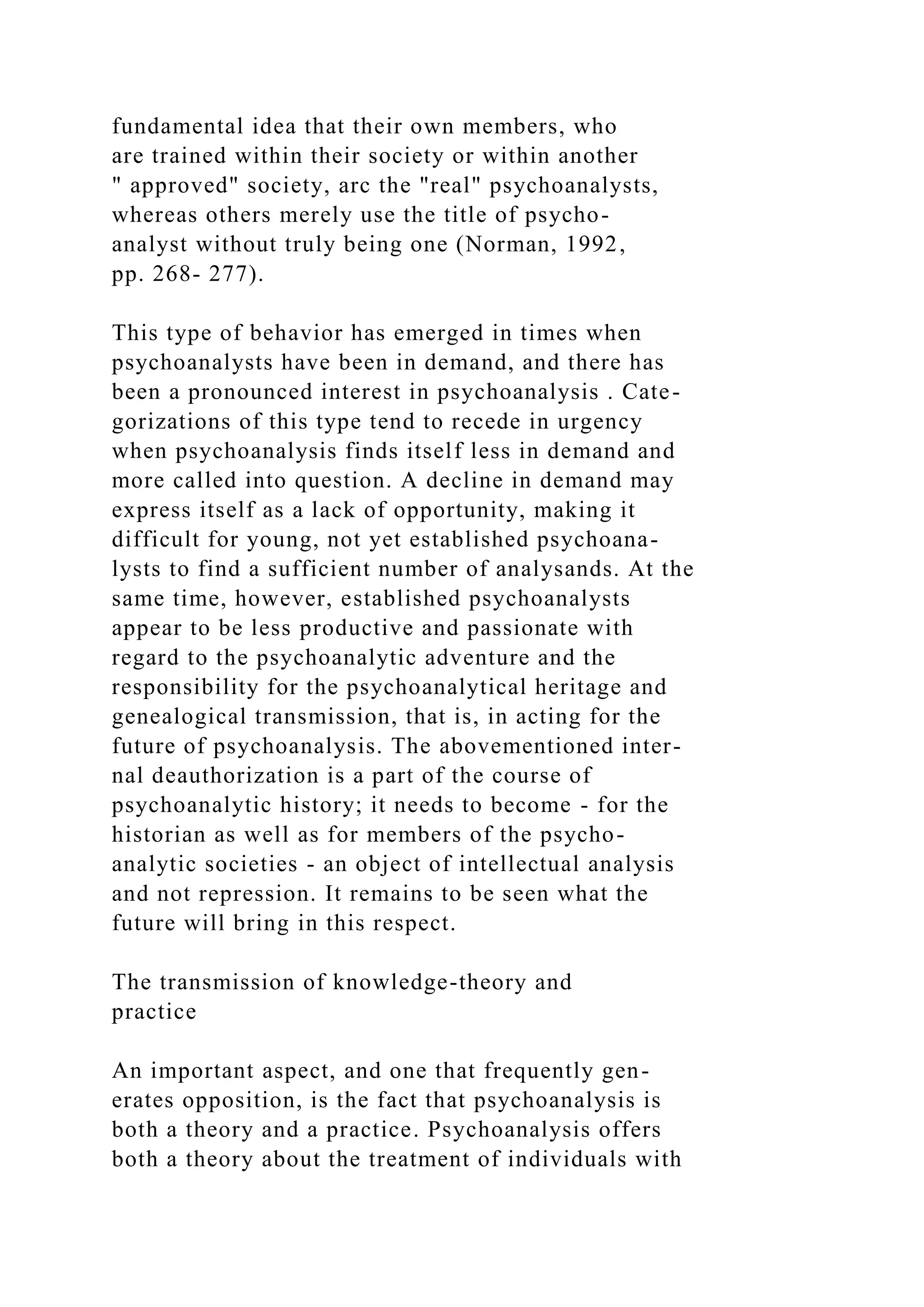
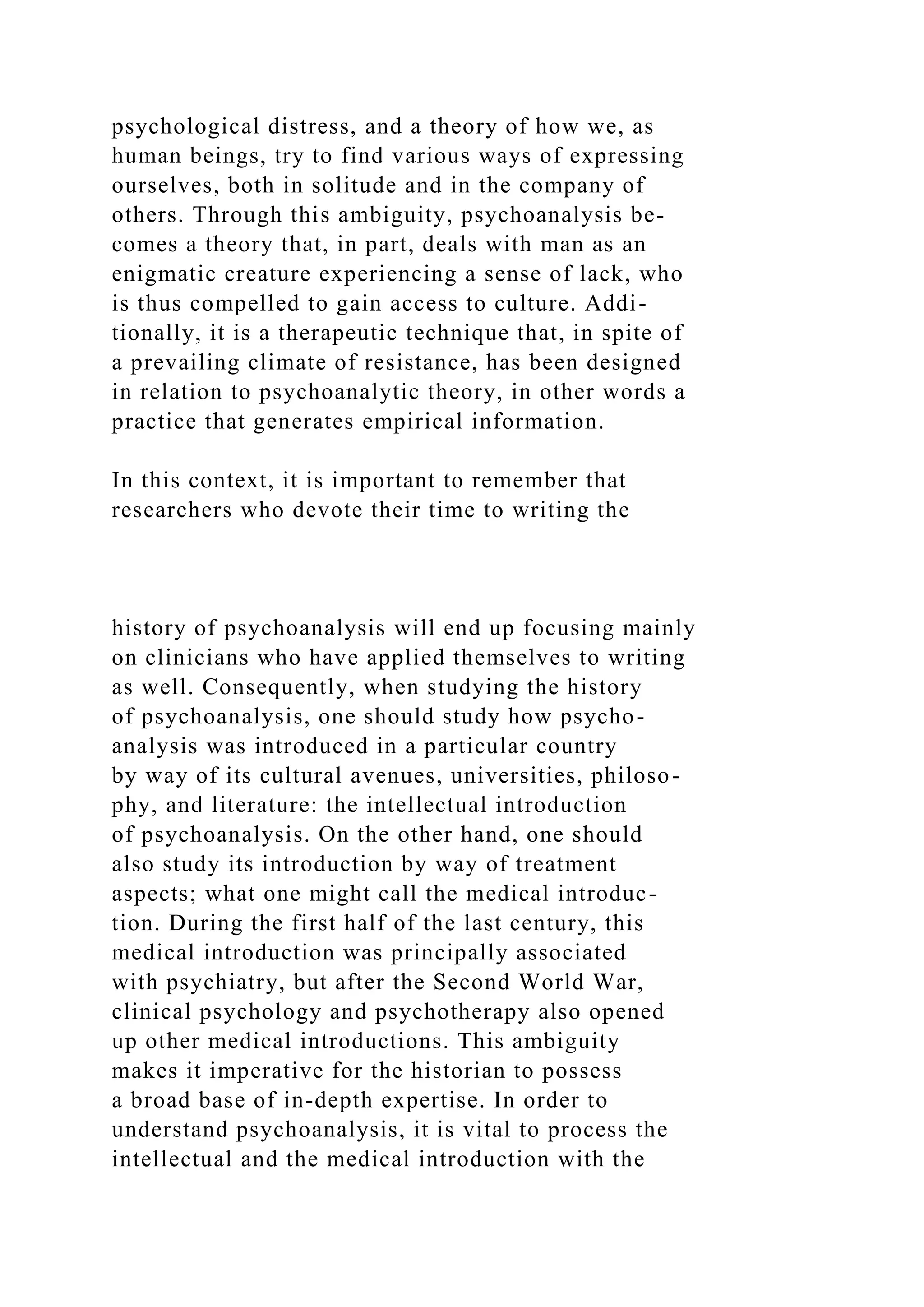
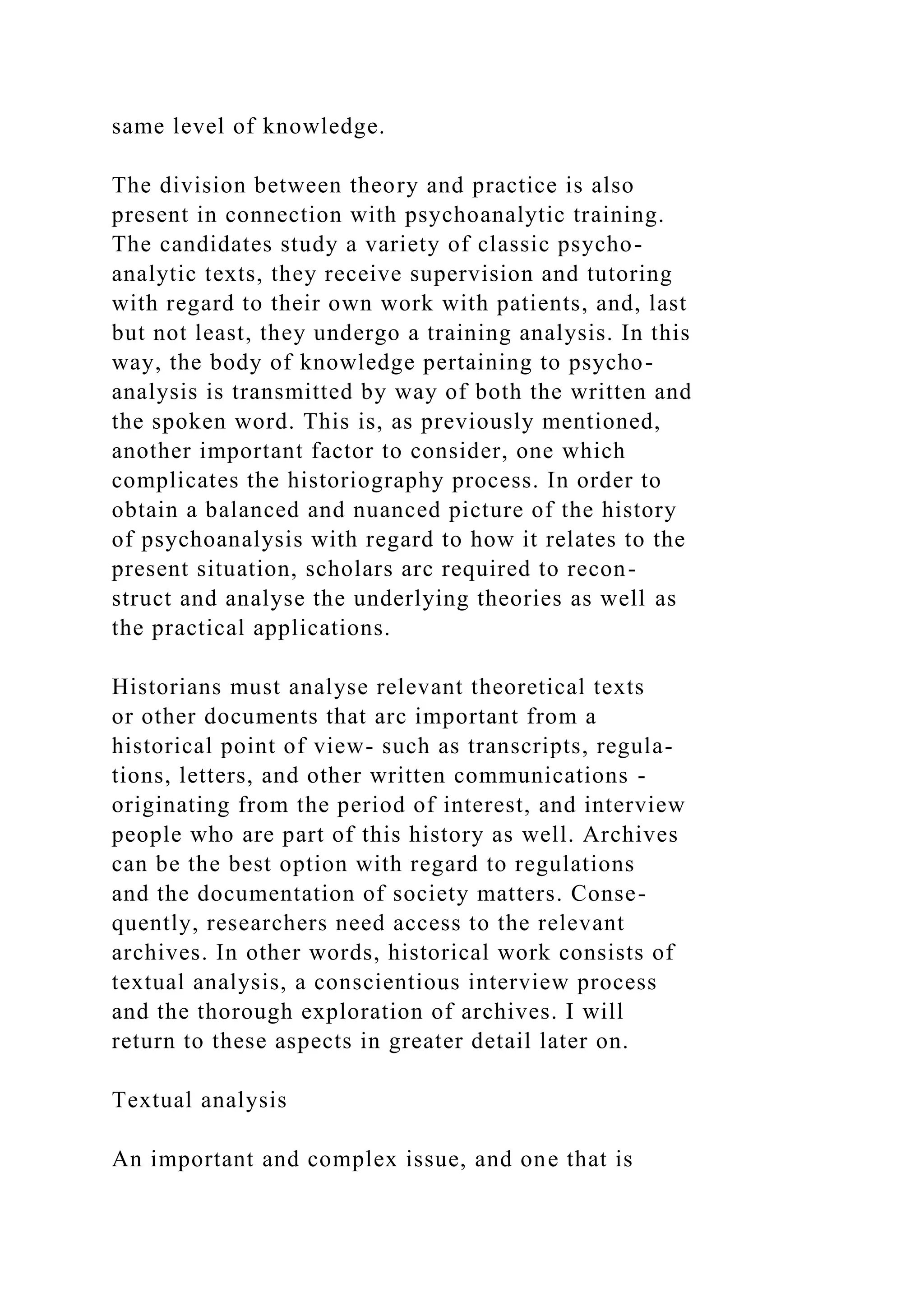
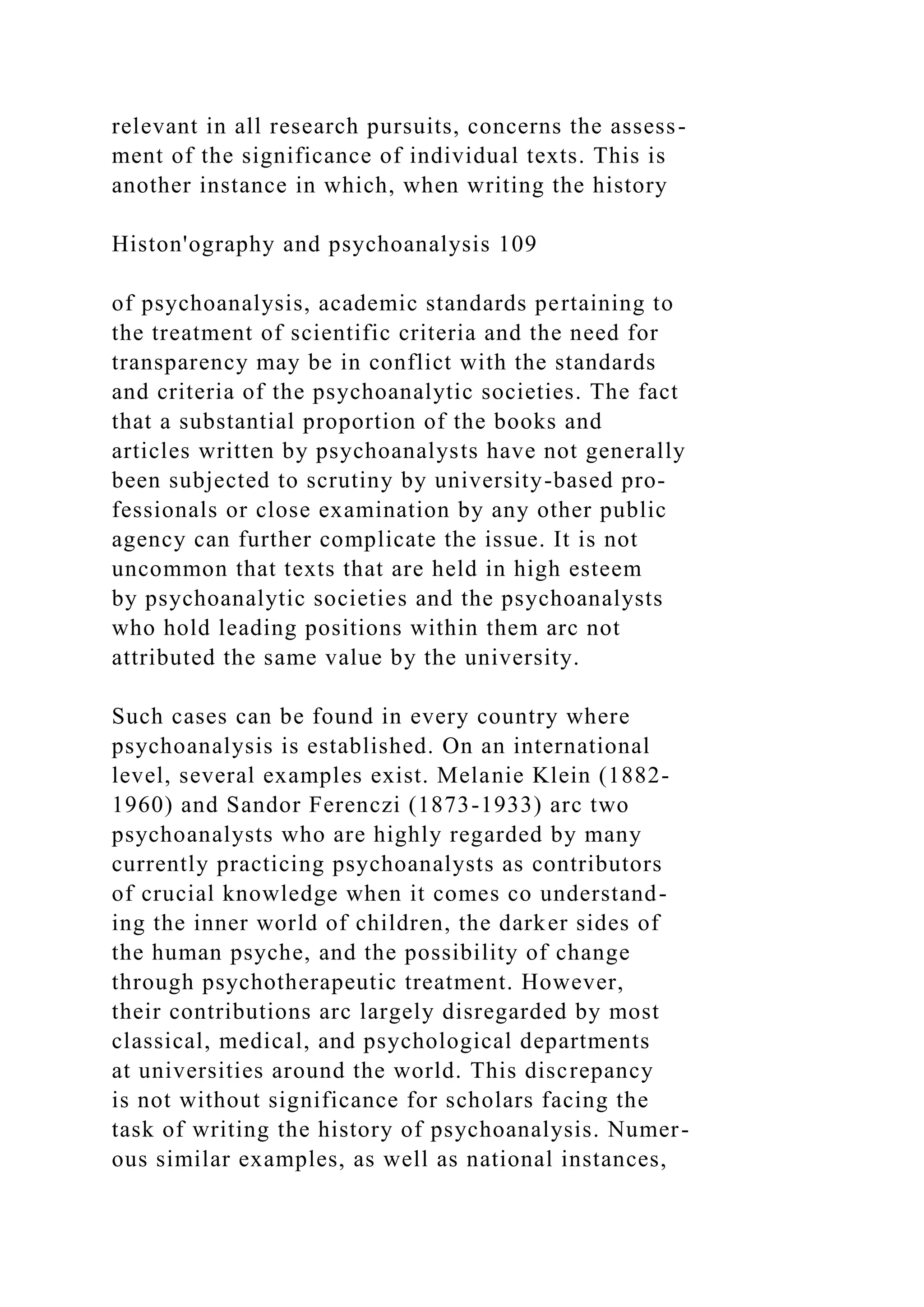
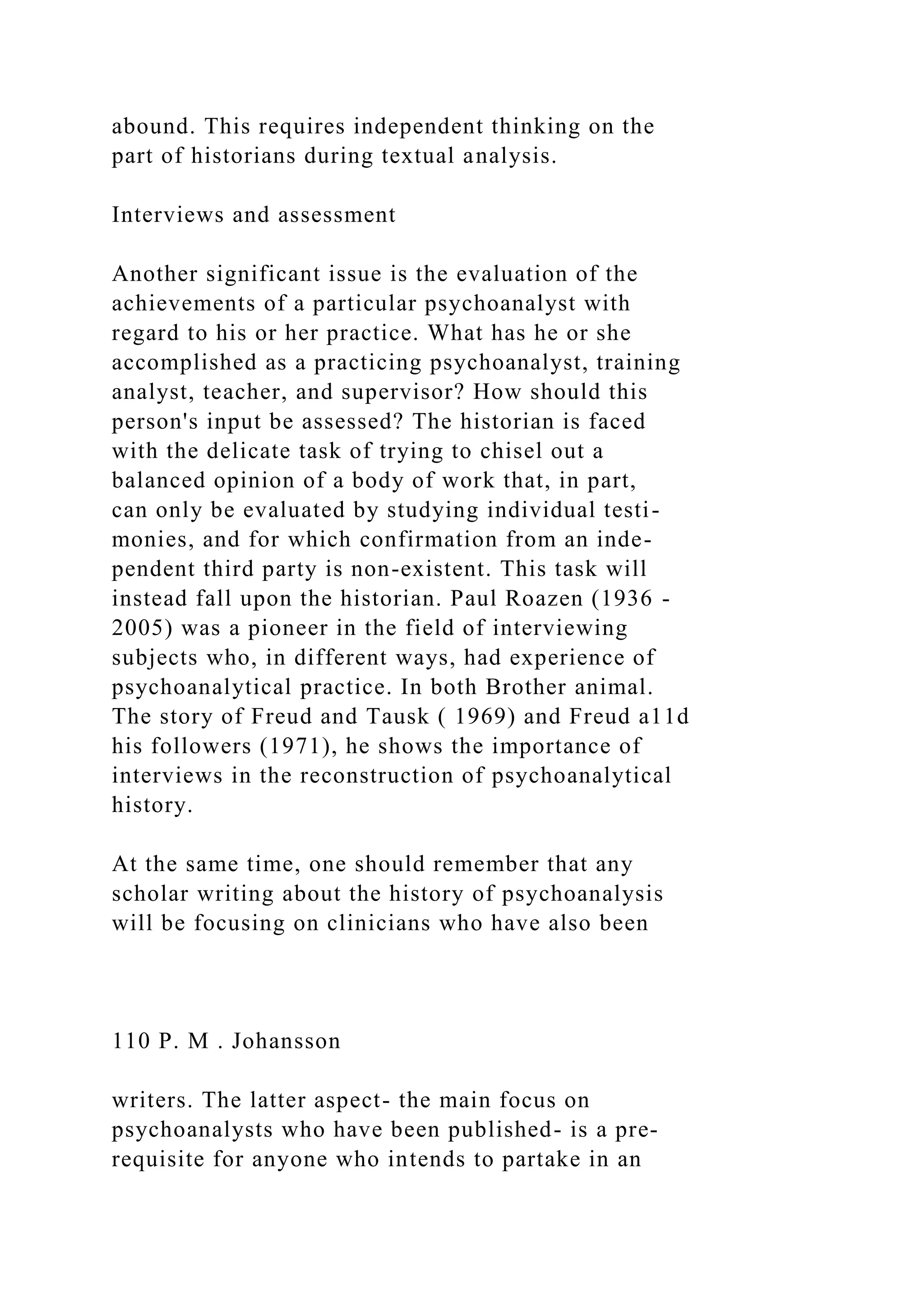
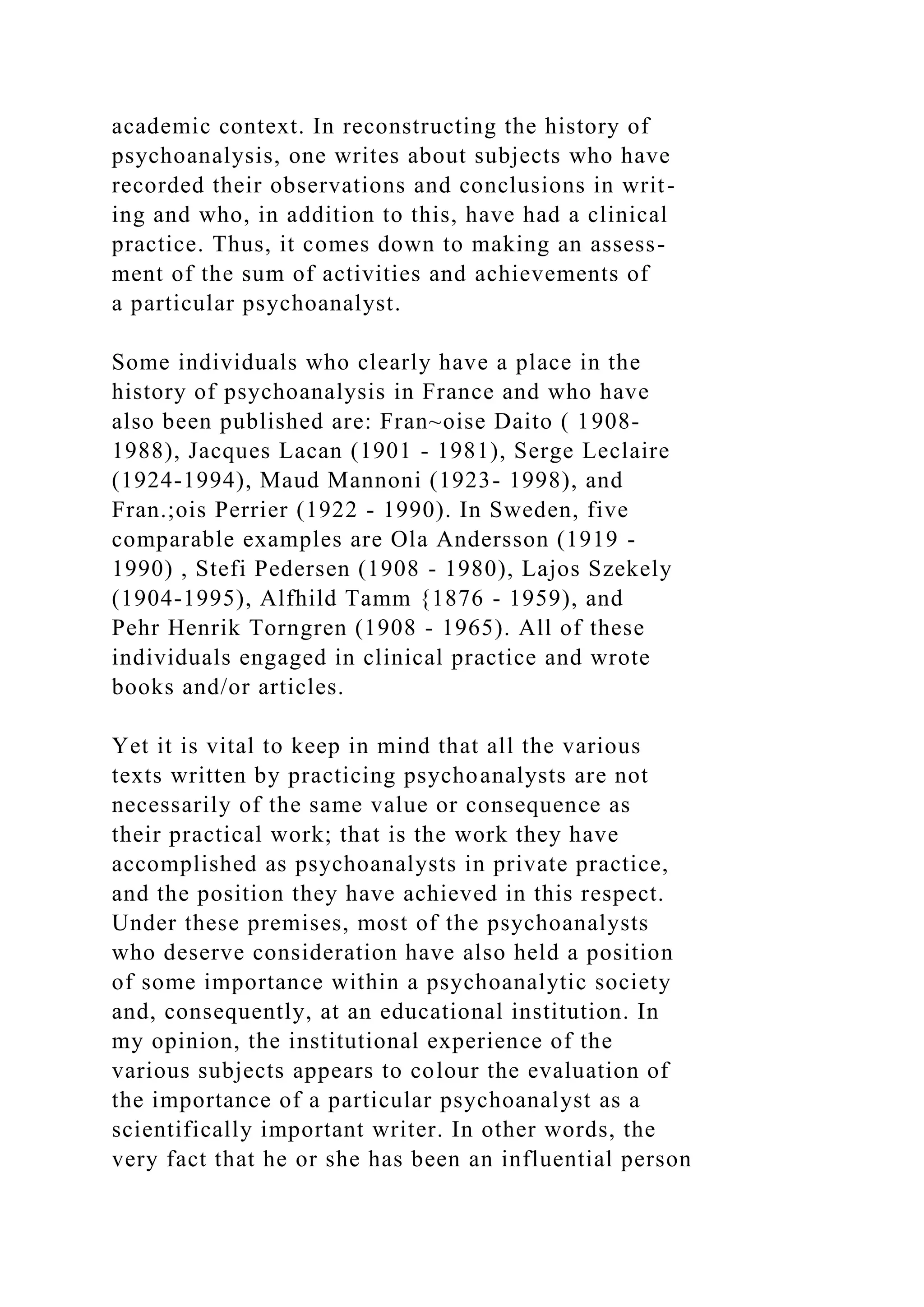
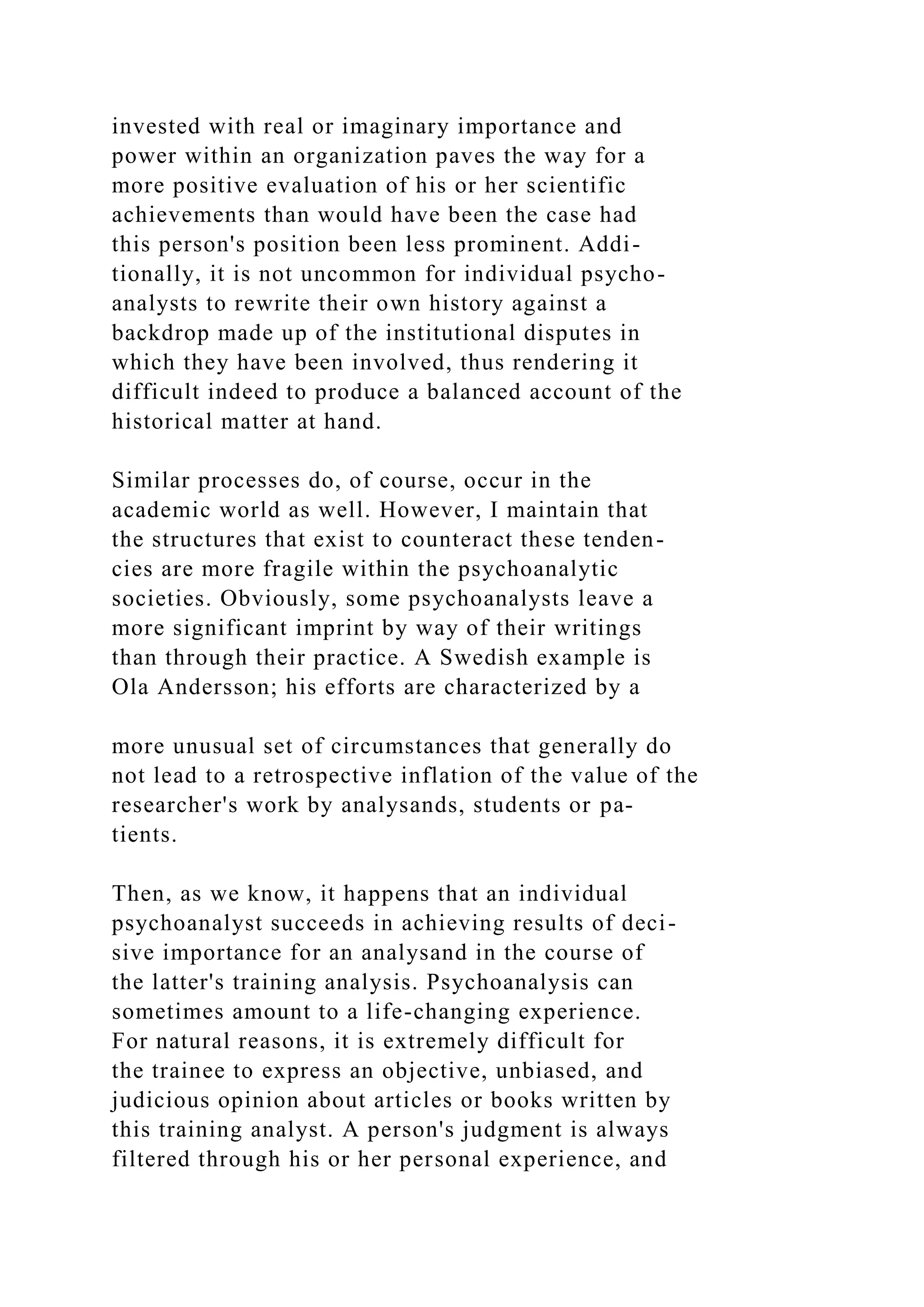
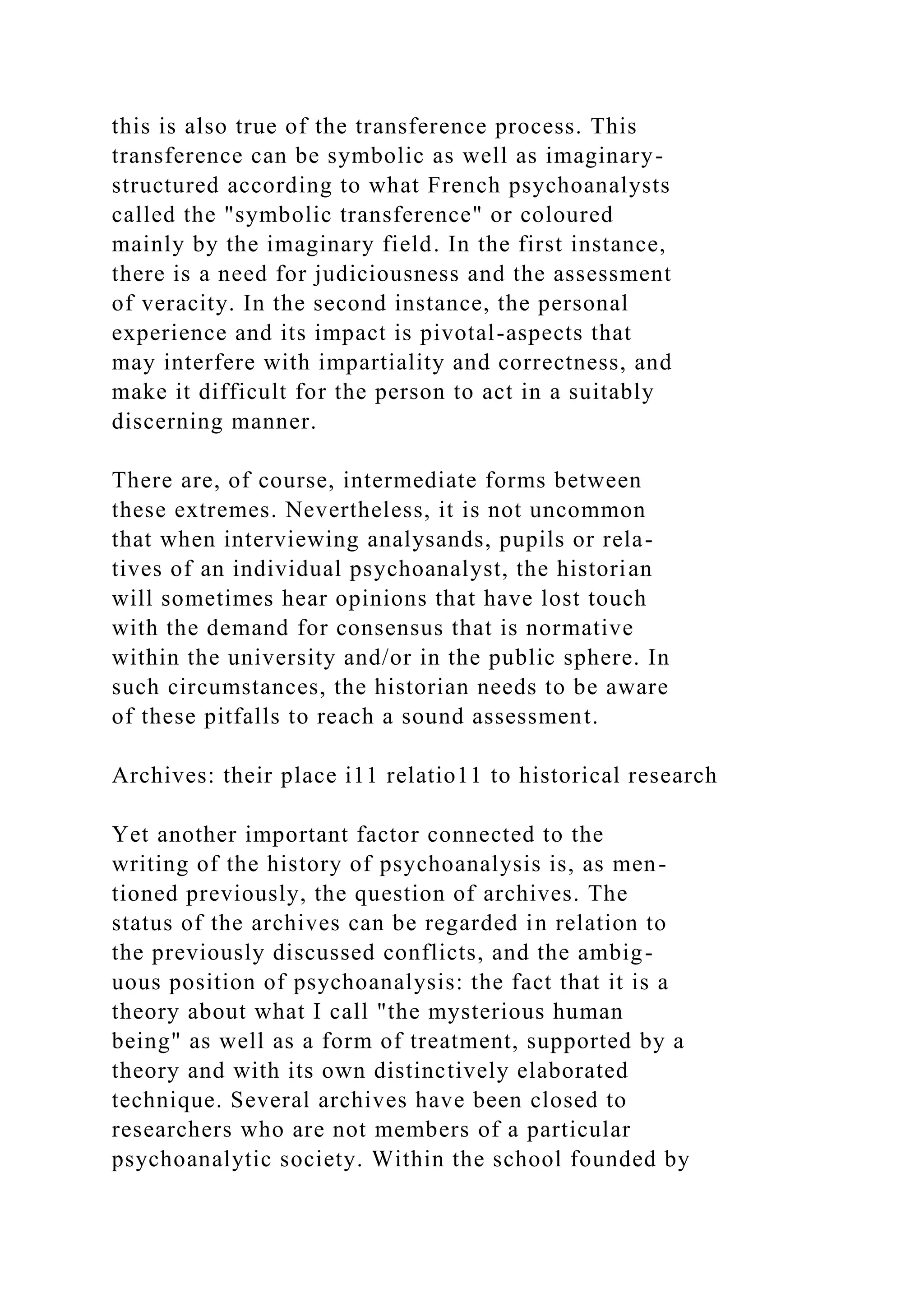
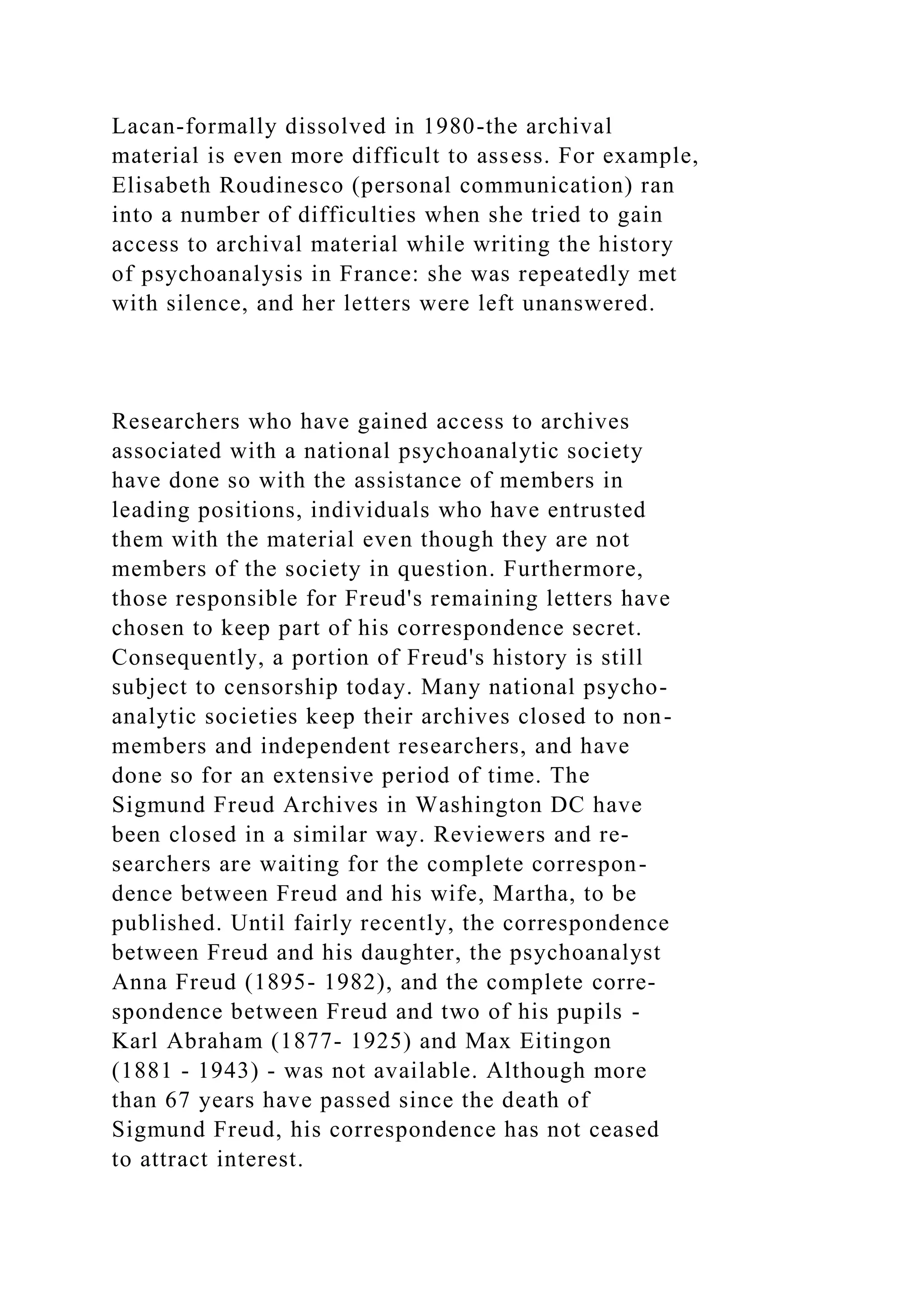
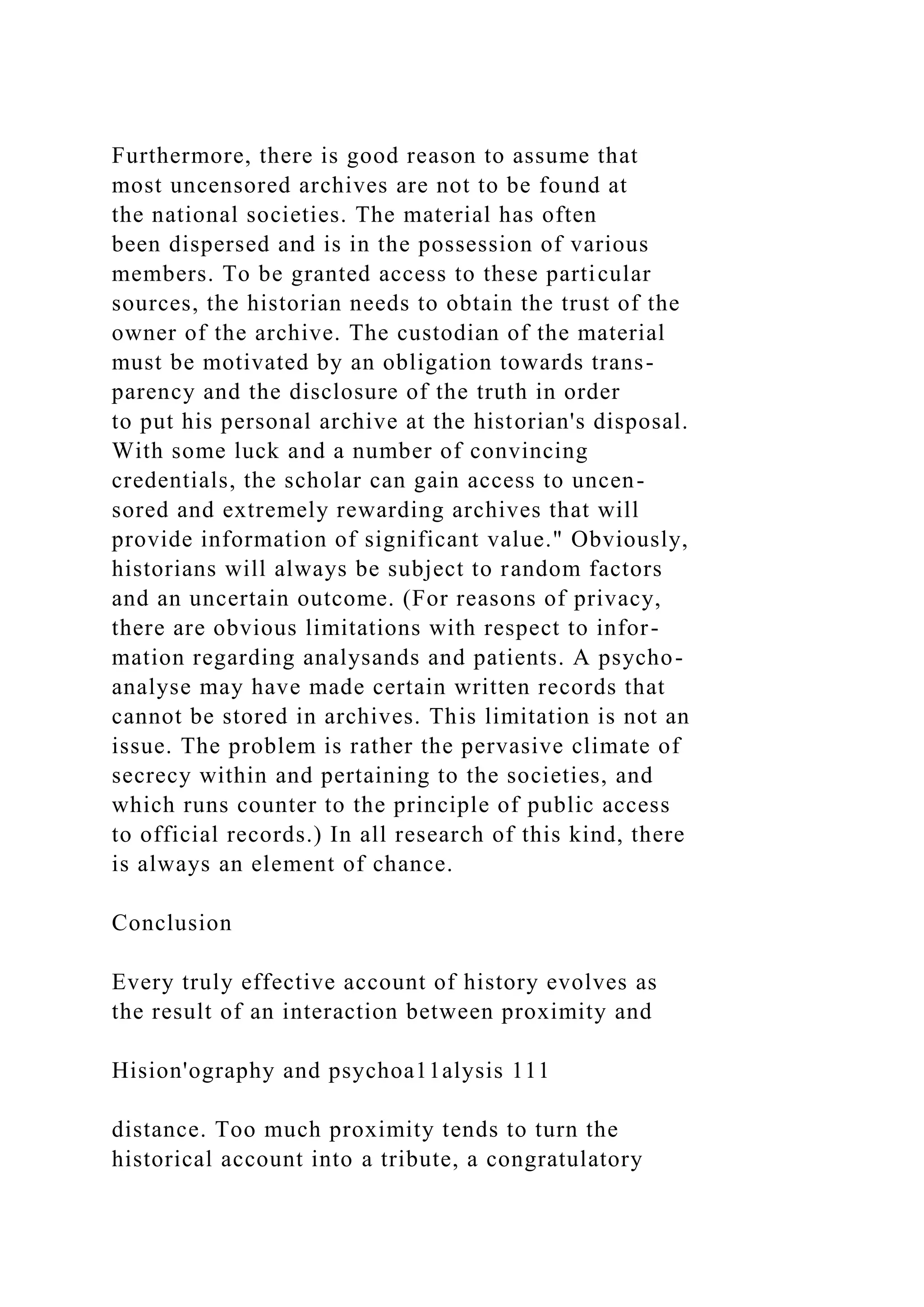
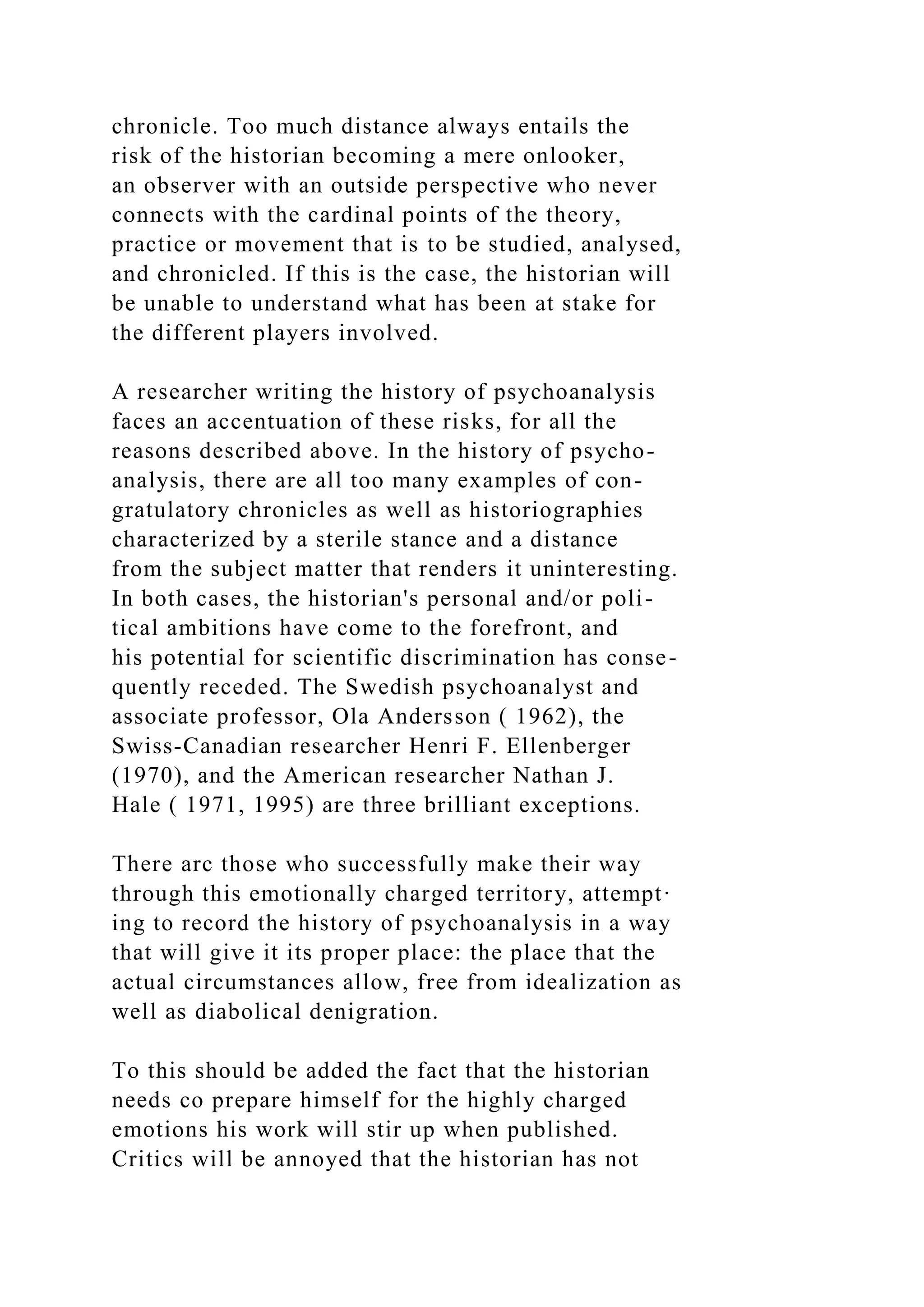
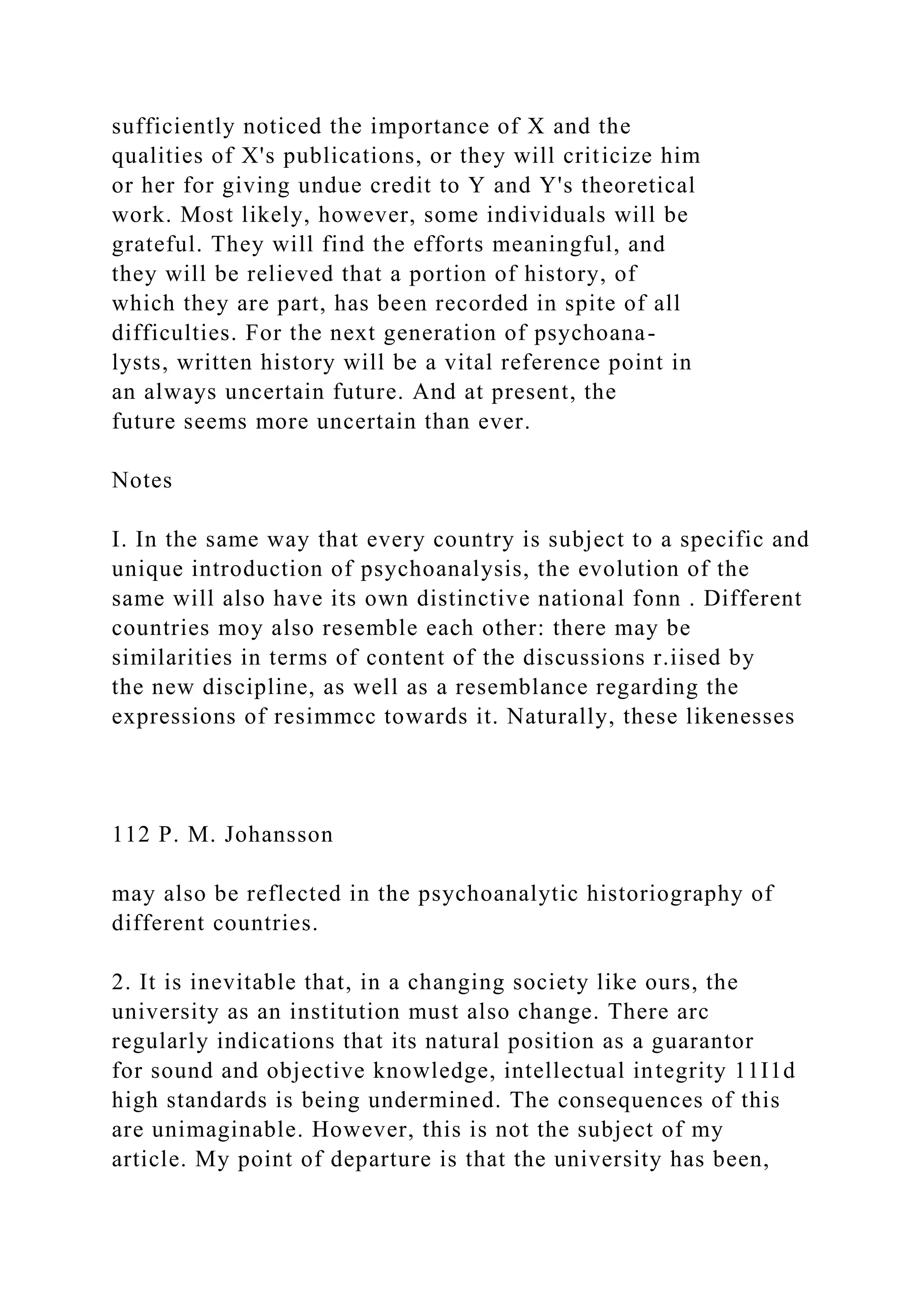
![and still fundamentally is, a place where new knowledge is
produced under intellectually respectable circumstances.
3. This article will not discuss the particulars regarding the
various forms of psychotherapy, nor the way in which they
may involve risk-taking. The author of this article is presently
working on a book about the history of psychotherapy in
Gothenburg, and will pursue this subject matter in his forth-
coming book.
4. While J was occupied with writing an account of the history
of
psychoanalysis, l had access to some uncensored archives of
great interest for a historian. I thank Nils and Gunnar Harding
for their generosity in making the archive of their father, Gl>sta
Harding, available to me. Likewise, I would like to mention
Edilh Sz~kely, who is a psychoanalyst. She opened the archive
of her husband, Lajos Szekely, to me. In addition to this, the
psychoanalyst Annastina Rilton gave me access to several
important archival documents. The board of the Swedish
Psychoanalytical Society allowed me to work undisturbed in
the archive of the society. Their obliging attitude was very
helpful and conducive to my research.
References
Andersson, 0. ( 1962). Smdies i11 the prehistory of the
psychoanalysis.
The erio/ogy of psycho11e11rost.S and some re/ared thtmt1 rn
Sigmund Frtud's sciemific writings a11d lttttn 1886- 1896
(doctoral dissertation]. Stockholm: Norstcdts.
Ellenberger, Henri F. (l 970). Tht discot1ery of rht
111,consi:ious. The
history a11d evo/111io11 of dynamic psychiatry. New York:
Basic](https://image.slidesharecdn.com/directionslocatetheannotatedbibliographyandoutlineyou-230111131454-db06e2f3/75/DirectionsLocate-the-annotated-bibliography-and-outline-you-docx-207-2048.jpg)
![Books.
Hale, N. G., Jr. (1971) . Frt11d in America, Vol. 1, Frt11d and
tht
Americans- 1he btgi11nings of psychoanalysis m 11,e United
Stares, 1876- 1917. New York: Oxford University Press.
Hale, N. G.,Jr. (1995). Freud ,n America, Vol. 2, The rise and
crisis
of psychoanalysis in zhc Umitd States; Freud a11d tht
Americam,
1917- 1985. Oxford: Oxford University Press.
Freud, S. (1926/1940 - 1952). Die Frage der Laicnanalyse -
Untc:rredungcn mit eincm Unpartciischen ['lne question of
lay analysis]. Gesammeltt ~rkt, XIV (Complete worlfs, XIV].
Frankfurt am Main: S Fischer Verlag.
Johansson, P. M. (1999). Freuds psykoa11alys, Arvtagare i
Svenge
[Fremfs psychoa11a/ysis. The heirs III Sweden) [doctoral dis-
sertation]. G6teborg: Daidalos.
Johansson, P. M. (2006). Invited commentary on the interview
wilh Jan Stensson. International Forum of Psy, hoanalysis, 15,
13 - 16.
Nonnan, J. (1992). The psychoanalytical scene in Sweden. In P.
Kuncr (Ed.) Psychoanalysis Imer11atio11al- a guide 10 pzycho-
a11a/ysis throughout the wo,ld, Vol I, E11ropt (pp. 268 - 277).
Stungart-Bad Cannstan: Frommann-Hob:boog.
Roazcn, P. (1969). Brother a11ima/: The story of Freud and
Tausk,
New York: Alfred A Knopf.](https://image.slidesharecdn.com/directionslocatetheannotatedbibliographyandoutlineyou-230111131454-db06e2f3/75/DirectionsLocate-the-annotated-bibliography-and-outline-you-docx-208-2048.jpg)
![Roazen, P. (1975). Freud and his followers. New Yorkl Alfred
A
Knopf.
Author
Per Magnus Johansson is a registered psychologist
and registered psychotherapist. He is an associate
professor at the department of History of Ideas
and Theory of Science at Gothenburg University,
as well as Editor-in-Chief of Psykoana/ytisk Tid/Skrift
[Psychoa11alytica/ time/writing] and the author of
four books. He has also wrincn some twenty fore-
words and postscripts to various books and approxi-
mately 100 articles in Swedish, English, and French.
Johansson works as a psychoanalyst in private
practice and teaches at the study programme for
psychologists at the University of Gothenburg as well
as at the department of History of Ideas and Theory
of Science. He also holds courses within the training
programme for future psychotherapists at the Uni-
versity of Gothenburg. In 2006, he received the
distinction of 0/ficier dans l'Ordre des Pa/mes Acade-
miques, awarded by the French Ministry of Educa-
tion. He is responsible, jointly with Claudia Fahlke,
for the publication, in January 2007, at Natur och
Kultur, of the book Pcrsonlighetspsykologi [Personality
psychology], to which he had also contributed a
chapter. At present, he is working on a book about
the history of psychotherapy in Sweden.](https://image.slidesharecdn.com/directionslocatetheannotatedbibliographyandoutlineyou-230111131454-db06e2f3/75/DirectionsLocate-the-annotated-bibliography-and-outline-you-docx-209-2048.jpg)
